Quick filters:
Udotea Stock Photos and Images
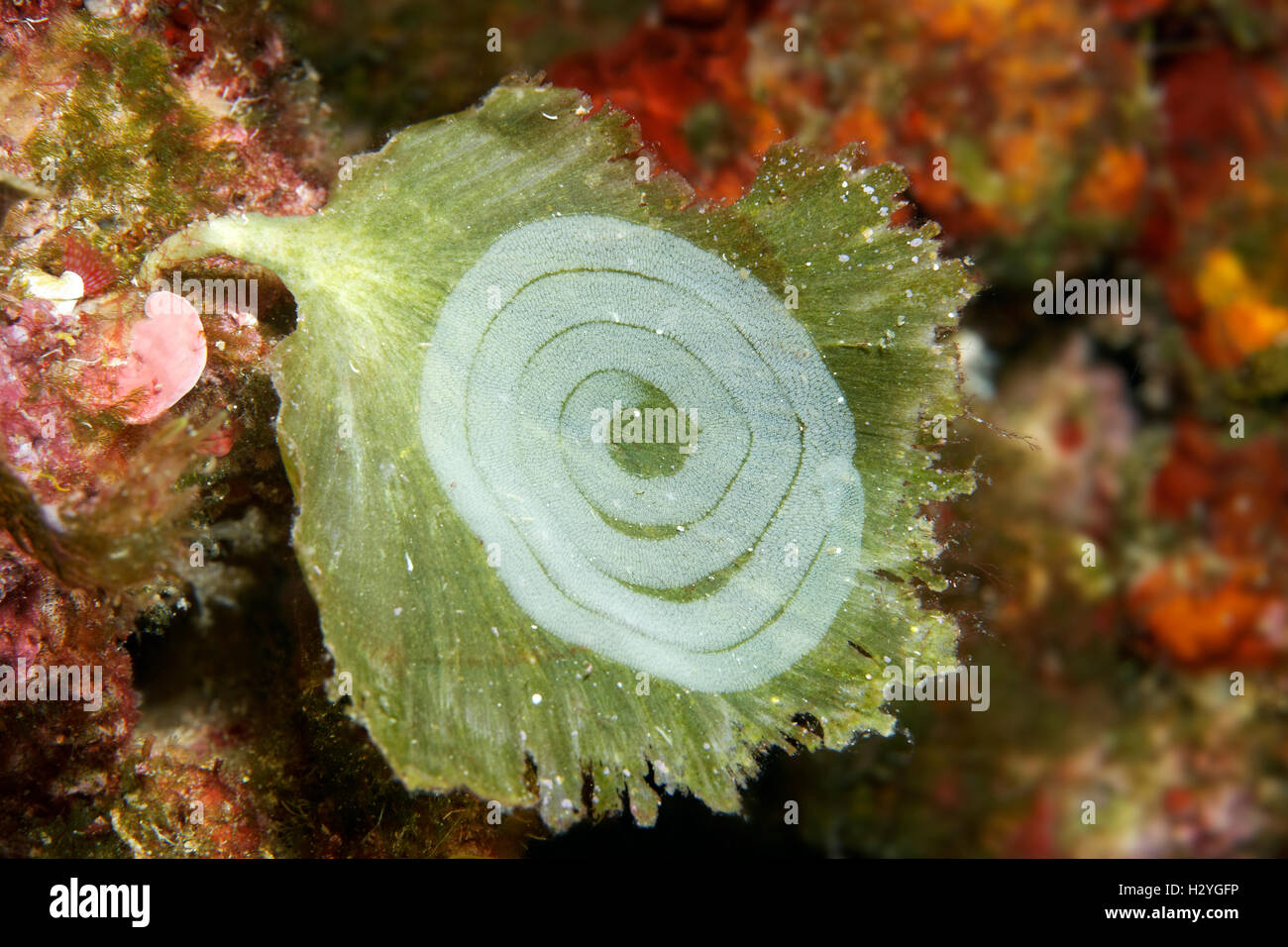 Scrims a slug on Algae (Udotea petiolata), Sithonia, Chalkidiki, also Halkidiki, Aegean, Mediterranean, Greece Stock Photohttps://www.alamy.com/image-license-details/?v=1https://www.alamy.com/stock-photo-scrims-a-slug-on-algae-udotea-petiolata-sithonia-chalkidiki-also-halkidiki-122307578.html
Scrims a slug on Algae (Udotea petiolata), Sithonia, Chalkidiki, also Halkidiki, Aegean, Mediterranean, Greece Stock Photohttps://www.alamy.com/image-license-details/?v=1https://www.alamy.com/stock-photo-scrims-a-slug-on-algae-udotea-petiolata-sithonia-chalkidiki-also-halkidiki-122307578.htmlRFH2YGFP–Scrims a slug on Algae (Udotea petiolata), Sithonia, Chalkidiki, also Halkidiki, Aegean, Mediterranean, Greece
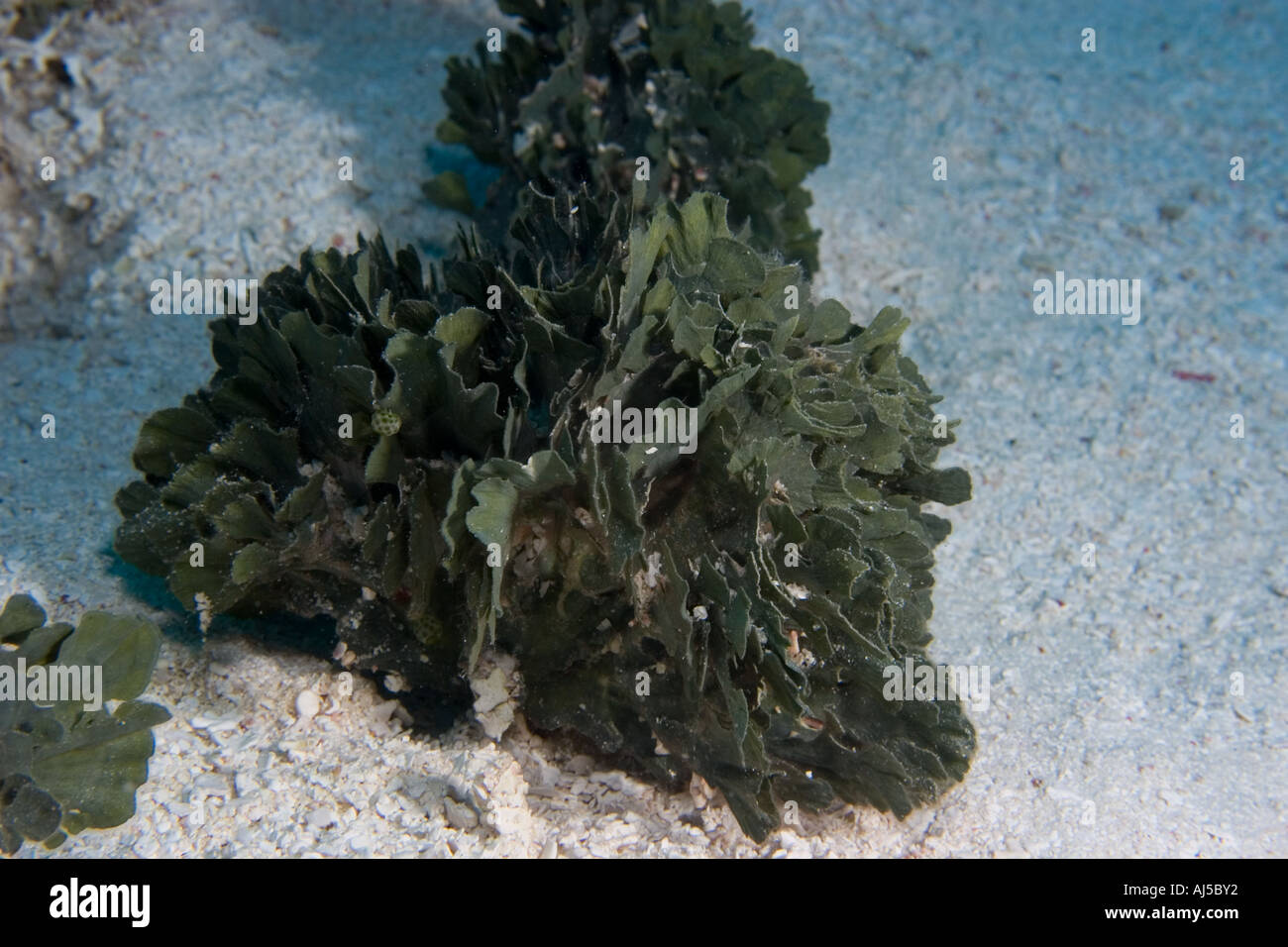 Calcareous algae Udotea sp Ailuk atoll Marshall Islands Pacific Stock Photohttps://www.alamy.com/image-license-details/?v=1https://www.alamy.com/calcareous-algae-udotea-sp-ailuk-atoll-marshall-islands-pacific-image8358385.html
Calcareous algae Udotea sp Ailuk atoll Marshall Islands Pacific Stock Photohttps://www.alamy.com/image-license-details/?v=1https://www.alamy.com/calcareous-algae-udotea-sp-ailuk-atoll-marshall-islands-pacific-image8358385.htmlRMAJ5BY2–Calcareous algae Udotea sp Ailuk atoll Marshall Islands Pacific
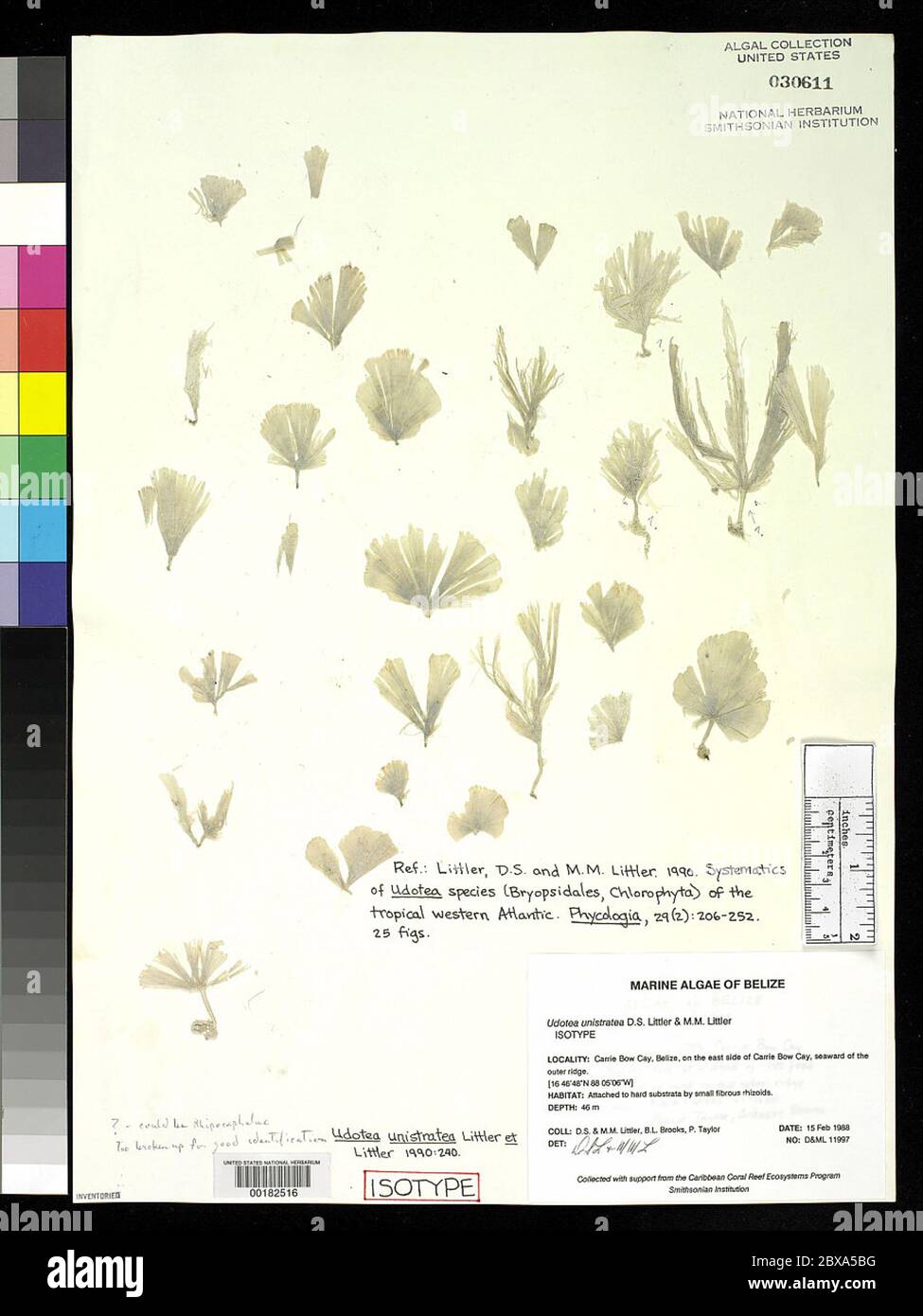 00182516.tif Udotea unistratea DS Littler Littler. Stock Photohttps://www.alamy.com/image-license-details/?v=1https://www.alamy.com/00182516tif-udotea-unistratea-ds-littler-littler-image360412180.html
00182516.tif Udotea unistratea DS Littler Littler. Stock Photohttps://www.alamy.com/image-license-details/?v=1https://www.alamy.com/00182516tif-udotea-unistratea-ds-littler-littler-image360412180.htmlRM2BXA5BG–00182516.tif Udotea unistratea DS Littler Littler.
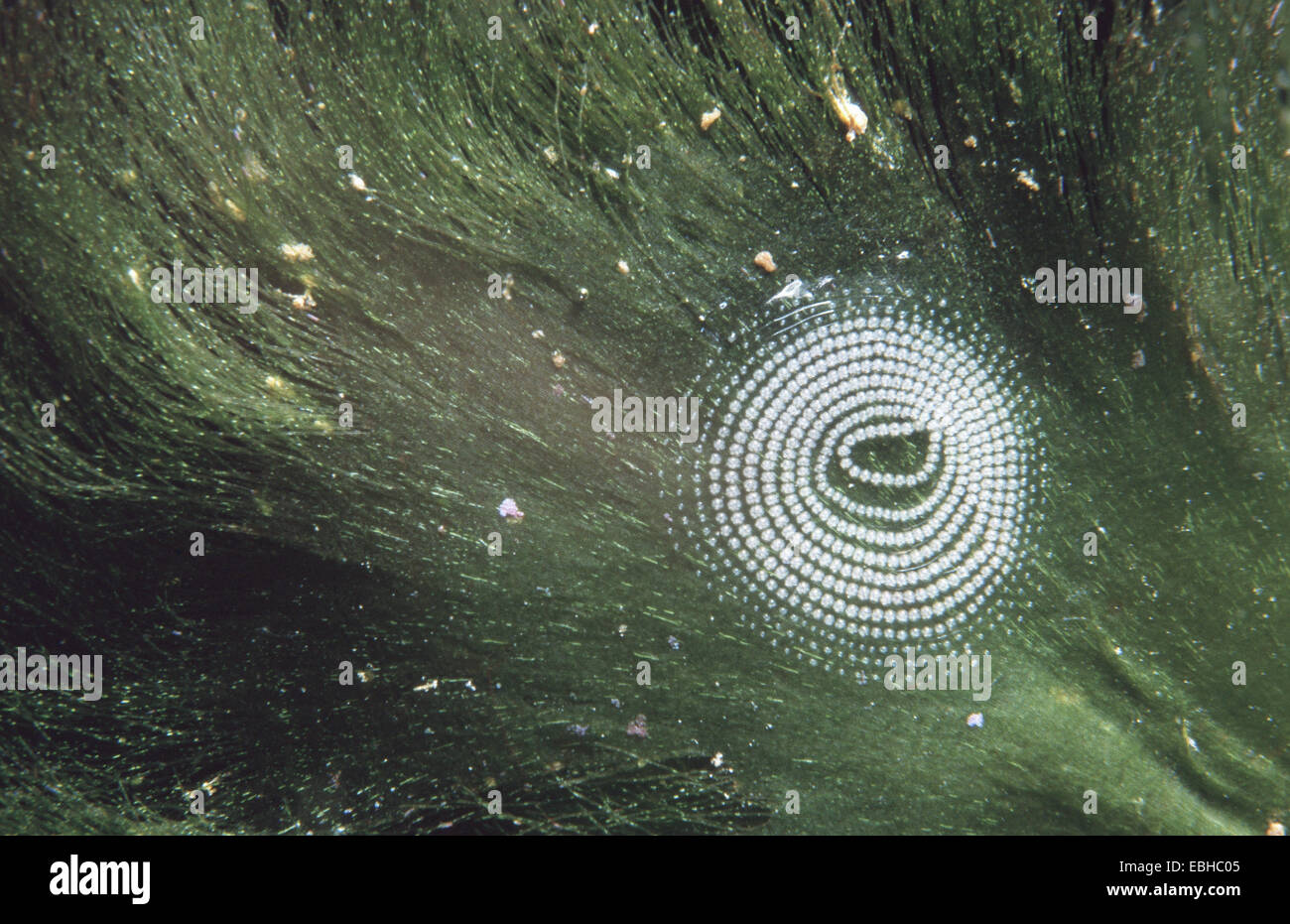 snail eggs on alga (Udotea petiolata). Stock Photohttps://www.alamy.com/image-license-details/?v=1https://www.alamy.com/stock-photo-snail-eggs-on-alga-udotea-petiolata-75985285.html
snail eggs on alga (Udotea petiolata). Stock Photohttps://www.alamy.com/image-license-details/?v=1https://www.alamy.com/stock-photo-snail-eggs-on-alga-udotea-petiolata-75985285.htmlRMEBHC05–snail eggs on alga (Udotea petiolata).
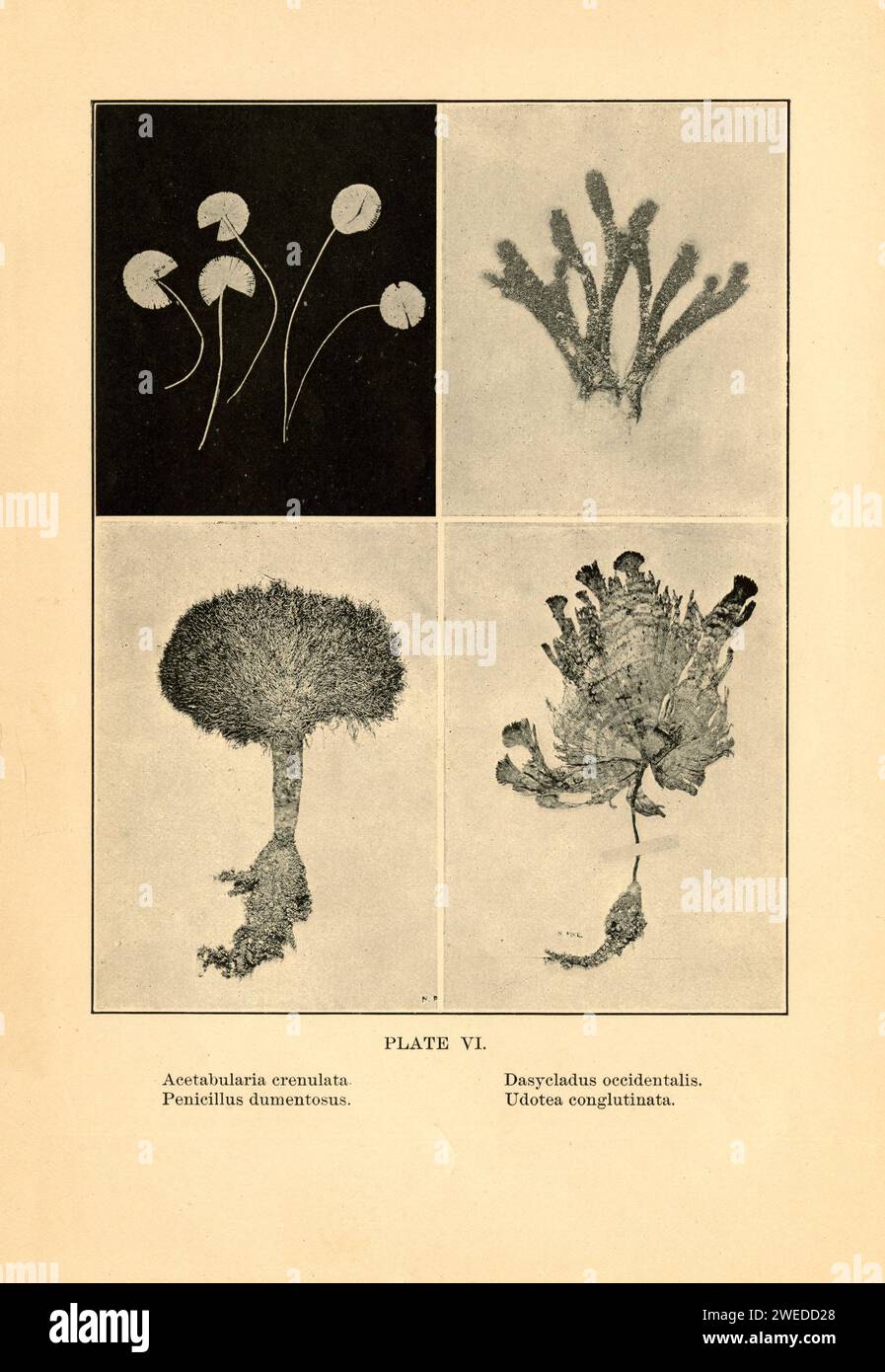 Acetabularia crenulata, Penicillus dumentosus, Dasycladus occidentalis (now Batophora occidentalis), and Udotea conglutinata. From Sea Beach at Ebb Tide, Augusta Foote Arnold, 1901. Two of the images are signed 'N. Pike' Stock Photohttps://www.alamy.com/image-license-details/?v=1https://www.alamy.com/acetabularia-crenulata-penicillus-dumentosus-dasycladus-occidentalis-now-batophora-occidentalis-and-udotea-conglutinata-from-sea-beach-at-ebb-tide-augusta-foote-arnold-1901-two-of-the-images-are-signed-n-pike-image594053328.html
Acetabularia crenulata, Penicillus dumentosus, Dasycladus occidentalis (now Batophora occidentalis), and Udotea conglutinata. From Sea Beach at Ebb Tide, Augusta Foote Arnold, 1901. Two of the images are signed 'N. Pike' Stock Photohttps://www.alamy.com/image-license-details/?v=1https://www.alamy.com/acetabularia-crenulata-penicillus-dumentosus-dasycladus-occidentalis-now-batophora-occidentalis-and-udotea-conglutinata-from-sea-beach-at-ebb-tide-augusta-foote-arnold-1901-two-of-the-images-are-signed-n-pike-image594053328.htmlRM2WEDD28–Acetabularia crenulata, Penicillus dumentosus, Dasycladus occidentalis (now Batophora occidentalis), and Udotea conglutinata. From Sea Beach at Ebb Tide, Augusta Foote Arnold, 1901. Two of the images are signed 'N. Pike'
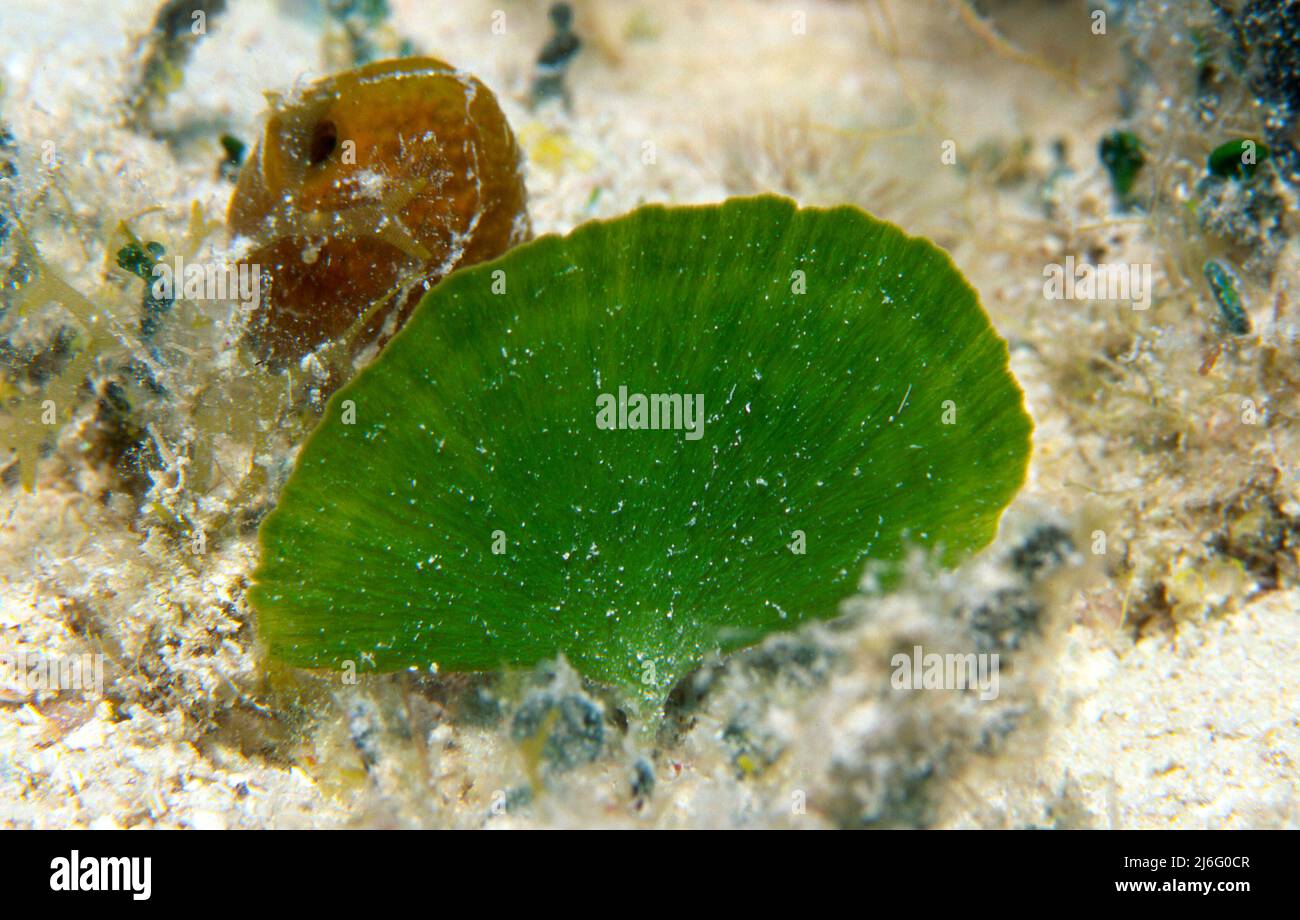 Mermaid Fan Algae, Udotea sp Stock Photohttps://www.alamy.com/image-license-details/?v=1https://www.alamy.com/mermaid-fan-algae-udotea-sp-image468719463.html
Mermaid Fan Algae, Udotea sp Stock Photohttps://www.alamy.com/image-license-details/?v=1https://www.alamy.com/mermaid-fan-algae-udotea-sp-image468719463.htmlRM2J6G0CR–Mermaid Fan Algae, Udotea sp
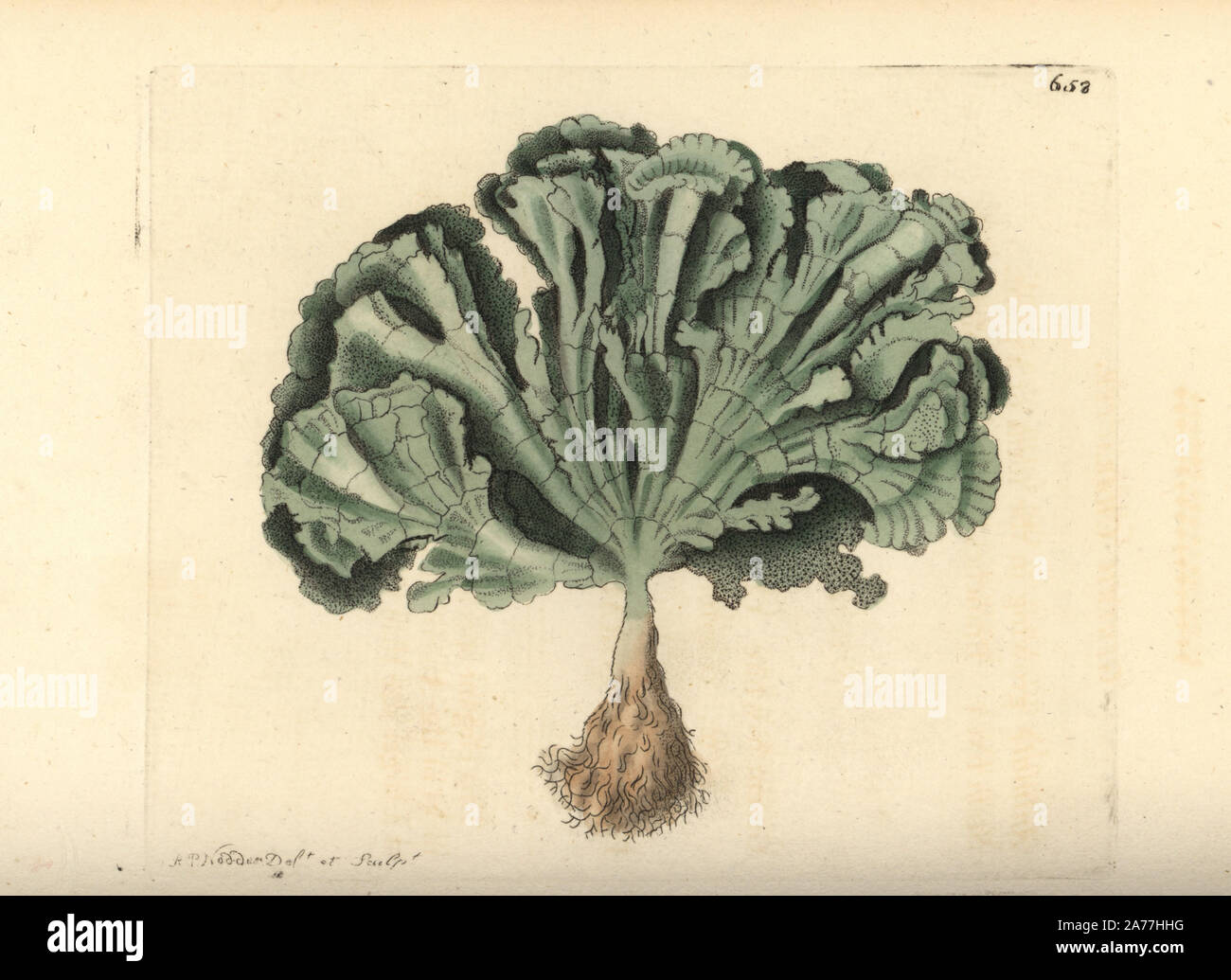 Udotea flabellum (Fan coralline, Corallina flabellum). Illustration drawn and engraved by Richard Polydore Nodder. Handcoloured copperplate engraving from George Shaw and Frederick Nodder's The Naturalist's Miscellany, London, 1804. Stock Photohttps://www.alamy.com/image-license-details/?v=1https://www.alamy.com/udotea-flabellum-fan-coralline-corallina-flabellum-illustration-drawn-and-engraved-by-richard-polydore-nodder-handcoloured-copperplate-engraving-from-george-shaw-and-frederick-nodders-the-naturalists-miscellany-london-1804-image331467068.html
Udotea flabellum (Fan coralline, Corallina flabellum). Illustration drawn and engraved by Richard Polydore Nodder. Handcoloured copperplate engraving from George Shaw and Frederick Nodder's The Naturalist's Miscellany, London, 1804. Stock Photohttps://www.alamy.com/image-license-details/?v=1https://www.alamy.com/udotea-flabellum-fan-coralline-corallina-flabellum-illustration-drawn-and-engraved-by-richard-polydore-nodder-handcoloured-copperplate-engraving-from-george-shaw-and-frederick-nodders-the-naturalists-miscellany-london-1804-image331467068.htmlRM2A77HHG–Udotea flabellum (Fan coralline, Corallina flabellum). Illustration drawn and engraved by Richard Polydore Nodder. Handcoloured copperplate engraving from George Shaw and Frederick Nodder's The Naturalist's Miscellany, London, 1804.
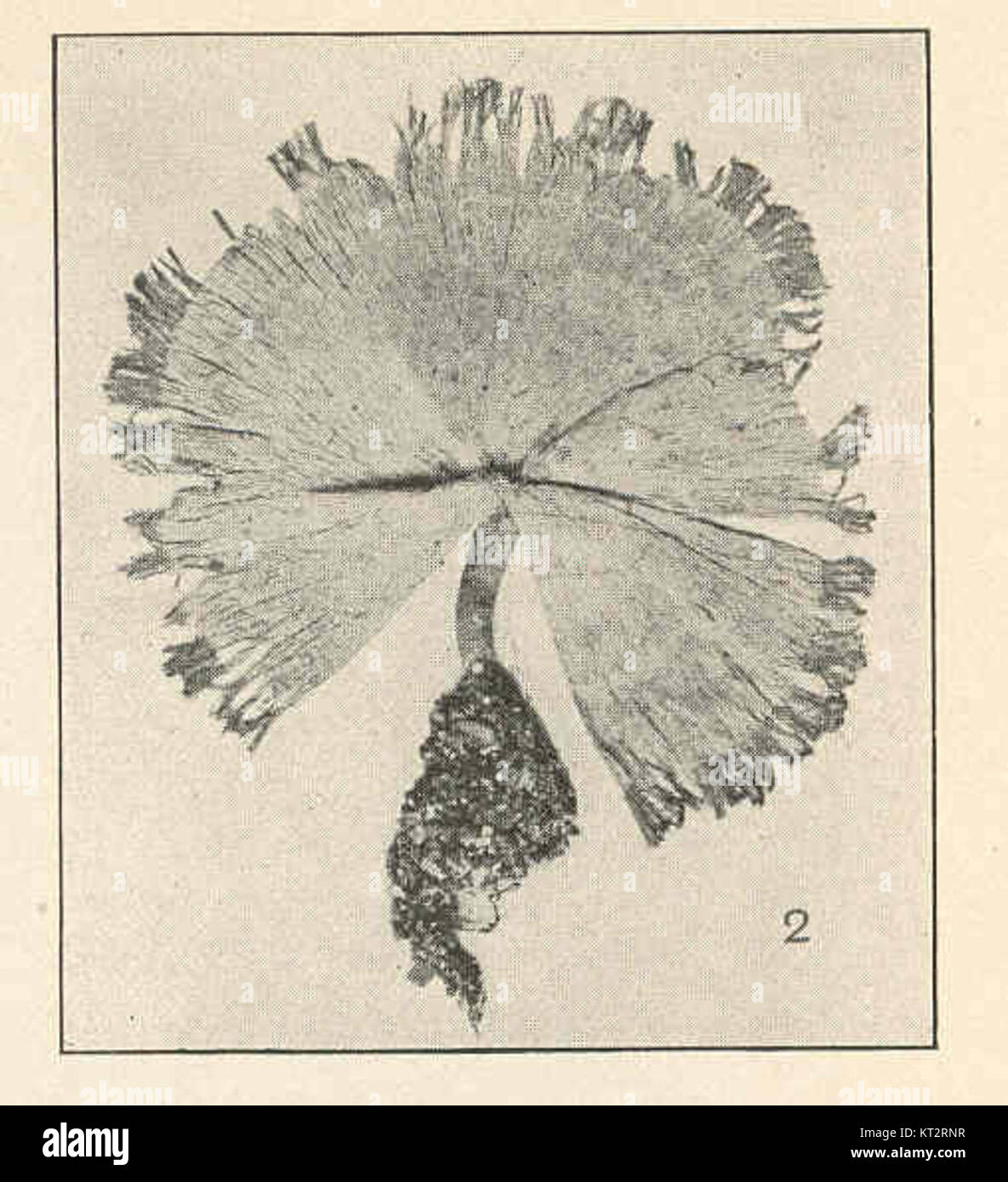 38400 Udotea cyathiformis Stock Photohttps://www.alamy.com/image-license-details/?v=1https://www.alamy.com/stock-image-38400-udotea-cyathiformis-169707603.html
38400 Udotea cyathiformis Stock Photohttps://www.alamy.com/image-license-details/?v=1https://www.alamy.com/stock-image-38400-udotea-cyathiformis-169707603.htmlRMKT2RNR–38400 Udotea cyathiformis
 Archive image from page 147 of Das Meer; geographische, naturgeschichtliche und. Das Meer; geographische, naturgeschichtliche und volkswirtschaftliche Darstellung des Meeres und seiner Bedeutung in der Gegenwart dasmeergeographi00wies Year: 1906 144 Dr. Wiese, Das Meer. mehr auffallend als schön g-estalteten Caulerpa-, Udotea- und Codiumarten. Am Mittelmeer sieht man die Flutlinie häufig begrenzt durch die g'länzenden grünen Lappen der Alg'e Ulva Lactuca, die vom Meer ausg'eworfen und, wie der Name Lactuca andeutet, als Salat g'eg'essen wird. Mehr als die grünen Meeresalg-en treten durch Zah Stock Photohttps://www.alamy.com/image-license-details/?v=1https://www.alamy.com/archive-image-from-page-147-of-das-meer-geographische-naturgeschichtliche-und-das-meer-geographische-naturgeschichtliche-und-volkswirtschaftliche-darstellung-des-meeres-und-seiner-bedeutung-in-der-gegenwart-dasmeergeographi00wies-year-1906-144-dr-wiese-das-meer-mehr-auffallend-als-schn-g-estalteten-caulerpa-udotea-und-codiumarten-am-mittelmeer-sieht-man-die-flutlinie-hufig-begrenzt-durch-die-glnzenden-grnen-lappen-der-alge-ulva-lactuca-die-vom-meer-ausgeworfen-und-wie-der-name-lactuca-andeutet-als-salat-gegessen-wird-mehr-als-die-grnen-meeresalg-en-treten-durch-zah-image259458621.html
Archive image from page 147 of Das Meer; geographische, naturgeschichtliche und. Das Meer; geographische, naturgeschichtliche und volkswirtschaftliche Darstellung des Meeres und seiner Bedeutung in der Gegenwart dasmeergeographi00wies Year: 1906 144 Dr. Wiese, Das Meer. mehr auffallend als schön g-estalteten Caulerpa-, Udotea- und Codiumarten. Am Mittelmeer sieht man die Flutlinie häufig begrenzt durch die g'länzenden grünen Lappen der Alg'e Ulva Lactuca, die vom Meer ausg'eworfen und, wie der Name Lactuca andeutet, als Salat g'eg'essen wird. Mehr als die grünen Meeresalg-en treten durch Zah Stock Photohttps://www.alamy.com/image-license-details/?v=1https://www.alamy.com/archive-image-from-page-147-of-das-meer-geographische-naturgeschichtliche-und-das-meer-geographische-naturgeschichtliche-und-volkswirtschaftliche-darstellung-des-meeres-und-seiner-bedeutung-in-der-gegenwart-dasmeergeographi00wies-year-1906-144-dr-wiese-das-meer-mehr-auffallend-als-schn-g-estalteten-caulerpa-udotea-und-codiumarten-am-mittelmeer-sieht-man-die-flutlinie-hufig-begrenzt-durch-die-glnzenden-grnen-lappen-der-alge-ulva-lactuca-die-vom-meer-ausgeworfen-und-wie-der-name-lactuca-andeutet-als-salat-gegessen-wird-mehr-als-die-grnen-meeresalg-en-treten-durch-zah-image259458621.htmlRMW23A39–Archive image from page 147 of Das Meer; geographische, naturgeschichtliche und. Das Meer; geographische, naturgeschichtliche und volkswirtschaftliche Darstellung des Meeres und seiner Bedeutung in der Gegenwart dasmeergeographi00wies Year: 1906 144 Dr. Wiese, Das Meer. mehr auffallend als schön g-estalteten Caulerpa-, Udotea- und Codiumarten. Am Mittelmeer sieht man die Flutlinie häufig begrenzt durch die g'länzenden grünen Lappen der Alg'e Ulva Lactuca, die vom Meer ausg'eworfen und, wie der Name Lactuca andeutet, als Salat g'eg'essen wird. Mehr als die grünen Meeresalg-en treten durch Zah
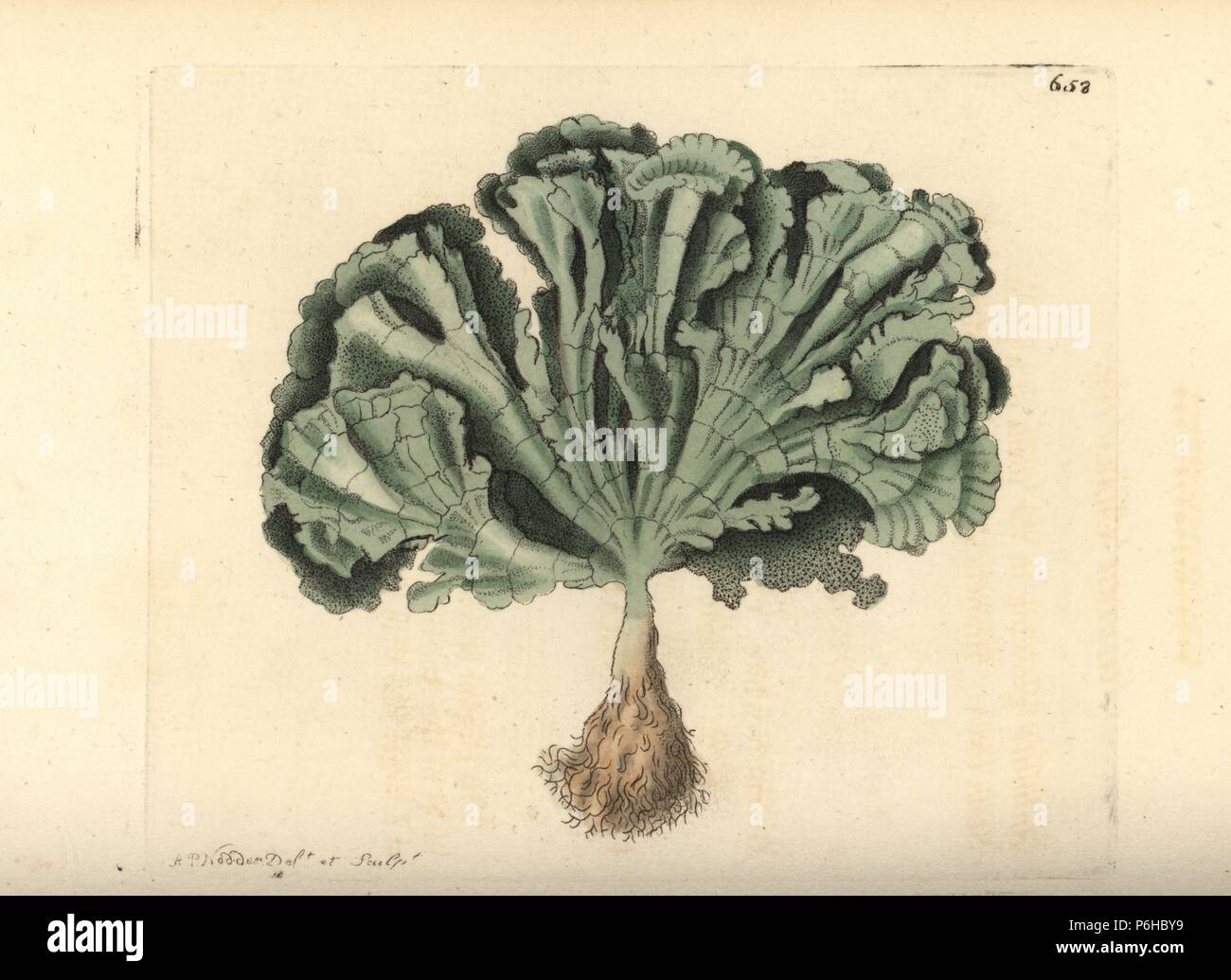 Udotea flabellum (Fan coralline, Corallina flabellum). Illustration drawn and engraved by Richard Polydore Nodder. Handcoloured copperplate engraving from George Shaw and Frederick Nodder's The Naturalist's Miscellany, London, 1804. Stock Photohttps://www.alamy.com/image-license-details/?v=1https://www.alamy.com/udotea-flabellum-fan-coralline-corallina-flabellum-illustration-drawn-and-engraved-by-richard-polydore-nodder-handcoloured-copperplate-engraving-from-george-shaw-and-frederick-nodders-the-naturalists-miscellany-london-1804-image210594925.html
Udotea flabellum (Fan coralline, Corallina flabellum). Illustration drawn and engraved by Richard Polydore Nodder. Handcoloured copperplate engraving from George Shaw and Frederick Nodder's The Naturalist's Miscellany, London, 1804. Stock Photohttps://www.alamy.com/image-license-details/?v=1https://www.alamy.com/udotea-flabellum-fan-coralline-corallina-flabellum-illustration-drawn-and-engraved-by-richard-polydore-nodder-handcoloured-copperplate-engraving-from-george-shaw-and-frederick-nodders-the-naturalists-miscellany-london-1804-image210594925.htmlRMP6HBY9–Udotea flabellum (Fan coralline, Corallina flabellum). Illustration drawn and engraved by Richard Polydore Nodder. Handcoloured copperplate engraving from George Shaw and Frederick Nodder's The Naturalist's Miscellany, London, 1804.
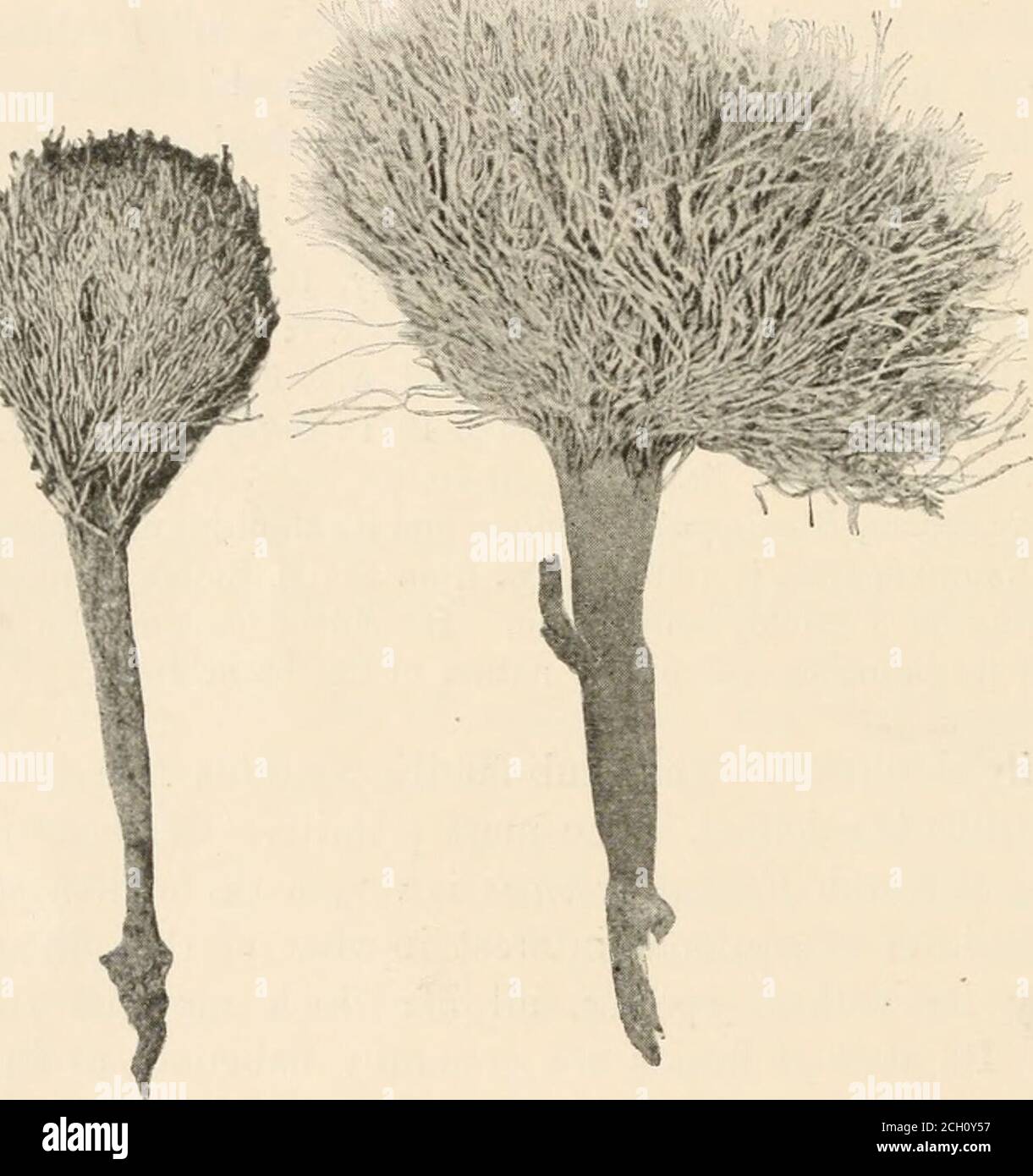 . Algæ. Vol. I. Myxophyceæ, Peridinieæ, Bacillarieæ, Chlorophyceæ, together with a brief summary of the occurrence and distribution of freshwat4er Algæ . se calcareoussheath, and are either quite, free (as in the capitulum of Penicillus), orlaterally cemented side by side into monostromatic flabella (as in Udotea 236 Slplioncdes javensis, U. glaucescens, Tydemania, Rhipocephalus), or they are more or lesscompletely conglutinated to form a pluriseriate flabelliform or cyathiformfrond (as in U. conglutinata, U. cyathiformis, etc.); (2) the simple orbranched lateral appendages of the filaments, w Stock Photohttps://www.alamy.com/image-license-details/?v=1https://www.alamy.com/alg-vol-i-myxophyce-peridinie-bacillarie-chlorophyce-together-with-a-brief-summary-of-the-occurrence-and-distribution-of-freshwat4er-alg-se-calcareoussheath-and-are-either-quite-free-as-in-the-capitulum-of-penicillus-orlaterally-cemented-side-by-side-into-monostromatic-flabella-as-in-udotea-236-slplioncdes-javensis-u-glaucescens-tydemania-rhipocephalus-or-they-are-more-or-lesscompletely-conglutinated-to-form-a-pluriseriate-flabelliform-or-cyathiformfrond-as-in-u-conglutinata-u-cyathiformis-etc-2-the-simple-orbranched-lateral-appendages-of-the-filaments-w-image371888195.html
. Algæ. Vol. I. Myxophyceæ, Peridinieæ, Bacillarieæ, Chlorophyceæ, together with a brief summary of the occurrence and distribution of freshwat4er Algæ . se calcareoussheath, and are either quite, free (as in the capitulum of Penicillus), orlaterally cemented side by side into monostromatic flabella (as in Udotea 236 Slplioncdes javensis, U. glaucescens, Tydemania, Rhipocephalus), or they are more or lesscompletely conglutinated to form a pluriseriate flabelliform or cyathiformfrond (as in U. conglutinata, U. cyathiformis, etc.); (2) the simple orbranched lateral appendages of the filaments, w Stock Photohttps://www.alamy.com/image-license-details/?v=1https://www.alamy.com/alg-vol-i-myxophyce-peridinie-bacillarie-chlorophyce-together-with-a-brief-summary-of-the-occurrence-and-distribution-of-freshwat4er-alg-se-calcareoussheath-and-are-either-quite-free-as-in-the-capitulum-of-penicillus-orlaterally-cemented-side-by-side-into-monostromatic-flabella-as-in-udotea-236-slplioncdes-javensis-u-glaucescens-tydemania-rhipocephalus-or-they-are-more-or-lesscompletely-conglutinated-to-form-a-pluriseriate-flabelliform-or-cyathiformfrond-as-in-u-conglutinata-u-cyathiformis-etc-2-the-simple-orbranched-lateral-appendages-of-the-filaments-w-image371888195.htmlRM2CH0Y57–. Algæ. Vol. I. Myxophyceæ, Peridinieæ, Bacillarieæ, Chlorophyceæ, together with a brief summary of the occurrence and distribution of freshwat4er Algæ . se calcareoussheath, and are either quite, free (as in the capitulum of Penicillus), orlaterally cemented side by side into monostromatic flabella (as in Udotea 236 Slplioncdes javensis, U. glaucescens, Tydemania, Rhipocephalus), or they are more or lesscompletely conglutinated to form a pluriseriate flabelliform or cyathiformfrond (as in U. conglutinata, U. cyathiformis, etc.); (2) the simple orbranched lateral appendages of the filaments, w
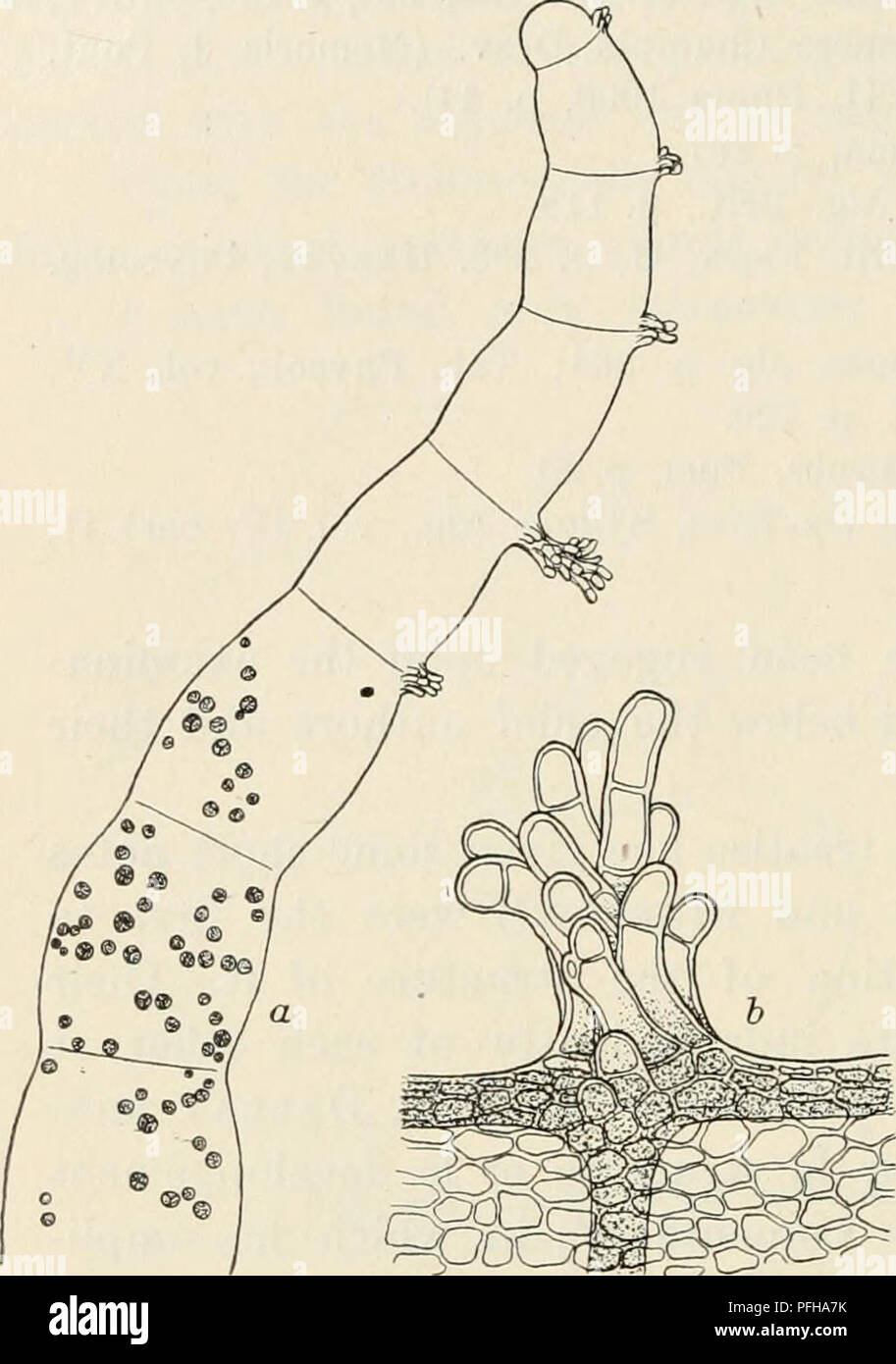 . Dansk botanisk arkiv. Plants; Plants -- Denmark. 408 Dansk Botanisk Arkiv, Bd, 3. Nr. 1. the plant, a description of the development of the cystocarp. And finally, in 1896, Davis ^) pubHshed a paper in which he gives a very detailed description of the development of the cystocarp in Champia par- vula. Referring to these exa- minations with regard to the structure and develop- ment of the plant, I shall only mention here that I have often found the plant creeping on the leaves of Thalassia as well as on larger algæ, for instance, Udotea Flahelliim or Hali- meda. The filaments are more or less Stock Photohttps://www.alamy.com/image-license-details/?v=1https://www.alamy.com/dansk-botanisk-arkiv-plants-plants-denmark-408-dansk-botanisk-arkiv-bd-3-nr-1-the-plant-a-description-of-the-development-of-the-cystocarp-and-finally-in-1896-davis-pubhshed-a-paper-in-which-he-gives-a-very-detailed-description-of-the-development-of-the-cystocarp-in-champia-par-vula-referring-to-these-exa-minations-with-regard-to-the-structure-and-develop-ment-of-the-plant-i-shall-only-mention-here-that-i-have-often-found-the-plant-creeping-on-the-leaves-of-thalassia-as-well-as-on-larger-alg-for-instance-udotea-flahelliim-or-hali-meda-the-filaments-are-more-or-less-image216125495.html
. Dansk botanisk arkiv. Plants; Plants -- Denmark. 408 Dansk Botanisk Arkiv, Bd, 3. Nr. 1. the plant, a description of the development of the cystocarp. And finally, in 1896, Davis ^) pubHshed a paper in which he gives a very detailed description of the development of the cystocarp in Champia par- vula. Referring to these exa- minations with regard to the structure and develop- ment of the plant, I shall only mention here that I have often found the plant creeping on the leaves of Thalassia as well as on larger algæ, for instance, Udotea Flahelliim or Hali- meda. The filaments are more or less Stock Photohttps://www.alamy.com/image-license-details/?v=1https://www.alamy.com/dansk-botanisk-arkiv-plants-plants-denmark-408-dansk-botanisk-arkiv-bd-3-nr-1-the-plant-a-description-of-the-development-of-the-cystocarp-and-finally-in-1896-davis-pubhshed-a-paper-in-which-he-gives-a-very-detailed-description-of-the-development-of-the-cystocarp-in-champia-par-vula-referring-to-these-exa-minations-with-regard-to-the-structure-and-develop-ment-of-the-plant-i-shall-only-mention-here-that-i-have-often-found-the-plant-creeping-on-the-leaves-of-thalassia-as-well-as-on-larger-alg-for-instance-udotea-flahelliim-or-hali-meda-the-filaments-are-more-or-less-image216125495.htmlRMPFHA7K–. Dansk botanisk arkiv. Plants; Plants -- Denmark. 408 Dansk Botanisk Arkiv, Bd, 3. Nr. 1. the plant, a description of the development of the cystocarp. And finally, in 1896, Davis ^) pubHshed a paper in which he gives a very detailed description of the development of the cystocarp in Champia par- vula. Referring to these exa- minations with regard to the structure and develop- ment of the plant, I shall only mention here that I have often found the plant creeping on the leaves of Thalassia as well as on larger algæ, for instance, Udotea Flahelliim or Hali- meda. The filaments are more or less
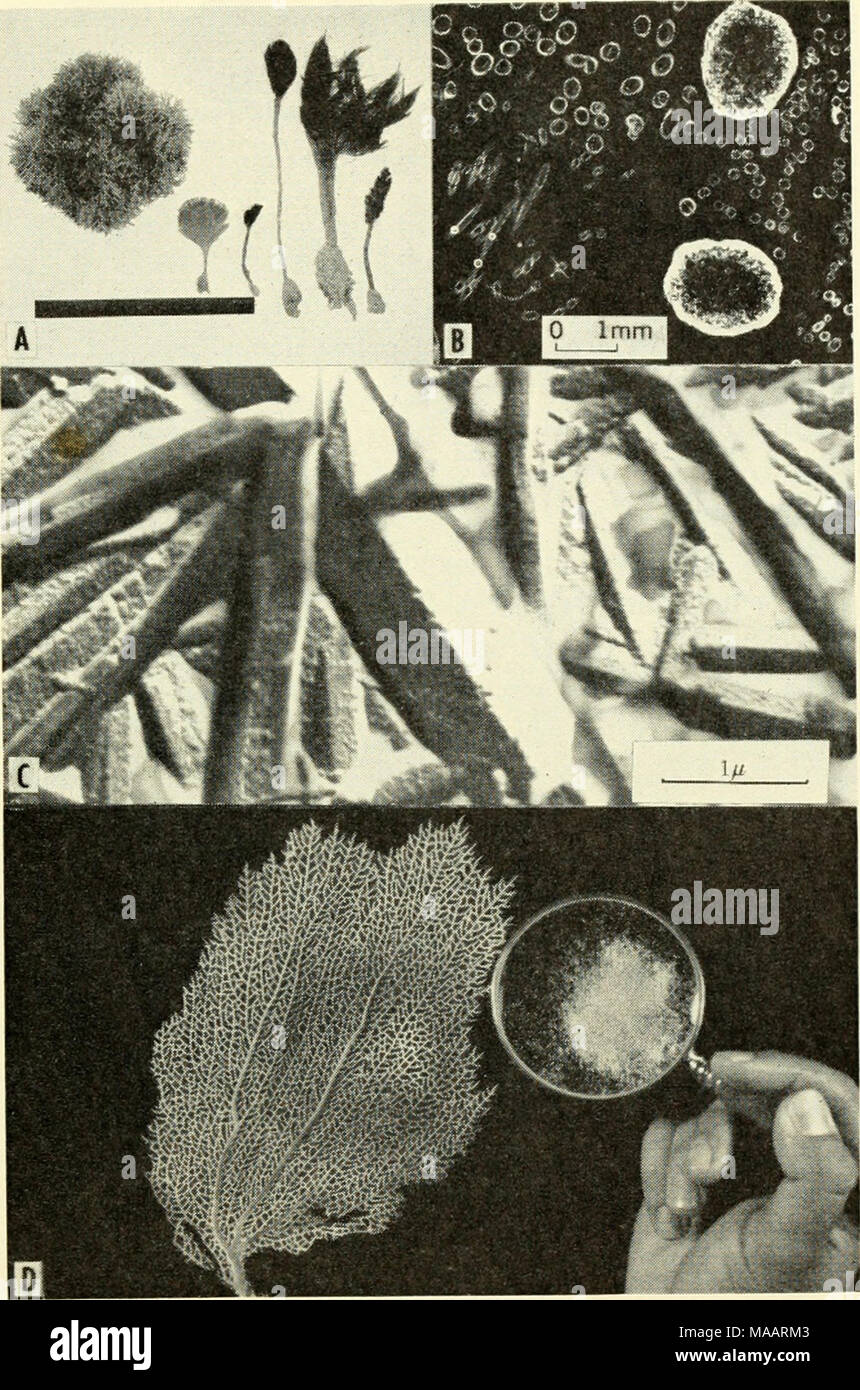 . The Earth beneath the sea : History . Fig. 1. Representative sheaths and spicules. A. Green and red algae that have fragile sheaths of calcium carbonate. Left to right: Galaxaura sp., Udotea sp., three specimens of Penicillus sp. and Ehipocephalus sp. B. Negative print of a thin section of Penicillus sp. The large rings are cross-sections of the stem (see Fig. lA), and the smaller ones are cross-sections of the filaments. C. Electron micrograph of a shadowed carbon replica of the aragonite needles from the stem of Penicillus sp. The crystals are pseudo-hexagonal twins of aragonite. Crystals Stock Photohttps://www.alamy.com/image-license-details/?v=1https://www.alamy.com/the-earth-beneath-the-sea-history-fig-1-representative-sheaths-and-spicules-a-green-and-red-algae-that-have-fragile-sheaths-of-calcium-carbonate-left-to-right-galaxaura-sp-udotea-sp-three-specimens-of-penicillus-sp-and-ehipocephalus-sp-b-negative-print-of-a-thin-section-of-penicillus-sp-the-large-rings-are-cross-sections-of-the-stem-see-fig-la-and-the-smaller-ones-are-cross-sections-of-the-filaments-c-electron-micrograph-of-a-shadowed-carbon-replica-of-the-aragonite-needles-from-the-stem-of-penicillus-sp-the-crystals-are-pseudo-hexagonal-twins-of-aragonite-crystals-image178488355.html
. The Earth beneath the sea : History . Fig. 1. Representative sheaths and spicules. A. Green and red algae that have fragile sheaths of calcium carbonate. Left to right: Galaxaura sp., Udotea sp., three specimens of Penicillus sp. and Ehipocephalus sp. B. Negative print of a thin section of Penicillus sp. The large rings are cross-sections of the stem (see Fig. lA), and the smaller ones are cross-sections of the filaments. C. Electron micrograph of a shadowed carbon replica of the aragonite needles from the stem of Penicillus sp. The crystals are pseudo-hexagonal twins of aragonite. Crystals Stock Photohttps://www.alamy.com/image-license-details/?v=1https://www.alamy.com/the-earth-beneath-the-sea-history-fig-1-representative-sheaths-and-spicules-a-green-and-red-algae-that-have-fragile-sheaths-of-calcium-carbonate-left-to-right-galaxaura-sp-udotea-sp-three-specimens-of-penicillus-sp-and-ehipocephalus-sp-b-negative-print-of-a-thin-section-of-penicillus-sp-the-large-rings-are-cross-sections-of-the-stem-see-fig-la-and-the-smaller-ones-are-cross-sections-of-the-filaments-c-electron-micrograph-of-a-shadowed-carbon-replica-of-the-aragonite-needles-from-the-stem-of-penicillus-sp-the-crystals-are-pseudo-hexagonal-twins-of-aragonite-crystals-image178488355.htmlRMMAARM3–. The Earth beneath the sea : History . Fig. 1. Representative sheaths and spicules. A. Green and red algae that have fragile sheaths of calcium carbonate. Left to right: Galaxaura sp., Udotea sp., three specimens of Penicillus sp. and Ehipocephalus sp. B. Negative print of a thin section of Penicillus sp. The large rings are cross-sections of the stem (see Fig. lA), and the smaller ones are cross-sections of the filaments. C. Electron micrograph of a shadowed carbon replica of the aragonite needles from the stem of Penicillus sp. The crystals are pseudo-hexagonal twins of aragonite. Crystals
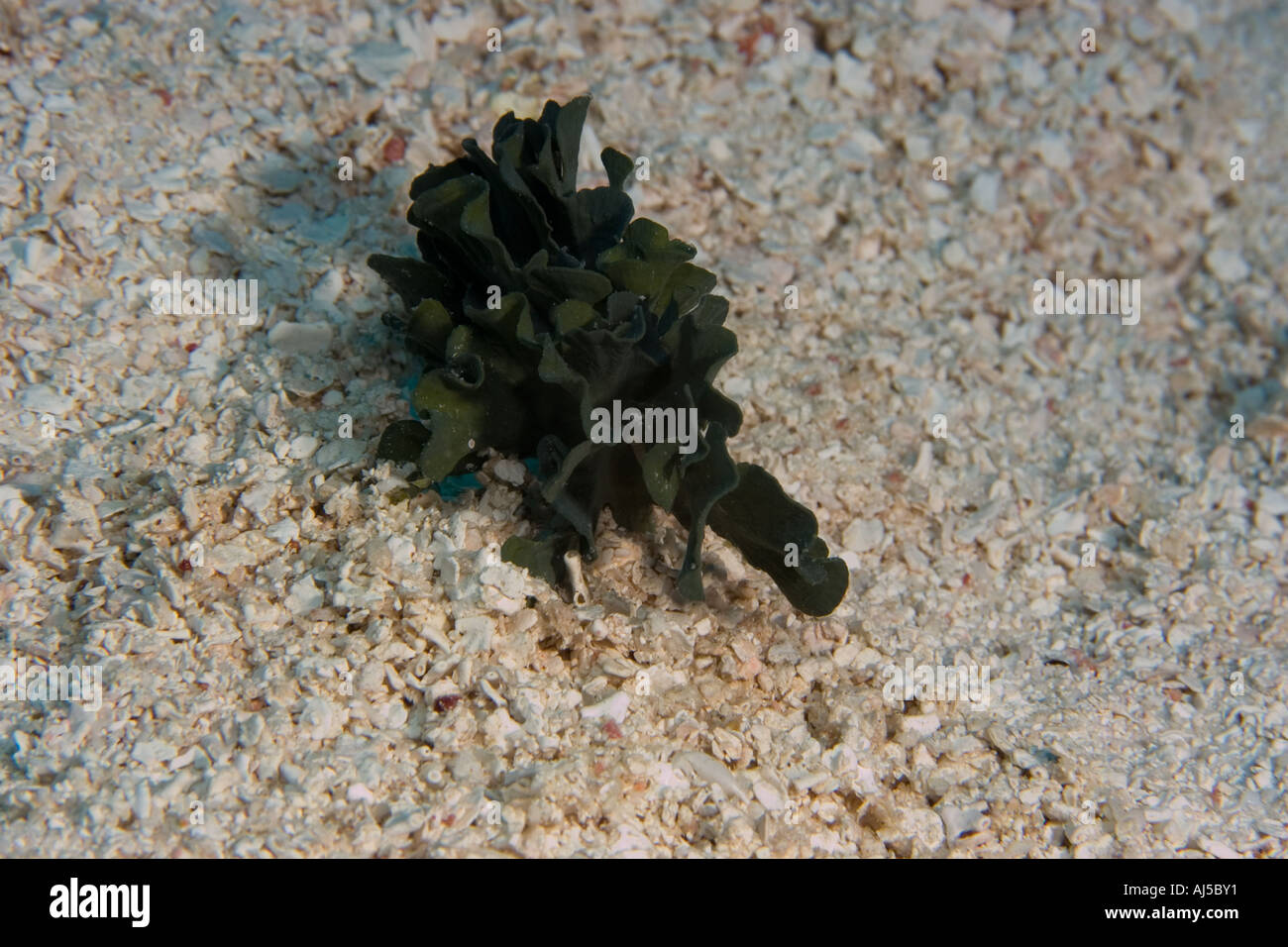 Calcareous algae Udotea sp Ailuk atoll Marshall Islands Pacific Stock Photohttps://www.alamy.com/image-license-details/?v=1https://www.alamy.com/calcareous-algae-udotea-sp-ailuk-atoll-marshall-islands-pacific-image8358384.html
Calcareous algae Udotea sp Ailuk atoll Marshall Islands Pacific Stock Photohttps://www.alamy.com/image-license-details/?v=1https://www.alamy.com/calcareous-algae-udotea-sp-ailuk-atoll-marshall-islands-pacific-image8358384.htmlRMAJ5BY1–Calcareous algae Udotea sp Ailuk atoll Marshall Islands Pacific
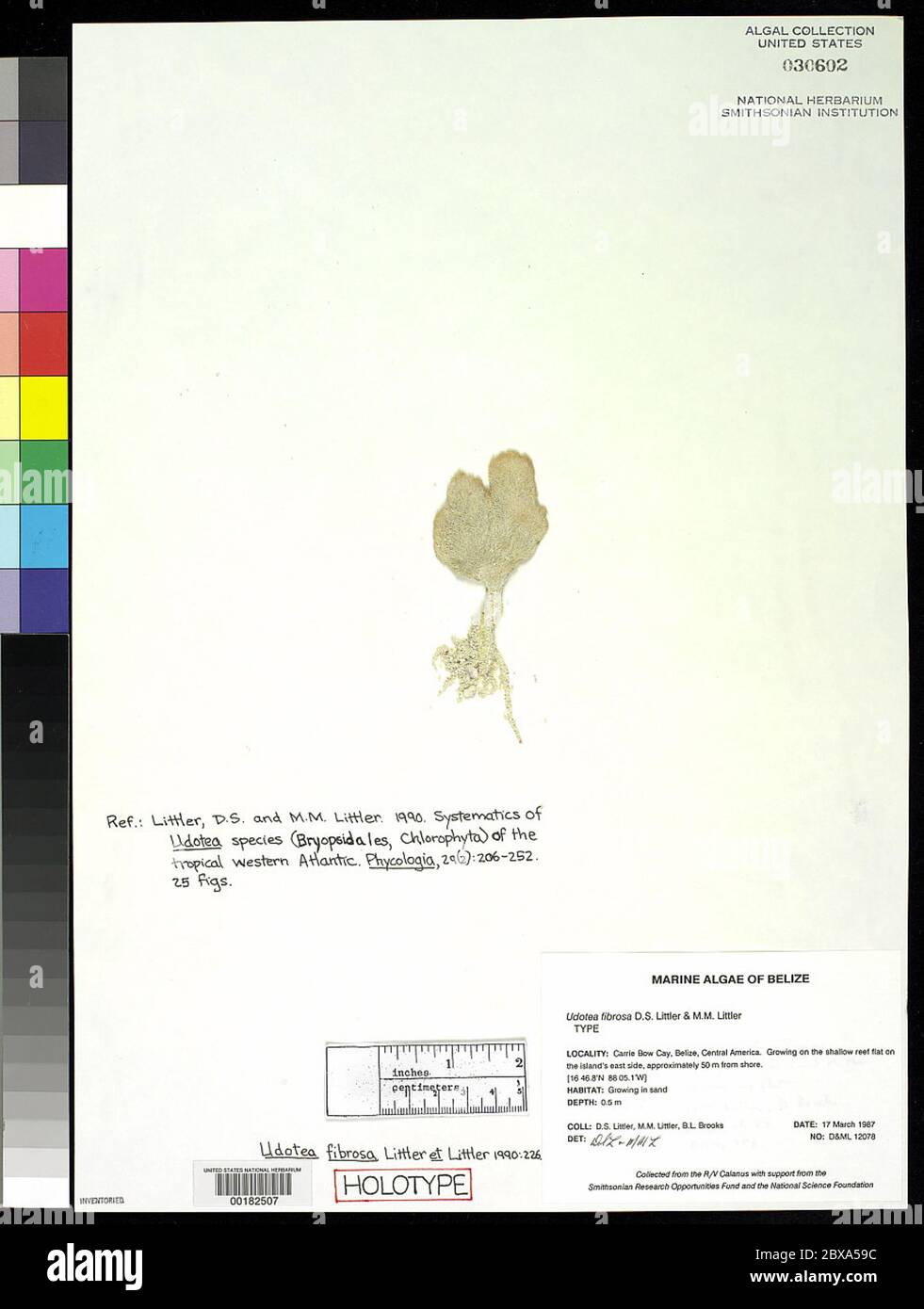 00182507.tif Udotea fibrosa DS Littler Littler. Stock Photohttps://www.alamy.com/image-license-details/?v=1https://www.alamy.com/00182507tif-udotea-fibrosa-ds-littler-littler-image360412120.html
00182507.tif Udotea fibrosa DS Littler Littler. Stock Photohttps://www.alamy.com/image-license-details/?v=1https://www.alamy.com/00182507tif-udotea-fibrosa-ds-littler-littler-image360412120.htmlRM2BXA59C–00182507.tif Udotea fibrosa DS Littler Littler.
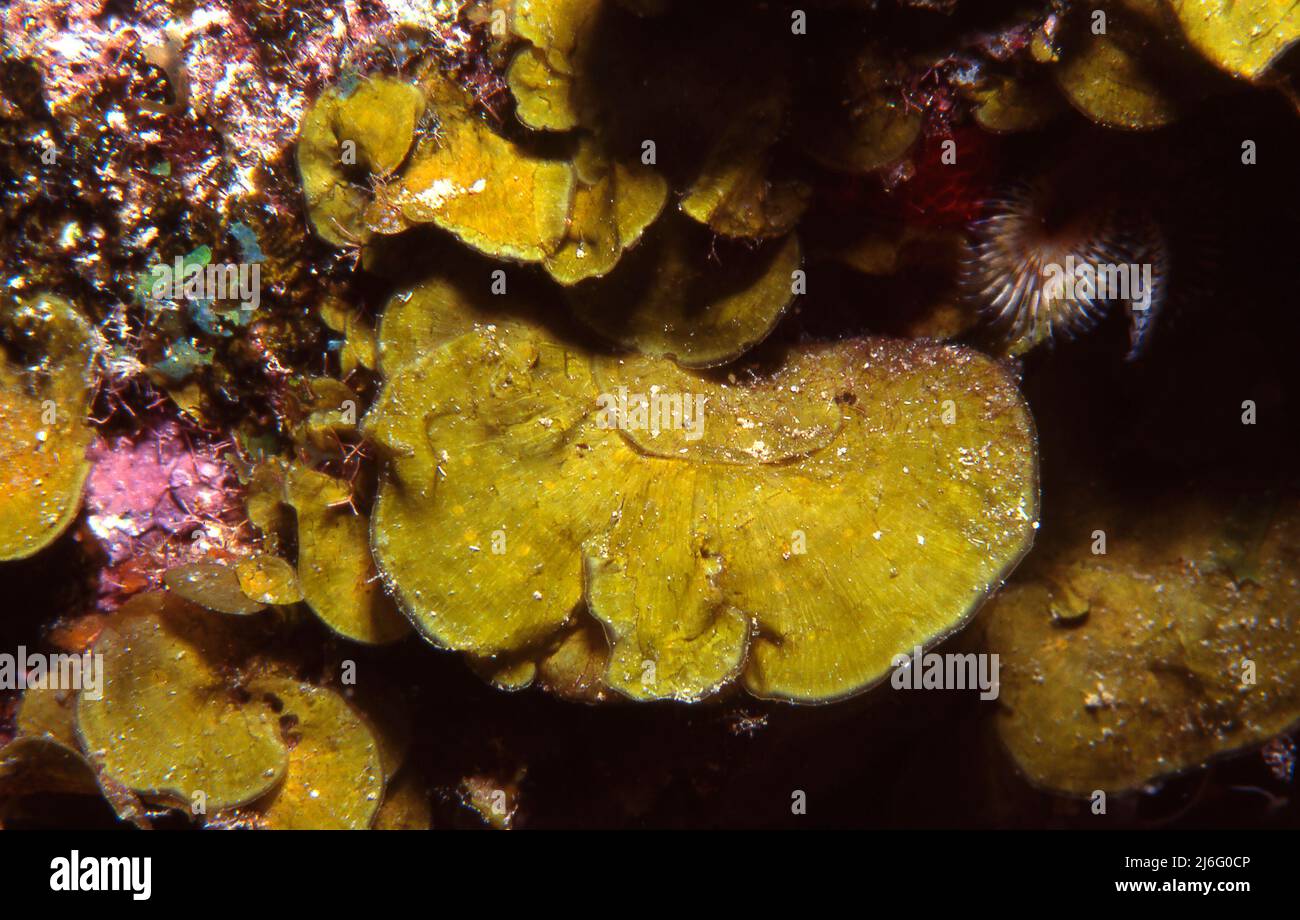 Mermaid Fan Algae, Udotea sp., a green algae Stock Photohttps://www.alamy.com/image-license-details/?v=1https://www.alamy.com/mermaid-fan-algae-udotea-sp-a-green-algae-image468719462.html
Mermaid Fan Algae, Udotea sp., a green algae Stock Photohttps://www.alamy.com/image-license-details/?v=1https://www.alamy.com/mermaid-fan-algae-udotea-sp-a-green-algae-image468719462.htmlRM2J6G0CP–Mermaid Fan Algae, Udotea sp., a green algae
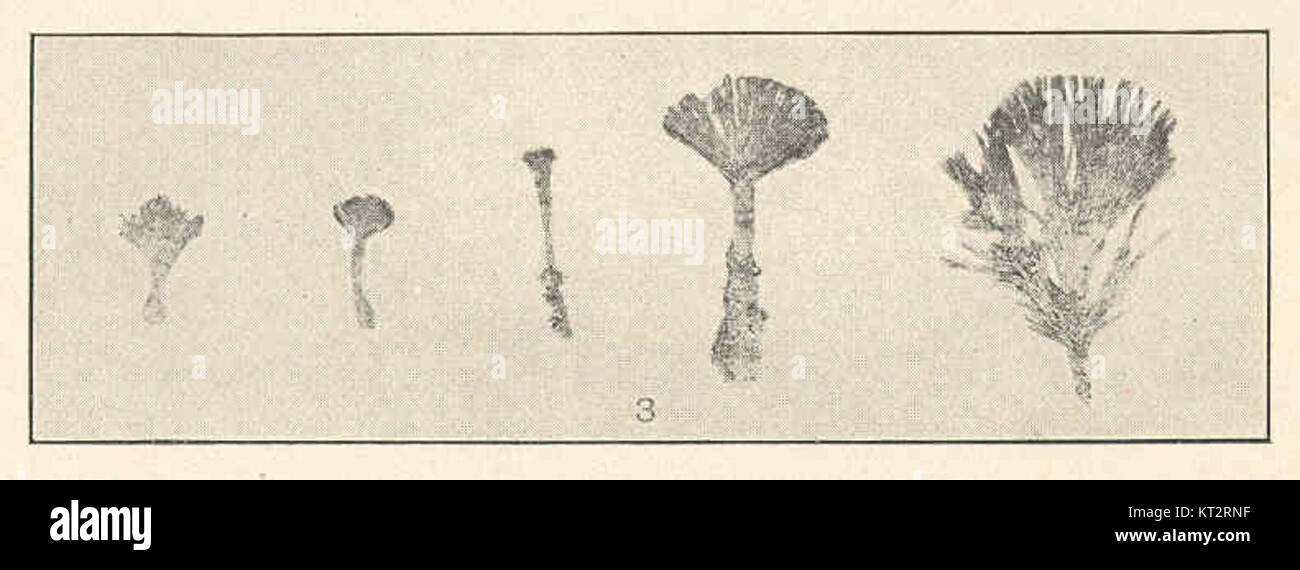 38394 Udotea cyathiformis Stock Photohttps://www.alamy.com/image-license-details/?v=1https://www.alamy.com/stock-image-38394-udotea-cyathiformis-169707595.html
38394 Udotea cyathiformis Stock Photohttps://www.alamy.com/image-license-details/?v=1https://www.alamy.com/stock-image-38394-udotea-cyathiformis-169707595.htmlRMKT2RNF–38394 Udotea cyathiformis
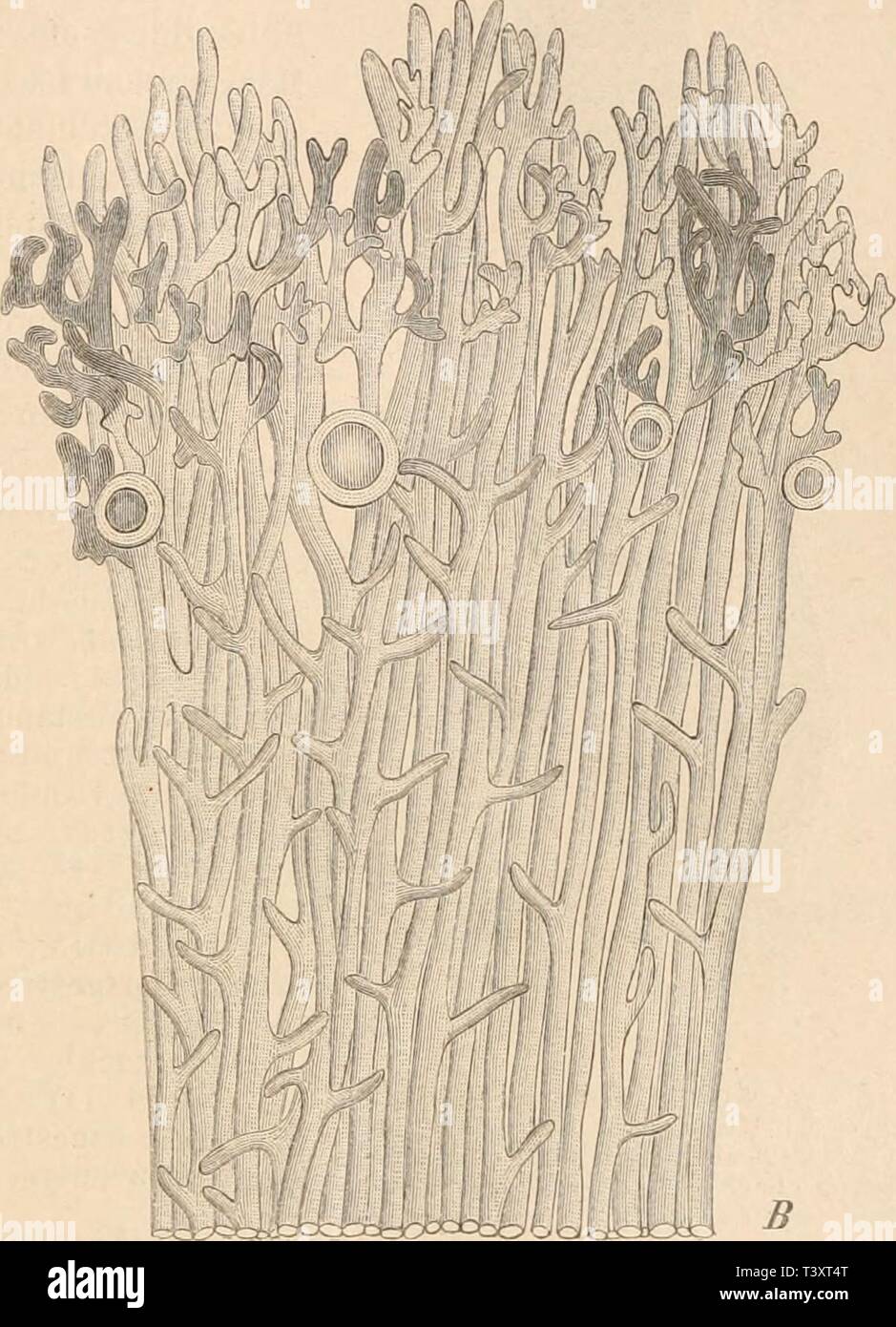 Archive image from page 160 of Die Natürlichen Pflanzenfamilien nebst ihren. Die Natürlichen Pflanzenfamilien nebst ihren Gattungen und wichtigeren Arten, insbesondere den Nutzpflanzen, unter Mitwirkung zahlreicher hervorragender Fachgelehrten begründet dienatrlichenp02engl Year: 1897 Fig. 94. Udotea Desfontainii (Lamx.) Dcne. A 2 Individuen in nat. Gr.; B StuCt eines Thallus mit Zoospo- rangien (?); C die zellenartige Eindenschicht des Stieles. (Nach Kützing. li 100/1 ; C 300/1.) 7. Halimeda Lamx. (Fig. 90, 92) (incl. Botryophora Bompard noii J. Ag.) Der Thallus, welcher unten an einem kurz Stock Photohttps://www.alamy.com/image-license-details/?v=1https://www.alamy.com/archive-image-from-page-160-of-die-natrlichen-pflanzenfamilien-nebst-ihren-die-natrlichen-pflanzenfamilien-nebst-ihren-gattungen-und-wichtigeren-arten-insbesondere-den-nutzpflanzen-unter-mitwirkung-zahlreicher-hervorragender-fachgelehrten-begrndet-dienatrlichenp02engl-year-1897-fig-94-udotea-desfontainii-lamx-dcne-a-2-individuen-in-nat-gr-b-stuct-eines-thallus-mit-zoospo-rangien-c-die-zellenartige-eindenschicht-des-stieles-nach-ktzing-li-1001-c-3001-7-halimeda-lamx-fig-90-92-incl-botryophora-bompard-noii-j-ag-der-thallus-welcher-unten-an-einem-kurz-image243378824.html
Archive image from page 160 of Die Natürlichen Pflanzenfamilien nebst ihren. Die Natürlichen Pflanzenfamilien nebst ihren Gattungen und wichtigeren Arten, insbesondere den Nutzpflanzen, unter Mitwirkung zahlreicher hervorragender Fachgelehrten begründet dienatrlichenp02engl Year: 1897 Fig. 94. Udotea Desfontainii (Lamx.) Dcne. A 2 Individuen in nat. Gr.; B StuCt eines Thallus mit Zoospo- rangien (?); C die zellenartige Eindenschicht des Stieles. (Nach Kützing. li 100/1 ; C 300/1.) 7. Halimeda Lamx. (Fig. 90, 92) (incl. Botryophora Bompard noii J. Ag.) Der Thallus, welcher unten an einem kurz Stock Photohttps://www.alamy.com/image-license-details/?v=1https://www.alamy.com/archive-image-from-page-160-of-die-natrlichen-pflanzenfamilien-nebst-ihren-die-natrlichen-pflanzenfamilien-nebst-ihren-gattungen-und-wichtigeren-arten-insbesondere-den-nutzpflanzen-unter-mitwirkung-zahlreicher-hervorragender-fachgelehrten-begrndet-dienatrlichenp02engl-year-1897-fig-94-udotea-desfontainii-lamx-dcne-a-2-individuen-in-nat-gr-b-stuct-eines-thallus-mit-zoospo-rangien-c-die-zellenartige-eindenschicht-des-stieles-nach-ktzing-li-1001-c-3001-7-halimeda-lamx-fig-90-92-incl-botryophora-bompard-noii-j-ag-der-thallus-welcher-unten-an-einem-kurz-image243378824.htmlRMT3XT4T–Archive image from page 160 of Die Natürlichen Pflanzenfamilien nebst ihren. Die Natürlichen Pflanzenfamilien nebst ihren Gattungen und wichtigeren Arten, insbesondere den Nutzpflanzen, unter Mitwirkung zahlreicher hervorragender Fachgelehrten begründet dienatrlichenp02engl Year: 1897 Fig. 94. Udotea Desfontainii (Lamx.) Dcne. A 2 Individuen in nat. Gr.; B StuCt eines Thallus mit Zoospo- rangien (?); C die zellenartige Eindenschicht des Stieles. (Nach Kützing. li 100/1 ; C 300/1.) 7. Halimeda Lamx. (Fig. 90, 92) (incl. Botryophora Bompard noii J. Ag.) Der Thallus, welcher unten an einem kurz
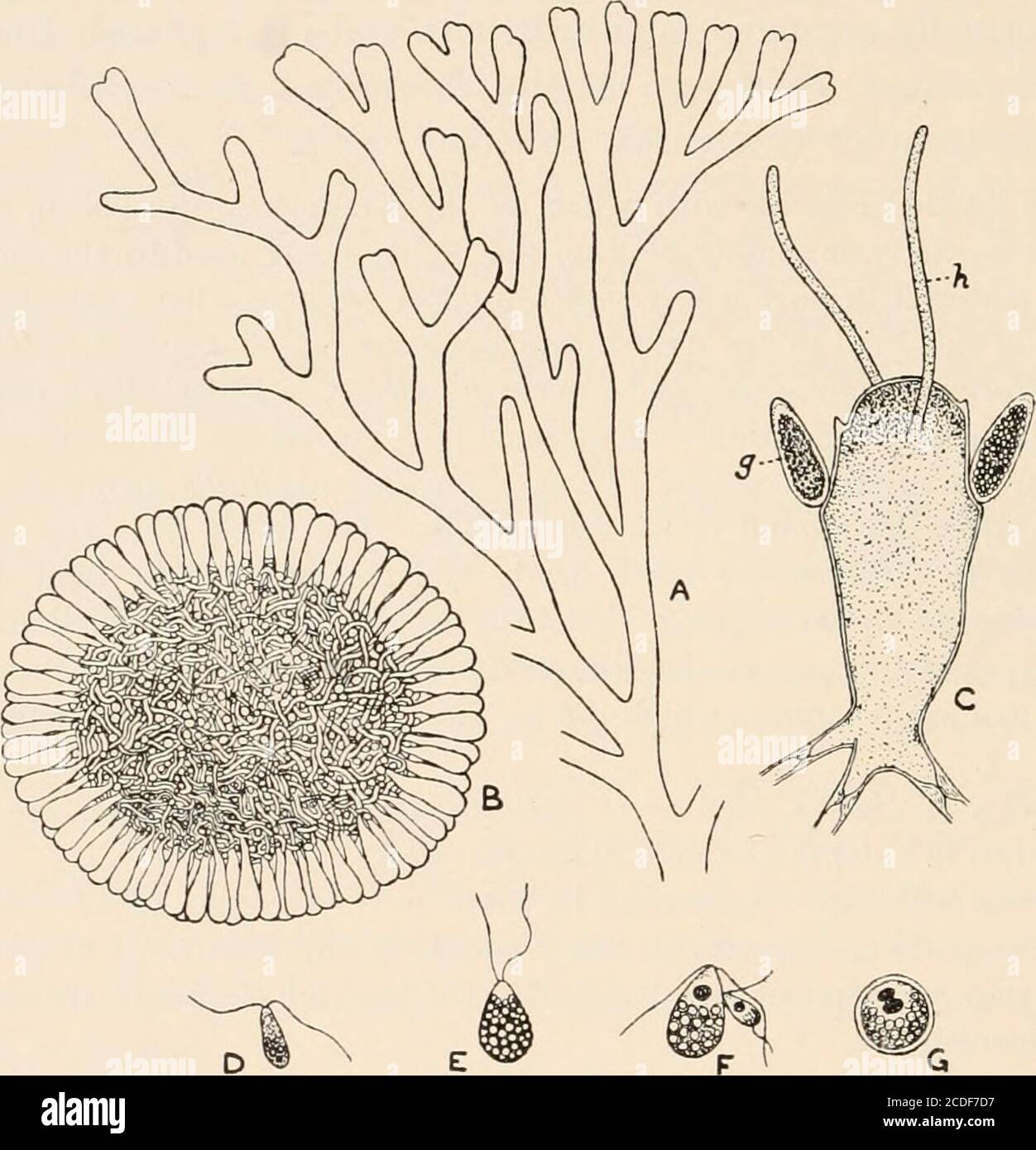 . Algæ. Vol. I. Myxophyceæ, Peridinieæ, Bacillarieæ, Chlorophyceæ, together with a brief summary of the occurrence and distribution of freshwat4er Algæ . enicillus has been recognized in a fossilstate by Munier-Chalmers, and the Eocene fossil described by Lamarck as Ovulites isvery likely a siphonaceous Alga belonging to the Udotea). Sphcerocodium Bornemanmdescribed by Rothpletz as a fossil member of the Codiacere is exceedingly doubtful. Forfurther information on these fossils consult Seward (98). 240 Siphonales Lorenz (1902) has given the name Halimediles to the fossil Alga he described asHa Stock Photohttps://www.alamy.com/image-license-details/?v=1https://www.alamy.com/alg-vol-i-myxophyce-peridinie-bacillarie-chlorophyce-together-with-a-brief-summary-of-the-occurrence-and-distribution-of-freshwat4er-alg-enicillus-has-been-recognized-in-a-fossilstate-by-munier-chalmers-and-the-eocene-fossil-described-by-lamarck-as-ovulites-isvery-likely-a-siphonaceous-alga-belonging-to-the-udotea-sphcerocodium-bornemanmdescribed-by-rothpletz-as-a-fossil-member-of-the-codiacere-is-exceedingly-doubtful-forfurther-information-on-these-fossils-consult-seward-98-240-siphonales-lorenz-1902-has-given-the-name-halimediles-to-the-fossil-alga-he-described-asha-image369743395.html
. Algæ. Vol. I. Myxophyceæ, Peridinieæ, Bacillarieæ, Chlorophyceæ, together with a brief summary of the occurrence and distribution of freshwat4er Algæ . enicillus has been recognized in a fossilstate by Munier-Chalmers, and the Eocene fossil described by Lamarck as Ovulites isvery likely a siphonaceous Alga belonging to the Udotea). Sphcerocodium Bornemanmdescribed by Rothpletz as a fossil member of the Codiacere is exceedingly doubtful. Forfurther information on these fossils consult Seward (98). 240 Siphonales Lorenz (1902) has given the name Halimediles to the fossil Alga he described asHa Stock Photohttps://www.alamy.com/image-license-details/?v=1https://www.alamy.com/alg-vol-i-myxophyce-peridinie-bacillarie-chlorophyce-together-with-a-brief-summary-of-the-occurrence-and-distribution-of-freshwat4er-alg-enicillus-has-been-recognized-in-a-fossilstate-by-munier-chalmers-and-the-eocene-fossil-described-by-lamarck-as-ovulites-isvery-likely-a-siphonaceous-alga-belonging-to-the-udotea-sphcerocodium-bornemanmdescribed-by-rothpletz-as-a-fossil-member-of-the-codiacere-is-exceedingly-doubtful-forfurther-information-on-these-fossils-consult-seward-98-240-siphonales-lorenz-1902-has-given-the-name-halimediles-to-the-fossil-alga-he-described-asha-image369743395.htmlRM2CDF7D7–. Algæ. Vol. I. Myxophyceæ, Peridinieæ, Bacillarieæ, Chlorophyceæ, together with a brief summary of the occurrence and distribution of freshwat4er Algæ . enicillus has been recognized in a fossilstate by Munier-Chalmers, and the Eocene fossil described by Lamarck as Ovulites isvery likely a siphonaceous Alga belonging to the Udotea). Sphcerocodium Bornemanmdescribed by Rothpletz as a fossil member of the Codiacere is exceedingly doubtful. Forfurther information on these fossils consult Seward (98). 240 Siphonales Lorenz (1902) has given the name Halimediles to the fossil Alga he described asHa
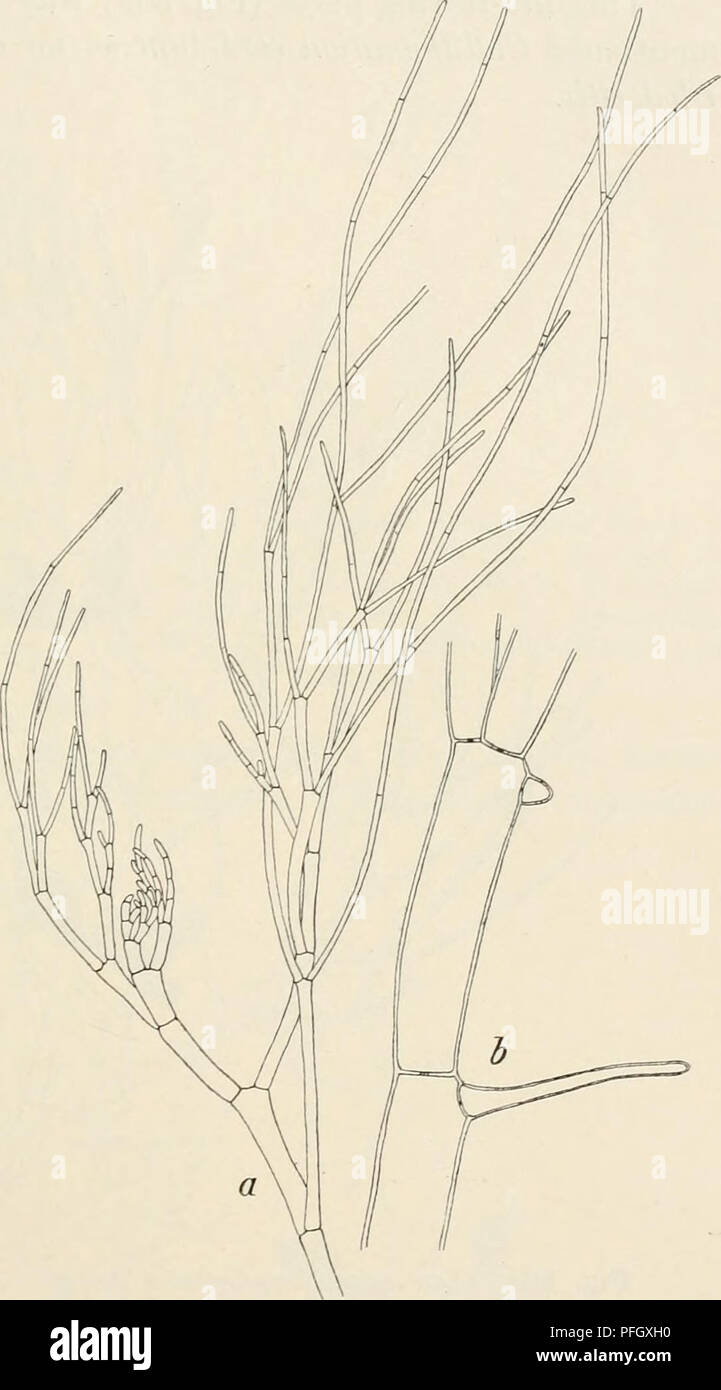 . Dansk botanisk arkiv. Plants; Plants -- Denmark. F. Børgesen: Rhodophyceæ of the Danish W. Indies. 221 The plant grows epiphytically upon larger algæ, e. g. Hali- meda, Udotea, Avrainvillea and forms entangled masses together with Cladophora crispula, Cladophoropsis etc. It is fastened to the host plants by means of rhizoids growing out from the cells in the main filaments, often rather high up in the plants (Fig. 208 b); the primary base I have not seen. The rhizoids end in small, irregularly shaped discs. The plant has no cortical layer. The cells in the main fila- ments are nearly cylin- Stock Photohttps://www.alamy.com/image-license-details/?v=1https://www.alamy.com/dansk-botanisk-arkiv-plants-plants-denmark-f-brgesen-rhodophyce-of-the-danish-w-indies-221-the-plant-grows-epiphytically-upon-larger-alg-e-g-hali-meda-udotea-avrainvillea-and-forms-entangled-masses-together-with-cladophora-crispula-cladophoropsis-etc-it-is-fastened-to-the-host-plants-by-means-of-rhizoids-growing-out-from-the-cells-in-the-main-filaments-often-rather-high-up-in-the-plants-fig-208-b-the-primary-base-i-have-not-seen-the-rhizoids-end-in-small-irregularly-shaped-discs-the-plant-has-no-cortical-layer-the-cells-in-the-main-fila-ments-are-nearly-cylin-image216116348.html
. Dansk botanisk arkiv. Plants; Plants -- Denmark. F. Børgesen: Rhodophyceæ of the Danish W. Indies. 221 The plant grows epiphytically upon larger algæ, e. g. Hali- meda, Udotea, Avrainvillea and forms entangled masses together with Cladophora crispula, Cladophoropsis etc. It is fastened to the host plants by means of rhizoids growing out from the cells in the main filaments, often rather high up in the plants (Fig. 208 b); the primary base I have not seen. The rhizoids end in small, irregularly shaped discs. The plant has no cortical layer. The cells in the main fila- ments are nearly cylin- Stock Photohttps://www.alamy.com/image-license-details/?v=1https://www.alamy.com/dansk-botanisk-arkiv-plants-plants-denmark-f-brgesen-rhodophyce-of-the-danish-w-indies-221-the-plant-grows-epiphytically-upon-larger-alg-e-g-hali-meda-udotea-avrainvillea-and-forms-entangled-masses-together-with-cladophora-crispula-cladophoropsis-etc-it-is-fastened-to-the-host-plants-by-means-of-rhizoids-growing-out-from-the-cells-in-the-main-filaments-often-rather-high-up-in-the-plants-fig-208-b-the-primary-base-i-have-not-seen-the-rhizoids-end-in-small-irregularly-shaped-discs-the-plant-has-no-cortical-layer-the-cells-in-the-main-fila-ments-are-nearly-cylin-image216116348.htmlRMPFGXH0–. Dansk botanisk arkiv. Plants; Plants -- Denmark. F. Børgesen: Rhodophyceæ of the Danish W. Indies. 221 The plant grows epiphytically upon larger algæ, e. g. Hali- meda, Udotea, Avrainvillea and forms entangled masses together with Cladophora crispula, Cladophoropsis etc. It is fastened to the host plants by means of rhizoids growing out from the cells in the main filaments, often rather high up in the plants (Fig. 208 b); the primary base I have not seen. The rhizoids end in small, irregularly shaped discs. The plant has no cortical layer. The cells in the main fila- ments are nearly cylin-
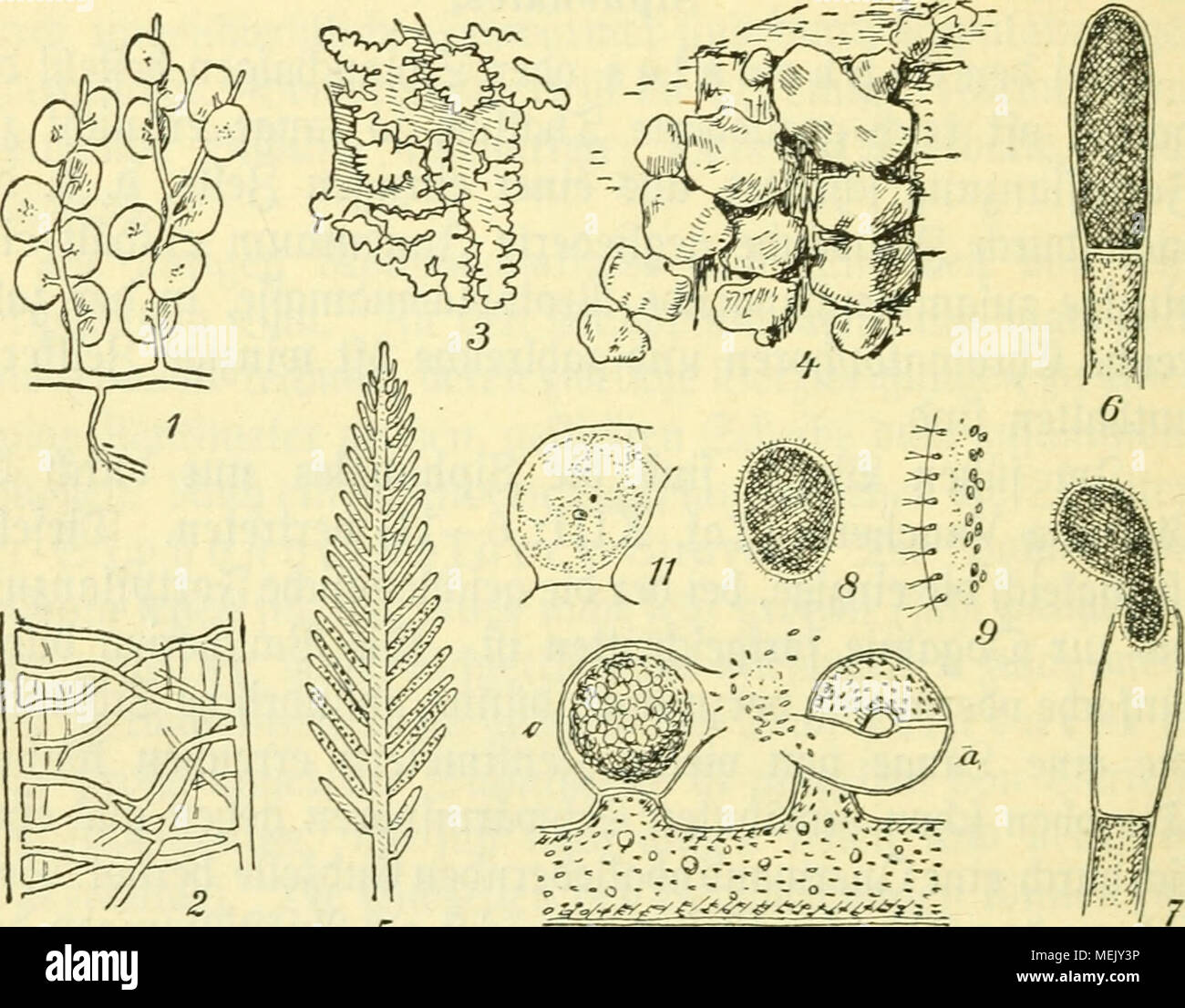 . Die Algen, Moose und Farnpflanzen. . Saf. XIII. 1. Caulerpa macrodisca. 2. C. prolifera, Steil eine3 2äng§?tf)nitte§ burd) ein S3latt. 3. Udotea Desfontainei, Sruf&au be§ 5Tf)aHu§ burd) ^ersiuei» gung ber ,8elte. 4. Halimeda Tuna. 5. Bryopsis cupressoides, bie unteren äSer^rueigungen ^uSporangteu umgebilbet. 6—11. Vaucheria sessilis: . Spor» angiunt, 7. bie Sdpuärmfpore ausfdjlüpfenb, 8. (Sdpuärmjpore, 9. Seil ber* felben, ©eißeln, Herne unb (Srjromatopfjoren aeigenb, 10. öogonium (o) uub IHntfjeribium (a), luärjreub ber 95efrud)tung, 11. befrutfjtete (ftselle, (Eiern unb ©permaferu. gel Stock Photohttps://www.alamy.com/image-license-details/?v=1https://www.alamy.com/die-algen-moose-und-farnpflanzen-saf-xiii-1-caulerpa-macrodisca-2-c-prolifera-steil-eine3-2ngtfnitte-burd-ein-s3latt-3-udotea-desfontainei-srufampau-be-5tfahu-burd-ersiuei-gung-ber-8elte-4-halimeda-tuna-5-bryopsis-cupressoides-bie-unteren-serrueigungen-usporangteu-umgebilbet-611-vaucheria-sessilis-spor-angiunt-7-bie-sdpurmfpore-ausfdjlpfenb-8-sdpurmjpore-9-seil-ber-felben-eieln-herne-unb-srjromatopfjoren-aeigenb-10-ogonium-o-uub-ihntfjeribium-a-lurjreub-ber-95efrudtung-11-befrutfjtete-ftselle-eiern-unb-permaferu-gel-image181125274.html
. Die Algen, Moose und Farnpflanzen. . Saf. XIII. 1. Caulerpa macrodisca. 2. C. prolifera, Steil eine3 2äng§?tf)nitte§ burd) ein S3latt. 3. Udotea Desfontainei, Sruf&au be§ 5Tf)aHu§ burd) ^ersiuei» gung ber ,8elte. 4. Halimeda Tuna. 5. Bryopsis cupressoides, bie unteren äSer^rueigungen ^uSporangteu umgebilbet. 6—11. Vaucheria sessilis: . Spor» angiunt, 7. bie Sdpuärmfpore ausfdjlüpfenb, 8. (Sdpuärmjpore, 9. Seil ber* felben, ©eißeln, Herne unb (Srjromatopfjoren aeigenb, 10. öogonium (o) uub IHntfjeribium (a), luärjreub ber 95efrud)tung, 11. befrutfjtete (ftselle, (Eiern unb ©permaferu. gel Stock Photohttps://www.alamy.com/image-license-details/?v=1https://www.alamy.com/die-algen-moose-und-farnpflanzen-saf-xiii-1-caulerpa-macrodisca-2-c-prolifera-steil-eine3-2ngtfnitte-burd-ein-s3latt-3-udotea-desfontainei-srufampau-be-5tfahu-burd-ersiuei-gung-ber-8elte-4-halimeda-tuna-5-bryopsis-cupressoides-bie-unteren-serrueigungen-usporangteu-umgebilbet-611-vaucheria-sessilis-spor-angiunt-7-bie-sdpurmfpore-ausfdjlpfenb-8-sdpurmjpore-9-seil-ber-felben-eieln-herne-unb-srjromatopfjoren-aeigenb-10-ogonium-o-uub-ihntfjeribium-a-lurjreub-ber-95efrudtung-11-befrutfjtete-ftselle-eiern-unb-permaferu-gel-image181125274.htmlRMMEJY3P–. Die Algen, Moose und Farnpflanzen. . Saf. XIII. 1. Caulerpa macrodisca. 2. C. prolifera, Steil eine3 2äng§?tf)nitte§ burd) ein S3latt. 3. Udotea Desfontainei, Sruf&au be§ 5Tf)aHu§ burd) ^ersiuei» gung ber ,8elte. 4. Halimeda Tuna. 5. Bryopsis cupressoides, bie unteren äSer^rueigungen ^uSporangteu umgebilbet. 6—11. Vaucheria sessilis: . Spor» angiunt, 7. bie Sdpuärmfpore ausfdjlüpfenb, 8. (Sdpuärmjpore, 9. Seil ber* felben, ©eißeln, Herne unb (Srjromatopfjoren aeigenb, 10. öogonium (o) uub IHntfjeribium (a), luärjreub ber 95efrud)tung, 11. befrutfjtete (ftselle, (Eiern unb ©permaferu. gel
 . Algæ. Vol. I. Myxophyceæ, Peridinieæ, Bacillarieæ, Chlorophyceæ, together with a brief summary of the occurrence and distribution of freshwat4er Algæ . , orlaterally cemented side by side into monostromatic flabella (as in Udotea 236 Siphonales javensis, U. glaucescens, Ti/demaiiia, Rhipocephalus), or they are more or lesscompletely conglutinated to form a pluriseriate flabelliform or cyathiformfrond (as in U. conghdinata, U. cyathiformis, etc.); (2) the simple orbranched lateral appendages of the filaments, which in this type cohere soas to form a cortical covering to the frond and its stal Stock Photohttps://www.alamy.com/image-license-details/?v=1https://www.alamy.com/alg-vol-i-myxophyce-peridinie-bacillarie-chlorophyce-together-with-a-brief-summary-of-the-occurrence-and-distribution-of-freshwat4er-alg-orlaterally-cemented-side-by-side-into-monostromatic-flabella-as-in-udotea-236-siphonales-javensis-u-glaucescens-tidemaiiia-rhipocephalus-or-they-are-more-or-lesscompletely-conglutinated-to-form-a-pluriseriate-flabelliform-or-cyathiformfrond-as-in-u-conghdinata-u-cyathiformis-etc-2-the-simple-orbranched-lateral-appendages-of-the-filaments-which-in-this-type-cohere-soas-to-form-a-cortical-covering-to-the-frond-and-its-stal-image369743669.html
. Algæ. Vol. I. Myxophyceæ, Peridinieæ, Bacillarieæ, Chlorophyceæ, together with a brief summary of the occurrence and distribution of freshwat4er Algæ . , orlaterally cemented side by side into monostromatic flabella (as in Udotea 236 Siphonales javensis, U. glaucescens, Ti/demaiiia, Rhipocephalus), or they are more or lesscompletely conglutinated to form a pluriseriate flabelliform or cyathiformfrond (as in U. conghdinata, U. cyathiformis, etc.); (2) the simple orbranched lateral appendages of the filaments, which in this type cohere soas to form a cortical covering to the frond and its stal Stock Photohttps://www.alamy.com/image-license-details/?v=1https://www.alamy.com/alg-vol-i-myxophyce-peridinie-bacillarie-chlorophyce-together-with-a-brief-summary-of-the-occurrence-and-distribution-of-freshwat4er-alg-orlaterally-cemented-side-by-side-into-monostromatic-flabella-as-in-udotea-236-siphonales-javensis-u-glaucescens-tidemaiiia-rhipocephalus-or-they-are-more-or-lesscompletely-conglutinated-to-form-a-pluriseriate-flabelliform-or-cyathiformfrond-as-in-u-conghdinata-u-cyathiformis-etc-2-the-simple-orbranched-lateral-appendages-of-the-filaments-which-in-this-type-cohere-soas-to-form-a-cortical-covering-to-the-frond-and-its-stal-image369743669.htmlRM2CDF7R1–. Algæ. Vol. I. Myxophyceæ, Peridinieæ, Bacillarieæ, Chlorophyceæ, together with a brief summary of the occurrence and distribution of freshwat4er Algæ . , orlaterally cemented side by side into monostromatic flabella (as in Udotea 236 Siphonales javensis, U. glaucescens, Ti/demaiiia, Rhipocephalus), or they are more or lesscompletely conglutinated to form a pluriseriate flabelliform or cyathiformfrond (as in U. conghdinata, U. cyathiformis, etc.); (2) the simple orbranched lateral appendages of the filaments, which in this type cohere soas to form a cortical covering to the frond and its stal
 . Das Meer; geographische, naturgeschichtliche und volkswirtschaftliche Darstellung des Meeres und seiner Bedeutung in der Gegenwart. Oceanography; Marine biology. 144 Dr. Wiese, Das Meer. mehr auffallend als schön g-estalteten Caulerpa-, Udotea- und Codiumarten. Am Mittelmeer sieht man die Flutlinie häufig* begrenzt durch die g"länzenden grünen Lappen der Alg"e Ulva Lactuca, die vom Meer ausg"eworfen und, wie der Name Lactuca andeutet, als Salat g'eg'essen wird. Mehr als die g^rünen Meeresalg-en treten durch Zahl und An- sehen die beiden anderen Abteilung-en hervor. Die eine da Stock Photohttps://www.alamy.com/image-license-details/?v=1https://www.alamy.com/das-meer-geographische-naturgeschichtliche-und-volkswirtschaftliche-darstellung-des-meeres-und-seiner-bedeutung-in-der-gegenwart-oceanography-marine-biology-144-dr-wiese-das-meer-mehr-auffallend-als-schn-g-estalteten-caulerpa-udotea-und-codiumarten-am-mittelmeer-sieht-man-die-flutlinie-hufig-begrenzt-durch-die-gquotlnzenden-grnen-lappen-der-algquote-ulva-lactuca-die-vom-meer-ausgquoteworfen-und-wie-der-name-lactuca-andeutet-als-salat-gegessen-wird-mehr-als-die-grnen-meeresalg-en-treten-durch-zahl-und-an-sehen-die-beiden-anderen-abteilung-en-hervor-die-eine-da-image216102765.html
. Das Meer; geographische, naturgeschichtliche und volkswirtschaftliche Darstellung des Meeres und seiner Bedeutung in der Gegenwart. Oceanography; Marine biology. 144 Dr. Wiese, Das Meer. mehr auffallend als schön g-estalteten Caulerpa-, Udotea- und Codiumarten. Am Mittelmeer sieht man die Flutlinie häufig* begrenzt durch die g"länzenden grünen Lappen der Alg"e Ulva Lactuca, die vom Meer ausg"eworfen und, wie der Name Lactuca andeutet, als Salat g'eg'essen wird. Mehr als die g^rünen Meeresalg-en treten durch Zahl und An- sehen die beiden anderen Abteilung-en hervor. Die eine da Stock Photohttps://www.alamy.com/image-license-details/?v=1https://www.alamy.com/das-meer-geographische-naturgeschichtliche-und-volkswirtschaftliche-darstellung-des-meeres-und-seiner-bedeutung-in-der-gegenwart-oceanography-marine-biology-144-dr-wiese-das-meer-mehr-auffallend-als-schn-g-estalteten-caulerpa-udotea-und-codiumarten-am-mittelmeer-sieht-man-die-flutlinie-hufig-begrenzt-durch-die-gquotlnzenden-grnen-lappen-der-algquote-ulva-lactuca-die-vom-meer-ausgquoteworfen-und-wie-der-name-lactuca-andeutet-als-salat-gegessen-wird-mehr-als-die-grnen-meeresalg-en-treten-durch-zahl-und-an-sehen-die-beiden-anderen-abteilung-en-hervor-die-eine-da-image216102765.htmlRMPFG97W–. Das Meer; geographische, naturgeschichtliche und volkswirtschaftliche Darstellung des Meeres und seiner Bedeutung in der Gegenwart. Oceanography; Marine biology. 144 Dr. Wiese, Das Meer. mehr auffallend als schön g-estalteten Caulerpa-, Udotea- und Codiumarten. Am Mittelmeer sieht man die Flutlinie häufig* begrenzt durch die g"länzenden grünen Lappen der Alg"e Ulva Lactuca, die vom Meer ausg"eworfen und, wie der Name Lactuca andeutet, als Salat g'eg'essen wird. Mehr als die g^rünen Meeresalg-en treten durch Zahl und An- sehen die beiden anderen Abteilung-en hervor. Die eine da
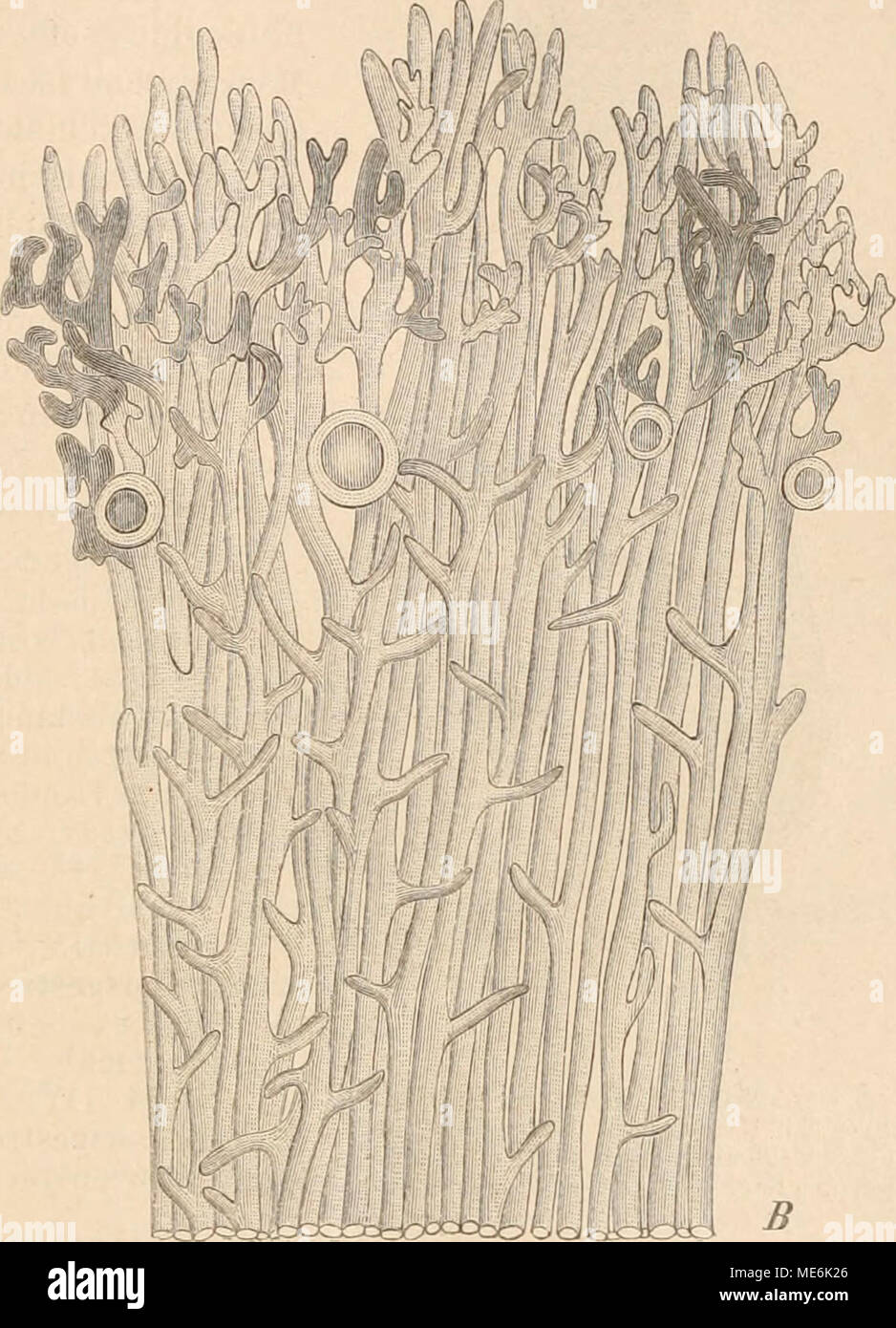 . Die Natürlichen Pflanzenfamilien nebst ihren Gattungen und wichtigeren Arten, insbesondere den Nutzpflanzen, unter Mitwirkung zahlreicher hervorragender Fachgelehrten begründet . Fig. 94. Udotea Desfontainii (Lamx.) Dcne. A 2 Individuen in nat. Gr.; B StuCt eines Thallus mit Zoospo- rangien (?); C die zellenartige Eindenschicht des Stieles. (Nach Kützing. li 100/1 ; C 300/1.) 7. Halimeda Lamx. (Fig. 90, 92) (incl. Botryophora Bompard noii J. Ag.) Der Thallus, welcher unten an einem kurzen Stiele mittelst farbloser Rhizoide festsitzt, ist in seinen äußeren Teilen stark incrustiert und aus her Stock Photohttps://www.alamy.com/image-license-details/?v=1https://www.alamy.com/die-natrlichen-pflanzenfamilien-nebst-ihren-gattungen-und-wichtigeren-arten-insbesondere-den-nutzpflanzen-unter-mitwirkung-zahlreicher-hervorragender-fachgelehrten-begrndet-fig-94-udotea-desfontainii-lamx-dcne-a-2-individuen-in-nat-gr-b-stuct-eines-thallus-mit-zoospo-rangien-c-die-zellenartige-eindenschicht-des-stieles-nach-ktzing-li-1001-c-3001-7-halimeda-lamx-fig-90-92-incl-botryophora-bompard-noii-j-ag-der-thallus-welcher-unten-an-einem-kurzen-stiele-mittelst-farbloser-rhizoide-festsitzt-ist-in-seinen-ueren-teilen-stark-incrustiert-und-aus-her-image180855534.html
. Die Natürlichen Pflanzenfamilien nebst ihren Gattungen und wichtigeren Arten, insbesondere den Nutzpflanzen, unter Mitwirkung zahlreicher hervorragender Fachgelehrten begründet . Fig. 94. Udotea Desfontainii (Lamx.) Dcne. A 2 Individuen in nat. Gr.; B StuCt eines Thallus mit Zoospo- rangien (?); C die zellenartige Eindenschicht des Stieles. (Nach Kützing. li 100/1 ; C 300/1.) 7. Halimeda Lamx. (Fig. 90, 92) (incl. Botryophora Bompard noii J. Ag.) Der Thallus, welcher unten an einem kurzen Stiele mittelst farbloser Rhizoide festsitzt, ist in seinen äußeren Teilen stark incrustiert und aus her Stock Photohttps://www.alamy.com/image-license-details/?v=1https://www.alamy.com/die-natrlichen-pflanzenfamilien-nebst-ihren-gattungen-und-wichtigeren-arten-insbesondere-den-nutzpflanzen-unter-mitwirkung-zahlreicher-hervorragender-fachgelehrten-begrndet-fig-94-udotea-desfontainii-lamx-dcne-a-2-individuen-in-nat-gr-b-stuct-eines-thallus-mit-zoospo-rangien-c-die-zellenartige-eindenschicht-des-stieles-nach-ktzing-li-1001-c-3001-7-halimeda-lamx-fig-90-92-incl-botryophora-bompard-noii-j-ag-der-thallus-welcher-unten-an-einem-kurzen-stiele-mittelst-farbloser-rhizoide-festsitzt-ist-in-seinen-ueren-teilen-stark-incrustiert-und-aus-her-image180855534.htmlRMME6K26–. Die Natürlichen Pflanzenfamilien nebst ihren Gattungen und wichtigeren Arten, insbesondere den Nutzpflanzen, unter Mitwirkung zahlreicher hervorragender Fachgelehrten begründet . Fig. 94. Udotea Desfontainii (Lamx.) Dcne. A 2 Individuen in nat. Gr.; B StuCt eines Thallus mit Zoospo- rangien (?); C die zellenartige Eindenschicht des Stieles. (Nach Kützing. li 100/1 ; C 300/1.) 7. Halimeda Lamx. (Fig. 90, 92) (incl. Botryophora Bompard noii J. Ag.) Der Thallus, welcher unten an einem kurzen Stiele mittelst farbloser Rhizoide festsitzt, ist in seinen äußeren Teilen stark incrustiert und aus her
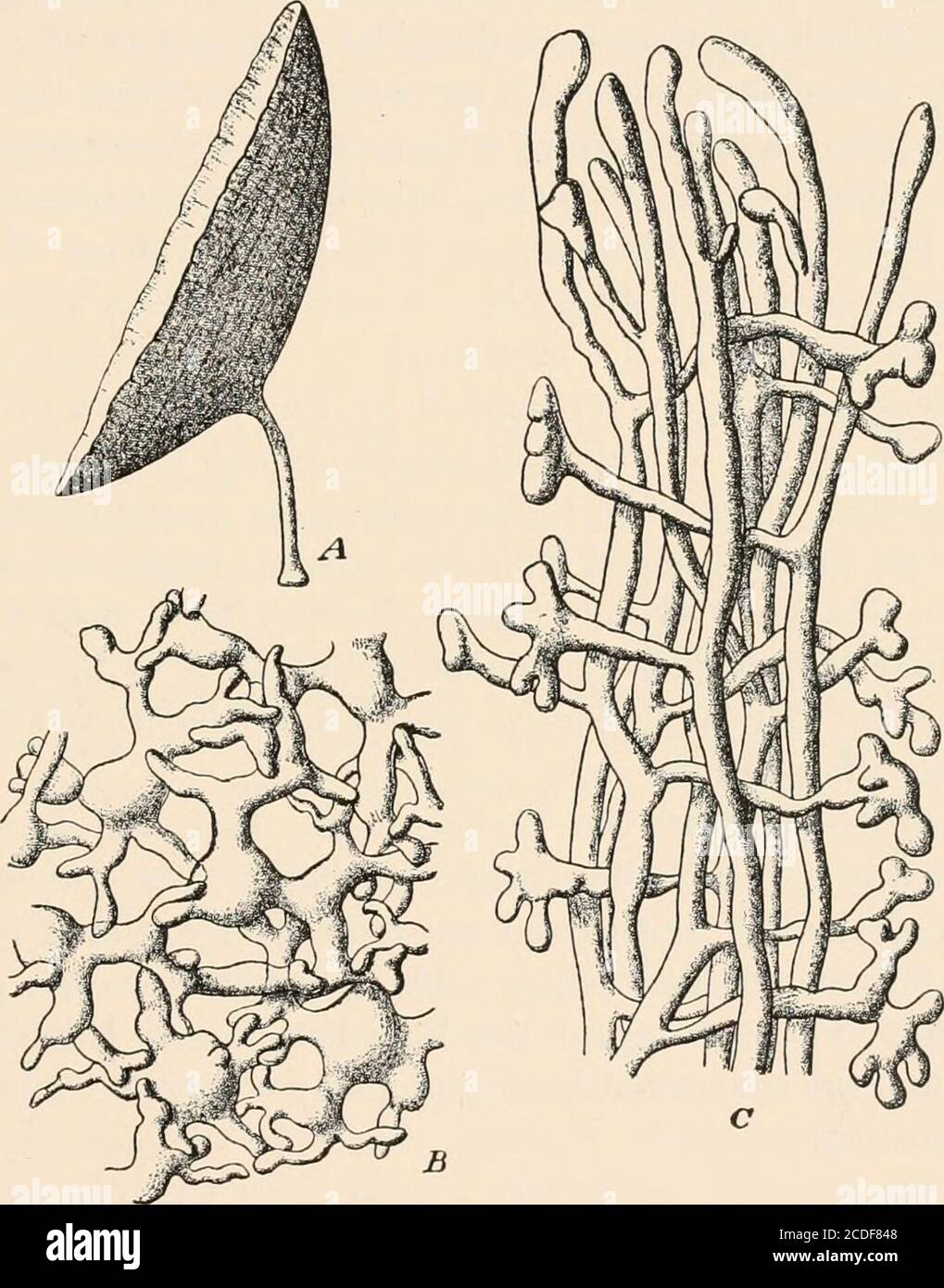 . Algæ. Vol. I. Myxophyceæ, Peridinieæ, Bacillarieæ, Chlorophyceæ, together with a brief summary of the occurrence and distribution of freshwat4er Algæ . parent-axis. The branching isusually dichotomous, either in one plane or in alternate planes, althoughtrichotomous branching occurs in the basal part of Chlorodesmis comosa, inBoodleopsis, in Tydemania, in Penicillus Sibogie, in the capitulum ofP.duinetosus,&nd in the flabellum of Udotea congliitinata and U. glaucescens; Codiacese 233 verticillate branching also occurs in Tydemania expeditionis, in Boodleopsisand in the capitulum of both spec Stock Photohttps://www.alamy.com/image-license-details/?v=1https://www.alamy.com/alg-vol-i-myxophyce-peridinie-bacillarie-chlorophyce-together-with-a-brief-summary-of-the-occurrence-and-distribution-of-freshwat4er-alg-parent-axis-the-branching-isusually-dichotomous-either-in-one-plane-or-in-alternate-planes-althoughtrichotomous-branching-occurs-in-the-basal-part-of-chlorodesmis-comosa-inboodleopsis-in-tydemania-in-penicillus-sibogie-in-the-capitulum-ofpduinetosusnd-in-the-flabellum-of-udotea-congliitinata-and-u-glaucescens-codiacese-233-verticillate-branching-also-occurs-in-tydemania-expeditionis-in-boodleopsisand-in-the-capitulum-of-both-spec-image369743928.html
. Algæ. Vol. I. Myxophyceæ, Peridinieæ, Bacillarieæ, Chlorophyceæ, together with a brief summary of the occurrence and distribution of freshwat4er Algæ . parent-axis. The branching isusually dichotomous, either in one plane or in alternate planes, althoughtrichotomous branching occurs in the basal part of Chlorodesmis comosa, inBoodleopsis, in Tydemania, in Penicillus Sibogie, in the capitulum ofP.duinetosus,&nd in the flabellum of Udotea congliitinata and U. glaucescens; Codiacese 233 verticillate branching also occurs in Tydemania expeditionis, in Boodleopsisand in the capitulum of both spec Stock Photohttps://www.alamy.com/image-license-details/?v=1https://www.alamy.com/alg-vol-i-myxophyce-peridinie-bacillarie-chlorophyce-together-with-a-brief-summary-of-the-occurrence-and-distribution-of-freshwat4er-alg-parent-axis-the-branching-isusually-dichotomous-either-in-one-plane-or-in-alternate-planes-althoughtrichotomous-branching-occurs-in-the-basal-part-of-chlorodesmis-comosa-inboodleopsis-in-tydemania-in-penicillus-sibogie-in-the-capitulum-ofpduinetosusnd-in-the-flabellum-of-udotea-congliitinata-and-u-glaucescens-codiacese-233-verticillate-branching-also-occurs-in-tydemania-expeditionis-in-boodleopsisand-in-the-capitulum-of-both-spec-image369743928.htmlRM2CDF848–. Algæ. Vol. I. Myxophyceæ, Peridinieæ, Bacillarieæ, Chlorophyceæ, together with a brief summary of the occurrence and distribution of freshwat4er Algæ . parent-axis. The branching isusually dichotomous, either in one plane or in alternate planes, althoughtrichotomous branching occurs in the basal part of Chlorodesmis comosa, inBoodleopsis, in Tydemania, in Penicillus Sibogie, in the capitulum ofP.duinetosus,&nd in the flabellum of Udotea congliitinata and U. glaucescens; Codiacese 233 verticillate branching also occurs in Tydemania expeditionis, in Boodleopsisand in the capitulum of both spec
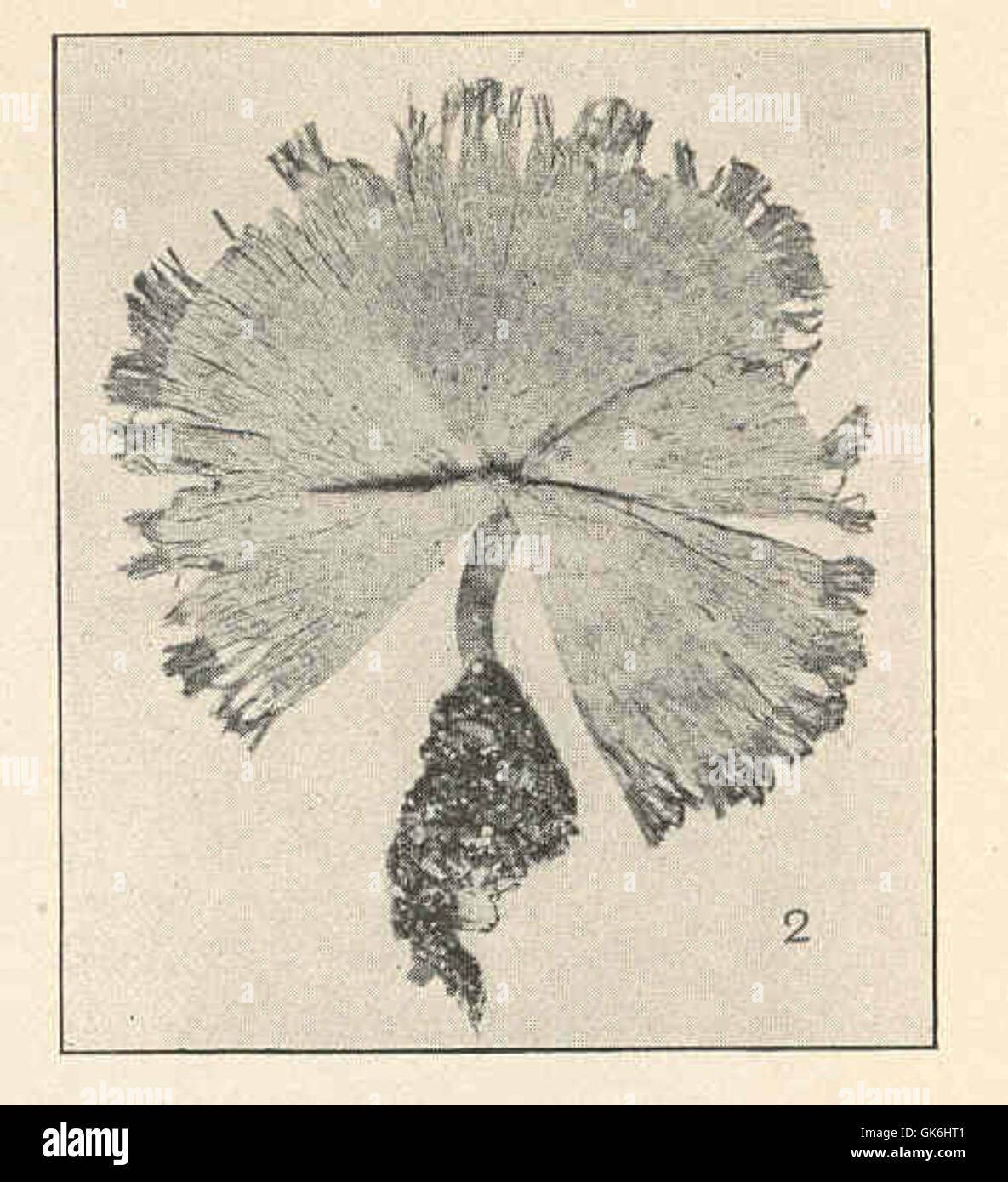 38400 Udotea cyathiformis Stock Photohttps://www.alamy.com/image-license-details/?v=1https://www.alamy.com/stock-photo-38400-udotea-cyathiformis-115086385.html
38400 Udotea cyathiformis Stock Photohttps://www.alamy.com/image-license-details/?v=1https://www.alamy.com/stock-photo-38400-udotea-cyathiformis-115086385.htmlRMGK6HT1–38400 Udotea cyathiformis
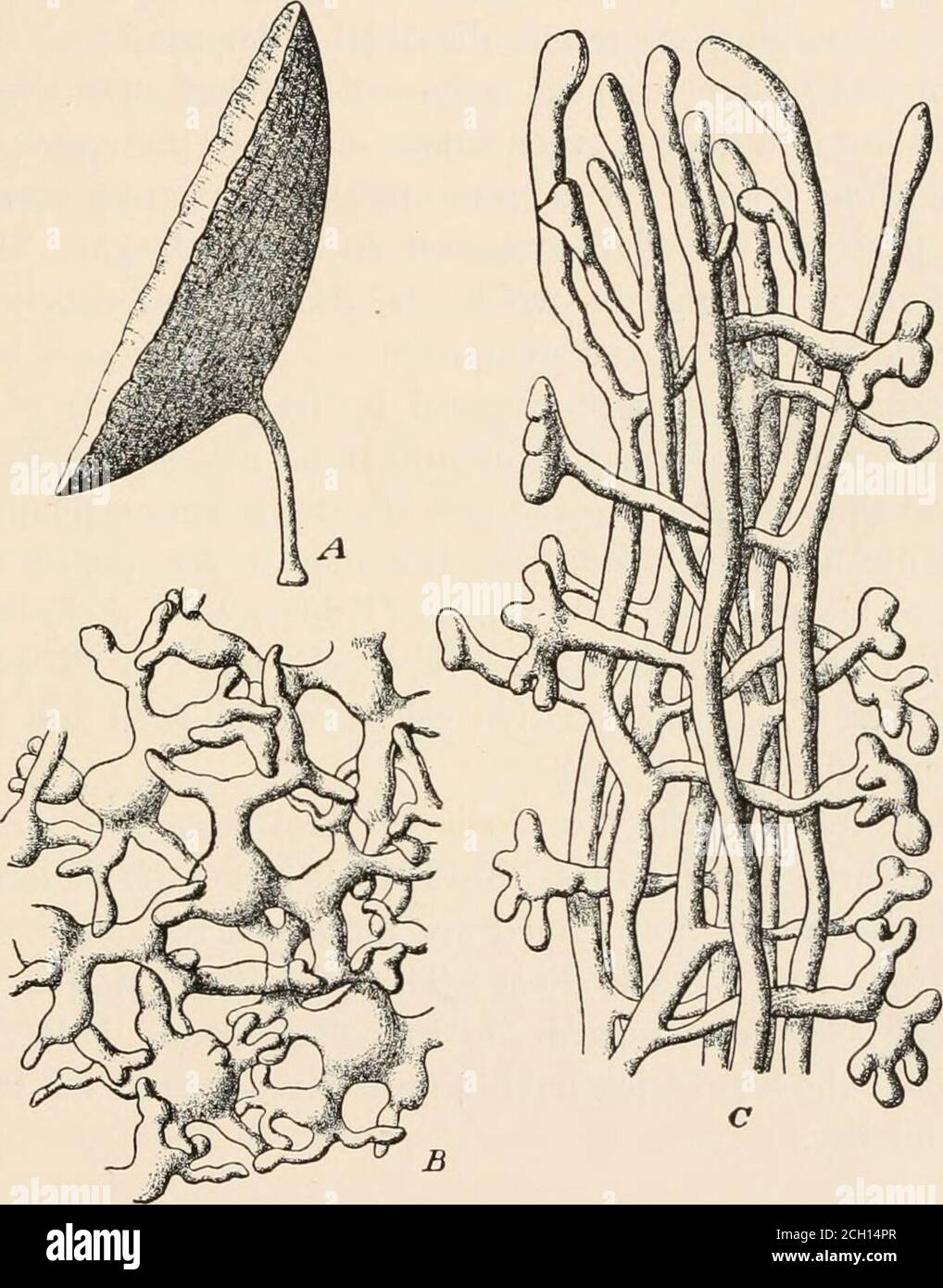 . Algæ. Vol. I. Myxophyceæ, Peridinieæ, Bacillarieæ, Chlorophyceæ, together with a brief summary of the occurrence and distribution of freshwat4er Algæ . e parent-axis. The branching isusually dichotomous, either in one plane or in alternate planes, althoughtrichotomous branching occurs in the basal part of Chlurodesmis comosa, inBoodleopsis, in Tydemania, in Penicillus Sibogw, in the capitulum ofP.dumetosus,&nd in the flabellum of Udotea conglutinata and U. glaucescens; Cofliacese 233 verticillate branching also occurs in Tydemania expeditionis, in Boodleopsisand in the capitulum of both spec Stock Photohttps://www.alamy.com/image-license-details/?v=1https://www.alamy.com/alg-vol-i-myxophyce-peridinie-bacillarie-chlorophyce-together-with-a-brief-summary-of-the-occurrence-and-distribution-of-freshwat4er-alg-e-parent-axis-the-branching-isusually-dichotomous-either-in-one-plane-or-in-alternate-planes-althoughtrichotomous-branching-occurs-in-the-basal-part-of-chlurodesmis-comosa-inboodleopsis-in-tydemania-in-penicillus-sibogw-in-the-capitulum-ofpdumetosusnd-in-the-flabellum-of-udotea-conglutinata-and-u-glaucescens-cofliacese-233-verticillate-branching-also-occurs-in-tydemania-expeditionis-in-boodleopsisand-in-the-capitulum-of-both-spec-image371892607.html
. Algæ. Vol. I. Myxophyceæ, Peridinieæ, Bacillarieæ, Chlorophyceæ, together with a brief summary of the occurrence and distribution of freshwat4er Algæ . e parent-axis. The branching isusually dichotomous, either in one plane or in alternate planes, althoughtrichotomous branching occurs in the basal part of Chlurodesmis comosa, inBoodleopsis, in Tydemania, in Penicillus Sibogw, in the capitulum ofP.dumetosus,&nd in the flabellum of Udotea conglutinata and U. glaucescens; Cofliacese 233 verticillate branching also occurs in Tydemania expeditionis, in Boodleopsisand in the capitulum of both spec Stock Photohttps://www.alamy.com/image-license-details/?v=1https://www.alamy.com/alg-vol-i-myxophyce-peridinie-bacillarie-chlorophyce-together-with-a-brief-summary-of-the-occurrence-and-distribution-of-freshwat4er-alg-e-parent-axis-the-branching-isusually-dichotomous-either-in-one-plane-or-in-alternate-planes-althoughtrichotomous-branching-occurs-in-the-basal-part-of-chlurodesmis-comosa-inboodleopsis-in-tydemania-in-penicillus-sibogw-in-the-capitulum-ofpdumetosusnd-in-the-flabellum-of-udotea-conglutinata-and-u-glaucescens-cofliacese-233-verticillate-branching-also-occurs-in-tydemania-expeditionis-in-boodleopsisand-in-the-capitulum-of-both-spec-image371892607.htmlRM2CH14PR–. Algæ. Vol. I. Myxophyceæ, Peridinieæ, Bacillarieæ, Chlorophyceæ, together with a brief summary of the occurrence and distribution of freshwat4er Algæ . e parent-axis. The branching isusually dichotomous, either in one plane or in alternate planes, althoughtrichotomous branching occurs in the basal part of Chlurodesmis comosa, inBoodleopsis, in Tydemania, in Penicillus Sibogw, in the capitulum ofP.dumetosus,&nd in the flabellum of Udotea conglutinata and U. glaucescens; Cofliacese 233 verticillate branching also occurs in Tydemania expeditionis, in Boodleopsisand in the capitulum of both spec
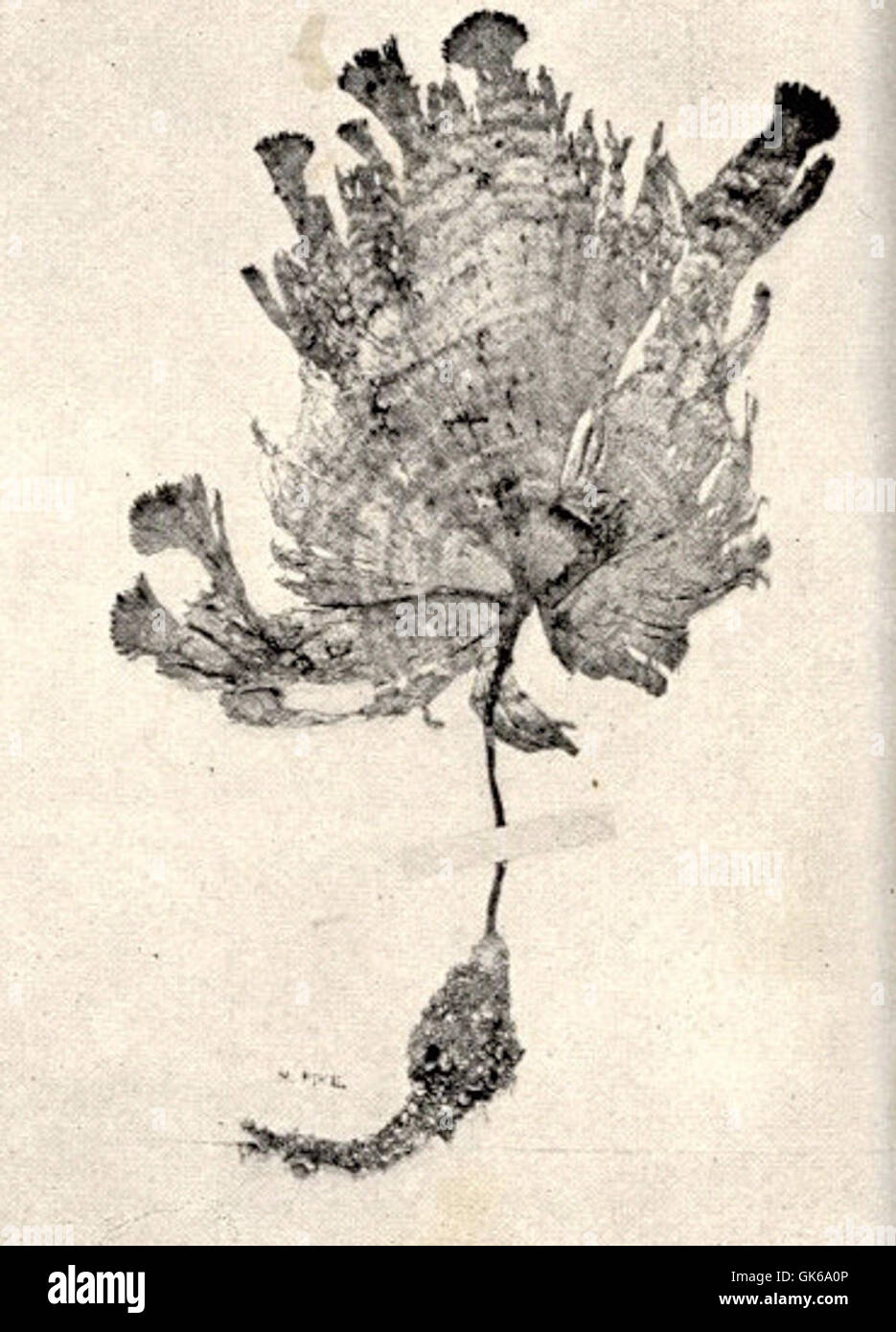 52417 Udotea conglutinata Stock Photohttps://www.alamy.com/image-license-details/?v=1https://www.alamy.com/stock-photo-52417-udotea-conglutinata-115080246.html
52417 Udotea conglutinata Stock Photohttps://www.alamy.com/image-license-details/?v=1https://www.alamy.com/stock-photo-52417-udotea-conglutinata-115080246.htmlRMGK6A0P–52417 Udotea conglutinata
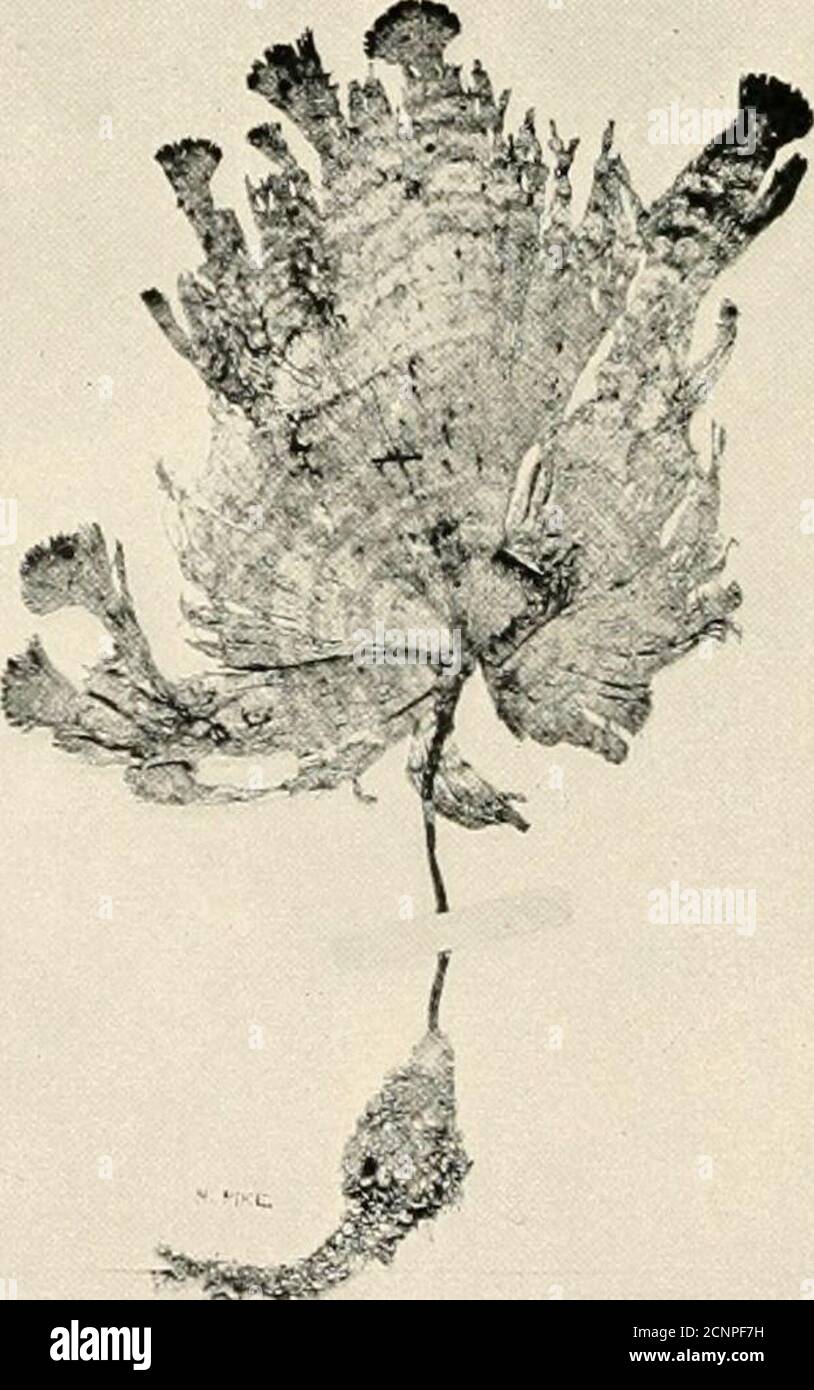 . The sea-beach at ebb-tide : a guide to the study of the seaweeds and the lower animal life found between tidemarks . PLATE VI. Acetabularia crenulataPeuicillus dumeiitosus. Dasycladus occidentalis.Udotea cont>-lutiuata. GRASS-GREEN SEAWEEDS 57 GENUS AnadyoiHciie A. flabellata. Frond composed entirely of brancning filaments,which unite and form an undulating, rigid membranaceous surface, whichseems like a network of veins. The species grows in bunches on shortstems in the fissures of tidal rocks, and at first view resembles youngIIra. It is a very curious and beautiful alga, and should be Stock Photohttps://www.alamy.com/image-license-details/?v=1https://www.alamy.com/the-sea-beach-at-ebb-tide-a-guide-to-the-study-of-the-seaweeds-and-the-lower-animal-life-found-between-tidemarks-plate-vi-acetabularia-crenulatapeuicillus-dumeiitosus-dasycladus-occidentalisudotea-contgt-lutiuata-grass-green-seaweeds-57-genus-anadyoihciie-a-flabellata-frond-composed-entirely-of-brancning-filamentswhich-unite-and-form-an-undulating-rigid-membranaceous-surface-whichseems-like-a-network-of-veins-the-species-grows-in-bunches-on-shortstems-in-the-fissures-of-tidal-rocks-and-at-first-view-resembles-youngiira-it-is-a-very-curious-and-beautiful-alga-and-should-be-image374820421.html
. The sea-beach at ebb-tide : a guide to the study of the seaweeds and the lower animal life found between tidemarks . PLATE VI. Acetabularia crenulataPeuicillus dumeiitosus. Dasycladus occidentalis.Udotea cont>-lutiuata. GRASS-GREEN SEAWEEDS 57 GENUS AnadyoiHciie A. flabellata. Frond composed entirely of brancning filaments,which unite and form an undulating, rigid membranaceous surface, whichseems like a network of veins. The species grows in bunches on shortstems in the fissures of tidal rocks, and at first view resembles youngIIra. It is a very curious and beautiful alga, and should be Stock Photohttps://www.alamy.com/image-license-details/?v=1https://www.alamy.com/the-sea-beach-at-ebb-tide-a-guide-to-the-study-of-the-seaweeds-and-the-lower-animal-life-found-between-tidemarks-plate-vi-acetabularia-crenulatapeuicillus-dumeiitosus-dasycladus-occidentalisudotea-contgt-lutiuata-grass-green-seaweeds-57-genus-anadyoihciie-a-flabellata-frond-composed-entirely-of-brancning-filamentswhich-unite-and-form-an-undulating-rigid-membranaceous-surface-whichseems-like-a-network-of-veins-the-species-grows-in-bunches-on-shortstems-in-the-fissures-of-tidal-rocks-and-at-first-view-resembles-youngiira-it-is-a-very-curious-and-beautiful-alga-and-should-be-image374820421.htmlRM2CNPF7H–. The sea-beach at ebb-tide : a guide to the study of the seaweeds and the lower animal life found between tidemarks . PLATE VI. Acetabularia crenulataPeuicillus dumeiitosus. Dasycladus occidentalis.Udotea cont>-lutiuata. GRASS-GREEN SEAWEEDS 57 GENUS AnadyoiHciie A. flabellata. Frond composed entirely of brancning filaments,which unite and form an undulating, rigid membranaceous surface, whichseems like a network of veins. The species grows in bunches on shortstems in the fissures of tidal rocks, and at first view resembles youngIIra. It is a very curious and beautiful alga, and should be
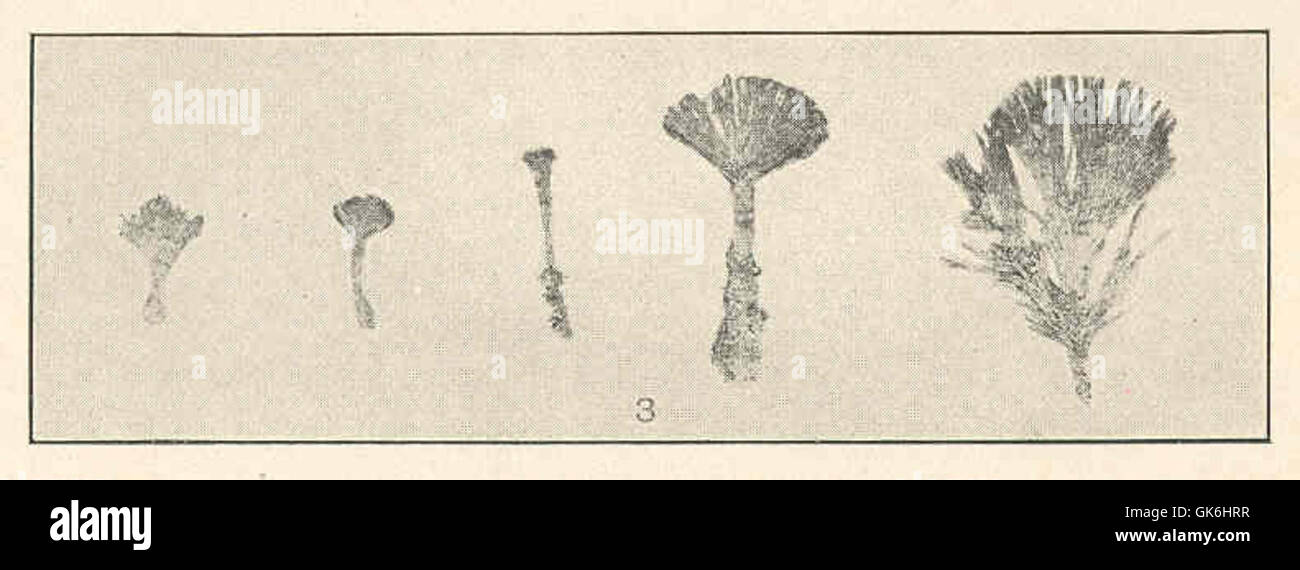 38394 Udotea cyathiformis Stock Photohttps://www.alamy.com/image-license-details/?v=1https://www.alamy.com/stock-photo-38394-udotea-cyathiformis-115086379.html
38394 Udotea cyathiformis Stock Photohttps://www.alamy.com/image-license-details/?v=1https://www.alamy.com/stock-photo-38394-udotea-cyathiformis-115086379.htmlRMGK6HRR–38394 Udotea cyathiformis
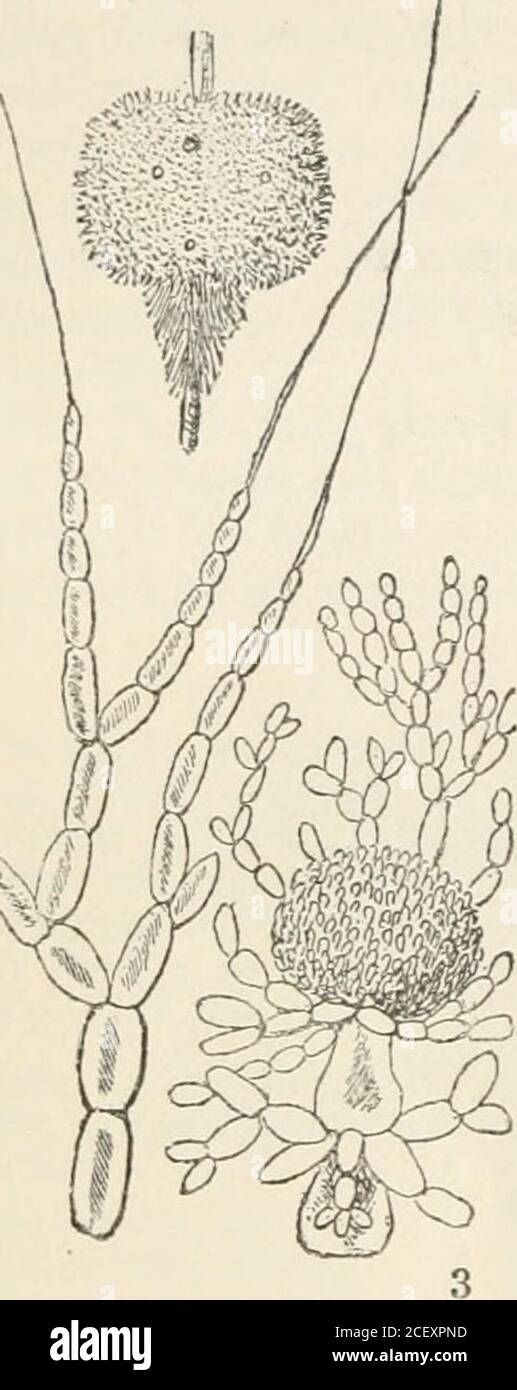 . The vegetable kingdom : or, The structure, classification, and uses of plants, illustrated upon the natural system. -diating or flahelliformbranches at the end; thebranches continuous, se-parate, or combined. Poh-phisa, Lamx.Acetabularia, Lamx. Acetabulum, Tourn. Callopilophoruin,Don. Olivia, Bert.Rhipidosiphon, Mont. Tribe 3. Halymedidse.—Frond poli/siphonous,made up of tubes whichare continuous or joint-ed, and branched more orless denseli/. Udotea, Lamx. Flabellaria, Link. Rhipozonium, Kiitz.Avraim-illaea, Dec.Halymeda, Lamx.Penicillus, Lamx. Nesea, Lamx. CoraUiodendron, Ktz.Espera, Dec.A Stock Photohttps://www.alamy.com/image-license-details/?v=1https://www.alamy.com/the-vegetable-kingdom-or-the-structure-classification-and-uses-of-plants-illustrated-upon-the-natural-system-diating-or-flahelliformbranches-at-the-end-thebranches-continuous-se-parate-or-combined-poh-phisa-lamxacetabularia-lamx-acetabulum-tourn-callopilophoruindon-olivia-bertrhipidosiphon-mont-tribe-3-halymedidsefrond-polisiphonousmade-up-of-tubes-whichare-continuous-or-joint-ed-and-branched-more-orless-denseli-udotea-lamx-flabellaria-link-rhipozonium-kiitzavraim-illaea-dechalymeda-lamxpenicillus-lamx-nesea-lamx-corauiodendron-ktzespera-deca-image370611513.html
. The vegetable kingdom : or, The structure, classification, and uses of plants, illustrated upon the natural system. -diating or flahelliformbranches at the end; thebranches continuous, se-parate, or combined. Poh-phisa, Lamx.Acetabularia, Lamx. Acetabulum, Tourn. Callopilophoruin,Don. Olivia, Bert.Rhipidosiphon, Mont. Tribe 3. Halymedidse.—Frond poli/siphonous,made up of tubes whichare continuous or joint-ed, and branched more orless denseli/. Udotea, Lamx. Flabellaria, Link. Rhipozonium, Kiitz.Avraim-illaea, Dec.Halymeda, Lamx.Penicillus, Lamx. Nesea, Lamx. CoraUiodendron, Ktz.Espera, Dec.A Stock Photohttps://www.alamy.com/image-license-details/?v=1https://www.alamy.com/the-vegetable-kingdom-or-the-structure-classification-and-uses-of-plants-illustrated-upon-the-natural-system-diating-or-flahelliformbranches-at-the-end-thebranches-continuous-se-parate-or-combined-poh-phisa-lamxacetabularia-lamx-acetabulum-tourn-callopilophoruindon-olivia-bertrhipidosiphon-mont-tribe-3-halymedidsefrond-polisiphonousmade-up-of-tubes-whichare-continuous-or-joint-ed-and-branched-more-orless-denseli-udotea-lamx-flabellaria-link-rhipozonium-kiitzavraim-illaea-dechalymeda-lamxpenicillus-lamx-nesea-lamx-corauiodendron-ktzespera-deca-image370611513.htmlRM2CEXPND–. The vegetable kingdom : or, The structure, classification, and uses of plants, illustrated upon the natural system. -diating or flahelliformbranches at the end; thebranches continuous, se-parate, or combined. Poh-phisa, Lamx.Acetabularia, Lamx. Acetabulum, Tourn. Callopilophoruin,Don. Olivia, Bert.Rhipidosiphon, Mont. Tribe 3. Halymedidse.—Frond poli/siphonous,made up of tubes whichare continuous or joint-ed, and branched more orless denseli/. Udotea, Lamx. Flabellaria, Link. Rhipozonium, Kiitz.Avraim-illaea, Dec.Halymeda, Lamx.Penicillus, Lamx. Nesea, Lamx. CoraUiodendron, Ktz.Espera, Dec.A
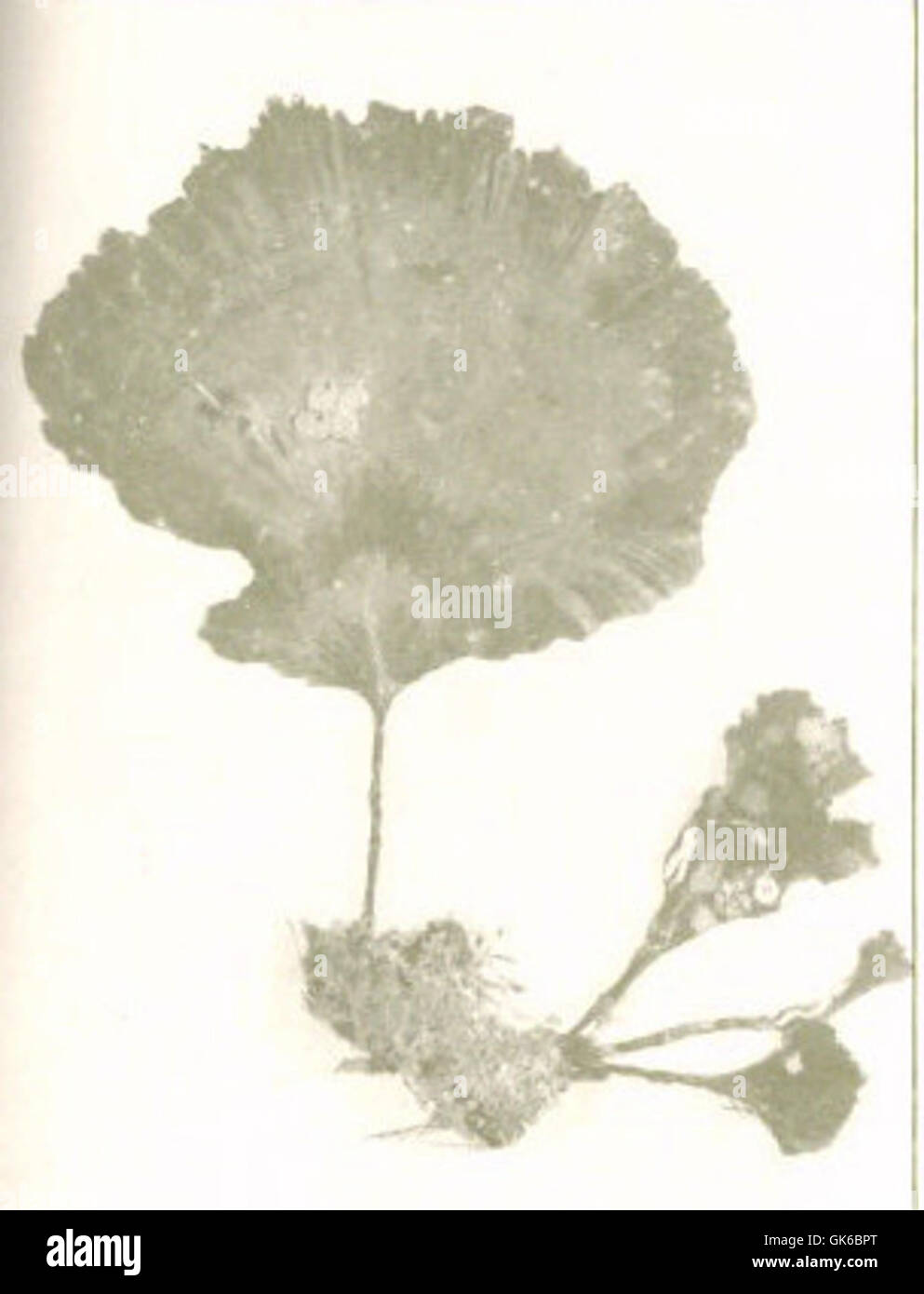 53580 Chlorophycees (Algues vertes) Siphonees, Udotea Desfontainii (Lamour) Decn Stock Photohttps://www.alamy.com/image-license-details/?v=1https://www.alamy.com/stock-photo-53580-chlorophycees-algues-vertes-siphonees-udotea-desfontainii-lamour-115081648.html
53580 Chlorophycees (Algues vertes) Siphonees, Udotea Desfontainii (Lamour) Decn Stock Photohttps://www.alamy.com/image-license-details/?v=1https://www.alamy.com/stock-photo-53580-chlorophycees-algues-vertes-siphonees-udotea-desfontainii-lamour-115081648.htmlRMGK6BPT–53580 Chlorophycees (Algues vertes) Siphonees, Udotea Desfontainii (Lamour) Decn
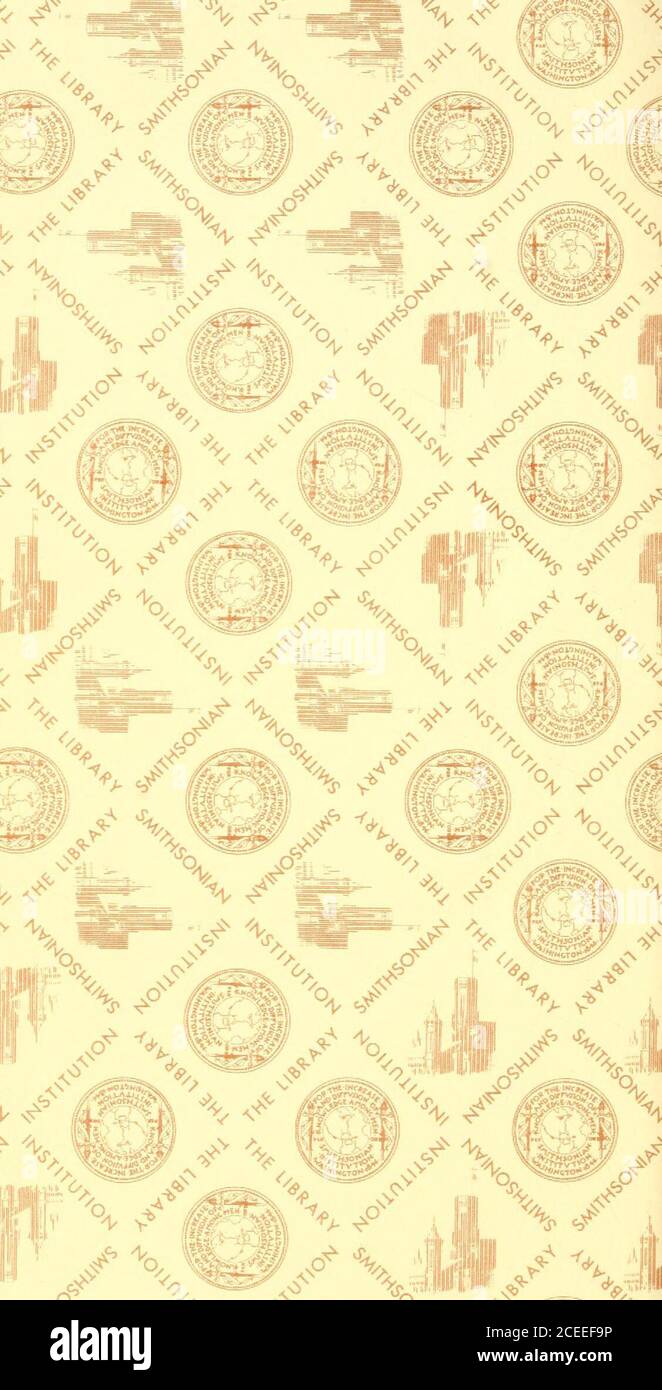 . Das Thierreich, geordnet nach seiner Organisation : als Grundlage der Naturgeschichte der Thiere und Einleitung in die vergleichende Anatomie. thia 444 Tricelis 121 Trichina 90 Trichocephalu» 91 Trichocerca 420 Trichoda 459 Trichodina 454 Trichodiscus 459 Trichosoma 92 Trichuris 91 Tricuspidaria 128 Triloculina 416 Trionychium 430 Triophthalmus 445 Tristoma 118 Tropisurus 90 Truncatulina 408 Tubicolaria 420. 446 Tubipora 244. 266 Tubuiaria Ren. 104 Tubularia 244. 252.285 Tubulipora 249. 377 Turban 37 Turbellaria 121 Turbinalia 238 Turbinaria 305 Typhlina 437 Typhloplanaria 121 u. Udotea 251 Stock Photohttps://www.alamy.com/image-license-details/?v=1https://www.alamy.com/das-thierreich-geordnet-nach-seiner-organisation-als-grundlage-der-naturgeschichte-der-thiere-und-einleitung-in-die-vergleichende-anatomie-thia-444-tricelis-121-trichina-90-trichocephalu-91-trichocerca-420-trichoda-459-trichodina-454-trichodiscus-459-trichosoma-92-trichuris-91-tricuspidaria-128-triloculina-416-trionychium-430-triophthalmus-445-tristoma-118-tropisurus-90-truncatulina-408-tubicolaria-420-446-tubipora-244-266-tubuiaria-ren-104-tubularia-244-252285-tubulipora-249-377-turban-37-turbellaria-121-turbinalia-238-turbinaria-305-typhlina-437-typhloplanaria-121-u-udotea-251-image370342274.html
. Das Thierreich, geordnet nach seiner Organisation : als Grundlage der Naturgeschichte der Thiere und Einleitung in die vergleichende Anatomie. thia 444 Tricelis 121 Trichina 90 Trichocephalu» 91 Trichocerca 420 Trichoda 459 Trichodina 454 Trichodiscus 459 Trichosoma 92 Trichuris 91 Tricuspidaria 128 Triloculina 416 Trionychium 430 Triophthalmus 445 Tristoma 118 Tropisurus 90 Truncatulina 408 Tubicolaria 420. 446 Tubipora 244. 266 Tubuiaria Ren. 104 Tubularia 244. 252.285 Tubulipora 249. 377 Turban 37 Turbellaria 121 Turbinalia 238 Turbinaria 305 Typhlina 437 Typhloplanaria 121 u. Udotea 251 Stock Photohttps://www.alamy.com/image-license-details/?v=1https://www.alamy.com/das-thierreich-geordnet-nach-seiner-organisation-als-grundlage-der-naturgeschichte-der-thiere-und-einleitung-in-die-vergleichende-anatomie-thia-444-tricelis-121-trichina-90-trichocephalu-91-trichocerca-420-trichoda-459-trichodina-454-trichodiscus-459-trichosoma-92-trichuris-91-tricuspidaria-128-triloculina-416-trionychium-430-triophthalmus-445-tristoma-118-tropisurus-90-truncatulina-408-tubicolaria-420-446-tubipora-244-266-tubuiaria-ren-104-tubularia-244-252285-tubulipora-249-377-turban-37-turbellaria-121-turbinalia-238-turbinaria-305-typhlina-437-typhloplanaria-121-u-udotea-251-image370342274.htmlRM2CEEF9P–. Das Thierreich, geordnet nach seiner Organisation : als Grundlage der Naturgeschichte der Thiere und Einleitung in die vergleichende Anatomie. thia 444 Tricelis 121 Trichina 90 Trichocephalu» 91 Trichocerca 420 Trichoda 459 Trichodina 454 Trichodiscus 459 Trichosoma 92 Trichuris 91 Tricuspidaria 128 Triloculina 416 Trionychium 430 Triophthalmus 445 Tristoma 118 Tropisurus 90 Truncatulina 408 Tubicolaria 420. 446 Tubipora 244. 266 Tubuiaria Ren. 104 Tubularia 244. 252.285 Tubulipora 249. 377 Turban 37 Turbellaria 121 Turbinalia 238 Turbinaria 305 Typhlina 437 Typhloplanaria 121 u. Udotea 251
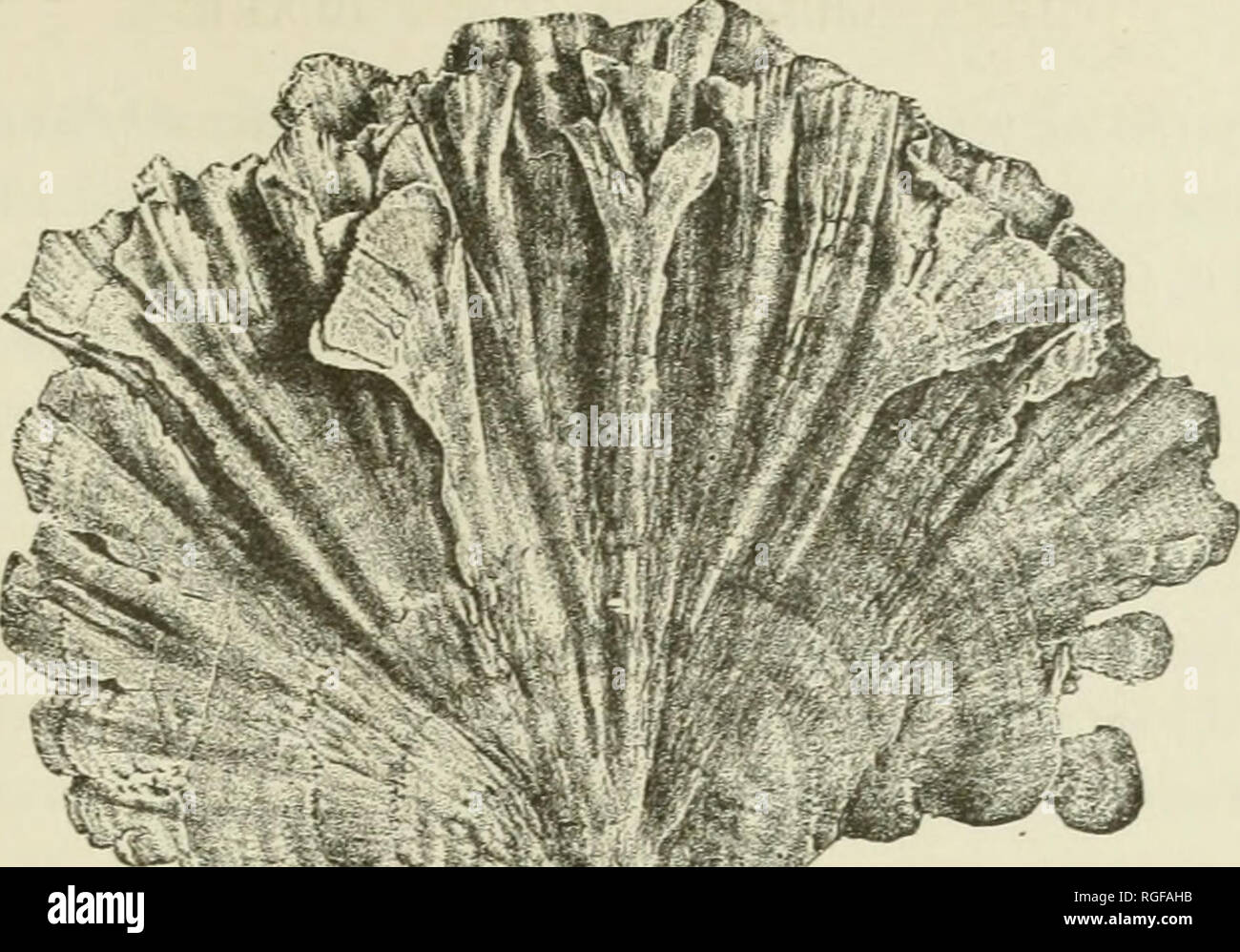 . Bulletin of the Museum of Comparative Zoology at Harvard College. Zoology; Zoology. Fig. 49. — UDOTEA FLABELXATA. (AoAasiz.). Please note that these images are extracted from scanned page images that may have been digitally enhanced for readability - coloration and appearance of these illustrations may not perfectly resemble the original work.. Harvard University. Museum of Comparative Zoology. Cambridge, Mass. : The Museum Stock Photohttps://www.alamy.com/image-license-details/?v=1https://www.alamy.com/bulletin-of-the-museum-of-comparative-zoology-at-harvard-college-zoology-zoology-fig-49-udotea-flabelxata-aoaasiz-please-note-that-these-images-are-extracted-from-scanned-page-images-that-may-have-been-digitally-enhanced-for-readability-coloration-and-appearance-of-these-illustrations-may-not-perfectly-resemble-the-original-work-harvard-university-museum-of-comparative-zoology-cambridge-mass-the-museum-image233906887.html
. Bulletin of the Museum of Comparative Zoology at Harvard College. Zoology; Zoology. Fig. 49. — UDOTEA FLABELXATA. (AoAasiz.). Please note that these images are extracted from scanned page images that may have been digitally enhanced for readability - coloration and appearance of these illustrations may not perfectly resemble the original work.. Harvard University. Museum of Comparative Zoology. Cambridge, Mass. : The Museum Stock Photohttps://www.alamy.com/image-license-details/?v=1https://www.alamy.com/bulletin-of-the-museum-of-comparative-zoology-at-harvard-college-zoology-zoology-fig-49-udotea-flabelxata-aoaasiz-please-note-that-these-images-are-extracted-from-scanned-page-images-that-may-have-been-digitally-enhanced-for-readability-coloration-and-appearance-of-these-illustrations-may-not-perfectly-resemble-the-original-work-harvard-university-museum-of-comparative-zoology-cambridge-mass-the-museum-image233906887.htmlRMRGFAHB–. Bulletin of the Museum of Comparative Zoology at Harvard College. Zoology; Zoology. Fig. 49. — UDOTEA FLABELXATA. (AoAasiz.). Please note that these images are extracted from scanned page images that may have been digitally enhanced for readability - coloration and appearance of these illustrations may not perfectly resemble the original work.. Harvard University. Museum of Comparative Zoology. Cambridge, Mass. : The Museum
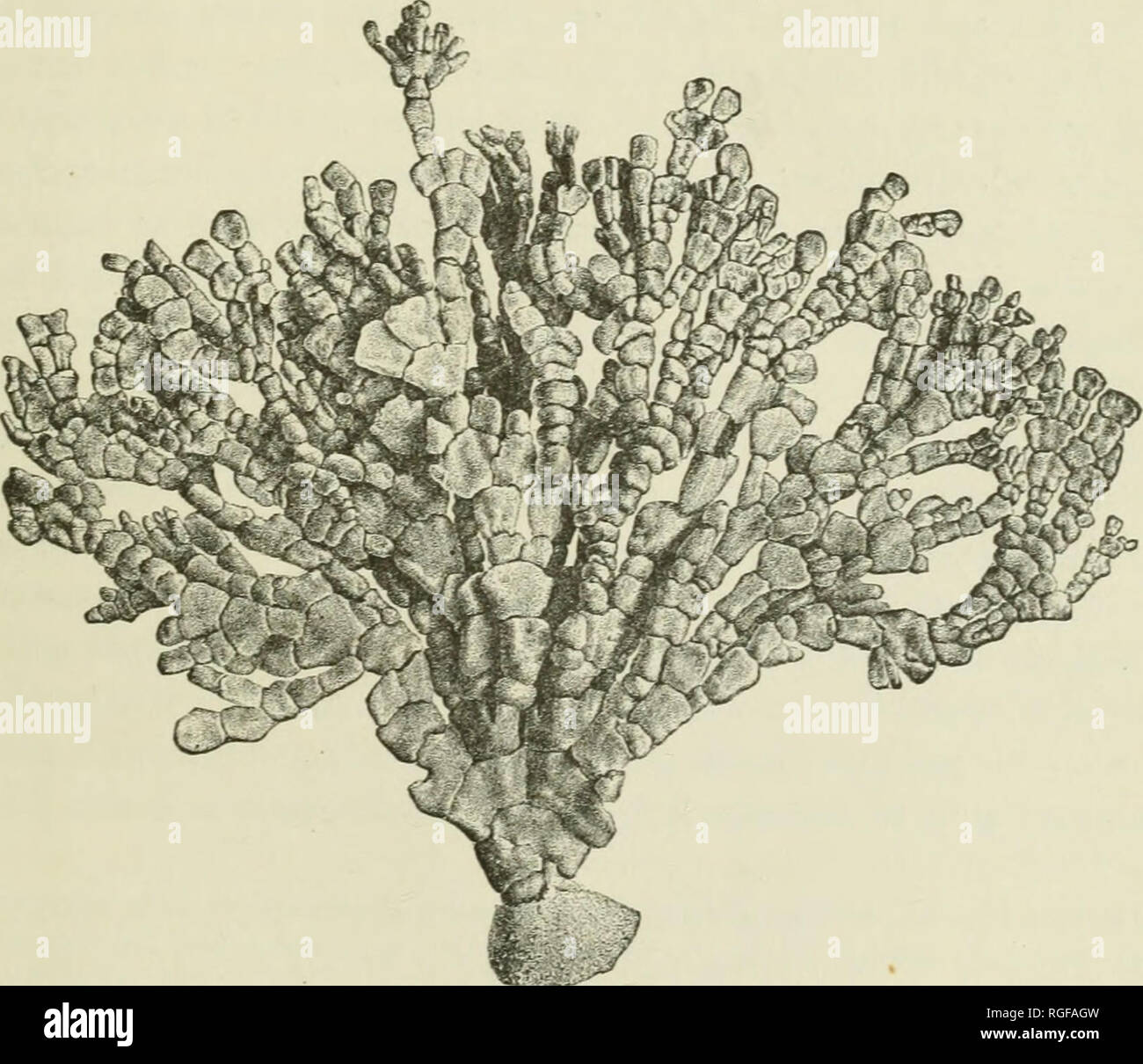 . Bulletin of the Museum of Comparative Zoology at Harvard College. Zoology; Zoology. Fig. 49. — UDOTEA FLABELXATA. (AoAasiz.). Fio. 50. — HALIMEDA TRIDENS. (Agassiz.). Please note that these images are extracted from scanned page images that may have been digitally enhanced for readability - coloration and appearance of these illustrations may not perfectly resemble the original work.. Harvard University. Museum of Comparative Zoology. Cambridge, Mass. : The Museum Stock Photohttps://www.alamy.com/image-license-details/?v=1https://www.alamy.com/bulletin-of-the-museum-of-comparative-zoology-at-harvard-college-zoology-zoology-fig-49-udotea-flabelxata-aoaasiz-fio-50-halimeda-tridens-agassiz-please-note-that-these-images-are-extracted-from-scanned-page-images-that-may-have-been-digitally-enhanced-for-readability-coloration-and-appearance-of-these-illustrations-may-not-perfectly-resemble-the-original-work-harvard-university-museum-of-comparative-zoology-cambridge-mass-the-museum-image233906873.html
. Bulletin of the Museum of Comparative Zoology at Harvard College. Zoology; Zoology. Fig. 49. — UDOTEA FLABELXATA. (AoAasiz.). Fio. 50. — HALIMEDA TRIDENS. (Agassiz.). Please note that these images are extracted from scanned page images that may have been digitally enhanced for readability - coloration and appearance of these illustrations may not perfectly resemble the original work.. Harvard University. Museum of Comparative Zoology. Cambridge, Mass. : The Museum Stock Photohttps://www.alamy.com/image-license-details/?v=1https://www.alamy.com/bulletin-of-the-museum-of-comparative-zoology-at-harvard-college-zoology-zoology-fig-49-udotea-flabelxata-aoaasiz-fio-50-halimeda-tridens-agassiz-please-note-that-these-images-are-extracted-from-scanned-page-images-that-may-have-been-digitally-enhanced-for-readability-coloration-and-appearance-of-these-illustrations-may-not-perfectly-resemble-the-original-work-harvard-university-museum-of-comparative-zoology-cambridge-mass-the-museum-image233906873.htmlRMRGFAGW–. Bulletin of the Museum of Comparative Zoology at Harvard College. Zoology; Zoology. Fig. 49. — UDOTEA FLABELXATA. (AoAasiz.). Fio. 50. — HALIMEDA TRIDENS. (Agassiz.). Please note that these images are extracted from scanned page images that may have been digitally enhanced for readability - coloration and appearance of these illustrations may not perfectly resemble the original work.. Harvard University. Museum of Comparative Zoology. Cambridge, Mass. : The Museum
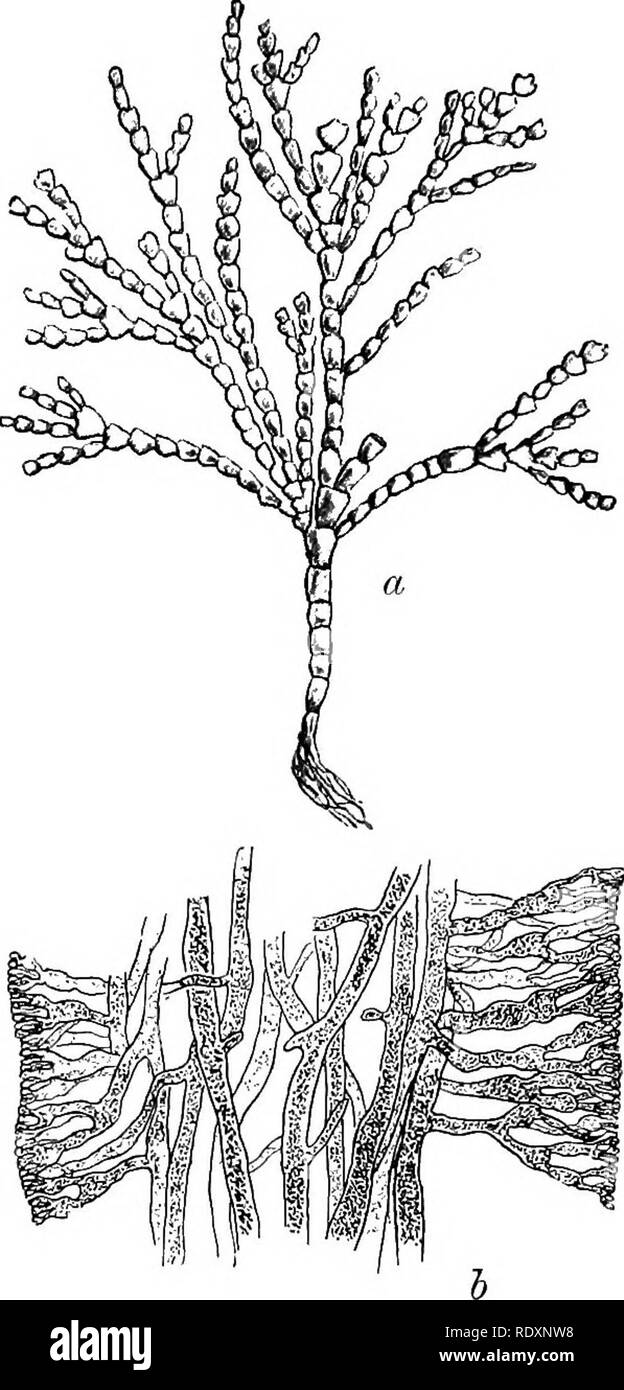 . An introduction to the study of seaweeds. Algae. CHLOROPHYCE^ 143. Fig. 41.—a. Halimeda monilis half natural size; h, the same in longitudinal section highly magnified. Callipsygjna is a genus of which only an imperfect description has been published. It appears to be related to Avrainvillea and Udotea. A fossil Alga of Devonian Age, Nematophycus, has. Please note that these images are extracted from scanned page images that may have been digitally enhanced for readability - coloration and appearance of these illustrations may not perfectly resemble the original work.. Murray, George Robert Stock Photohttps://www.alamy.com/image-license-details/?v=1https://www.alamy.com/an-introduction-to-the-study-of-seaweeds-algae-chlorophyce-143-fig-41a-halimeda-monilis-half-natural-size-h-the-same-in-longitudinal-section-highly-magnified-callipsygjna-is-a-genus-of-which-only-an-imperfect-description-has-been-published-it-appears-to-be-related-to-avrainvillea-and-udotea-a-fossil-alga-of-devonian-age-nematophycus-has-please-note-that-these-images-are-extracted-from-scanned-page-images-that-may-have-been-digitally-enhanced-for-readability-coloration-and-appearance-of-these-illustrations-may-not-perfectly-resemble-the-original-work-murray-george-robert-image232313236.html
. An introduction to the study of seaweeds. Algae. CHLOROPHYCE^ 143. Fig. 41.—a. Halimeda monilis half natural size; h, the same in longitudinal section highly magnified. Callipsygjna is a genus of which only an imperfect description has been published. It appears to be related to Avrainvillea and Udotea. A fossil Alga of Devonian Age, Nematophycus, has. Please note that these images are extracted from scanned page images that may have been digitally enhanced for readability - coloration and appearance of these illustrations may not perfectly resemble the original work.. Murray, George Robert Stock Photohttps://www.alamy.com/image-license-details/?v=1https://www.alamy.com/an-introduction-to-the-study-of-seaweeds-algae-chlorophyce-143-fig-41a-halimeda-monilis-half-natural-size-h-the-same-in-longitudinal-section-highly-magnified-callipsygjna-is-a-genus-of-which-only-an-imperfect-description-has-been-published-it-appears-to-be-related-to-avrainvillea-and-udotea-a-fossil-alga-of-devonian-age-nematophycus-has-please-note-that-these-images-are-extracted-from-scanned-page-images-that-may-have-been-digitally-enhanced-for-readability-coloration-and-appearance-of-these-illustrations-may-not-perfectly-resemble-the-original-work-murray-george-robert-image232313236.htmlRMRDXNW8–. An introduction to the study of seaweeds. Algae. CHLOROPHYCE^ 143. Fig. 41.—a. Halimeda monilis half natural size; h, the same in longitudinal section highly magnified. Callipsygjna is a genus of which only an imperfect description has been published. It appears to be related to Avrainvillea and Udotea. A fossil Alga of Devonian Age, Nematophycus, has. Please note that these images are extracted from scanned page images that may have been digitally enhanced for readability - coloration and appearance of these illustrations may not perfectly resemble the original work.. Murray, George Robert
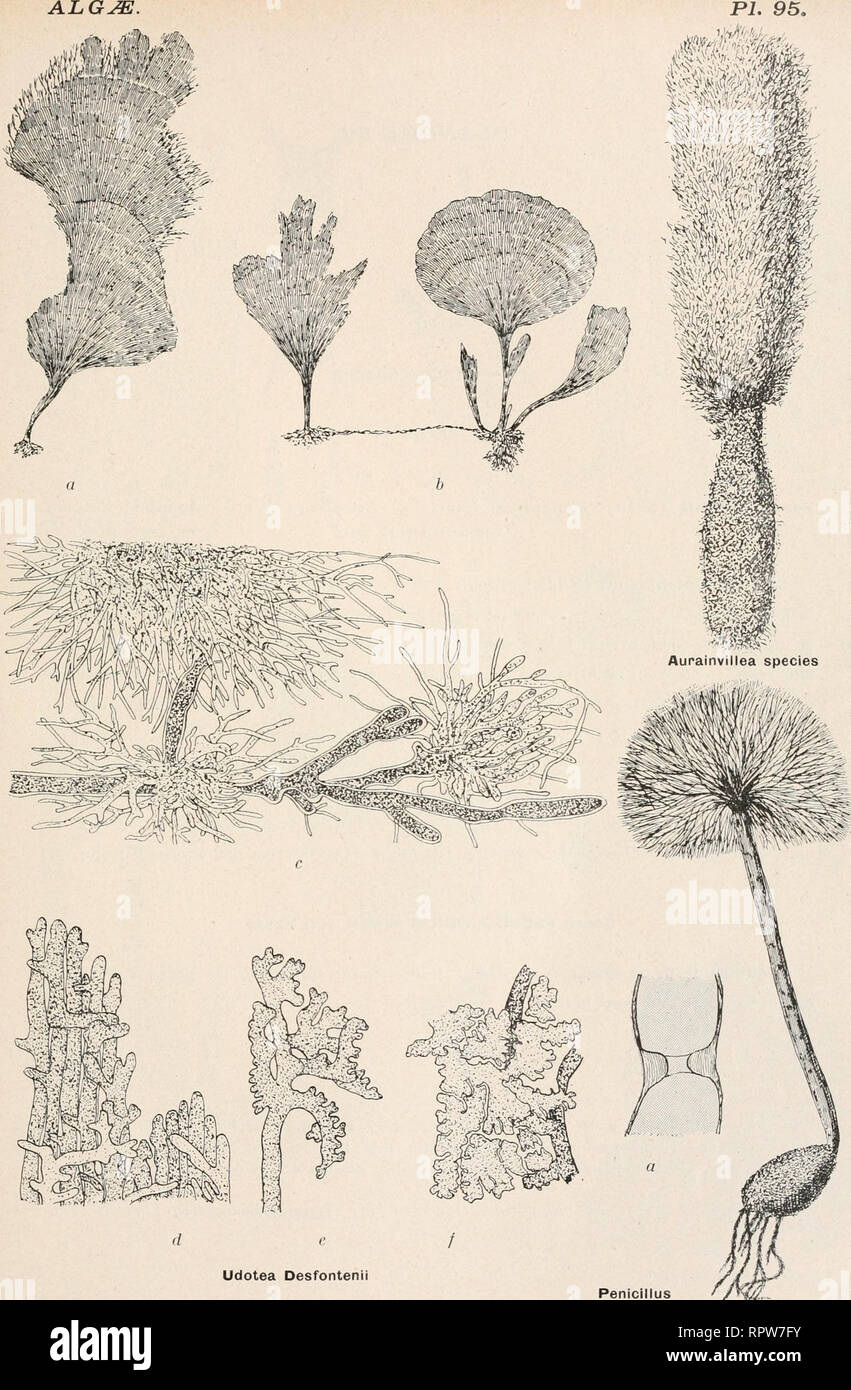 . Album général des diatomées marines, d'eau douce ou fossiles : album représentant tous les genres de diatomées et leurs principales espèces. Diatoms. PL 95.. d e Udotea Desfontenii VI. CHLOROPHYCE^l Penicillus capitatus /" b 5. Siphonales c. — i;i.. Please note that these images are extracted from scanned page images that may have been digitally enhanced for readability - coloration and appearance of these illustrations may not perfectly resemble the original work.. Coupin, Henri, b. 1868. Paris : H. Coupin Stock Photohttps://www.alamy.com/image-license-details/?v=1https://www.alamy.com/album-gnral-des-diatomes-marines-deau-douce-ou-fossiles-album-reprsentant-tous-les-genres-de-diatomes-et-leurs-principales-espces-diatoms-pl-95-d-e-udotea-desfontenii-vi-chlorophycel-penicillus-capitatus-quot-b-5-siphonales-c-ii-please-note-that-these-images-are-extracted-from-scanned-page-images-that-may-have-been-digitally-enhanced-for-readability-coloration-and-appearance-of-these-illustrations-may-not-perfectly-resemble-the-original-work-coupin-henri-b-1868-paris-h-coupin-image237811951.html
. Album général des diatomées marines, d'eau douce ou fossiles : album représentant tous les genres de diatomées et leurs principales espèces. Diatoms. PL 95.. d e Udotea Desfontenii VI. CHLOROPHYCE^l Penicillus capitatus /" b 5. Siphonales c. — i;i.. Please note that these images are extracted from scanned page images that may have been digitally enhanced for readability - coloration and appearance of these illustrations may not perfectly resemble the original work.. Coupin, Henri, b. 1868. Paris : H. Coupin Stock Photohttps://www.alamy.com/image-license-details/?v=1https://www.alamy.com/album-gnral-des-diatomes-marines-deau-douce-ou-fossiles-album-reprsentant-tous-les-genres-de-diatomes-et-leurs-principales-espces-diatoms-pl-95-d-e-udotea-desfontenii-vi-chlorophycel-penicillus-capitatus-quot-b-5-siphonales-c-ii-please-note-that-these-images-are-extracted-from-scanned-page-images-that-may-have-been-digitally-enhanced-for-readability-coloration-and-appearance-of-these-illustrations-may-not-perfectly-resemble-the-original-work-coupin-henri-b-1868-paris-h-coupin-image237811951.htmlRMRPW7FY–. Album général des diatomées marines, d'eau douce ou fossiles : album représentant tous les genres de diatomées et leurs principales espèces. Diatoms. PL 95.. d e Udotea Desfontenii VI. CHLOROPHYCE^l Penicillus capitatus /" b 5. Siphonales c. — i;i.. Please note that these images are extracted from scanned page images that may have been digitally enhanced for readability - coloration and appearance of these illustrations may not perfectly resemble the original work.. Coupin, Henri, b. 1868. Paris : H. Coupin
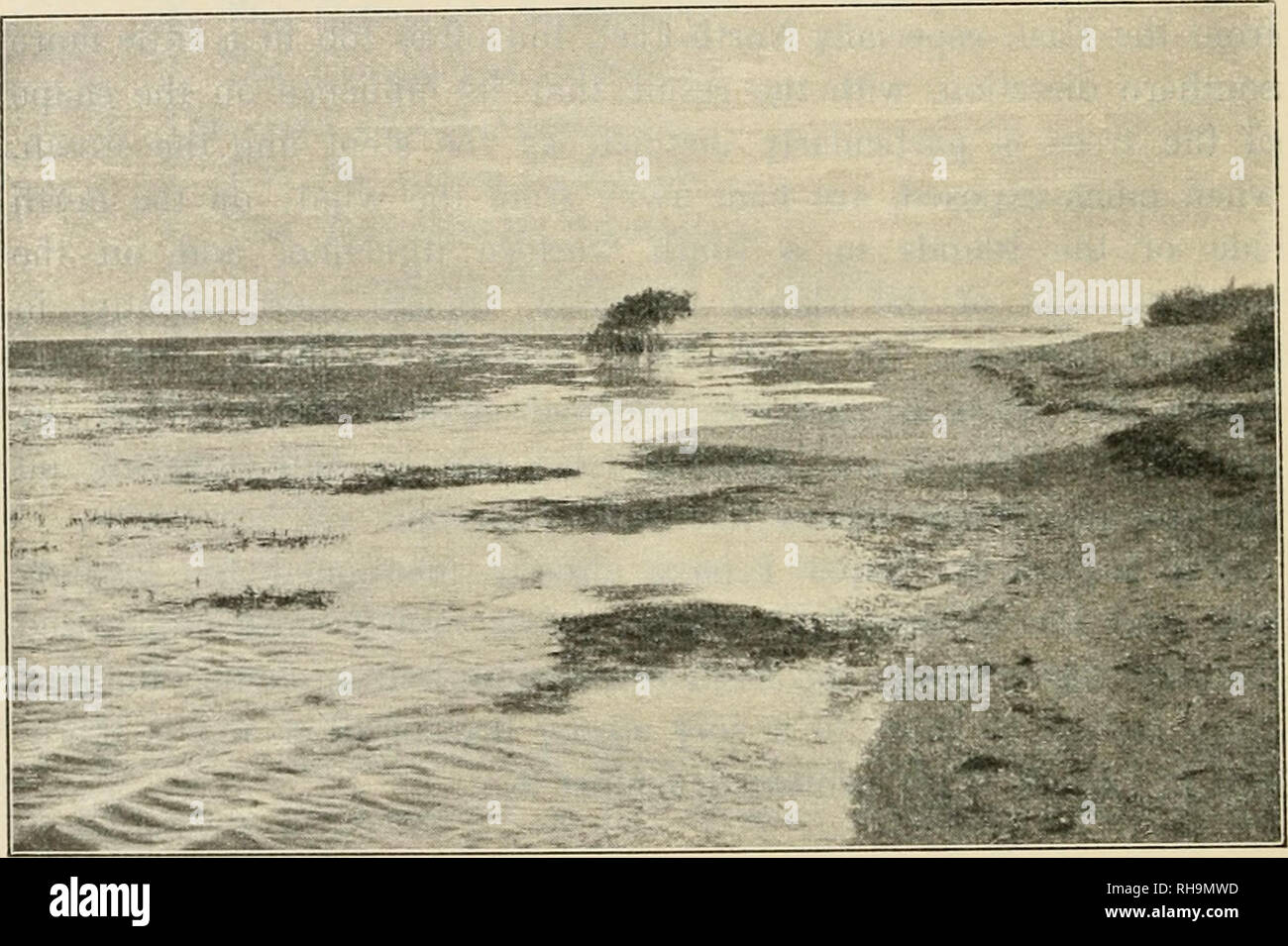 . Botanisk tidsskrift. Plants; Plants -- Denmark. — 204 — a new species, which he has called Halophila Aschersonii^) yet closely related to H. Engelmanni, which is known from Florida. A good many algae are growing in connection with these Phanerogams, partly creeping species belonging to the genus Can- lerpa, in their mode of growth imitating the sea-phanerogams, partly species belonging to the genera Penicillus, Udotea and Halimeda, which by means of numerous fine rhizoids growing out from the base of the stem-like part of the thallus, are fastened into the mud and the sand. Both these peculi Stock Photohttps://www.alamy.com/image-license-details/?v=1https://www.alamy.com/botanisk-tidsskrift-plants-plants-denmark-204-a-new-species-which-he-has-called-halophila-aschersonii-yet-closely-related-to-h-engelmanni-which-is-known-from-florida-a-good-many-algae-are-growing-in-connection-with-these-phanerogams-partly-creeping-species-belonging-to-the-genus-can-lerpa-in-their-mode-of-growth-imitating-the-sea-phanerogams-partly-species-belonging-to-the-genera-penicillus-udotea-and-halimeda-which-by-means-of-numerous-fine-rhizoids-growing-out-from-the-base-of-the-stem-like-part-of-the-thallus-are-fastened-into-the-mud-and-the-sand-both-these-peculi-image234397897.html
. Botanisk tidsskrift. Plants; Plants -- Denmark. — 204 — a new species, which he has called Halophila Aschersonii^) yet closely related to H. Engelmanni, which is known from Florida. A good many algae are growing in connection with these Phanerogams, partly creeping species belonging to the genus Can- lerpa, in their mode of growth imitating the sea-phanerogams, partly species belonging to the genera Penicillus, Udotea and Halimeda, which by means of numerous fine rhizoids growing out from the base of the stem-like part of the thallus, are fastened into the mud and the sand. Both these peculi Stock Photohttps://www.alamy.com/image-license-details/?v=1https://www.alamy.com/botanisk-tidsskrift-plants-plants-denmark-204-a-new-species-which-he-has-called-halophila-aschersonii-yet-closely-related-to-h-engelmanni-which-is-known-from-florida-a-good-many-algae-are-growing-in-connection-with-these-phanerogams-partly-creeping-species-belonging-to-the-genus-can-lerpa-in-their-mode-of-growth-imitating-the-sea-phanerogams-partly-species-belonging-to-the-genera-penicillus-udotea-and-halimeda-which-by-means-of-numerous-fine-rhizoids-growing-out-from-the-base-of-the-stem-like-part-of-the-thallus-are-fastened-into-the-mud-and-the-sand-both-these-peculi-image234397897.htmlRMRH9MWD–. Botanisk tidsskrift. Plants; Plants -- Denmark. — 204 — a new species, which he has called Halophila Aschersonii^) yet closely related to H. Engelmanni, which is known from Florida. A good many algae are growing in connection with these Phanerogams, partly creeping species belonging to the genus Can- lerpa, in their mode of growth imitating the sea-phanerogams, partly species belonging to the genera Penicillus, Udotea and Halimeda, which by means of numerous fine rhizoids growing out from the base of the stem-like part of the thallus, are fastened into the mud and the sand. Both these peculi
![. The Earth beneath the sea : History. Ocean bottom; Marine geophysics. SECT. 3] SHALLOW-WATER CARBONATE SEDIMENTS 655 The importance of the nature of the skeleton in determining the character of the sediments has long been recognized. Sorby (1879, p. 70) was, perhaps, the first to emphasize the need for considerations that transcend phyletic. Fig. 1. Representative sheaths and spicules. A. Green and red algae that have fragile sheaths of calcium carbonate. Left to right: Galaxaura sp., Udotea sp., three specimens of Penicillus sp. and Ehipocephalus sp. B. Negative print of a thin section of P Stock Photo . The Earth beneath the sea : History. Ocean bottom; Marine geophysics. SECT. 3] SHALLOW-WATER CARBONATE SEDIMENTS 655 The importance of the nature of the skeleton in determining the character of the sediments has long been recognized. Sorby (1879, p. 70) was, perhaps, the first to emphasize the need for considerations that transcend phyletic. Fig. 1. Representative sheaths and spicules. A. Green and red algae that have fragile sheaths of calcium carbonate. Left to right: Galaxaura sp., Udotea sp., three specimens of Penicillus sp. and Ehipocephalus sp. B. Negative print of a thin section of P Stock Photo](https://c8.alamy.com/comp/RE8HB1/the-earth-beneath-the-sea-history-ocean-bottom-marine-geophysics-sect-3-shallow-water-carbonate-sediments-655-the-importance-of-the-nature-of-the-skeleton-in-determining-the-character-of-the-sediments-has-long-been-recognized-sorby-1879-p-70-was-perhaps-the-first-to-emphasize-the-need-for-considerations-that-transcend-phyletic-fig-1-representative-sheaths-and-spicules-a-green-and-red-algae-that-have-fragile-sheaths-of-calcium-carbonate-left-to-right-galaxaura-sp-udotea-sp-three-specimens-of-penicillus-sp-and-ehipocephalus-sp-b-negative-print-of-a-thin-section-of-p-RE8HB1.jpg) . The Earth beneath the sea : History. Ocean bottom; Marine geophysics. SECT. 3] SHALLOW-WATER CARBONATE SEDIMENTS 655 The importance of the nature of the skeleton in determining the character of the sediments has long been recognized. Sorby (1879, p. 70) was, perhaps, the first to emphasize the need for considerations that transcend phyletic. Fig. 1. Representative sheaths and spicules. A. Green and red algae that have fragile sheaths of calcium carbonate. Left to right: Galaxaura sp., Udotea sp., three specimens of Penicillus sp. and Ehipocephalus sp. B. Negative print of a thin section of P Stock Photohttps://www.alamy.com/image-license-details/?v=1https://www.alamy.com/the-earth-beneath-the-sea-history-ocean-bottom-marine-geophysics-sect-3-shallow-water-carbonate-sediments-655-the-importance-of-the-nature-of-the-skeleton-in-determining-the-character-of-the-sediments-has-long-been-recognized-sorby-1879-p-70-was-perhaps-the-first-to-emphasize-the-need-for-considerations-that-transcend-phyletic-fig-1-representative-sheaths-and-spicules-a-green-and-red-algae-that-have-fragile-sheaths-of-calcium-carbonate-left-to-right-galaxaura-sp-udotea-sp-three-specimens-of-penicillus-sp-and-ehipocephalus-sp-b-negative-print-of-a-thin-section-of-p-image232529221.html
. The Earth beneath the sea : History. Ocean bottom; Marine geophysics. SECT. 3] SHALLOW-WATER CARBONATE SEDIMENTS 655 The importance of the nature of the skeleton in determining the character of the sediments has long been recognized. Sorby (1879, p. 70) was, perhaps, the first to emphasize the need for considerations that transcend phyletic. Fig. 1. Representative sheaths and spicules. A. Green and red algae that have fragile sheaths of calcium carbonate. Left to right: Galaxaura sp., Udotea sp., three specimens of Penicillus sp. and Ehipocephalus sp. B. Negative print of a thin section of P Stock Photohttps://www.alamy.com/image-license-details/?v=1https://www.alamy.com/the-earth-beneath-the-sea-history-ocean-bottom-marine-geophysics-sect-3-shallow-water-carbonate-sediments-655-the-importance-of-the-nature-of-the-skeleton-in-determining-the-character-of-the-sediments-has-long-been-recognized-sorby-1879-p-70-was-perhaps-the-first-to-emphasize-the-need-for-considerations-that-transcend-phyletic-fig-1-representative-sheaths-and-spicules-a-green-and-red-algae-that-have-fragile-sheaths-of-calcium-carbonate-left-to-right-galaxaura-sp-udotea-sp-three-specimens-of-penicillus-sp-and-ehipocephalus-sp-b-negative-print-of-a-thin-section-of-p-image232529221.htmlRMRE8HB1–. The Earth beneath the sea : History. Ocean bottom; Marine geophysics. SECT. 3] SHALLOW-WATER CARBONATE SEDIMENTS 655 The importance of the nature of the skeleton in determining the character of the sediments has long been recognized. Sorby (1879, p. 70) was, perhaps, the first to emphasize the need for considerations that transcend phyletic. Fig. 1. Representative sheaths and spicules. A. Green and red algae that have fragile sheaths of calcium carbonate. Left to right: Galaxaura sp., Udotea sp., three specimens of Penicillus sp. and Ehipocephalus sp. B. Negative print of a thin section of P
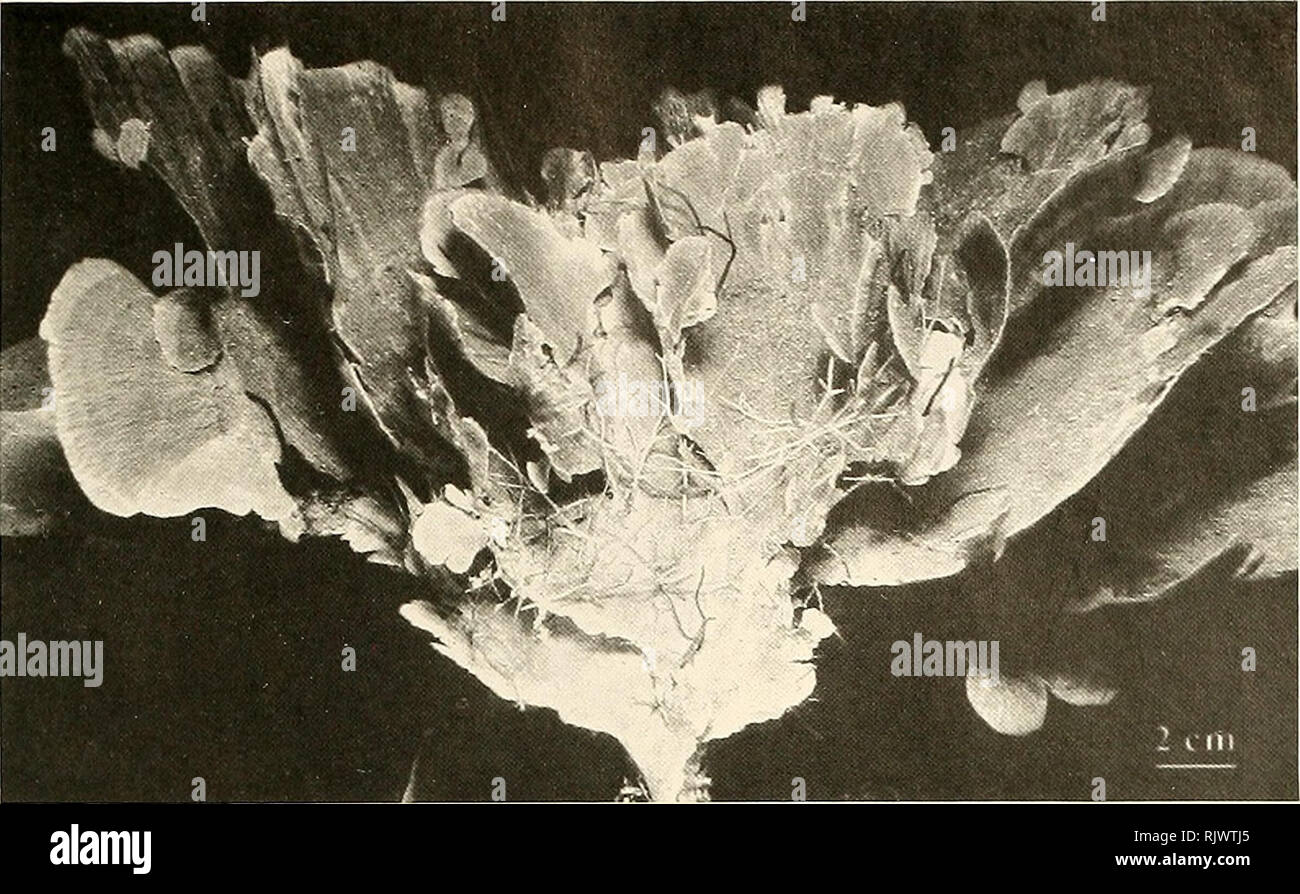 . Atoll research bulletin. Coral reefs and islands; Marine biology; Marine sciences. 165. Figure 12. Typical giant specimen of the calcareous green alga Udotea occidentalis characteristic of rhizophytic seagrass beds in Pelican Cays' ponds.. Please note that these images are extracted from scanned page images that may have been digitally enhanced for readability - coloration and appearance of these illustrations may not perfectly resemble the original work.. Smithsonian Institution. Press; National Research Council (U. S. ). Pacific Science Board; Smithsonian Institution; National Museum of Na Stock Photohttps://www.alamy.com/image-license-details/?v=1https://www.alamy.com/atoll-research-bulletin-coral-reefs-and-islands-marine-biology-marine-sciences-165-figure-12-typical-giant-specimen-of-the-calcareous-green-alga-udotea-occidentalis-characteristic-of-rhizophytic-seagrass-beds-in-pelican-cays-ponds-please-note-that-these-images-are-extracted-from-scanned-page-images-that-may-have-been-digitally-enhanced-for-readability-coloration-and-appearance-of-these-illustrations-may-not-perfectly-resemble-the-original-work-smithsonian-institution-press-national-research-council-u-s-pacific-science-board-smithsonian-institution-national-museum-of-na-image235366717.html
. Atoll research bulletin. Coral reefs and islands; Marine biology; Marine sciences. 165. Figure 12. Typical giant specimen of the calcareous green alga Udotea occidentalis characteristic of rhizophytic seagrass beds in Pelican Cays' ponds.. Please note that these images are extracted from scanned page images that may have been digitally enhanced for readability - coloration and appearance of these illustrations may not perfectly resemble the original work.. Smithsonian Institution. Press; National Research Council (U. S. ). Pacific Science Board; Smithsonian Institution; National Museum of Na Stock Photohttps://www.alamy.com/image-license-details/?v=1https://www.alamy.com/atoll-research-bulletin-coral-reefs-and-islands-marine-biology-marine-sciences-165-figure-12-typical-giant-specimen-of-the-calcareous-green-alga-udotea-occidentalis-characteristic-of-rhizophytic-seagrass-beds-in-pelican-cays-ponds-please-note-that-these-images-are-extracted-from-scanned-page-images-that-may-have-been-digitally-enhanced-for-readability-coloration-and-appearance-of-these-illustrations-may-not-perfectly-resemble-the-original-work-smithsonian-institution-press-national-research-council-u-s-pacific-science-board-smithsonian-institution-national-museum-of-na-image235366717.htmlRMRJWTJ5–. Atoll research bulletin. Coral reefs and islands; Marine biology; Marine sciences. 165. Figure 12. Typical giant specimen of the calcareous green alga Udotea occidentalis characteristic of rhizophytic seagrass beds in Pelican Cays' ponds.. Please note that these images are extracted from scanned page images that may have been digitally enhanced for readability - coloration and appearance of these illustrations may not perfectly resemble the original work.. Smithsonian Institution. Press; National Research Council (U. S. ). Pacific Science Board; Smithsonian Institution; National Museum of Na
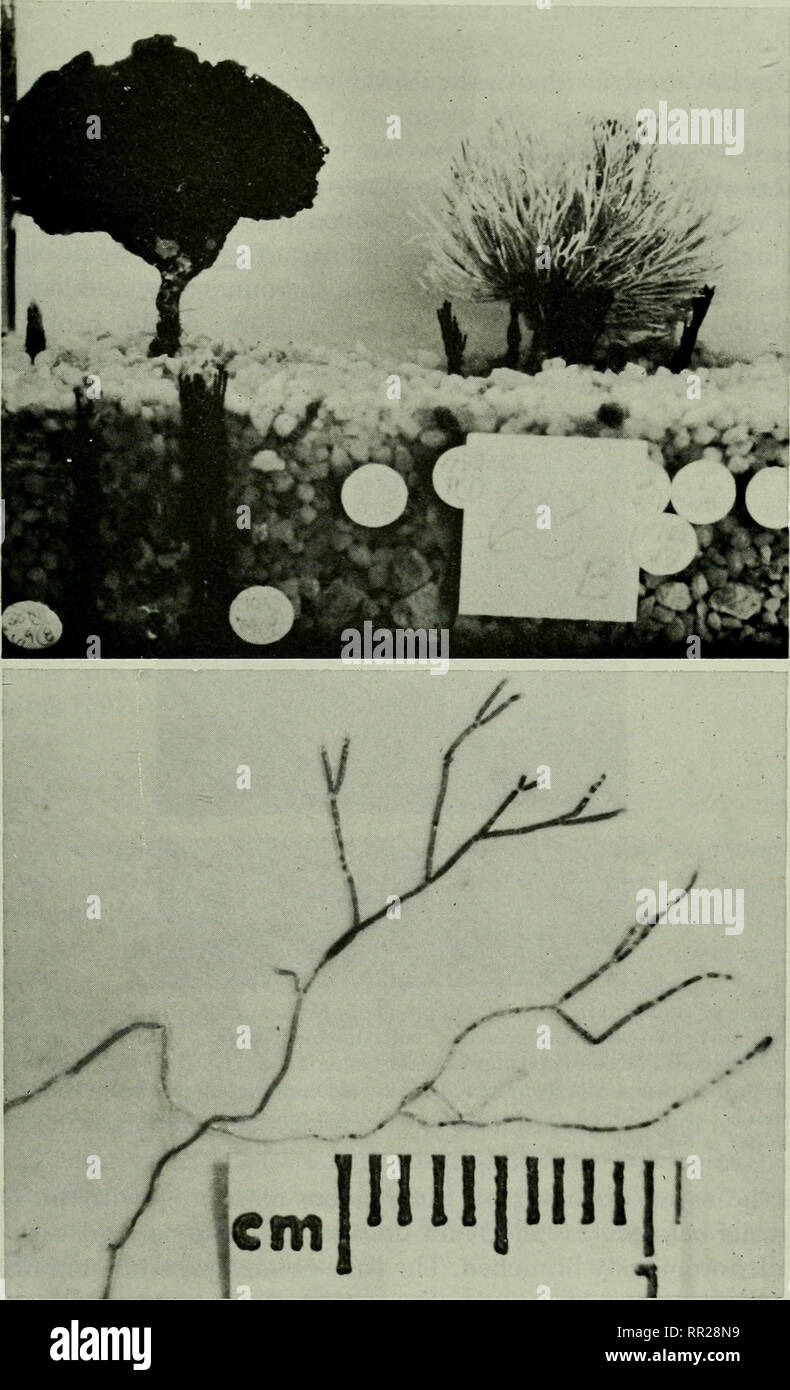 . Advances in marine biology: volume 17. Coral fisheries. Fig. 73. Vegetative reproduction in Penicillus and Udotea. (Top) An aquarium showing a cluster of young Penicilli aroiuid an old Penicillus with white capituluni. Two other young Penicilli appear in the left foreground. A young Udotea is developing to the left of the large Udotea. All yovmg plants are from rhizoidal runners, and the aquarium had been established five weeks when the photograph was taken. The diameter of the white discs is 0-85 cm. (Bottom) Filaments of the espera stage of Penicillus capitatus from the Caribbean, develope Stock Photohttps://www.alamy.com/image-license-details/?v=1https://www.alamy.com/advances-in-marine-biology-volume-17-coral-fisheries-fig-73-vegetative-reproduction-in-penicillus-and-udotea-top-an-aquarium-showing-a-cluster-of-young-penicilli-aroiuid-an-old-penicillus-with-white-capituluni-two-other-young-penicilli-appear-in-the-left-foreground-a-young-udotea-is-developing-to-the-left-of-the-large-udotea-all-yovmg-plants-are-from-rhizoidal-runners-and-the-aquarium-had-been-established-five-weeks-when-the-photograph-was-taken-the-diameter-of-the-white-discs-is-0-85-cm-bottom-filaments-of-the-espera-stage-of-penicillus-capitatus-from-the-caribbean-develope-image237922645.html
. Advances in marine biology: volume 17. Coral fisheries. Fig. 73. Vegetative reproduction in Penicillus and Udotea. (Top) An aquarium showing a cluster of young Penicilli aroiuid an old Penicillus with white capituluni. Two other young Penicilli appear in the left foreground. A young Udotea is developing to the left of the large Udotea. All yovmg plants are from rhizoidal runners, and the aquarium had been established five weeks when the photograph was taken. The diameter of the white discs is 0-85 cm. (Bottom) Filaments of the espera stage of Penicillus capitatus from the Caribbean, develope Stock Photohttps://www.alamy.com/image-license-details/?v=1https://www.alamy.com/advances-in-marine-biology-volume-17-coral-fisheries-fig-73-vegetative-reproduction-in-penicillus-and-udotea-top-an-aquarium-showing-a-cluster-of-young-penicilli-aroiuid-an-old-penicillus-with-white-capituluni-two-other-young-penicilli-appear-in-the-left-foreground-a-young-udotea-is-developing-to-the-left-of-the-large-udotea-all-yovmg-plants-are-from-rhizoidal-runners-and-the-aquarium-had-been-established-five-weeks-when-the-photograph-was-taken-the-diameter-of-the-white-discs-is-0-85-cm-bottom-filaments-of-the-espera-stage-of-penicillus-capitatus-from-the-caribbean-develope-image237922645.htmlRMRR28N9–. Advances in marine biology: volume 17. Coral fisheries. Fig. 73. Vegetative reproduction in Penicillus and Udotea. (Top) An aquarium showing a cluster of young Penicilli aroiuid an old Penicillus with white capituluni. Two other young Penicilli appear in the left foreground. A young Udotea is developing to the left of the large Udotea. All yovmg plants are from rhizoidal runners, and the aquarium had been established five weeks when the photograph was taken. The diameter of the white discs is 0-85 cm. (Bottom) Filaments of the espera stage of Penicillus capitatus from the Caribbean, develope
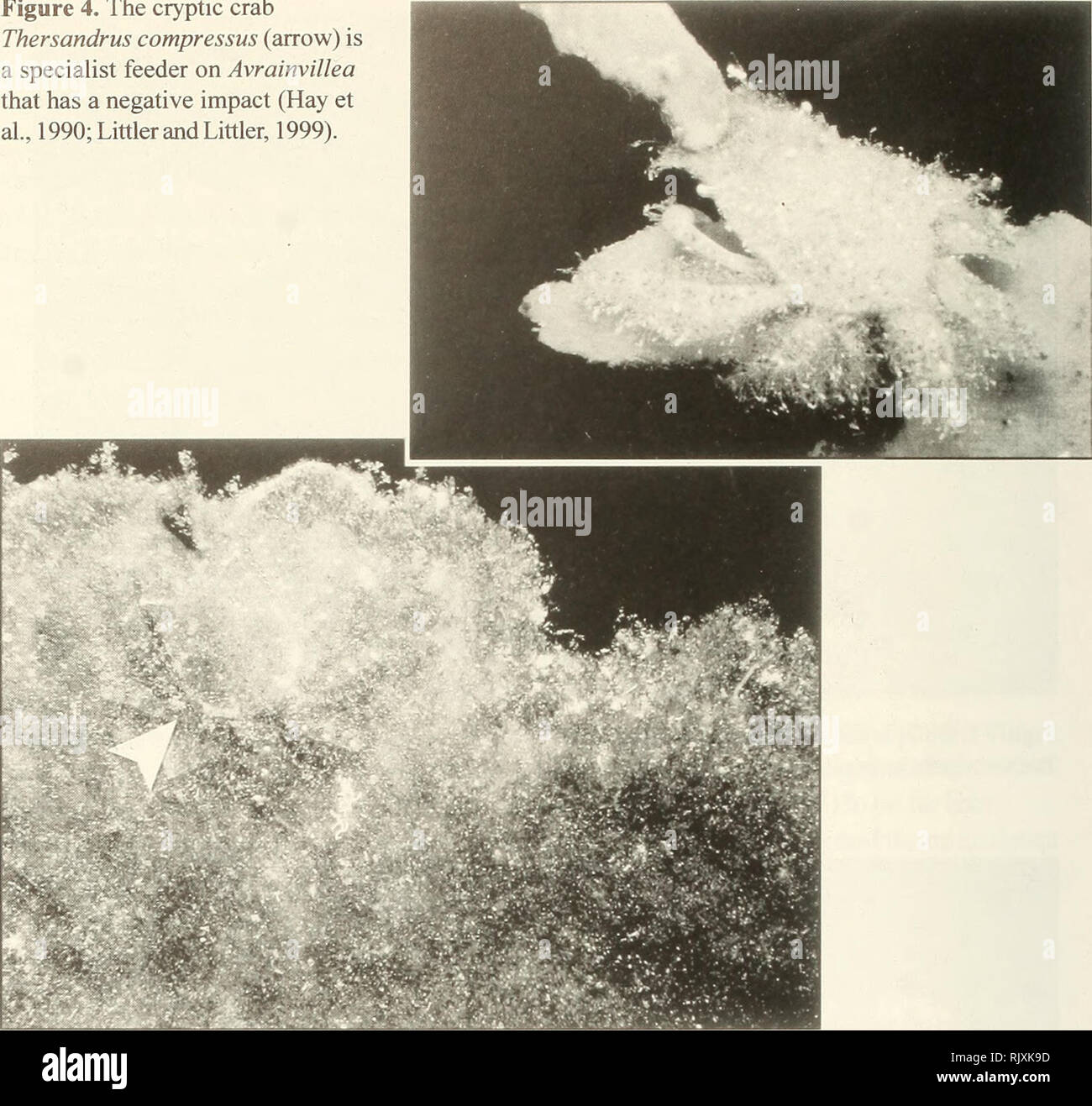 . Atoll research bulletin. Coral reefs and islands; Marine biology; Marine sciences. Figure 4. The cryptic crab Thersandrus compressus (arrow) is a specialist feeder on Avrainvillea that has a negative impact (Hay et al., 1990; Littler and Littler, 1999).. Hay and Fenical, 1988) and highly specialized interactions between the larger forms (e.g., Udotea, Avrainvillea, Caulerpa, Penicillus) and such herbivorous invertebrates as crabs and molluscs have been observed (Hay etal., 1990; Littler and Littler, 1999). Avrainvillea provides microhabitats (Fig. 3), as well as food and shelter (Fig. 4), fo Stock Photohttps://www.alamy.com/image-license-details/?v=1https://www.alamy.com/atoll-research-bulletin-coral-reefs-and-islands-marine-biology-marine-sciences-figure-4-the-cryptic-crab-thersandrus-compressus-arrow-is-a-specialist-feeder-on-avrainvillea-that-has-a-negative-impact-hay-et-al-1990-littler-and-littler-1999-hay-and-fenical-1988-and-highly-specialized-interactions-between-the-larger-forms-eg-udotea-avrainvillea-caulerpa-penicillus-and-such-herbivorous-invertebrates-as-crabs-and-molluscs-have-been-observed-hay-etal-1990-littler-and-littler-1999-avrainvillea-provides-microhabitats-fig-3-as-well-as-food-and-shelter-fig-4-fo-image235384505.html
. Atoll research bulletin. Coral reefs and islands; Marine biology; Marine sciences. Figure 4. The cryptic crab Thersandrus compressus (arrow) is a specialist feeder on Avrainvillea that has a negative impact (Hay et al., 1990; Littler and Littler, 1999).. Hay and Fenical, 1988) and highly specialized interactions between the larger forms (e.g., Udotea, Avrainvillea, Caulerpa, Penicillus) and such herbivorous invertebrates as crabs and molluscs have been observed (Hay etal., 1990; Littler and Littler, 1999). Avrainvillea provides microhabitats (Fig. 3), as well as food and shelter (Fig. 4), fo Stock Photohttps://www.alamy.com/image-license-details/?v=1https://www.alamy.com/atoll-research-bulletin-coral-reefs-and-islands-marine-biology-marine-sciences-figure-4-the-cryptic-crab-thersandrus-compressus-arrow-is-a-specialist-feeder-on-avrainvillea-that-has-a-negative-impact-hay-et-al-1990-littler-and-littler-1999-hay-and-fenical-1988-and-highly-specialized-interactions-between-the-larger-forms-eg-udotea-avrainvillea-caulerpa-penicillus-and-such-herbivorous-invertebrates-as-crabs-and-molluscs-have-been-observed-hay-etal-1990-littler-and-littler-1999-avrainvillea-provides-microhabitats-fig-3-as-well-as-food-and-shelter-fig-4-fo-image235384505.htmlRMRJXK9D–. Atoll research bulletin. Coral reefs and islands; Marine biology; Marine sciences. Figure 4. The cryptic crab Thersandrus compressus (arrow) is a specialist feeder on Avrainvillea that has a negative impact (Hay et al., 1990; Littler and Littler, 1999).. Hay and Fenical, 1988) and highly specialized interactions between the larger forms (e.g., Udotea, Avrainvillea, Caulerpa, Penicillus) and such herbivorous invertebrates as crabs and molluscs have been observed (Hay etal., 1990; Littler and Littler, 1999). Avrainvillea provides microhabitats (Fig. 3), as well as food and shelter (Fig. 4), fo
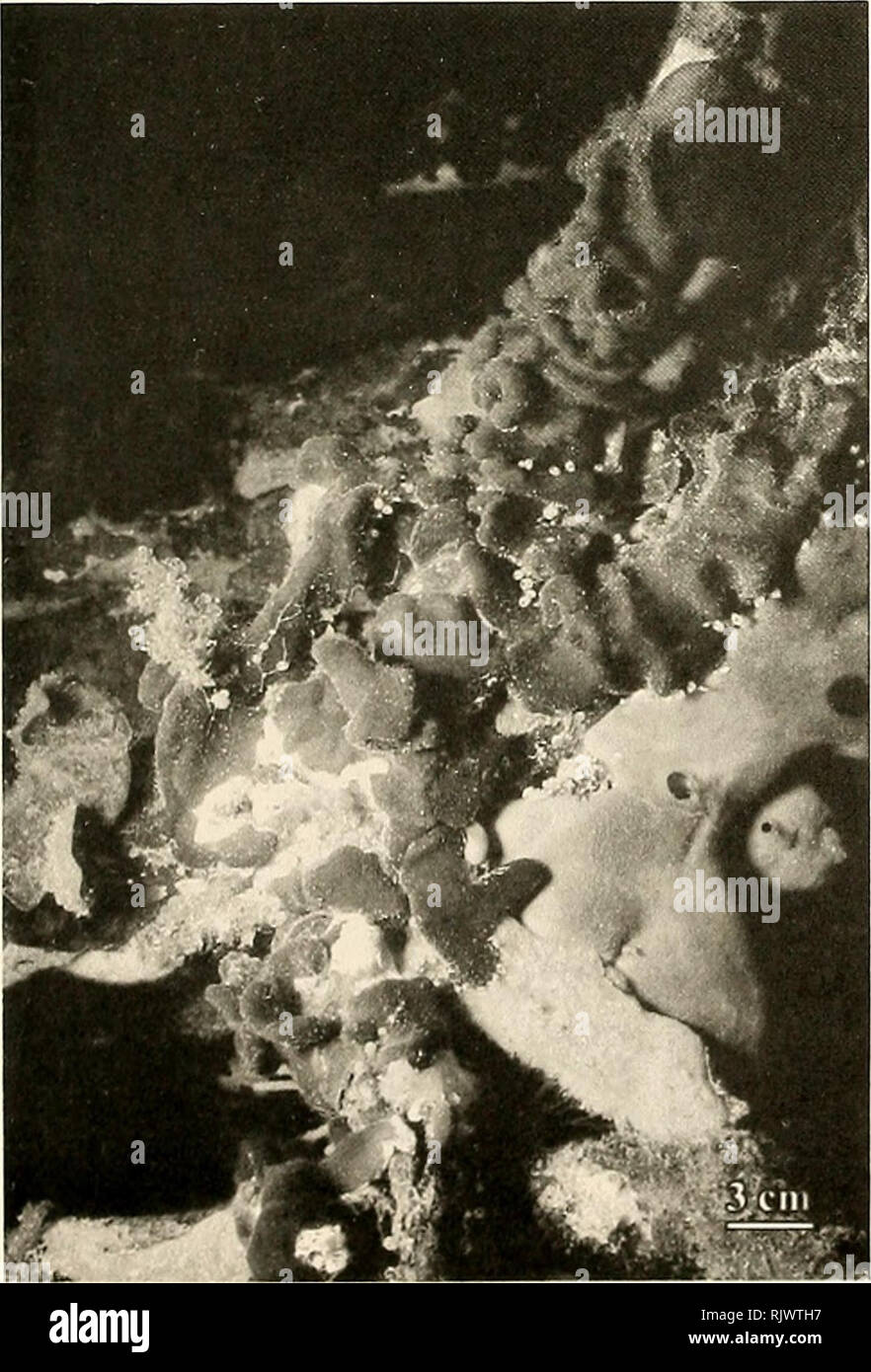 . Atoll research bulletin. Coral reefs and islands; Marine biology; Marine sciences. Figure 12. Typical giant specimen of the calcareous green alga Udotea occidentalis characteristic of rhizophytic seagrass beds in Pelican Cays' ponds.. Figure 13. The green alga Codium intertextum on embedded mangrove root.. Please note that these images are extracted from scanned page images that may have been digitally enhanced for readability - coloration and appearance of these illustrations may not perfectly resemble the original work.. Smithsonian Institution. Press; National Research Council (U. S. ). P Stock Photohttps://www.alamy.com/image-license-details/?v=1https://www.alamy.com/atoll-research-bulletin-coral-reefs-and-islands-marine-biology-marine-sciences-figure-12-typical-giant-specimen-of-the-calcareous-green-alga-udotea-occidentalis-characteristic-of-rhizophytic-seagrass-beds-in-pelican-cays-ponds-figure-13-the-green-alga-codium-intertextum-on-embedded-mangrove-root-please-note-that-these-images-are-extracted-from-scanned-page-images-that-may-have-been-digitally-enhanced-for-readability-coloration-and-appearance-of-these-illustrations-may-not-perfectly-resemble-the-original-work-smithsonian-institution-press-national-research-council-u-s-p-image235366691.html
. Atoll research bulletin. Coral reefs and islands; Marine biology; Marine sciences. Figure 12. Typical giant specimen of the calcareous green alga Udotea occidentalis characteristic of rhizophytic seagrass beds in Pelican Cays' ponds.. Figure 13. The green alga Codium intertextum on embedded mangrove root.. Please note that these images are extracted from scanned page images that may have been digitally enhanced for readability - coloration and appearance of these illustrations may not perfectly resemble the original work.. Smithsonian Institution. Press; National Research Council (U. S. ). P Stock Photohttps://www.alamy.com/image-license-details/?v=1https://www.alamy.com/atoll-research-bulletin-coral-reefs-and-islands-marine-biology-marine-sciences-figure-12-typical-giant-specimen-of-the-calcareous-green-alga-udotea-occidentalis-characteristic-of-rhizophytic-seagrass-beds-in-pelican-cays-ponds-figure-13-the-green-alga-codium-intertextum-on-embedded-mangrove-root-please-note-that-these-images-are-extracted-from-scanned-page-images-that-may-have-been-digitally-enhanced-for-readability-coloration-and-appearance-of-these-illustrations-may-not-perfectly-resemble-the-original-work-smithsonian-institution-press-national-research-council-u-s-p-image235366691.htmlRMRJWTH7–. Atoll research bulletin. Coral reefs and islands; Marine biology; Marine sciences. Figure 12. Typical giant specimen of the calcareous green alga Udotea occidentalis characteristic of rhizophytic seagrass beds in Pelican Cays' ponds.. Figure 13. The green alga Codium intertextum on embedded mangrove root.. Please note that these images are extracted from scanned page images that may have been digitally enhanced for readability - coloration and appearance of these illustrations may not perfectly resemble the original work.. Smithsonian Institution. Press; National Research Council (U. S. ). P
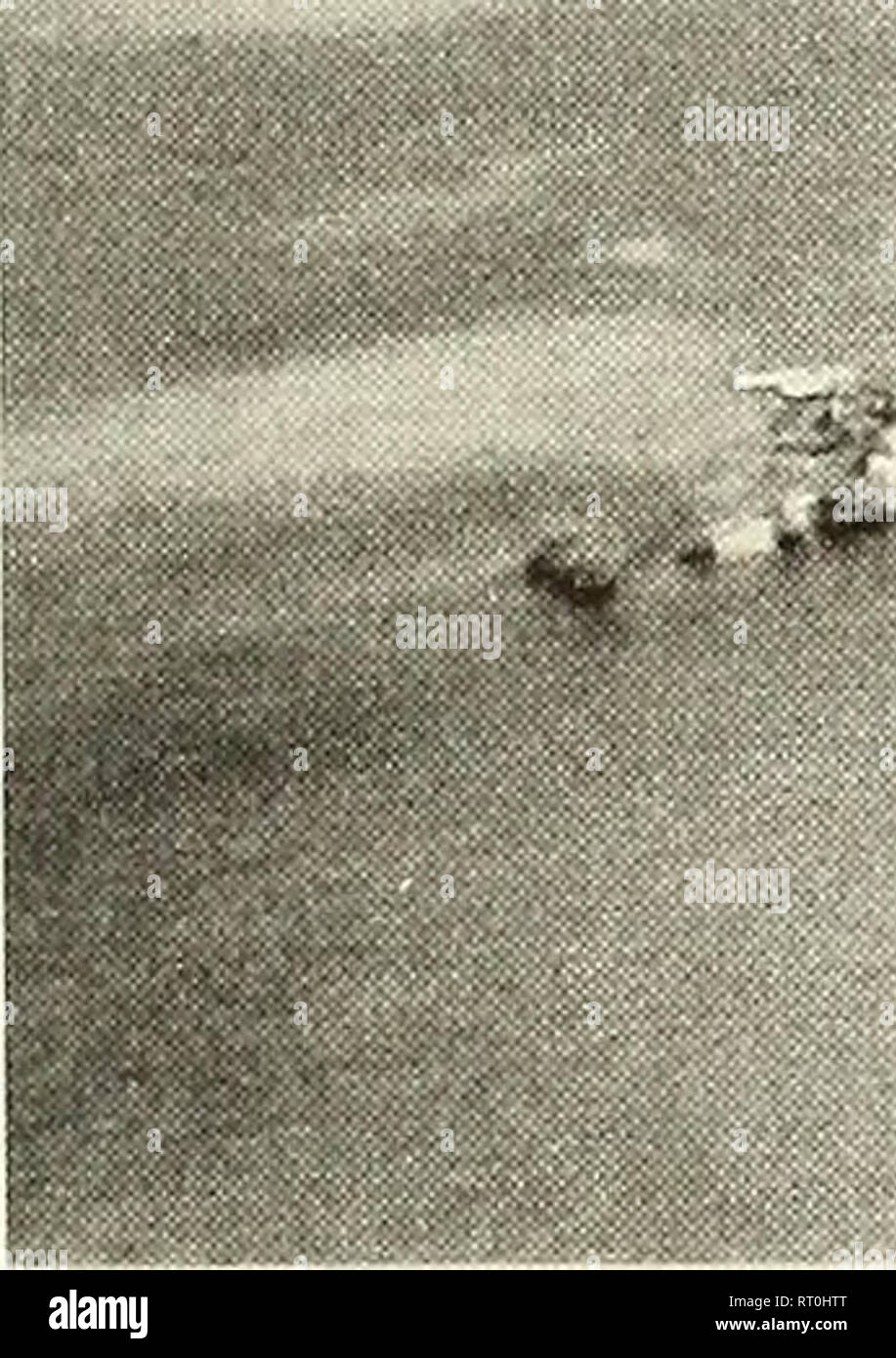 . Atoll research bulletin. Coral reefs and islands; Marine biology; Marine sciences. 27 the bases of algae in protected side branches and near the entrance into Hidden Lake. Sponges that have fallen from broken or decayed mangrove roots are surviving partially buried in the muddy bottom (for instance, Lissodendoryx, Haliclona permollis) and Udotea algae were observed supporting small invertebrate settlers (e.g., the ascidian Botryllus tuberatus). Polychaete and mollusk egg cases are commonly encountered on the muddy bottom among decayed mangrove litter. Sta. 13 G, Crescent Bay (Figs. 1,19) *** Stock Photohttps://www.alamy.com/image-license-details/?v=1https://www.alamy.com/atoll-research-bulletin-coral-reefs-and-islands-marine-biology-marine-sciences-27-the-bases-of-algae-in-protected-side-branches-and-near-the-entrance-into-hidden-lake-sponges-that-have-fallen-from-broken-or-decayed-mangrove-roots-are-surviving-partially-buried-in-the-muddy-bottom-for-instance-lissodendoryx-haliclona-permollis-and-udotea-algae-were-observed-supporting-small-invertebrate-settlers-eg-the-ascidian-botryllus-tuberatus-polychaete-and-mollusk-egg-cases-are-commonly-encountered-on-the-muddy-bottom-among-decayed-mangrove-litter-sta-13-g-crescent-bay-figs-119-image238500552.html
. Atoll research bulletin. Coral reefs and islands; Marine biology; Marine sciences. 27 the bases of algae in protected side branches and near the entrance into Hidden Lake. Sponges that have fallen from broken or decayed mangrove roots are surviving partially buried in the muddy bottom (for instance, Lissodendoryx, Haliclona permollis) and Udotea algae were observed supporting small invertebrate settlers (e.g., the ascidian Botryllus tuberatus). Polychaete and mollusk egg cases are commonly encountered on the muddy bottom among decayed mangrove litter. Sta. 13 G, Crescent Bay (Figs. 1,19) *** Stock Photohttps://www.alamy.com/image-license-details/?v=1https://www.alamy.com/atoll-research-bulletin-coral-reefs-and-islands-marine-biology-marine-sciences-27-the-bases-of-algae-in-protected-side-branches-and-near-the-entrance-into-hidden-lake-sponges-that-have-fallen-from-broken-or-decayed-mangrove-roots-are-surviving-partially-buried-in-the-muddy-bottom-for-instance-lissodendoryx-haliclona-permollis-and-udotea-algae-were-observed-supporting-small-invertebrate-settlers-eg-the-ascidian-botryllus-tuberatus-polychaete-and-mollusk-egg-cases-are-commonly-encountered-on-the-muddy-bottom-among-decayed-mangrove-litter-sta-13-g-crescent-bay-figs-119-image238500552.htmlRMRT0HTT–. Atoll research bulletin. Coral reefs and islands; Marine biology; Marine sciences. 27 the bases of algae in protected side branches and near the entrance into Hidden Lake. Sponges that have fallen from broken or decayed mangrove roots are surviving partially buried in the muddy bottom (for instance, Lissodendoryx, Haliclona permollis) and Udotea algae were observed supporting small invertebrate settlers (e.g., the ascidian Botryllus tuberatus). Polychaete and mollusk egg cases are commonly encountered on the muddy bottom among decayed mangrove litter. Sta. 13 G, Crescent Bay (Figs. 1,19) ***
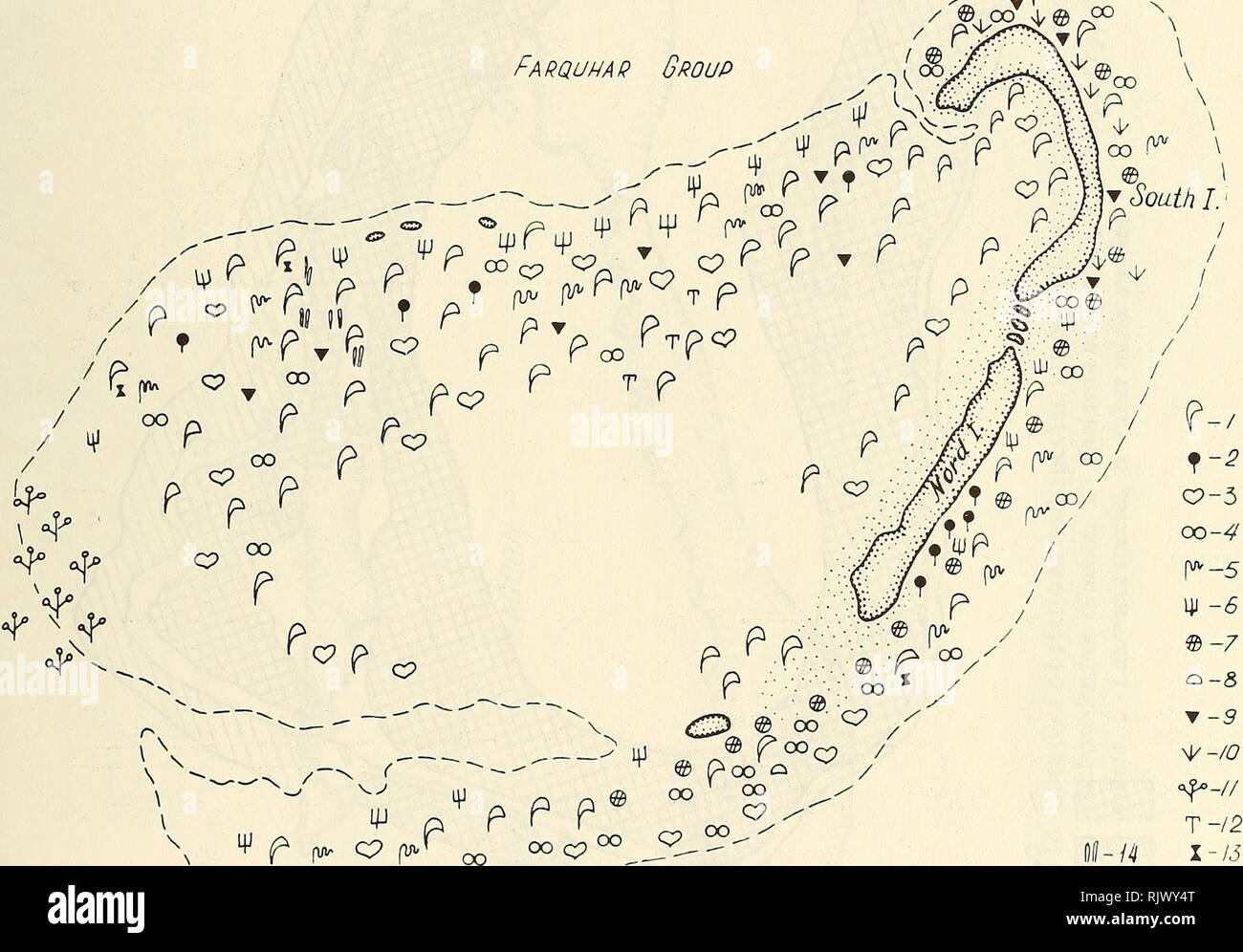 . Atoll research bulletin. Coral reefs and islands; Marine biology; Marine sciences. 49 Farquhar Group /PyP p|^. ^ p p p Figure 16. Horizontal distribution of algal and seagrass species at Farquhar Atoll. 1- Thalassodendron ciliatum, 2 - Udotea, 3 - Halimeda species, 4 - Valonia aegagropila, 5 - Caulerpa cupressoides, 6 - Microdictyon okamurai, 7 - Boodlea struveoides, 8 - crustose species, 9 - Turbinaria ornata, 10 - Liagora ceranoides, 11 - Sargassum ilicifolium, 12 - Laurencia species, 13 - Haloplegma duperreyi, 14 - Thalassia hemprichii.. Please note that these images are extracted from sc Stock Photohttps://www.alamy.com/image-license-details/?v=1https://www.alamy.com/atoll-research-bulletin-coral-reefs-and-islands-marine-biology-marine-sciences-49-farquhar-group-pyp-p-p-p-p-figure-16-horizontal-distribution-of-algal-and-seagrass-species-at-farquhar-atoll-1-thalassodendron-ciliatum-2-udotea-3-halimeda-species-4-valonia-aegagropila-5-caulerpa-cupressoides-6-microdictyon-okamurai-7-boodlea-struveoides-8-crustose-species-9-turbinaria-ornata-10-liagora-ceranoides-11-sargassum-ilicifolium-12-laurencia-species-13-haloplegma-duperreyi-14-thalassia-hemprichii-please-note-that-these-images-are-extracted-from-sc-image235368696.html
. Atoll research bulletin. Coral reefs and islands; Marine biology; Marine sciences. 49 Farquhar Group /PyP p|^. ^ p p p Figure 16. Horizontal distribution of algal and seagrass species at Farquhar Atoll. 1- Thalassodendron ciliatum, 2 - Udotea, 3 - Halimeda species, 4 - Valonia aegagropila, 5 - Caulerpa cupressoides, 6 - Microdictyon okamurai, 7 - Boodlea struveoides, 8 - crustose species, 9 - Turbinaria ornata, 10 - Liagora ceranoides, 11 - Sargassum ilicifolium, 12 - Laurencia species, 13 - Haloplegma duperreyi, 14 - Thalassia hemprichii.. Please note that these images are extracted from sc Stock Photohttps://www.alamy.com/image-license-details/?v=1https://www.alamy.com/atoll-research-bulletin-coral-reefs-and-islands-marine-biology-marine-sciences-49-farquhar-group-pyp-p-p-p-p-figure-16-horizontal-distribution-of-algal-and-seagrass-species-at-farquhar-atoll-1-thalassodendron-ciliatum-2-udotea-3-halimeda-species-4-valonia-aegagropila-5-caulerpa-cupressoides-6-microdictyon-okamurai-7-boodlea-struveoides-8-crustose-species-9-turbinaria-ornata-10-liagora-ceranoides-11-sargassum-ilicifolium-12-laurencia-species-13-haloplegma-duperreyi-14-thalassia-hemprichii-please-note-that-these-images-are-extracted-from-sc-image235368696.htmlRMRJWY4T–. Atoll research bulletin. Coral reefs and islands; Marine biology; Marine sciences. 49 Farquhar Group /PyP p|^. ^ p p p Figure 16. Horizontal distribution of algal and seagrass species at Farquhar Atoll. 1- Thalassodendron ciliatum, 2 - Udotea, 3 - Halimeda species, 4 - Valonia aegagropila, 5 - Caulerpa cupressoides, 6 - Microdictyon okamurai, 7 - Boodlea struveoides, 8 - crustose species, 9 - Turbinaria ornata, 10 - Liagora ceranoides, 11 - Sargassum ilicifolium, 12 - Laurencia species, 13 - Haloplegma duperreyi, 14 - Thalassia hemprichii.. Please note that these images are extracted from sc
 . Atoll research bulletin. Coral reefs and islands; Marine biology; Marine sciences. J00 500 500 /?00 /50tf 2/STANCE . -^ /S00 <?/00 Figure 10. Vertical distribution of dominant species, biomass and percent cover of algae and segrasses at African Banks. 1 - Thalassodendron ciliatum, 2 - Boodlea struveoides, 3 - Halimeda species, 4 - Tricleocarpa oblongata, 5 - Haloplegma duperreyi, 6 - Microdictyon okamurai, 1 - Turbinaria oblongata, 8 - Caulerpa species, 9 - Avrainvillea amadelpha, 10 - Rhipilia tomentosa, 11 - Lobophora variegata, 12 - Udotea argentea.. Please note that these images are e Stock Photohttps://www.alamy.com/image-license-details/?v=1https://www.alamy.com/atoll-research-bulletin-coral-reefs-and-islands-marine-biology-marine-sciences-j00-500-500-00-50tf-2stance-s00-lt00-figure-10-vertical-distribution-of-dominant-species-biomass-and-percent-cover-of-algae-and-segrasses-at-african-banks-1-thalassodendron-ciliatum-2-boodlea-struveoides-3-halimeda-species-4-tricleocarpa-oblongata-5-haloplegma-duperreyi-6-microdictyon-okamurai-1-turbinaria-oblongata-8-caulerpa-species-9-avrainvillea-amadelpha-10-rhipilia-tomentosa-11-lobophora-variegata-12-udotea-argentea-please-note-that-these-images-are-e-image235368738.html
. Atoll research bulletin. Coral reefs and islands; Marine biology; Marine sciences. J00 500 500 /?00 /50tf 2/STANCE . -^ /S00 <?/00 Figure 10. Vertical distribution of dominant species, biomass and percent cover of algae and segrasses at African Banks. 1 - Thalassodendron ciliatum, 2 - Boodlea struveoides, 3 - Halimeda species, 4 - Tricleocarpa oblongata, 5 - Haloplegma duperreyi, 6 - Microdictyon okamurai, 1 - Turbinaria oblongata, 8 - Caulerpa species, 9 - Avrainvillea amadelpha, 10 - Rhipilia tomentosa, 11 - Lobophora variegata, 12 - Udotea argentea.. Please note that these images are e Stock Photohttps://www.alamy.com/image-license-details/?v=1https://www.alamy.com/atoll-research-bulletin-coral-reefs-and-islands-marine-biology-marine-sciences-j00-500-500-00-50tf-2stance-s00-lt00-figure-10-vertical-distribution-of-dominant-species-biomass-and-percent-cover-of-algae-and-segrasses-at-african-banks-1-thalassodendron-ciliatum-2-boodlea-struveoides-3-halimeda-species-4-tricleocarpa-oblongata-5-haloplegma-duperreyi-6-microdictyon-okamurai-1-turbinaria-oblongata-8-caulerpa-species-9-avrainvillea-amadelpha-10-rhipilia-tomentosa-11-lobophora-variegata-12-udotea-argentea-please-note-that-these-images-are-e-image235368738.htmlRMRJWY6A–. Atoll research bulletin. Coral reefs and islands; Marine biology; Marine sciences. J00 500 500 /?00 /50tf 2/STANCE . -^ /S00 <?/00 Figure 10. Vertical distribution of dominant species, biomass and percent cover of algae and segrasses at African Banks. 1 - Thalassodendron ciliatum, 2 - Boodlea struveoides, 3 - Halimeda species, 4 - Tricleocarpa oblongata, 5 - Haloplegma duperreyi, 6 - Microdictyon okamurai, 1 - Turbinaria oblongata, 8 - Caulerpa species, 9 - Avrainvillea amadelpha, 10 - Rhipilia tomentosa, 11 - Lobophora variegata, 12 - Udotea argentea.. Please note that these images are e
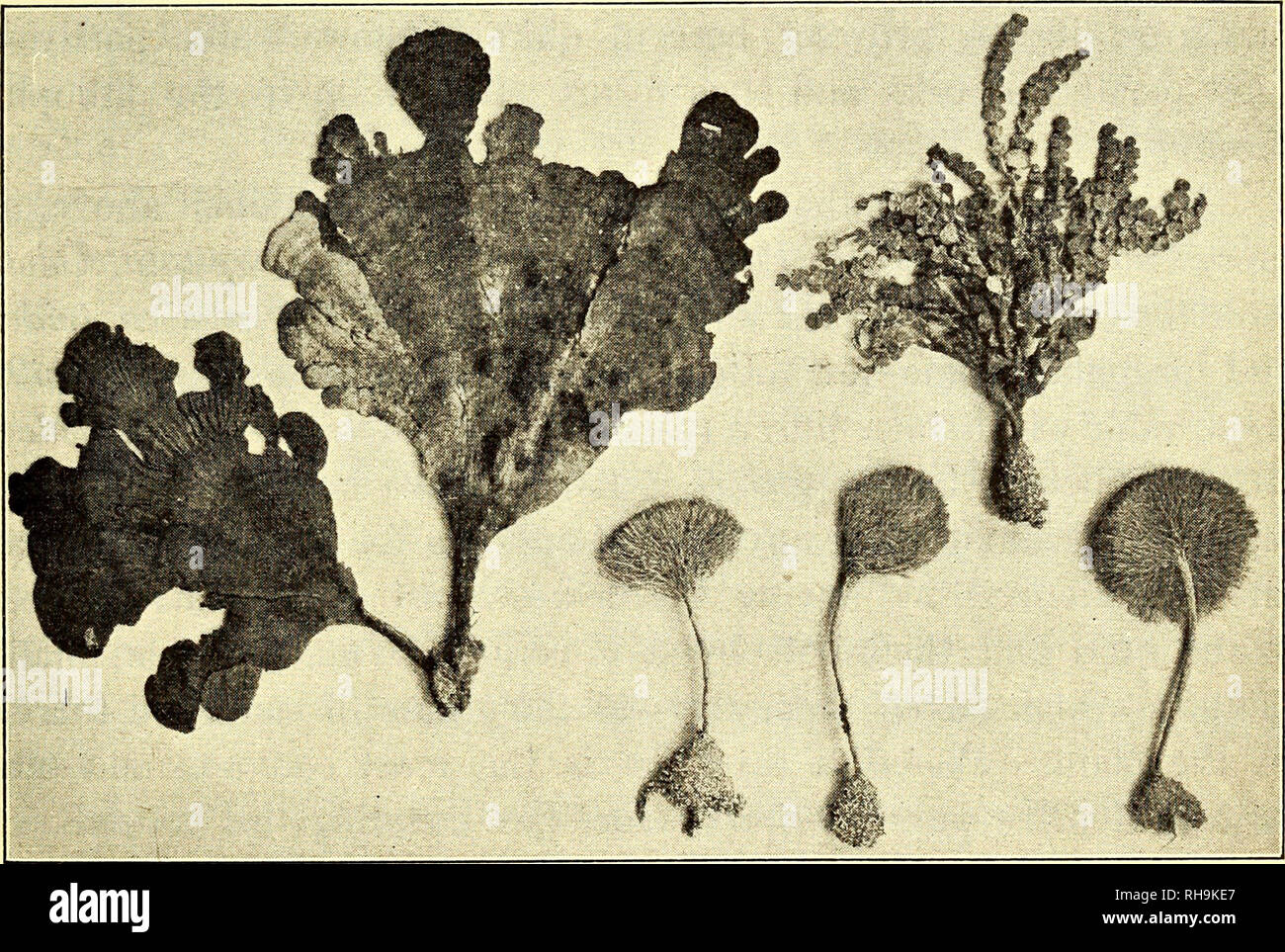 . Botanisk tidsskrift. Botany; Plants; Plants. Fig. 2. Caulerpa cupressoides (Vahl) (1:4.) F. B. fot.. Fig. 3. Different Algae fixed to the same spot. Udotea fiabellata (Lamx.) J. Ag. Halimeda tridens (Sol.) Lamx. PeniciUus capitata* Lamx. (1:4.) F. B. fot. the variety mamillosa, C.pennata with var. mexicana, C.plumaris, C. taxifolia, C. racemosa var. lœtevirens and C. proliféra. Especially. Please note that these images are extracted from scanned page images that may have been digitally enhanced for readability - coloration and appearance of these illustrations may not perfectly resemble the Stock Photohttps://www.alamy.com/image-license-details/?v=1https://www.alamy.com/botanisk-tidsskrift-botany-plants-plants-fig-2-caulerpa-cupressoides-vahl-14-f-b-fot-fig-3-different-algae-fixed-to-the-same-spot-udotea-fiabellata-lamx-j-ag-halimeda-tridens-sol-lamx-peniciuus-capitata-lamx-14-f-b-fot-the-variety-mamillosa-cpennata-with-var-mexicana-cplumaris-c-taxifolia-c-racemosa-var-ltevirens-and-c-prolifra-especially-please-note-that-these-images-are-extracted-from-scanned-page-images-that-may-have-been-digitally-enhanced-for-readability-coloration-and-appearance-of-these-illustrations-may-not-perfectly-resemble-the-image234396799.html
. Botanisk tidsskrift. Botany; Plants; Plants. Fig. 2. Caulerpa cupressoides (Vahl) (1:4.) F. B. fot.. Fig. 3. Different Algae fixed to the same spot. Udotea fiabellata (Lamx.) J. Ag. Halimeda tridens (Sol.) Lamx. PeniciUus capitata* Lamx. (1:4.) F. B. fot. the variety mamillosa, C.pennata with var. mexicana, C.plumaris, C. taxifolia, C. racemosa var. lœtevirens and C. proliféra. Especially. Please note that these images are extracted from scanned page images that may have been digitally enhanced for readability - coloration and appearance of these illustrations may not perfectly resemble the Stock Photohttps://www.alamy.com/image-license-details/?v=1https://www.alamy.com/botanisk-tidsskrift-botany-plants-plants-fig-2-caulerpa-cupressoides-vahl-14-f-b-fot-fig-3-different-algae-fixed-to-the-same-spot-udotea-fiabellata-lamx-j-ag-halimeda-tridens-sol-lamx-peniciuus-capitata-lamx-14-f-b-fot-the-variety-mamillosa-cpennata-with-var-mexicana-cplumaris-c-taxifolia-c-racemosa-var-ltevirens-and-c-prolifra-especially-please-note-that-these-images-are-extracted-from-scanned-page-images-that-may-have-been-digitally-enhanced-for-readability-coloration-and-appearance-of-these-illustrations-may-not-perfectly-resemble-the-image234396799.htmlRMRH9KE7–. Botanisk tidsskrift. Botany; Plants; Plants. Fig. 2. Caulerpa cupressoides (Vahl) (1:4.) F. B. fot.. Fig. 3. Different Algae fixed to the same spot. Udotea fiabellata (Lamx.) J. Ag. Halimeda tridens (Sol.) Lamx. PeniciUus capitata* Lamx. (1:4.) F. B. fot. the variety mamillosa, C.pennata with var. mexicana, C.plumaris, C. taxifolia, C. racemosa var. lœtevirens and C. proliféra. Especially. Please note that these images are extracted from scanned page images that may have been digitally enhanced for readability - coloration and appearance of these illustrations may not perfectly resemble the
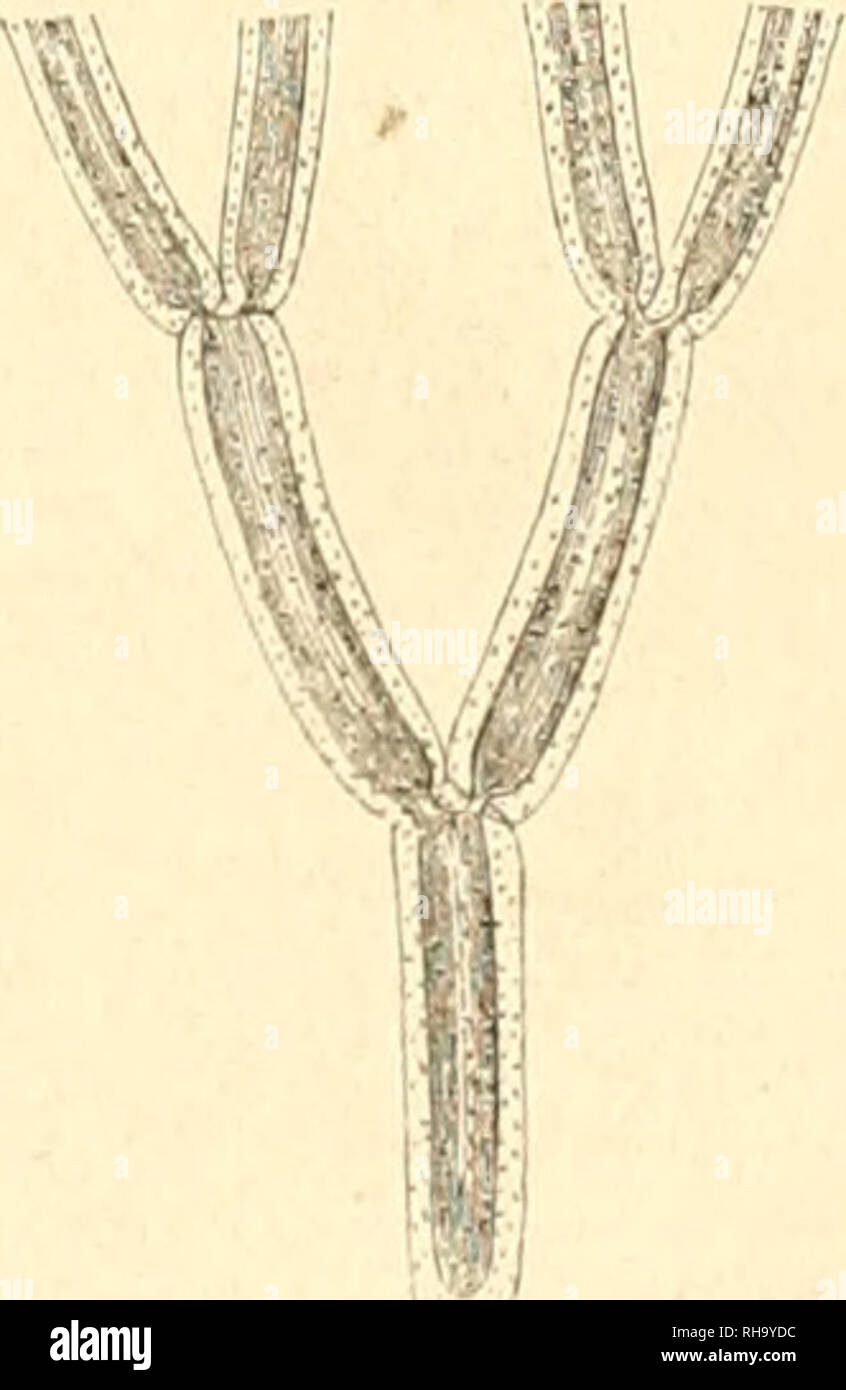 . Botanique cryptogamique, ou Histoire des familles naturelles des plantes infrieures. . [40. I .iutea cyathiformis. lit. Halymeda Opuntia. ',2.143 Pi nîcill i c ipitalus CODIUM. STACK. Thallus cylindricus e lubnlis continuis, varie ramosis, laxe contextis compo- situs. udotea. l.AMX Thallus'flabelliformis planus vel inferne involalus, e tabulis parallelts im- plexis, continue ramosis compositus. z'uii- con- nenti icis obscuris uotatns. AVRAINVILLEA, ME. Thallus flabelliformis, planus, e tubulîs ramosis, subcompressis, moni- liformibus, intus subslantia viridi-nigra farcit compositus. halymed Stock Photohttps://www.alamy.com/image-license-details/?v=1https://www.alamy.com/botanique-cryptogamique-ou-histoire-des-familles-naturelles-des-plantes-infrieures-40-i-iutea-cyathiformis-lit-halymeda-opuntia-2143-pi-ncill-i-c-ipitalus-codium-stack-thallus-cylindricus-e-lubnlis-continuis-varie-ramosis-laxe-contextis-compo-situs-udotea-lamx-thallusflabelliformis-planus-vel-inferne-involalus-e-tabulis-parallelts-im-plexis-continue-ramosis-compositus-zuii-con-nenti-icis-obscuris-uotatns-avrainvillea-me-thallus-flabelliformis-planus-e-tubuls-ramosis-subcompressis-moni-liformibus-intus-subslantia-viridi-nigra-farcit-compositus-halymed-image234403048.html
. Botanique cryptogamique, ou Histoire des familles naturelles des plantes infrieures. . [40. I .iutea cyathiformis. lit. Halymeda Opuntia. ',2.143 Pi nîcill i c ipitalus CODIUM. STACK. Thallus cylindricus e lubnlis continuis, varie ramosis, laxe contextis compo- situs. udotea. l.AMX Thallus'flabelliformis planus vel inferne involalus, e tabulis parallelts im- plexis, continue ramosis compositus. z'uii- con- nenti icis obscuris uotatns. AVRAINVILLEA, ME. Thallus flabelliformis, planus, e tubulîs ramosis, subcompressis, moni- liformibus, intus subslantia viridi-nigra farcit compositus. halymed Stock Photohttps://www.alamy.com/image-license-details/?v=1https://www.alamy.com/botanique-cryptogamique-ou-histoire-des-familles-naturelles-des-plantes-infrieures-40-i-iutea-cyathiformis-lit-halymeda-opuntia-2143-pi-ncill-i-c-ipitalus-codium-stack-thallus-cylindricus-e-lubnlis-continuis-varie-ramosis-laxe-contextis-compo-situs-udotea-lamx-thallusflabelliformis-planus-vel-inferne-involalus-e-tabulis-parallelts-im-plexis-continue-ramosis-compositus-zuii-con-nenti-icis-obscuris-uotatns-avrainvillea-me-thallus-flabelliformis-planus-e-tubuls-ramosis-subcompressis-moni-liformibus-intus-subslantia-viridi-nigra-farcit-compositus-halymed-image234403048.htmlRMRH9YDC–. Botanique cryptogamique, ou Histoire des familles naturelles des plantes infrieures. . [40. I .iutea cyathiformis. lit. Halymeda Opuntia. ',2.143 Pi nîcill i c ipitalus CODIUM. STACK. Thallus cylindricus e lubnlis continuis, varie ramosis, laxe contextis compo- situs. udotea. l.AMX Thallus'flabelliformis planus vel inferne involalus, e tabulis parallelts im- plexis, continue ramosis compositus. z'uii- con- nenti icis obscuris uotatns. AVRAINVILLEA, ME. Thallus flabelliformis, planus, e tubulîs ramosis, subcompressis, moni- liformibus, intus subslantia viridi-nigra farcit compositus. halymed
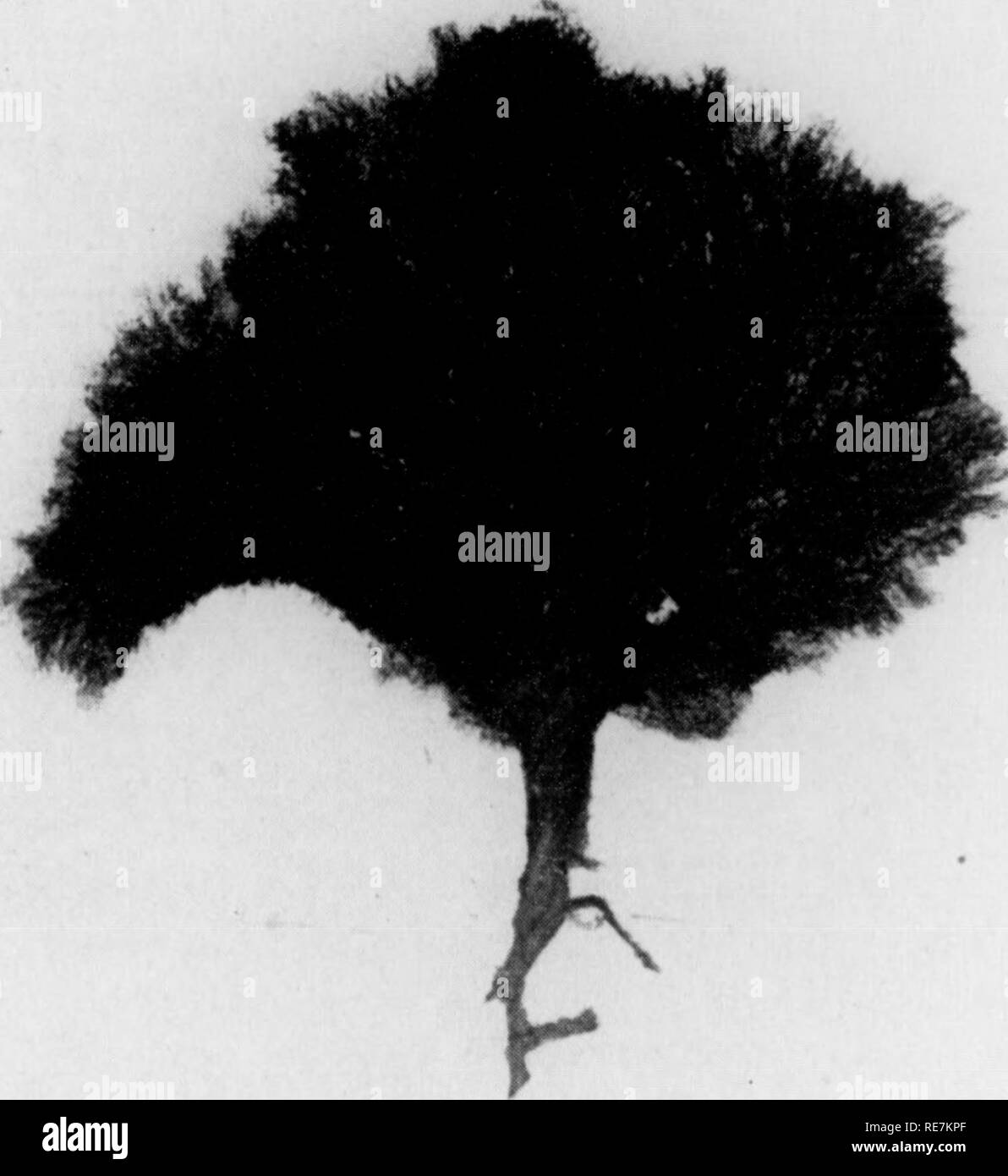 . Contributions from the Botanical Laboratory, vol. 7. Botany; Botany. 630 AMERICAN JOURNAL OF BOTANY [Vol. 17. Rhiphilia tomentosa Kg.—Text figure i.—Ilassler: Dredged off Cabo Frio. Plants to lo cm. broad and 7 cm. tall, the base of the stipe being broken away; the spine-tipped branches of the flabellar filaments were quite distinct. Udotea cyathiformis Decne.—Ilassler: Dredged near the Abrolhos Ids. Plants of fair size, papery-thin and funnel-shaped.. Tkxt Fig. i. Rhiphilia tomentosa, smaller si)ecimen. The measurements were taken from larger material, but this individual s'lowed gre iter s Stock Photohttps://www.alamy.com/image-license-details/?v=1https://www.alamy.com/contributions-from-the-botanical-laboratory-vol-7-botany-botany-630-american-journal-of-botany-vol-17-rhiphilia-tomentosa-kgtext-figure-iilassler-dredged-off-cabo-frio-plants-to-lo-cm-broad-and-7-cm-tall-the-base-of-the-stipe-being-broken-away-the-spine-tipped-branches-of-the-flabellar-filaments-were-quite-distinct-udotea-cyathiformis-decneilassler-dredged-near-the-abrolhos-ids-plants-of-fair-size-papery-thin-and-funnel-shaped-tkxt-fig-i-rhiphilia-tomentosa-smaller-siecimen-the-measurements-were-taken-from-larger-material-but-this-individual-slowed-gre-iter-s-image232509159.html
. Contributions from the Botanical Laboratory, vol. 7. Botany; Botany. 630 AMERICAN JOURNAL OF BOTANY [Vol. 17. Rhiphilia tomentosa Kg.—Text figure i.—Ilassler: Dredged off Cabo Frio. Plants to lo cm. broad and 7 cm. tall, the base of the stipe being broken away; the spine-tipped branches of the flabellar filaments were quite distinct. Udotea cyathiformis Decne.—Ilassler: Dredged near the Abrolhos Ids. Plants of fair size, papery-thin and funnel-shaped.. Tkxt Fig. i. Rhiphilia tomentosa, smaller si)ecimen. The measurements were taken from larger material, but this individual s'lowed gre iter s Stock Photohttps://www.alamy.com/image-license-details/?v=1https://www.alamy.com/contributions-from-the-botanical-laboratory-vol-7-botany-botany-630-american-journal-of-botany-vol-17-rhiphilia-tomentosa-kgtext-figure-iilassler-dredged-off-cabo-frio-plants-to-lo-cm-broad-and-7-cm-tall-the-base-of-the-stipe-being-broken-away-the-spine-tipped-branches-of-the-flabellar-filaments-were-quite-distinct-udotea-cyathiformis-decneilassler-dredged-near-the-abrolhos-ids-plants-of-fair-size-papery-thin-and-funnel-shaped-tkxt-fig-i-rhiphilia-tomentosa-smaller-siecimen-the-measurements-were-taken-from-larger-material-but-this-individual-slowed-gre-iter-s-image232509159.htmlRMRE7KPF–. Contributions from the Botanical Laboratory, vol. 7. Botany; Botany. 630 AMERICAN JOURNAL OF BOTANY [Vol. 17. Rhiphilia tomentosa Kg.—Text figure i.—Ilassler: Dredged off Cabo Frio. Plants to lo cm. broad and 7 cm. tall, the base of the stipe being broken away; the spine-tipped branches of the flabellar filaments were quite distinct. Udotea cyathiformis Decne.—Ilassler: Dredged near the Abrolhos Ids. Plants of fair size, papery-thin and funnel-shaped.. Tkxt Fig. i. Rhiphilia tomentosa, smaller si)ecimen. The measurements were taken from larger material, but this individual s'lowed gre iter s
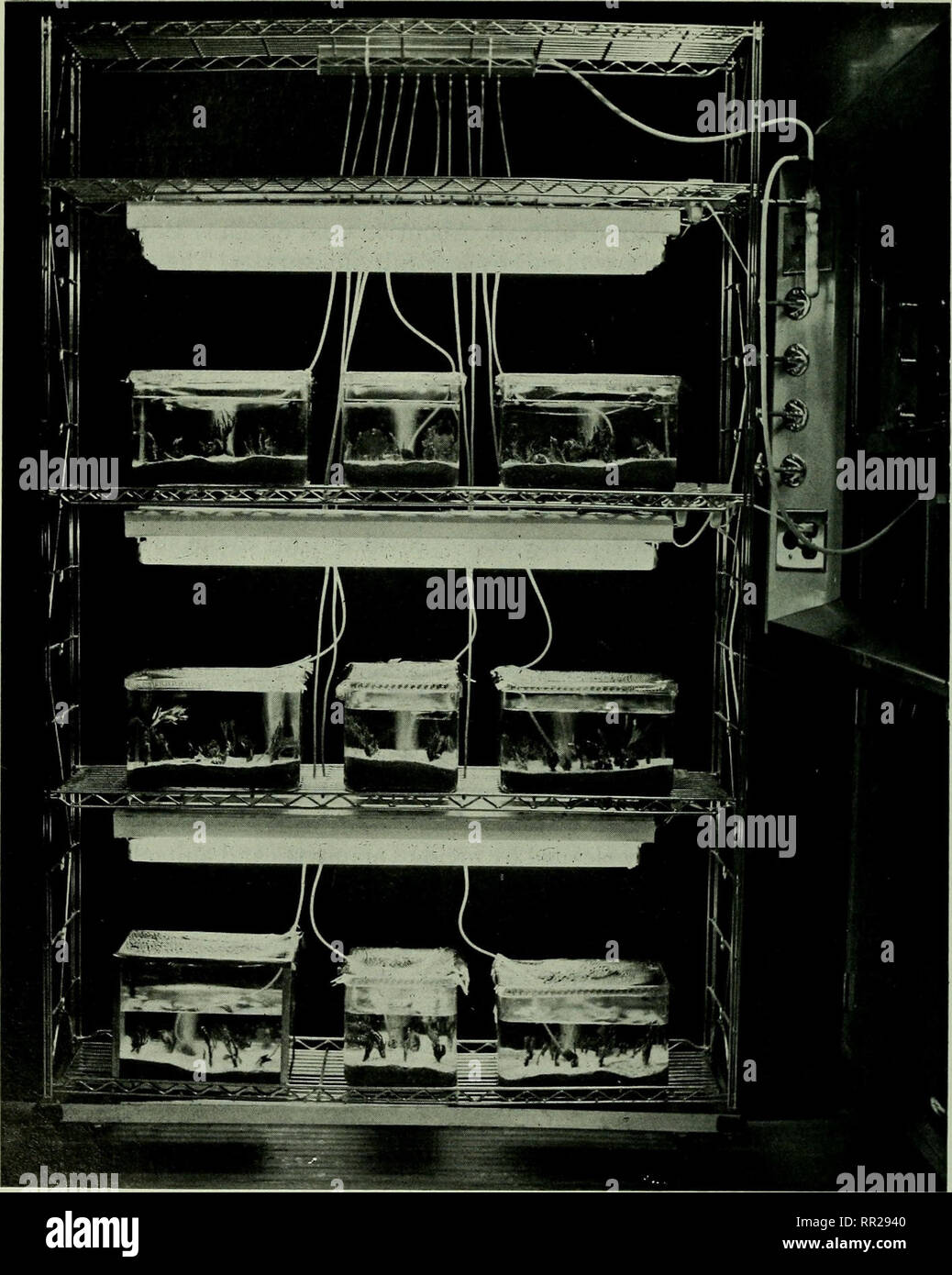 . Advances in marine biology: volume 17. Coral fisheries. Fig. 50. Halimeda cultures in glass aquaria, showing arrangement of lights and aeration system. Compressed air is filtered through glass wool (m tube at far upper right) and enters a manifold (suspended from top shelf). From there is passes through Teflon tubing to a bubbler in each aquarium. The rate of flow to each aquarium is controlled by a tubing clamp. Arrangements similar to this can line the walls of a controlled environment chamber. A Udotea plant is in the left-hand corner of the middle aquariimi in the upper row. (From Colinv Stock Photohttps://www.alamy.com/image-license-details/?v=1https://www.alamy.com/advances-in-marine-biology-volume-17-coral-fisheries-fig-50-halimeda-cultures-in-glass-aquaria-showing-arrangement-of-lights-and-aeration-system-compressed-air-is-filtered-through-glass-wool-m-tube-at-far-upper-right-and-enters-a-manifold-suspended-from-top-shelf-from-there-is-passes-through-teflon-tubing-to-a-bubbler-in-each-aquarium-the-rate-of-flow-to-each-aquarium-is-controlled-by-a-tubing-clamp-arrangements-similar-to-this-can-line-the-walls-of-a-controlled-environment-chamber-a-udotea-plant-is-in-the-left-hand-corner-of-the-middle-aquariimi-in-the-upper-row-from-colinv-image237922944.html
. Advances in marine biology: volume 17. Coral fisheries. Fig. 50. Halimeda cultures in glass aquaria, showing arrangement of lights and aeration system. Compressed air is filtered through glass wool (m tube at far upper right) and enters a manifold (suspended from top shelf). From there is passes through Teflon tubing to a bubbler in each aquarium. The rate of flow to each aquarium is controlled by a tubing clamp. Arrangements similar to this can line the walls of a controlled environment chamber. A Udotea plant is in the left-hand corner of the middle aquariimi in the upper row. (From Colinv Stock Photohttps://www.alamy.com/image-license-details/?v=1https://www.alamy.com/advances-in-marine-biology-volume-17-coral-fisheries-fig-50-halimeda-cultures-in-glass-aquaria-showing-arrangement-of-lights-and-aeration-system-compressed-air-is-filtered-through-glass-wool-m-tube-at-far-upper-right-and-enters-a-manifold-suspended-from-top-shelf-from-there-is-passes-through-teflon-tubing-to-a-bubbler-in-each-aquarium-the-rate-of-flow-to-each-aquarium-is-controlled-by-a-tubing-clamp-arrangements-similar-to-this-can-line-the-walls-of-a-controlled-environment-chamber-a-udotea-plant-is-in-the-left-hand-corner-of-the-middle-aquariimi-in-the-upper-row-from-colinv-image237922944.htmlRMRR2940–. Advances in marine biology: volume 17. Coral fisheries. Fig. 50. Halimeda cultures in glass aquaria, showing arrangement of lights and aeration system. Compressed air is filtered through glass wool (m tube at far upper right) and enters a manifold (suspended from top shelf). From there is passes through Teflon tubing to a bubbler in each aquarium. The rate of flow to each aquarium is controlled by a tubing clamp. Arrangements similar to this can line the walls of a controlled environment chamber. A Udotea plant is in the left-hand corner of the middle aquariimi in the upper row. (From Colinv
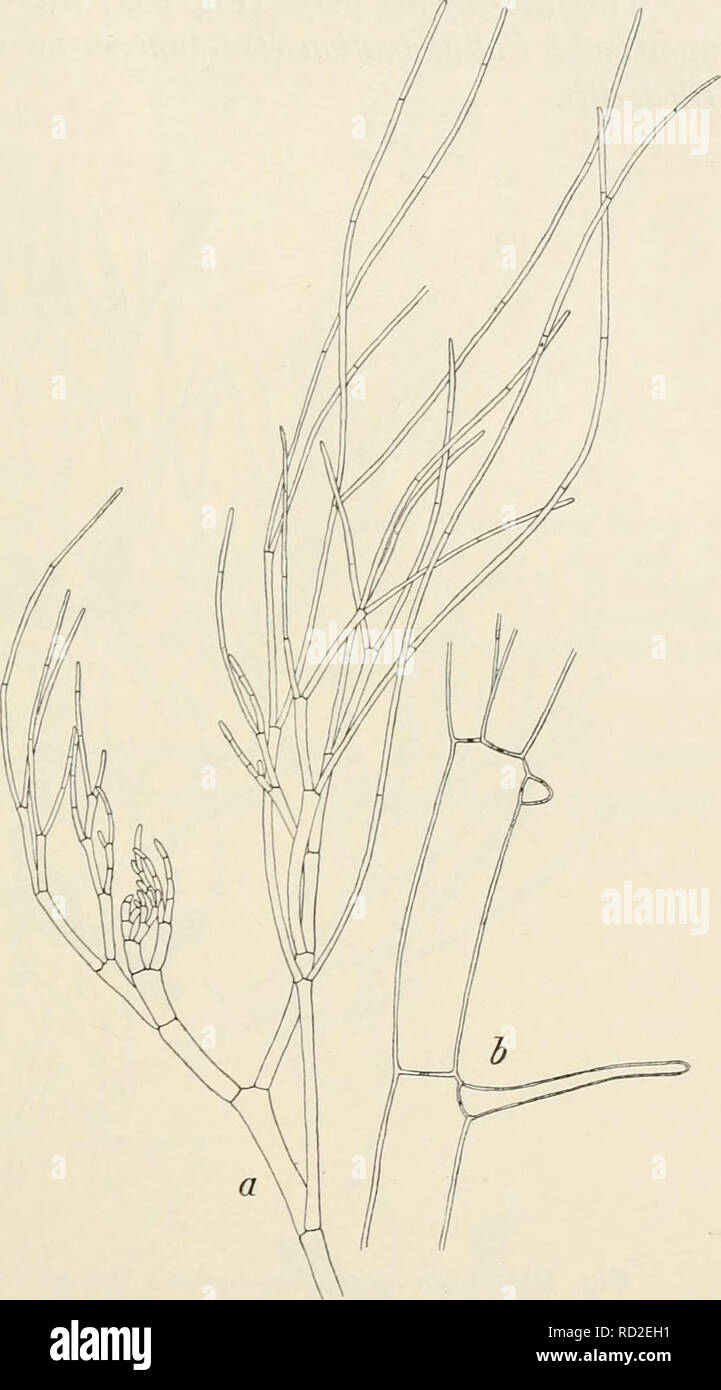 . Dansk botanisk arkiv. Plants; Plants -- Denmark. F. Børgesen: Rhodophyceæ of the Danish W. Indies. 221 The plant grows epiphytically upon larger algæ, e. g. Hali- meda, Udotea, Avrainvillea and forms entangled masses together with Cladophora crispula, Cladophoropsis etc. It is fastened to the host plants by means of rhizoids growing out from the cells in the main filaments, often rather high up in the plants (Fig. 208 b); the primary base I have not seen. The rhizoids end in small, irregularly shaped discs. The plant has no cortical layer. The cells in the main fila- ments are nearly cylin- Stock Photohttps://www.alamy.com/image-license-details/?v=1https://www.alamy.com/dansk-botanisk-arkiv-plants-plants-denmark-f-brgesen-rhodophyce-of-the-danish-w-indies-221-the-plant-grows-epiphytically-upon-larger-alg-e-g-hali-meda-udotea-avrainvillea-and-forms-entangled-masses-together-with-cladophora-crispula-cladophoropsis-etc-it-is-fastened-to-the-host-plants-by-means-of-rhizoids-growing-out-from-the-cells-in-the-main-filaments-often-rather-high-up-in-the-plants-fig-208-b-the-primary-base-i-have-not-seen-the-rhizoids-end-in-small-irregularly-shaped-discs-the-plant-has-no-cortical-layer-the-cells-in-the-main-fila-ments-are-nearly-cylin-image231780669.html
. Dansk botanisk arkiv. Plants; Plants -- Denmark. F. Børgesen: Rhodophyceæ of the Danish W. Indies. 221 The plant grows epiphytically upon larger algæ, e. g. Hali- meda, Udotea, Avrainvillea and forms entangled masses together with Cladophora crispula, Cladophoropsis etc. It is fastened to the host plants by means of rhizoids growing out from the cells in the main filaments, often rather high up in the plants (Fig. 208 b); the primary base I have not seen. The rhizoids end in small, irregularly shaped discs. The plant has no cortical layer. The cells in the main fila- ments are nearly cylin- Stock Photohttps://www.alamy.com/image-license-details/?v=1https://www.alamy.com/dansk-botanisk-arkiv-plants-plants-denmark-f-brgesen-rhodophyce-of-the-danish-w-indies-221-the-plant-grows-epiphytically-upon-larger-alg-e-g-hali-meda-udotea-avrainvillea-and-forms-entangled-masses-together-with-cladophora-crispula-cladophoropsis-etc-it-is-fastened-to-the-host-plants-by-means-of-rhizoids-growing-out-from-the-cells-in-the-main-filaments-often-rather-high-up-in-the-plants-fig-208-b-the-primary-base-i-have-not-seen-the-rhizoids-end-in-small-irregularly-shaped-discs-the-plant-has-no-cortical-layer-the-cells-in-the-main-fila-ments-are-nearly-cylin-image231780669.htmlRMRD2EH1–. Dansk botanisk arkiv. Plants; Plants -- Denmark. F. Børgesen: Rhodophyceæ of the Danish W. Indies. 221 The plant grows epiphytically upon larger algæ, e. g. Hali- meda, Udotea, Avrainvillea and forms entangled masses together with Cladophora crispula, Cladophoropsis etc. It is fastened to the host plants by means of rhizoids growing out from the cells in the main filaments, often rather high up in the plants (Fig. 208 b); the primary base I have not seen. The rhizoids end in small, irregularly shaped discs. The plant has no cortical layer. The cells in the main fila- ments are nearly cylin-
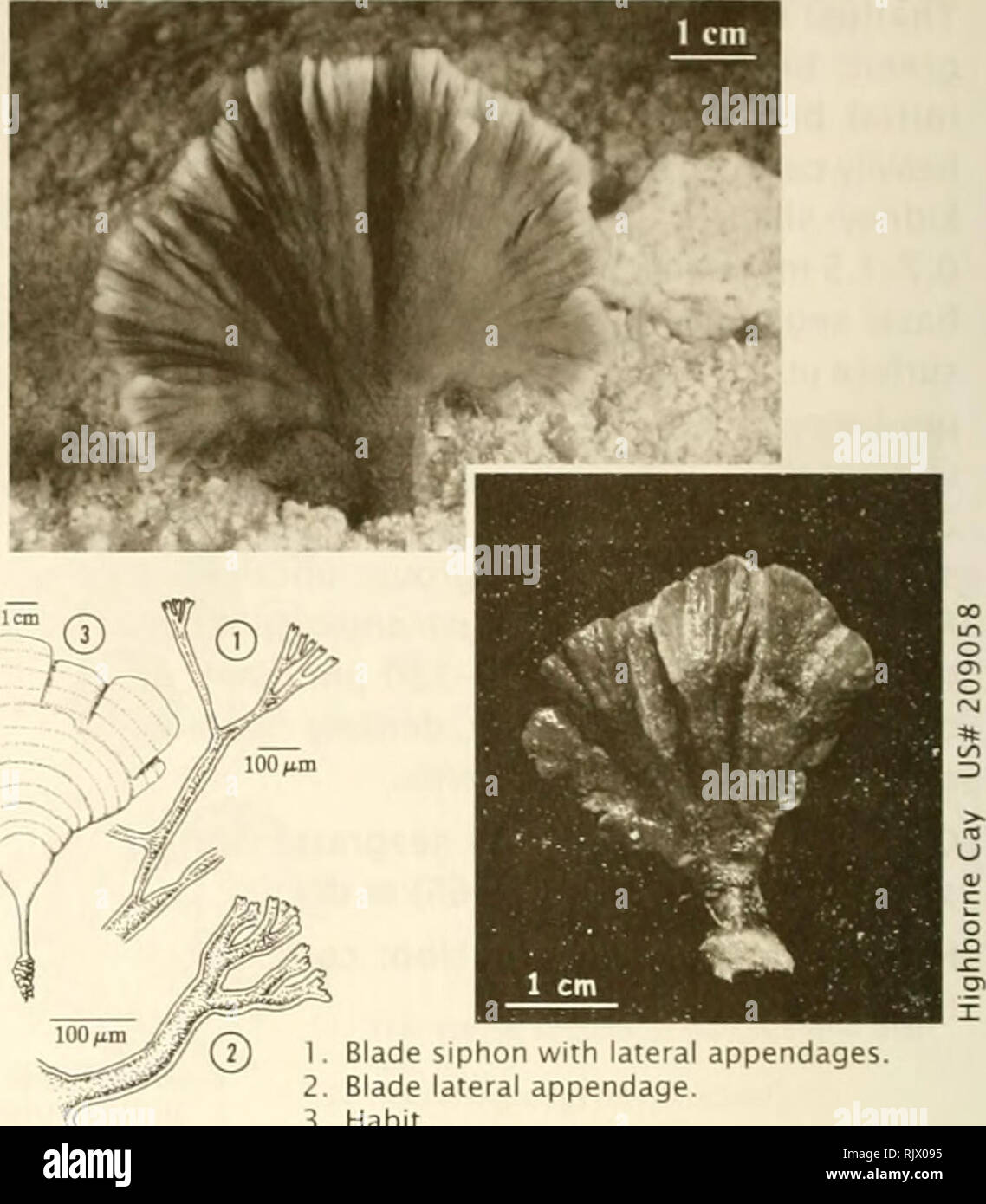 . Atoll research bulletin. Coral reefs and islands; Marine biology; Marine sciences. 86 UdOtea flabelllim (J- Ellis & Solander) M. Howe 1904: 94 Thallus: fan- shaped, moderately calci ed, solitary, to 30 cm high, pale green to dark green. Blade variable, undivided to highly divided, size variable, 0.8-1.5 mm thick, leathery, corticated; zonation distinct; siphons 30-50 urn diam., constrictions above infre- quent dichotomies absent or slightly uneven; lateral appendages irregularly spaced, long stemmed, dichotomously branched with crowded, short, rounded apices, apices appear shrunken or at Stock Photohttps://www.alamy.com/image-license-details/?v=1https://www.alamy.com/atoll-research-bulletin-coral-reefs-and-islands-marine-biology-marine-sciences-86-udotea-flabelllim-j-ellis-amp-solander-m-howe-1904-94-thallus-fan-shaped-moderately-calci-ed-solitary-to-30-cm-high-pale-green-to-dark-green-blade-variable-undivided-to-highly-divided-size-variable-08-15-mm-thick-leathery-corticated-zonation-distinct-siphons-30-50-urn-diam-constrictions-above-infre-quent-dichotomies-absent-or-slightly-uneven-lateral-appendages-irregularly-spaced-long-stemmed-dichotomously-branched-with-crowded-short-rounded-apices-apices-appear-shrunken-or-at-image235369601.html
. Atoll research bulletin. Coral reefs and islands; Marine biology; Marine sciences. 86 UdOtea flabelllim (J- Ellis & Solander) M. Howe 1904: 94 Thallus: fan- shaped, moderately calci ed, solitary, to 30 cm high, pale green to dark green. Blade variable, undivided to highly divided, size variable, 0.8-1.5 mm thick, leathery, corticated; zonation distinct; siphons 30-50 urn diam., constrictions above infre- quent dichotomies absent or slightly uneven; lateral appendages irregularly spaced, long stemmed, dichotomously branched with crowded, short, rounded apices, apices appear shrunken or at Stock Photohttps://www.alamy.com/image-license-details/?v=1https://www.alamy.com/atoll-research-bulletin-coral-reefs-and-islands-marine-biology-marine-sciences-86-udotea-flabelllim-j-ellis-amp-solander-m-howe-1904-94-thallus-fan-shaped-moderately-calci-ed-solitary-to-30-cm-high-pale-green-to-dark-green-blade-variable-undivided-to-highly-divided-size-variable-08-15-mm-thick-leathery-corticated-zonation-distinct-siphons-30-50-urn-diam-constrictions-above-infre-quent-dichotomies-absent-or-slightly-uneven-lateral-appendages-irregularly-spaced-long-stemmed-dichotomously-branched-with-crowded-short-rounded-apices-apices-appear-shrunken-or-at-image235369601.htmlRMRJX095–. Atoll research bulletin. Coral reefs and islands; Marine biology; Marine sciences. 86 UdOtea flabelllim (J- Ellis & Solander) M. Howe 1904: 94 Thallus: fan- shaped, moderately calci ed, solitary, to 30 cm high, pale green to dark green. Blade variable, undivided to highly divided, size variable, 0.8-1.5 mm thick, leathery, corticated; zonation distinct; siphons 30-50 urn diam., constrictions above infre- quent dichotomies absent or slightly uneven; lateral appendages irregularly spaced, long stemmed, dichotomously branched with crowded, short, rounded apices, apices appear shrunken or at
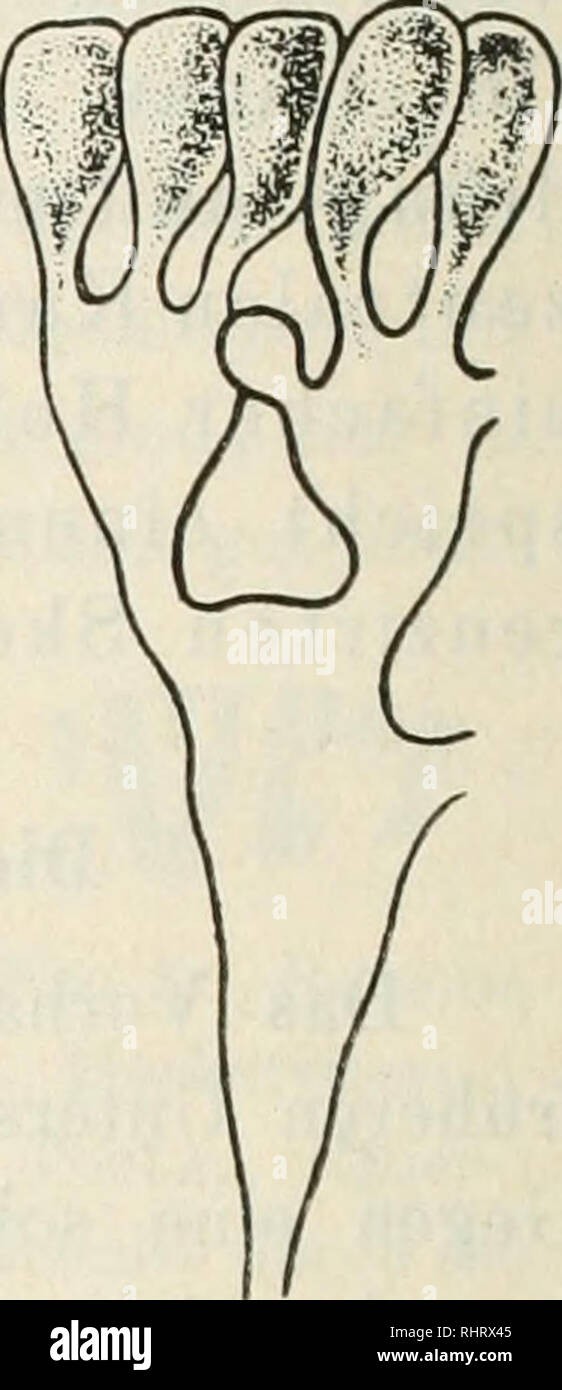 . Berichte der Naturforschenden Gesellschaft zu Freiburg i. Br. Science. und Halimeda (von der unsicheren Gattung Rhipidosiphon abgesehen). Nach der Verzweigungsweise der letzten, gewöhnlich ein Rinden- gewebe bildenden Zellendigungen kann man sie in zwei Gruppen bringen, von denen die eine Penicillus, Rhi- pocephalus und Udotea, die andere Halimeda umfasst. Bei der ersteren Gruppe entstehen die letzten sehr feinen Ver- zweigungen plötzlich aus re- lativ dicken Zellschläuchen in grosser Zahl, bei Halimeda da- gegen verästeln sich die weiten Zellschläuche, welche das Mark- gewebe bilden, allmäh Stock Photohttps://www.alamy.com/image-license-details/?v=1https://www.alamy.com/berichte-der-naturforschenden-gesellschaft-zu-freiburg-i-br-science-und-halimeda-von-der-unsicheren-gattung-rhipidosiphon-abgesehen-nach-der-verzweigungsweise-der-letzten-gewhnlich-ein-rinden-gewebe-bildenden-zellendigungen-kann-man-sie-in-zwei-gruppen-bringen-von-denen-die-eine-penicillus-rhi-pocephalus-und-udotea-die-andere-halimeda-umfasst-bei-der-ersteren-gruppe-entstehen-die-letzten-sehr-feinen-ver-zweigungen-pltzlich-aus-re-lativ-dicken-zellschluchen-in-grosser-zahl-bei-halimeda-da-gegen-versteln-sich-die-weiten-zellschluche-welche-das-mark-gewebe-bilden-allmh-image234709333.html
. Berichte der Naturforschenden Gesellschaft zu Freiburg i. Br. Science. und Halimeda (von der unsicheren Gattung Rhipidosiphon abgesehen). Nach der Verzweigungsweise der letzten, gewöhnlich ein Rinden- gewebe bildenden Zellendigungen kann man sie in zwei Gruppen bringen, von denen die eine Penicillus, Rhi- pocephalus und Udotea, die andere Halimeda umfasst. Bei der ersteren Gruppe entstehen die letzten sehr feinen Ver- zweigungen plötzlich aus re- lativ dicken Zellschläuchen in grosser Zahl, bei Halimeda da- gegen verästeln sich die weiten Zellschläuche, welche das Mark- gewebe bilden, allmäh Stock Photohttps://www.alamy.com/image-license-details/?v=1https://www.alamy.com/berichte-der-naturforschenden-gesellschaft-zu-freiburg-i-br-science-und-halimeda-von-der-unsicheren-gattung-rhipidosiphon-abgesehen-nach-der-verzweigungsweise-der-letzten-gewhnlich-ein-rinden-gewebe-bildenden-zellendigungen-kann-man-sie-in-zwei-gruppen-bringen-von-denen-die-eine-penicillus-rhi-pocephalus-und-udotea-die-andere-halimeda-umfasst-bei-der-ersteren-gruppe-entstehen-die-letzten-sehr-feinen-ver-zweigungen-pltzlich-aus-re-lativ-dicken-zellschluchen-in-grosser-zahl-bei-halimeda-da-gegen-versteln-sich-die-weiten-zellschluche-welche-das-mark-gewebe-bilden-allmh-image234709333.htmlRMRHRX45–. Berichte der Naturforschenden Gesellschaft zu Freiburg i. Br. Science. und Halimeda (von der unsicheren Gattung Rhipidosiphon abgesehen). Nach der Verzweigungsweise der letzten, gewöhnlich ein Rinden- gewebe bildenden Zellendigungen kann man sie in zwei Gruppen bringen, von denen die eine Penicillus, Rhi- pocephalus und Udotea, die andere Halimeda umfasst. Bei der ersteren Gruppe entstehen die letzten sehr feinen Ver- zweigungen plötzlich aus re- lativ dicken Zellschläuchen in grosser Zahl, bei Halimeda da- gegen verästeln sich die weiten Zellschläuche, welche das Mark- gewebe bilden, allmäh
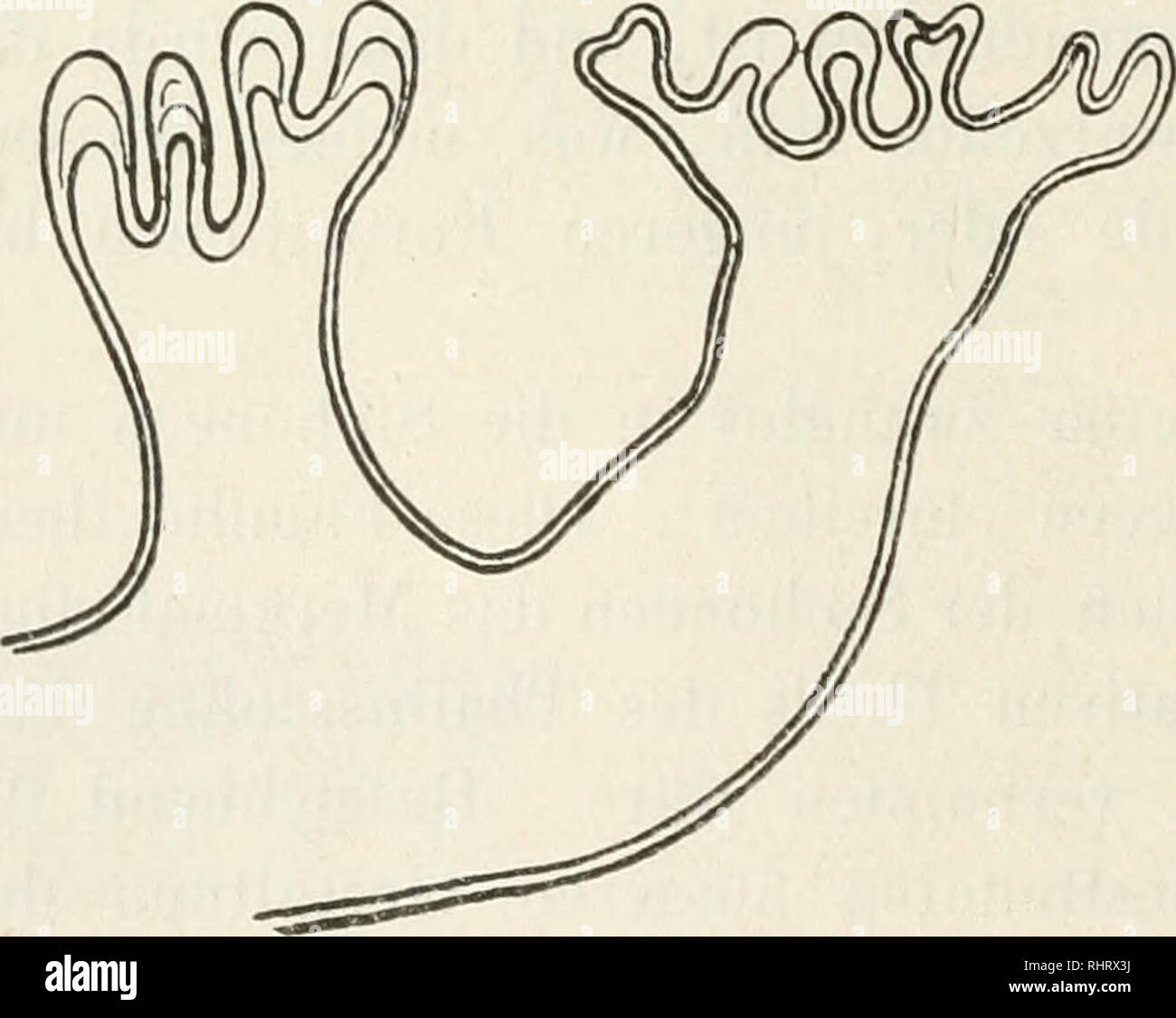 . Berichte der Naturforschenden Gesellschaft zu Freiburg i. Br. Science. und Halimeda (von der unsicheren Gattung Rhipidosiphon abgesehen). Nach der Verzweigungsweise der letzten, gewöhnlich ein Rinden- gewebe bildenden Zellendigungen kann man sie in zwei Gruppen bringen, von denen die eine Penicillus, Rhi- pocephalus und Udotea, die andere Halimeda umfasst. Bei der ersteren Gruppe entstehen die letzten sehr feinen Ver- zweigungen plötzlich aus re- lativ dicken Zellschläuchen in grosser Zahl, bei Halimeda da- gegen verästeln sich die weiten Zellschläuche, welche das Mark- gewebe bilden, allmäh Stock Photohttps://www.alamy.com/image-license-details/?v=1https://www.alamy.com/berichte-der-naturforschenden-gesellschaft-zu-freiburg-i-br-science-und-halimeda-von-der-unsicheren-gattung-rhipidosiphon-abgesehen-nach-der-verzweigungsweise-der-letzten-gewhnlich-ein-rinden-gewebe-bildenden-zellendigungen-kann-man-sie-in-zwei-gruppen-bringen-von-denen-die-eine-penicillus-rhi-pocephalus-und-udotea-die-andere-halimeda-umfasst-bei-der-ersteren-gruppe-entstehen-die-letzten-sehr-feinen-ver-zweigungen-pltzlich-aus-re-lativ-dicken-zellschluchen-in-grosser-zahl-bei-halimeda-da-gegen-versteln-sich-die-weiten-zellschluche-welche-das-mark-gewebe-bilden-allmh-image234709318.html
. Berichte der Naturforschenden Gesellschaft zu Freiburg i. Br. Science. und Halimeda (von der unsicheren Gattung Rhipidosiphon abgesehen). Nach der Verzweigungsweise der letzten, gewöhnlich ein Rinden- gewebe bildenden Zellendigungen kann man sie in zwei Gruppen bringen, von denen die eine Penicillus, Rhi- pocephalus und Udotea, die andere Halimeda umfasst. Bei der ersteren Gruppe entstehen die letzten sehr feinen Ver- zweigungen plötzlich aus re- lativ dicken Zellschläuchen in grosser Zahl, bei Halimeda da- gegen verästeln sich die weiten Zellschläuche, welche das Mark- gewebe bilden, allmäh Stock Photohttps://www.alamy.com/image-license-details/?v=1https://www.alamy.com/berichte-der-naturforschenden-gesellschaft-zu-freiburg-i-br-science-und-halimeda-von-der-unsicheren-gattung-rhipidosiphon-abgesehen-nach-der-verzweigungsweise-der-letzten-gewhnlich-ein-rinden-gewebe-bildenden-zellendigungen-kann-man-sie-in-zwei-gruppen-bringen-von-denen-die-eine-penicillus-rhi-pocephalus-und-udotea-die-andere-halimeda-umfasst-bei-der-ersteren-gruppe-entstehen-die-letzten-sehr-feinen-ver-zweigungen-pltzlich-aus-re-lativ-dicken-zellschluchen-in-grosser-zahl-bei-halimeda-da-gegen-versteln-sich-die-weiten-zellschluche-welche-das-mark-gewebe-bilden-allmh-image234709318.htmlRMRHRX3J–. Berichte der Naturforschenden Gesellschaft zu Freiburg i. Br. Science. und Halimeda (von der unsicheren Gattung Rhipidosiphon abgesehen). Nach der Verzweigungsweise der letzten, gewöhnlich ein Rinden- gewebe bildenden Zellendigungen kann man sie in zwei Gruppen bringen, von denen die eine Penicillus, Rhi- pocephalus und Udotea, die andere Halimeda umfasst. Bei der ersteren Gruppe entstehen die letzten sehr feinen Ver- zweigungen plötzlich aus re- lativ dicken Zellschläuchen in grosser Zahl, bei Halimeda da- gegen verästeln sich die weiten Zellschläuche, welche das Mark- gewebe bilden, allmäh
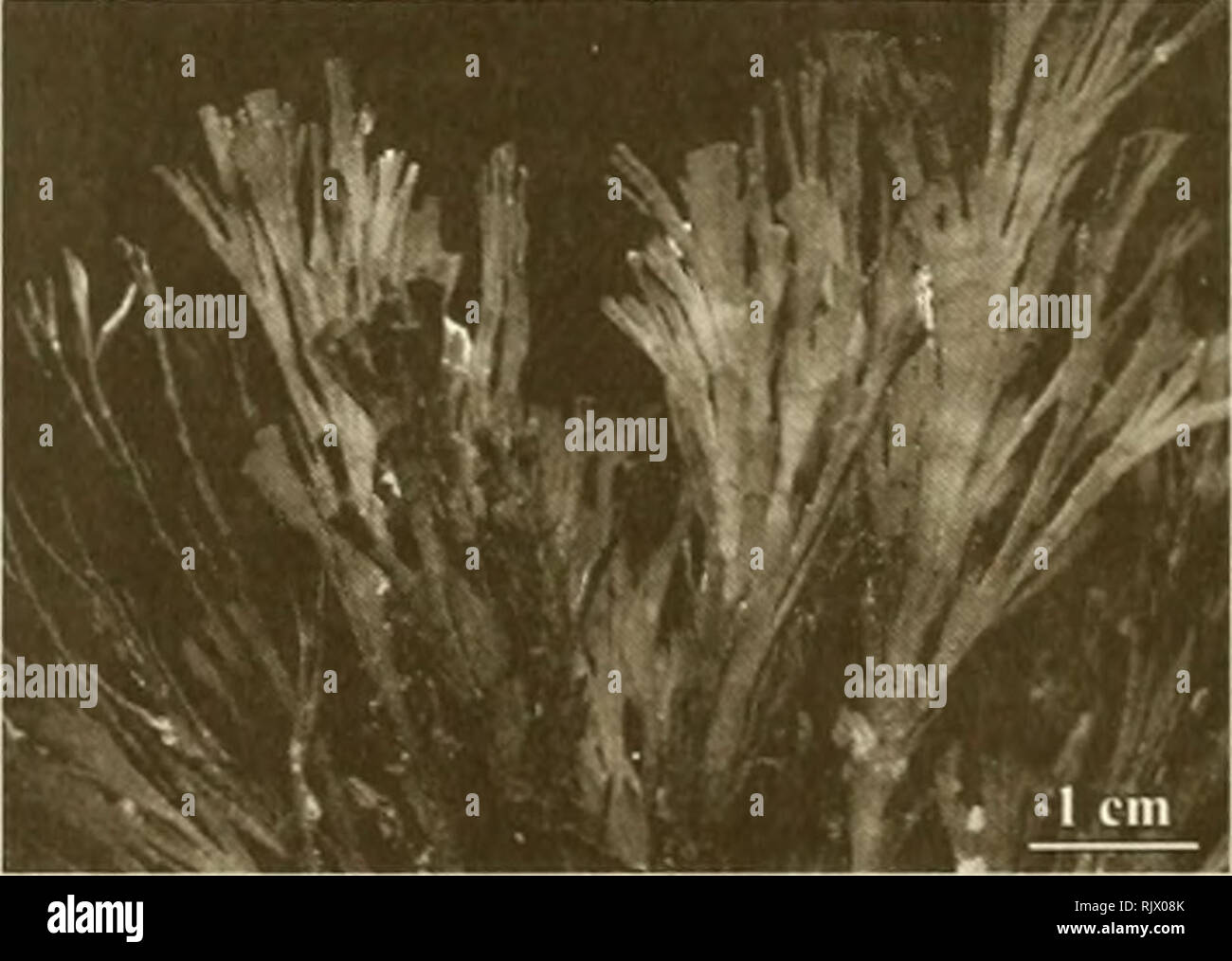 . Atoll research bulletin. Coral reefs and islands; Marine biology; Marine sciences. Blade siphon with lateral appendages. Blade lateral appendage. Habit. Phylum Chlorophyta Class Bryopsidophyceae Order Bryopsidales Family Udoteaceae Udotea norrisii d.s. Littler & m.m. Littler 1990a: 235 Thallus: coarse, bushy, heavily calci ed, to 1 1 cm high, gray- green. Blades irregularly dissected into long linear segments, 1 - 3 mm wide, 1-2 mm thick, corticated; zonation distinct; siphons 40-80 urn diam., unevenly constricted above dichotomies; lateral appendages widely spaced, irregular, long- stem Stock Photohttps://www.alamy.com/image-license-details/?v=1https://www.alamy.com/atoll-research-bulletin-coral-reefs-and-islands-marine-biology-marine-sciences-blade-siphon-with-lateral-appendages-blade-lateral-appendage-habit-phylum-chlorophyta-class-bryopsidophyceae-order-bryopsidales-family-udoteaceae-udotea-norrisii-ds-littler-amp-mm-littler-1990a-235-thallus-coarse-bushy-heavily-calci-ed-to-1-1-cm-high-gray-green-blades-irregularly-dissected-into-long-linear-segments-1-3-mm-wide-1-2-mm-thick-corticated-zonation-distinct-siphons-40-80-urn-diam-unevenly-constricted-above-dichotomies-lateral-appendages-widely-spaced-irregular-long-stem-image235369587.html
. Atoll research bulletin. Coral reefs and islands; Marine biology; Marine sciences. Blade siphon with lateral appendages. Blade lateral appendage. Habit. Phylum Chlorophyta Class Bryopsidophyceae Order Bryopsidales Family Udoteaceae Udotea norrisii d.s. Littler & m.m. Littler 1990a: 235 Thallus: coarse, bushy, heavily calci ed, to 1 1 cm high, gray- green. Blades irregularly dissected into long linear segments, 1 - 3 mm wide, 1-2 mm thick, corticated; zonation distinct; siphons 40-80 urn diam., unevenly constricted above dichotomies; lateral appendages widely spaced, irregular, long- stem Stock Photohttps://www.alamy.com/image-license-details/?v=1https://www.alamy.com/atoll-research-bulletin-coral-reefs-and-islands-marine-biology-marine-sciences-blade-siphon-with-lateral-appendages-blade-lateral-appendage-habit-phylum-chlorophyta-class-bryopsidophyceae-order-bryopsidales-family-udoteaceae-udotea-norrisii-ds-littler-amp-mm-littler-1990a-235-thallus-coarse-bushy-heavily-calci-ed-to-1-1-cm-high-gray-green-blades-irregularly-dissected-into-long-linear-segments-1-3-mm-wide-1-2-mm-thick-corticated-zonation-distinct-siphons-40-80-urn-diam-unevenly-constricted-above-dichotomies-lateral-appendages-widely-spaced-irregular-long-stem-image235369587.htmlRMRJX08K–. Atoll research bulletin. Coral reefs and islands; Marine biology; Marine sciences. Blade siphon with lateral appendages. Blade lateral appendage. Habit. Phylum Chlorophyta Class Bryopsidophyceae Order Bryopsidales Family Udoteaceae Udotea norrisii d.s. Littler & m.m. Littler 1990a: 235 Thallus: coarse, bushy, heavily calci ed, to 1 1 cm high, gray- green. Blades irregularly dissected into long linear segments, 1 - 3 mm wide, 1-2 mm thick, corticated; zonation distinct; siphons 40-80 urn diam., unevenly constricted above dichotomies; lateral appendages widely spaced, irregular, long- stem
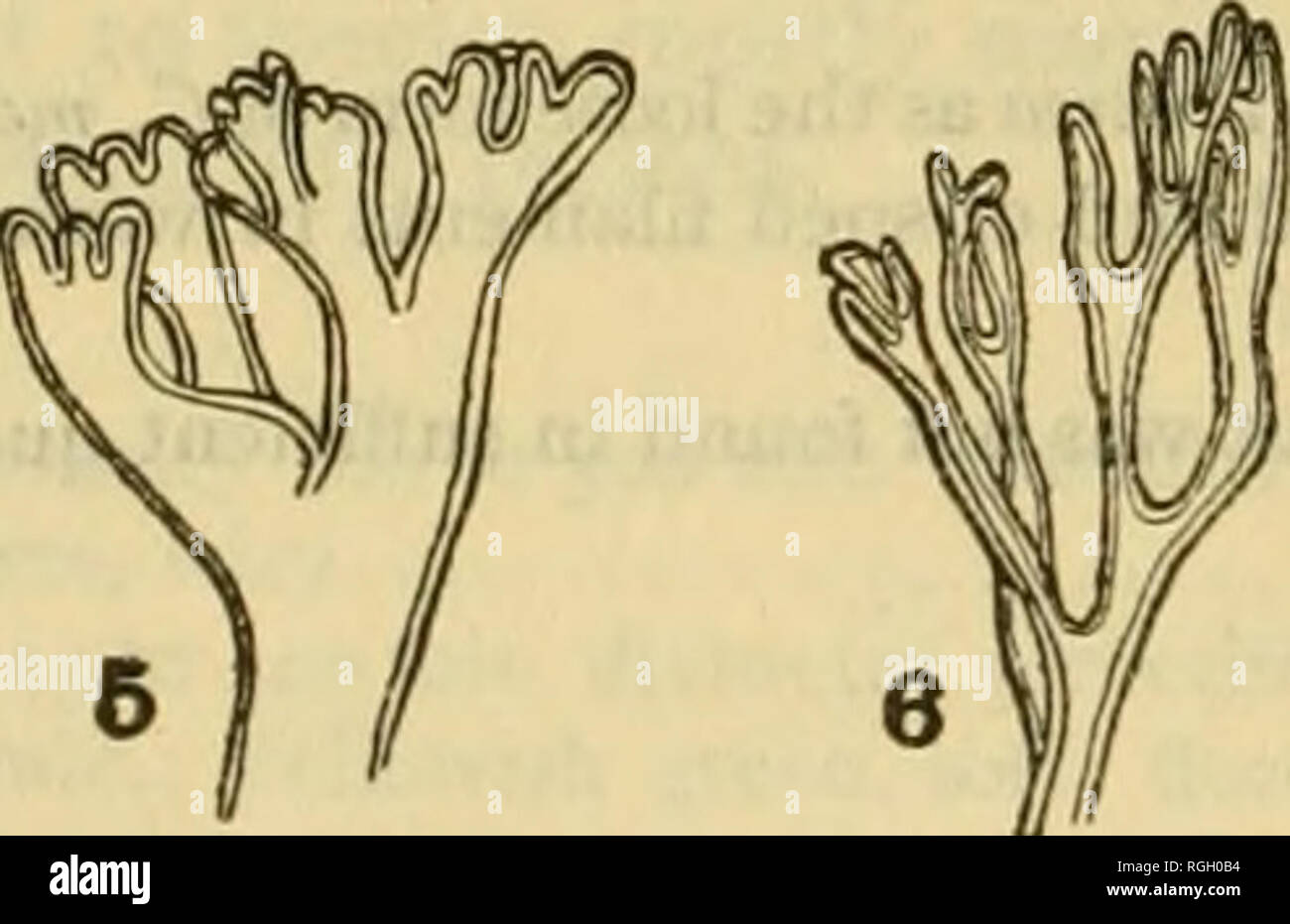 . Bulletin of the Bureau of Fisheries. Fisheries; Fish culture. Fig. 4.—Gomonlia polyrhiza, after Lagerheim (i88s). A Vegetative cell; B, Aplanosporangium. Fig. 5.—Udotea cyathi/ormis. X7S. af(er Howe (1909). Apices of cortical filaments of stipe. Fig. 6.—Udotea congluUnaia, X78. after Howe (1909). Apices of cortical filameats of stipe. Fig. i.—Ulvella lens, after Crouan (1859). A. Section of thallus; B. Surface view. Fig. 2.—A, CiuEUiTncTpha linum f. airea; B. Chtctomarpha brachygona; C. Chstomorpha melaxjonium f. rupincola. X4:. Fig. 3.—Rhizodonium riparium. A. X4r: B. X281. 3. Chsetomorpha Stock Photohttps://www.alamy.com/image-license-details/?v=1https://www.alamy.com/bulletin-of-the-bureau-of-fisheries-fisheries-fish-culture-fig-4gomonlia-polyrhiza-after-lagerheim-i88s-a-vegetative-cell-b-aplanosporangium-fig-5udotea-cyathiormis-x7s-afer-howe-1909-apices-of-cortical-filaments-of-stipe-fig-6udotea-congluunaia-x78-after-howe-1909-apices-of-cortical-filameats-of-stipe-fig-iulvella-lens-after-crouan-1859-a-section-of-thallus-b-surface-view-fig-2a-ciueuitnctpha-linum-f-airea-b-chtctomarpha-brachygona-c-chstomorpha-melaxjonium-f-rupincola-x4-fig-3rhizodonium-riparium-a-x4r-b-x281-3-chsetomorpha-image233942776.html
. Bulletin of the Bureau of Fisheries. Fisheries; Fish culture. Fig. 4.—Gomonlia polyrhiza, after Lagerheim (i88s). A Vegetative cell; B, Aplanosporangium. Fig. 5.—Udotea cyathi/ormis. X7S. af(er Howe (1909). Apices of cortical filaments of stipe. Fig. 6.—Udotea congluUnaia, X78. after Howe (1909). Apices of cortical filameats of stipe. Fig. i.—Ulvella lens, after Crouan (1859). A. Section of thallus; B. Surface view. Fig. 2.—A, CiuEUiTncTpha linum f. airea; B. Chtctomarpha brachygona; C. Chstomorpha melaxjonium f. rupincola. X4:. Fig. 3.—Rhizodonium riparium. A. X4r: B. X281. 3. Chsetomorpha Stock Photohttps://www.alamy.com/image-license-details/?v=1https://www.alamy.com/bulletin-of-the-bureau-of-fisheries-fisheries-fish-culture-fig-4gomonlia-polyrhiza-after-lagerheim-i88s-a-vegetative-cell-b-aplanosporangium-fig-5udotea-cyathiormis-x7s-afer-howe-1909-apices-of-cortical-filaments-of-stipe-fig-6udotea-congluunaia-x78-after-howe-1909-apices-of-cortical-filameats-of-stipe-fig-iulvella-lens-after-crouan-1859-a-section-of-thallus-b-surface-view-fig-2a-ciueuitnctpha-linum-f-airea-b-chtctomarpha-brachygona-c-chstomorpha-melaxjonium-f-rupincola-x4-fig-3rhizodonium-riparium-a-x4r-b-x281-3-chsetomorpha-image233942776.htmlRMRGH0B4–. Bulletin of the Bureau of Fisheries. Fisheries; Fish culture. Fig. 4.—Gomonlia polyrhiza, after Lagerheim (i88s). A Vegetative cell; B, Aplanosporangium. Fig. 5.—Udotea cyathi/ormis. X7S. af(er Howe (1909). Apices of cortical filaments of stipe. Fig. 6.—Udotea congluUnaia, X78. after Howe (1909). Apices of cortical filameats of stipe. Fig. i.—Ulvella lens, after Crouan (1859). A. Section of thallus; B. Surface view. Fig. 2.—A, CiuEUiTncTpha linum f. airea; B. Chtctomarpha brachygona; C. Chstomorpha melaxjonium f. rupincola. X4:. Fig. 3.—Rhizodonium riparium. A. X4r: B. X281. 3. Chsetomorpha
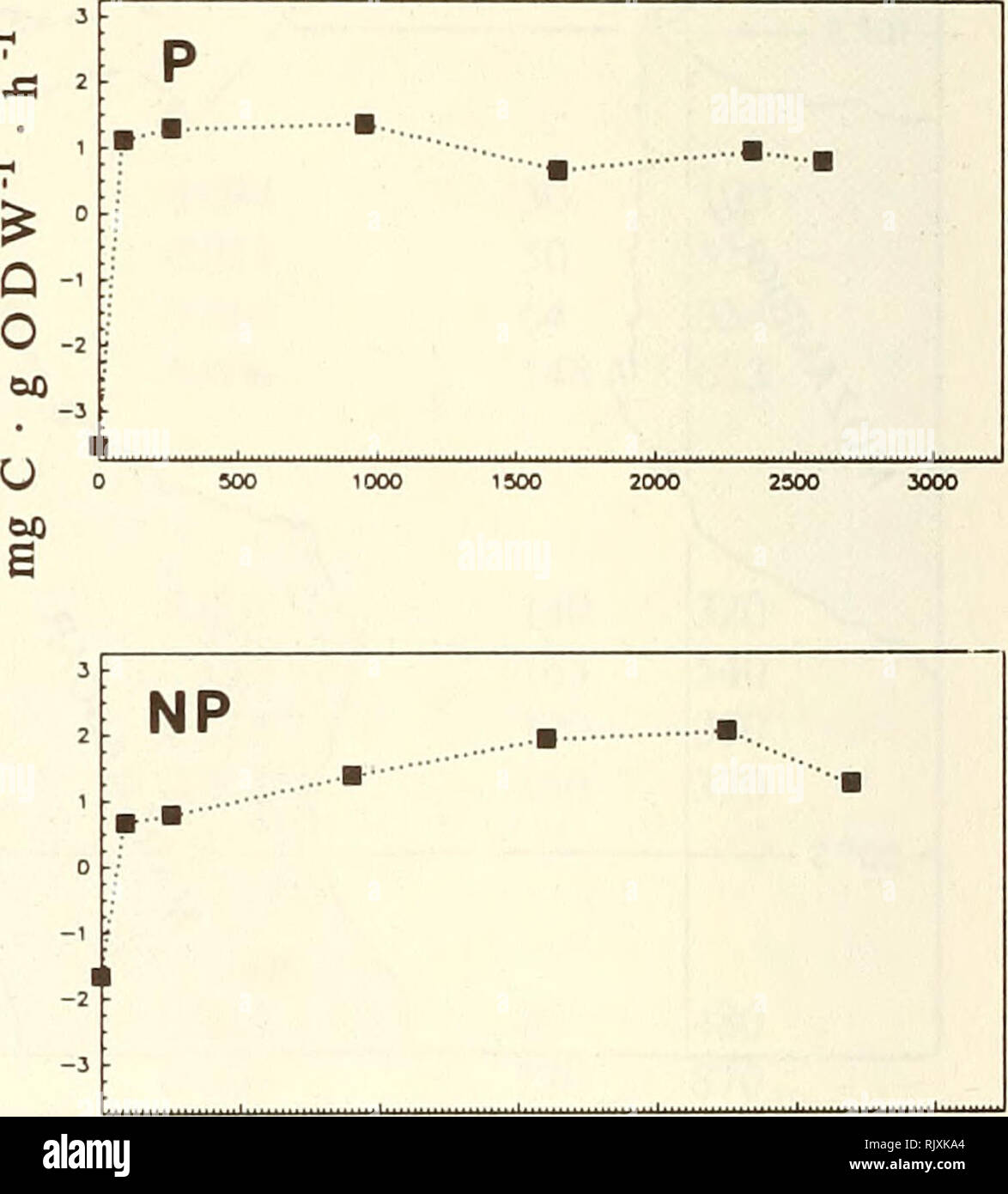 . Atoll research bulletin. Coral reefs and islands; Marine biology; Marine sciences. LIGHT ( fji E • m -1) LIGHT ( fi E • m 2 • s -1 ) Figure 2. P$ versus I response of Codium sp.in relation to four nutrient treatments. (C) Control (no nutrients added, (N) Nitrogen (NaN03) added, (P) Phosphorous (NaH2P04) added and (NP) Both N and P added. Figure 3. P versus I responses of Udotea orientalis in relation to four levels of nutrients. Features are the same as those indicated in Fig. 1.. Please note that these images are extracted from scanned page images that may have been digitally enhanced for Stock Photohttps://www.alamy.com/image-license-details/?v=1https://www.alamy.com/atoll-research-bulletin-coral-reefs-and-islands-marine-biology-marine-sciences-light-fji-e-m-1-light-fi-e-m-2-s-1-figure-2-p-versus-i-response-of-codium-spin-relation-to-four-nutrient-treatments-c-control-no-nutrients-added-n-nitrogen-nan03-added-p-phosphorous-nah2p04-added-and-np-both-n-and-p-added-figure-3-p-versus-i-responses-of-udotea-orientalis-in-relation-to-four-levels-of-nutrients-features-are-the-same-as-those-indicated-in-fig-1-please-note-that-these-images-are-extracted-from-scanned-page-images-that-may-have-been-digitally-enhanced-for-image235384524.html
. Atoll research bulletin. Coral reefs and islands; Marine biology; Marine sciences. LIGHT ( fji E • m -1) LIGHT ( fi E • m 2 • s -1 ) Figure 2. P$ versus I response of Codium sp.in relation to four nutrient treatments. (C) Control (no nutrients added, (N) Nitrogen (NaN03) added, (P) Phosphorous (NaH2P04) added and (NP) Both N and P added. Figure 3. P versus I responses of Udotea orientalis in relation to four levels of nutrients. Features are the same as those indicated in Fig. 1.. Please note that these images are extracted from scanned page images that may have been digitally enhanced for Stock Photohttps://www.alamy.com/image-license-details/?v=1https://www.alamy.com/atoll-research-bulletin-coral-reefs-and-islands-marine-biology-marine-sciences-light-fji-e-m-1-light-fi-e-m-2-s-1-figure-2-p-versus-i-response-of-codium-spin-relation-to-four-nutrient-treatments-c-control-no-nutrients-added-n-nitrogen-nan03-added-p-phosphorous-nah2p04-added-and-np-both-n-and-p-added-figure-3-p-versus-i-responses-of-udotea-orientalis-in-relation-to-four-levels-of-nutrients-features-are-the-same-as-those-indicated-in-fig-1-please-note-that-these-images-are-extracted-from-scanned-page-images-that-may-have-been-digitally-enhanced-for-image235384524.htmlRMRJXKA4–. Atoll research bulletin. Coral reefs and islands; Marine biology; Marine sciences. LIGHT ( fji E • m -1) LIGHT ( fi E • m 2 • s -1 ) Figure 2. P$ versus I response of Codium sp.in relation to four nutrient treatments. (C) Control (no nutrients added, (N) Nitrogen (NaN03) added, (P) Phosphorous (NaH2P04) added and (NP) Both N and P added. Figure 3. P versus I responses of Udotea orientalis in relation to four levels of nutrients. Features are the same as those indicated in Fig. 1.. Please note that these images are extracted from scanned page images that may have been digitally enhanced for
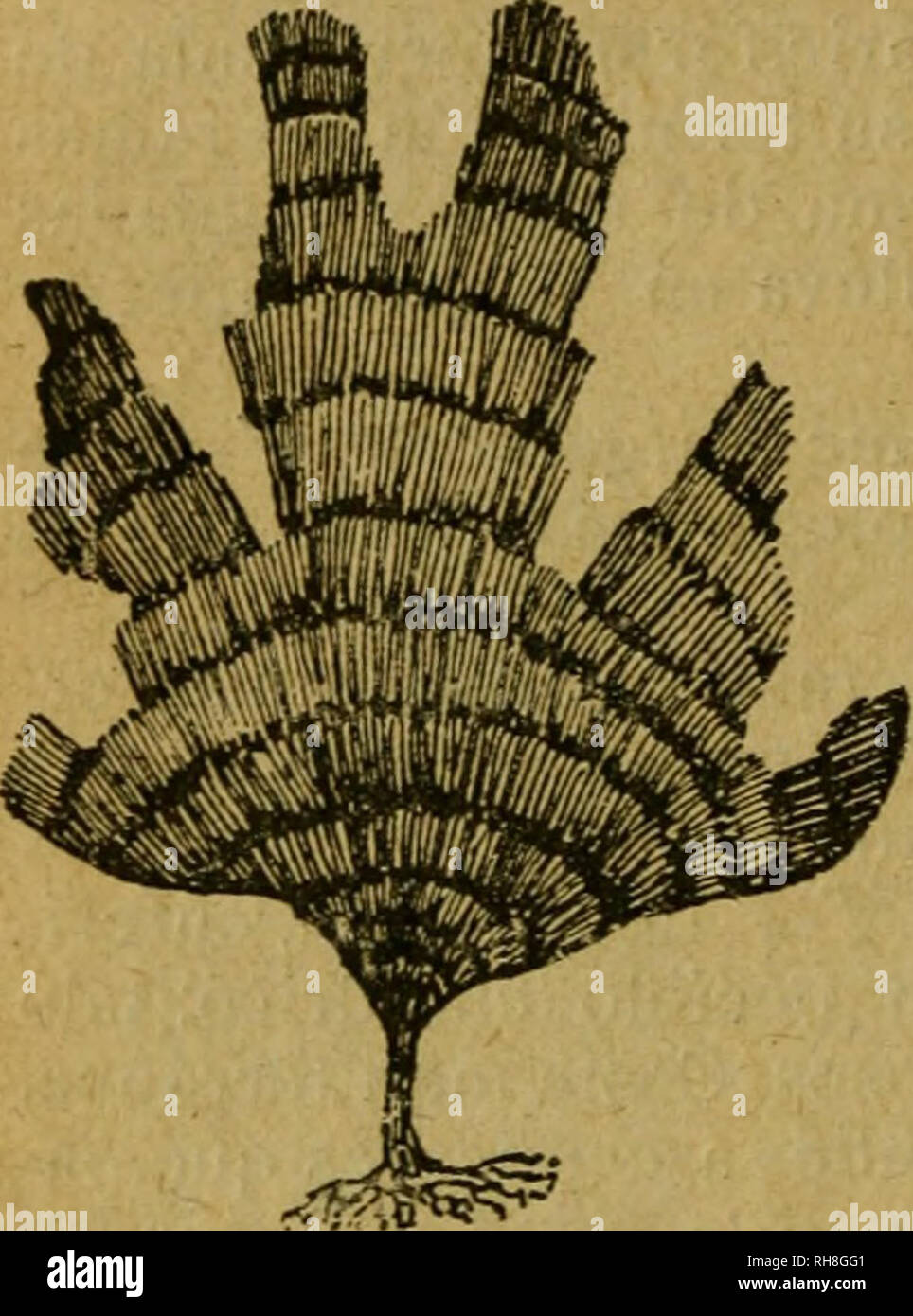 . Botánica descriptiva. Compendio de la flora española. Estudio de las plantas que viven espontáneamente en España y de las más frecuentemente cultivadas que tienen aplicaciones en medicina, agricultura, industria y horticultura. Plants. 190 ALGAS 201. C. adhserens Ag.—ha. fronde forma masas irregulares de contorno redondeado y de unos 2" de diámetro, muy verdes, brillantes en fresco y suaves, casi mucosas, al tacto. Adherida a las rocas en ambas costas. GEN. UDOTEA DESF.—Fronde plana, en forma de abanico, con zonas concéntricas, pediceladas en la base, y constituida por filamentos longit Stock Photohttps://www.alamy.com/image-license-details/?v=1https://www.alamy.com/botnica-descriptiva-compendio-de-la-flora-espaola-estudio-de-las-plantas-que-viven-espontneamente-en-espaa-y-de-las-ms-frecuentemente-cultivadas-que-tienen-aplicaciones-en-medicina-agricultura-industria-y-horticultura-plants-190-algas-201-c-adhserens-agha-fronde-forma-masas-irregulares-de-contorno-redondeado-y-de-unos-2quot-de-dimetro-muy-verdes-brillantes-en-fresco-y-suaves-casi-mucosas-al-tacto-adherida-a-las-rocas-en-ambas-costas-gen-udotea-desffronde-plana-en-forma-de-abanico-con-zonas-concntricas-pediceladas-en-la-base-y-constituida-por-filamentos-longit-image234372545.html
. Botánica descriptiva. Compendio de la flora española. Estudio de las plantas que viven espontáneamente en España y de las más frecuentemente cultivadas que tienen aplicaciones en medicina, agricultura, industria y horticultura. Plants. 190 ALGAS 201. C. adhserens Ag.—ha. fronde forma masas irregulares de contorno redondeado y de unos 2" de diámetro, muy verdes, brillantes en fresco y suaves, casi mucosas, al tacto. Adherida a las rocas en ambas costas. GEN. UDOTEA DESF.—Fronde plana, en forma de abanico, con zonas concéntricas, pediceladas en la base, y constituida por filamentos longit Stock Photohttps://www.alamy.com/image-license-details/?v=1https://www.alamy.com/botnica-descriptiva-compendio-de-la-flora-espaola-estudio-de-las-plantas-que-viven-espontneamente-en-espaa-y-de-las-ms-frecuentemente-cultivadas-que-tienen-aplicaciones-en-medicina-agricultura-industria-y-horticultura-plants-190-algas-201-c-adhserens-agha-fronde-forma-masas-irregulares-de-contorno-redondeado-y-de-unos-2quot-de-dimetro-muy-verdes-brillantes-en-fresco-y-suaves-casi-mucosas-al-tacto-adherida-a-las-rocas-en-ambas-costas-gen-udotea-desffronde-plana-en-forma-de-abanico-con-zonas-concntricas-pediceladas-en-la-base-y-constituida-por-filamentos-longit-image234372545.htmlRMRH8GG1–. Botánica descriptiva. Compendio de la flora española. Estudio de las plantas que viven espontáneamente en España y de las más frecuentemente cultivadas que tienen aplicaciones en medicina, agricultura, industria y horticultura. Plants. 190 ALGAS 201. C. adhserens Ag.—ha. fronde forma masas irregulares de contorno redondeado y de unos 2" de diámetro, muy verdes, brillantes en fresco y suaves, casi mucosas, al tacto. Adherida a las rocas en ambas costas. GEN. UDOTEA DESF.—Fronde plana, en forma de abanico, con zonas concéntricas, pediceladas en la base, y constituida por filamentos longit
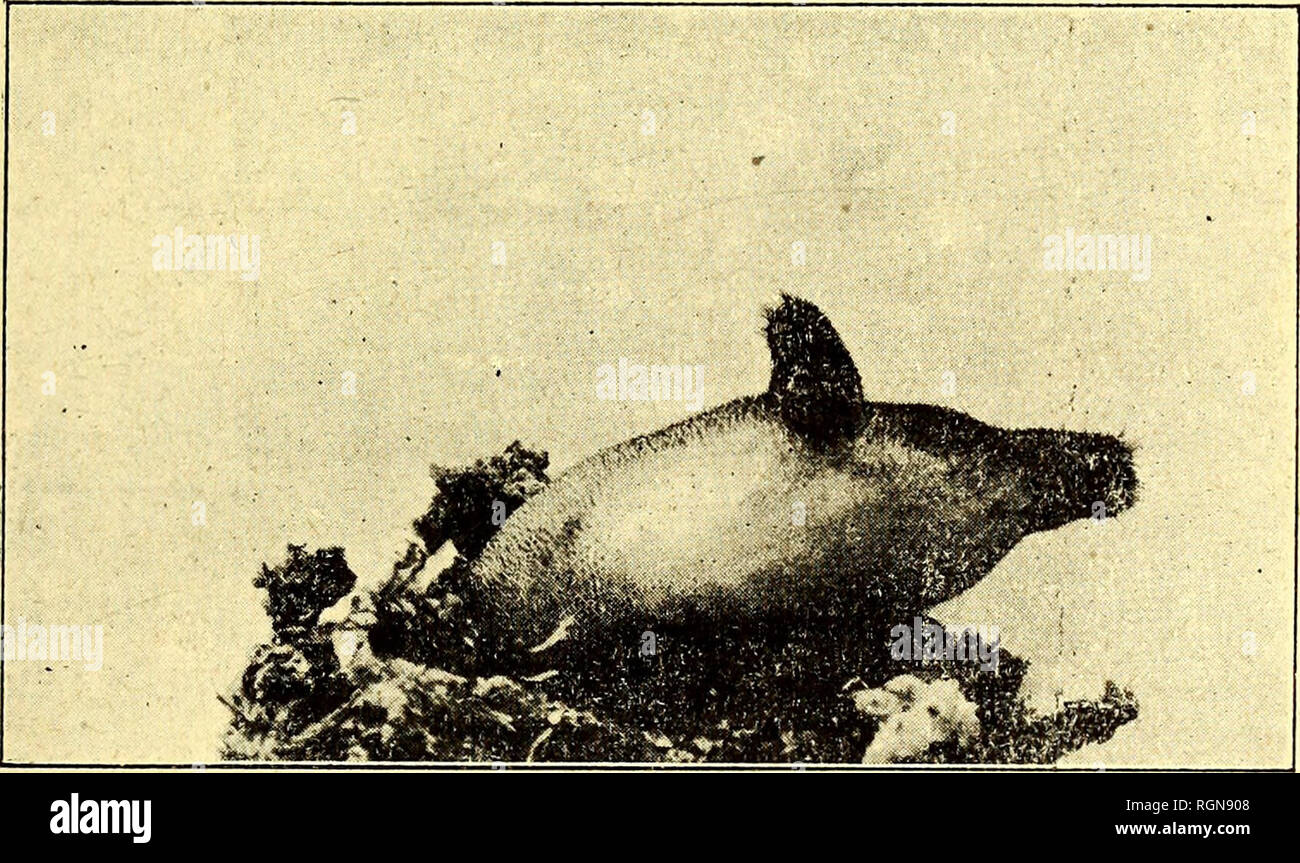 . Bulletin du Musée océanographique de Monaco. Ocean. — i3 — dans le calcaire des algues. Les petits Crabes, les Annélides, les Siponcles abondent dans cette roche spéciale. Au-dessous des trottoirs, la falaise est couverte d'une riche végétation d'algues vertes ou brunes parmi lesquelles dominent les Cystoseira et les Udotea. Cette flore s'étend en profondeur jusqu'au pied de la falaise sous marine (Fig. i et 2, Pl. II). Parmi ces algues vivent d'innombrables animaux, les uns se promenant parmi les plantes, les autres fixés sur la roche, d'autres nageant dans le voisinage. Les Actinies y abon Stock Photohttps://www.alamy.com/image-license-details/?v=1https://www.alamy.com/bulletin-du-muse-ocanographique-de-monaco-ocean-i3-dans-le-calcaire-des-algues-les-petits-crabes-les-annlides-les-siponcles-abondent-dans-cette-roche-spciale-au-dessous-des-trottoirs-la-falaise-est-couverte-dune-riche-vgtation-dalgues-vertes-ou-brunes-parmi-lesquelles-dominent-les-cystoseira-et-les-udotea-cette-flore-stend-en-profondeur-jusquau-pied-de-la-falaise-sous-marine-fig-i-et-2-pl-ii-parmi-ces-algues-vivent-dinnombrables-animaux-les-uns-se-promenant-parmi-les-plantes-les-autres-fixs-sur-la-roche-dautres-nageant-dans-le-voisinage-les-actinies-y-abon-image234037336.html
. Bulletin du Musée océanographique de Monaco. Ocean. — i3 — dans le calcaire des algues. Les petits Crabes, les Annélides, les Siponcles abondent dans cette roche spéciale. Au-dessous des trottoirs, la falaise est couverte d'une riche végétation d'algues vertes ou brunes parmi lesquelles dominent les Cystoseira et les Udotea. Cette flore s'étend en profondeur jusqu'au pied de la falaise sous marine (Fig. i et 2, Pl. II). Parmi ces algues vivent d'innombrables animaux, les uns se promenant parmi les plantes, les autres fixés sur la roche, d'autres nageant dans le voisinage. Les Actinies y abon Stock Photohttps://www.alamy.com/image-license-details/?v=1https://www.alamy.com/bulletin-du-muse-ocanographique-de-monaco-ocean-i3-dans-le-calcaire-des-algues-les-petits-crabes-les-annlides-les-siponcles-abondent-dans-cette-roche-spciale-au-dessous-des-trottoirs-la-falaise-est-couverte-dune-riche-vgtation-dalgues-vertes-ou-brunes-parmi-lesquelles-dominent-les-cystoseira-et-les-udotea-cette-flore-stend-en-profondeur-jusquau-pied-de-la-falaise-sous-marine-fig-i-et-2-pl-ii-parmi-ces-algues-vivent-dinnombrables-animaux-les-uns-se-promenant-parmi-les-plantes-les-autres-fixs-sur-la-roche-dautres-nageant-dans-le-voisinage-les-actinies-y-abon-image234037336.htmlRMRGN908–. Bulletin du Musée océanographique de Monaco. Ocean. — i3 — dans le calcaire des algues. Les petits Crabes, les Annélides, les Siponcles abondent dans cette roche spéciale. Au-dessous des trottoirs, la falaise est couverte d'une riche végétation d'algues vertes ou brunes parmi lesquelles dominent les Cystoseira et les Udotea. Cette flore s'étend en profondeur jusqu'au pied de la falaise sous marine (Fig. i et 2, Pl. II). Parmi ces algues vivent d'innombrables animaux, les uns se promenant parmi les plantes, les autres fixés sur la roche, d'autres nageant dans le voisinage. Les Actinies y abon
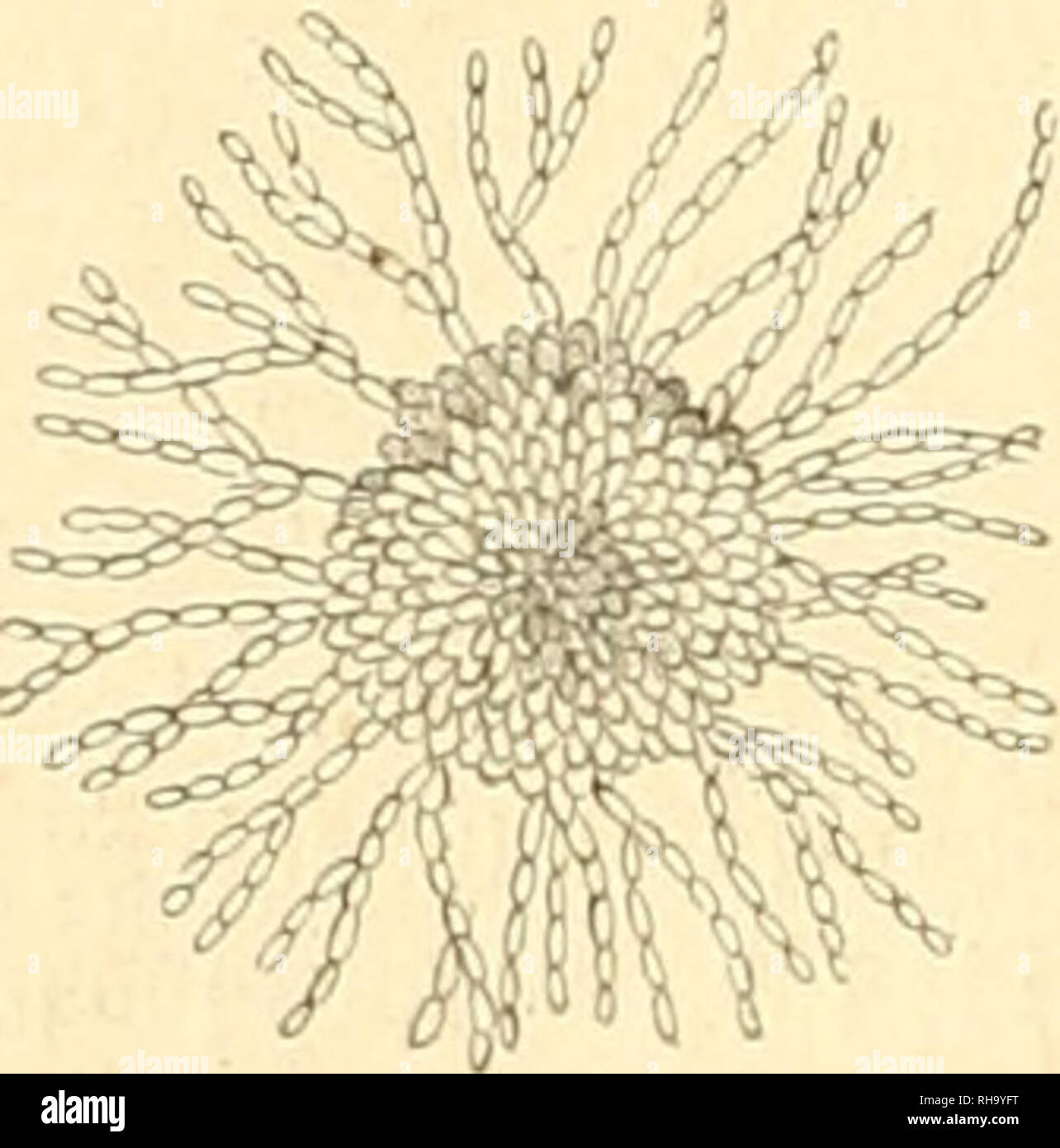 . Botanique cryptogamique, ou Histoire des familles naturelles des plantes infrieures. . S M ' 125. Codium tùmentosum. 126. Udotea cyathiformis. 127. Anadyomene stellata. Les Batrachospermées présentent clans l'origine, comme les Ectocarpées, un tube principal formé par des utricules allongées en forme de fuseau, et placées bout à bout de façon à pré- senter, de distance en distance, des articulations. De chacune de ces articulations part un verticille de rameaux alternativement plus petits et plus grands, et tellement rapprochés qu'ils cachent, en grande partie, la ligne de jonction Stock Photohttps://www.alamy.com/image-license-details/?v=1https://www.alamy.com/botanique-cryptogamique-ou-histoire-des-familles-naturelles-des-plantes-infrieures-s-m-125-codium-tmentosum-126-udotea-cyathiformis-127-anadyomene-stellata-les-batrachospermes-prsentent-clans-lorigine-comme-les-ectocarpes-un-tube-principal-form-par-des-utricules-allonges-en-forme-de-fuseau-et-places-bout-bout-de-faon-pr-senter-de-distance-en-distance-des-articulations-de-chacune-de-ces-articulations-part-un-verticille-de-rameaux-alternativement-plus-petits-et-plus-grands-et-tellement-rapprochs-quils-cachent-en-grande-partie-la-ligne-de-jonction-image234403116.html
. Botanique cryptogamique, ou Histoire des familles naturelles des plantes infrieures. . S M ' 125. Codium tùmentosum. 126. Udotea cyathiformis. 127. Anadyomene stellata. Les Batrachospermées présentent clans l'origine, comme les Ectocarpées, un tube principal formé par des utricules allongées en forme de fuseau, et placées bout à bout de façon à pré- senter, de distance en distance, des articulations. De chacune de ces articulations part un verticille de rameaux alternativement plus petits et plus grands, et tellement rapprochés qu'ils cachent, en grande partie, la ligne de jonction Stock Photohttps://www.alamy.com/image-license-details/?v=1https://www.alamy.com/botanique-cryptogamique-ou-histoire-des-familles-naturelles-des-plantes-infrieures-s-m-125-codium-tmentosum-126-udotea-cyathiformis-127-anadyomene-stellata-les-batrachospermes-prsentent-clans-lorigine-comme-les-ectocarpes-un-tube-principal-form-par-des-utricules-allonges-en-forme-de-fuseau-et-places-bout-bout-de-faon-pr-senter-de-distance-en-distance-des-articulations-de-chacune-de-ces-articulations-part-un-verticille-de-rameaux-alternativement-plus-petits-et-plus-grands-et-tellement-rapprochs-quils-cachent-en-grande-partie-la-ligne-de-jonction-image234403116.htmlRMRH9YFT–. Botanique cryptogamique, ou Histoire des familles naturelles des plantes infrieures. . S M ' 125. Codium tùmentosum. 126. Udotea cyathiformis. 127. Anadyomene stellata. Les Batrachospermées présentent clans l'origine, comme les Ectocarpées, un tube principal formé par des utricules allongées en forme de fuseau, et placées bout à bout de façon à pré- senter, de distance en distance, des articulations. De chacune de ces articulations part un verticille de rameaux alternativement plus petits et plus grands, et tellement rapprochés qu'ils cachent, en grande partie, la ligne de jonction
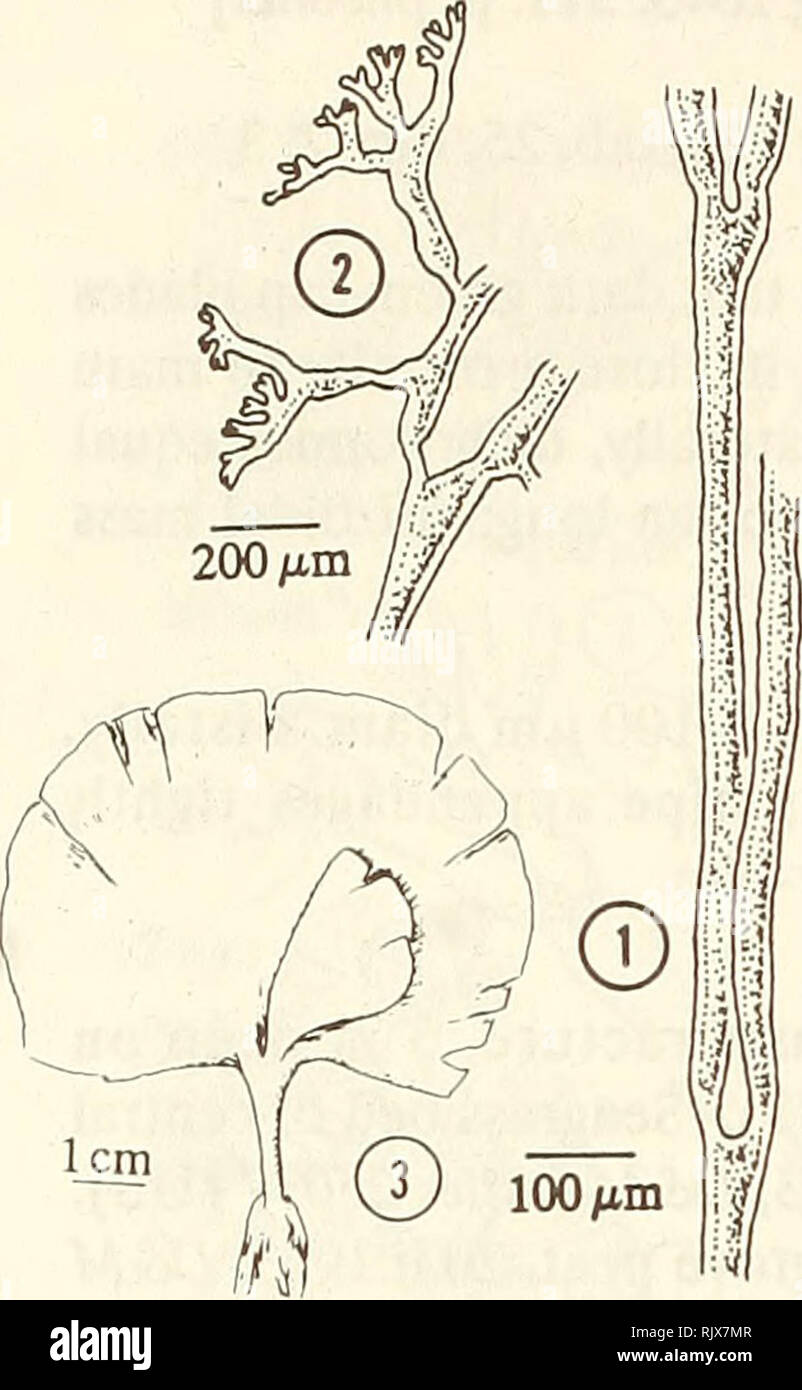 . Atoll research bulletin. Coral reefs and islands; Marine biology; Marine sciences. 16. 1. Blade siphon. 2. Stipe siphon with lateral appendages. 3. Habit of plant. Udotea caribaea D.S. Littler & M.M. Littler 1990:211, fig. 2. Thallus widely fan shaped, heavily calcified; to 9 cm tall; yellow or white- green, ash-white when dried; blade to 10 cm wide, 7 cm long, 0.5-1.0 mm thick; cortex absent; zonation obscure; stipe 2-5 mm diam., to 2.5 cm long, no clear demarcation between stipe and blade surface texture; rhizoidal mass bulbous, entangled. Blade siphons lacking lateral appendages, tigh Stock Photohttps://www.alamy.com/image-license-details/?v=1https://www.alamy.com/atoll-research-bulletin-coral-reefs-and-islands-marine-biology-marine-sciences-16-1-blade-siphon-2-stipe-siphon-with-lateral-appendages-3-habit-of-plant-udotea-caribaea-ds-littler-amp-mm-littler-1990211-fig-2-thallus-widely-fan-shaped-heavily-calcified-to-9-cm-tall-yellow-or-white-green-ash-white-when-dried-blade-to-10-cm-wide-7-cm-long-05-10-mm-thick-cortex-absent-zonation-obscure-stipe-2-5-mm-diam-to-25-cm-long-no-clear-demarcation-between-stipe-and-blade-surface-texture-rhizoidal-mass-bulbous-entangled-blade-siphons-lacking-lateral-appendages-tigh-image235375415.html
. Atoll research bulletin. Coral reefs and islands; Marine biology; Marine sciences. 16. 1. Blade siphon. 2. Stipe siphon with lateral appendages. 3. Habit of plant. Udotea caribaea D.S. Littler & M.M. Littler 1990:211, fig. 2. Thallus widely fan shaped, heavily calcified; to 9 cm tall; yellow or white- green, ash-white when dried; blade to 10 cm wide, 7 cm long, 0.5-1.0 mm thick; cortex absent; zonation obscure; stipe 2-5 mm diam., to 2.5 cm long, no clear demarcation between stipe and blade surface texture; rhizoidal mass bulbous, entangled. Blade siphons lacking lateral appendages, tigh Stock Photohttps://www.alamy.com/image-license-details/?v=1https://www.alamy.com/atoll-research-bulletin-coral-reefs-and-islands-marine-biology-marine-sciences-16-1-blade-siphon-2-stipe-siphon-with-lateral-appendages-3-habit-of-plant-udotea-caribaea-ds-littler-amp-mm-littler-1990211-fig-2-thallus-widely-fan-shaped-heavily-calcified-to-9-cm-tall-yellow-or-white-green-ash-white-when-dried-blade-to-10-cm-wide-7-cm-long-05-10-mm-thick-cortex-absent-zonation-obscure-stipe-2-5-mm-diam-to-25-cm-long-no-clear-demarcation-between-stipe-and-blade-surface-texture-rhizoidal-mass-bulbous-entangled-blade-siphons-lacking-lateral-appendages-tigh-image235375415.htmlRMRJX7MR–. Atoll research bulletin. Coral reefs and islands; Marine biology; Marine sciences. 16. 1. Blade siphon. 2. Stipe siphon with lateral appendages. 3. Habit of plant. Udotea caribaea D.S. Littler & M.M. Littler 1990:211, fig. 2. Thallus widely fan shaped, heavily calcified; to 9 cm tall; yellow or white- green, ash-white when dried; blade to 10 cm wide, 7 cm long, 0.5-1.0 mm thick; cortex absent; zonation obscure; stipe 2-5 mm diam., to 2.5 cm long, no clear demarcation between stipe and blade surface texture; rhizoidal mass bulbous, entangled. Blade siphons lacking lateral appendages, tigh
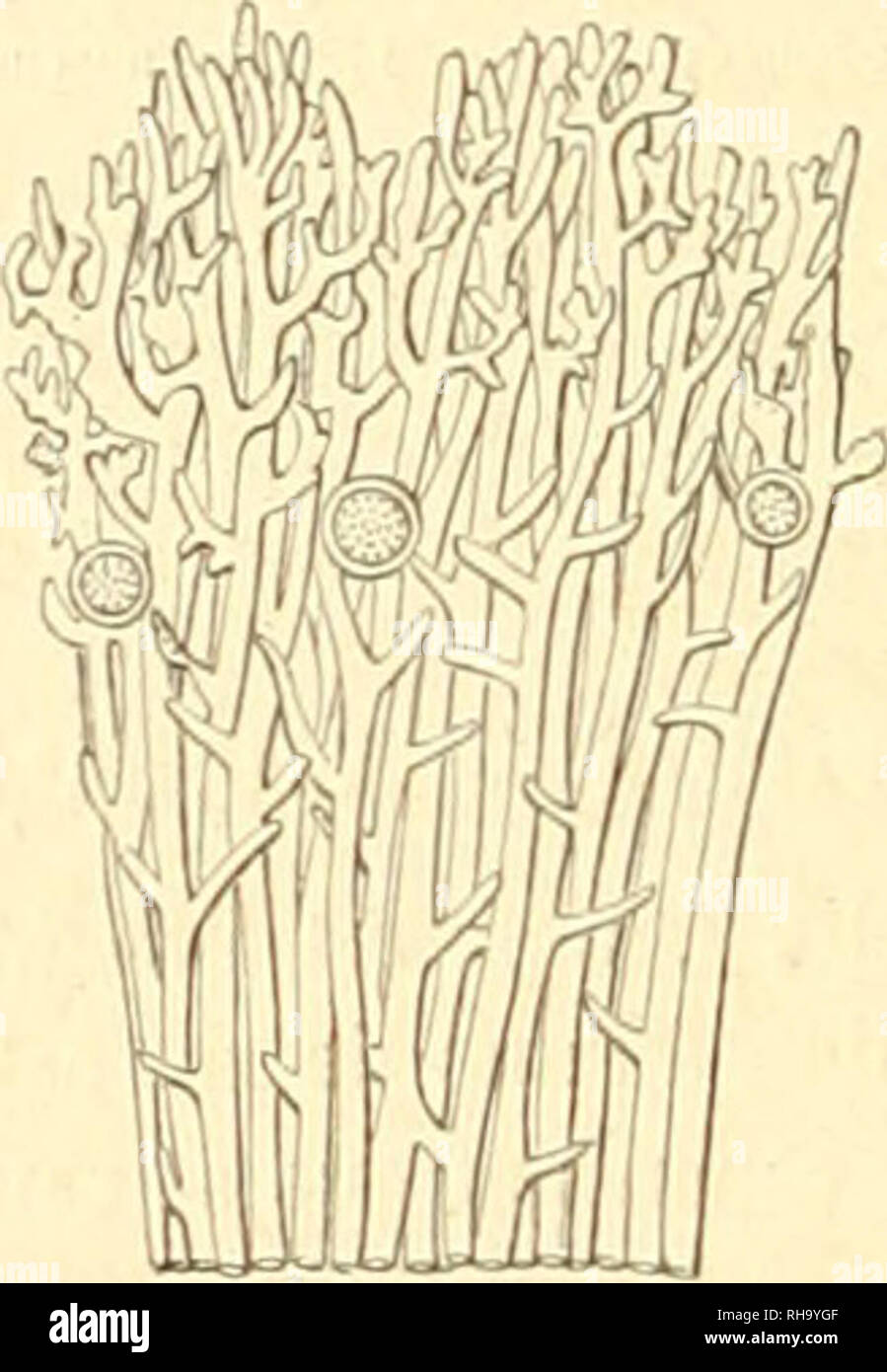 . Botanique cryptogamique, ou Histoire des familles naturelles des plantes infrieures. . S M ' 125. Codium tùmentosum. 126. Udotea cyathiformis. 127. Anadyomene stellata. Les Batrachospermées présentent clans l'origine, comme les Ectocarpées, un tube principal formé par des utricules allongées en forme de fuseau, et placées bout à bout de façon à pré- senter, de distance en distance, des articulations. De chacune de ces articulations part un verticille de rameaux alternativement plus petits et plus grands, et tellement rapprochés qu'ils cachent, en grande partie, la ligne de jonction Stock Photohttps://www.alamy.com/image-license-details/?v=1https://www.alamy.com/botanique-cryptogamique-ou-histoire-des-familles-naturelles-des-plantes-infrieures-s-m-125-codium-tmentosum-126-udotea-cyathiformis-127-anadyomene-stellata-les-batrachospermes-prsentent-clans-lorigine-comme-les-ectocarpes-un-tube-principal-form-par-des-utricules-allonges-en-forme-de-fuseau-et-places-bout-bout-de-faon-pr-senter-de-distance-en-distance-des-articulations-de-chacune-de-ces-articulations-part-un-verticille-de-rameaux-alternativement-plus-petits-et-plus-grands-et-tellement-rapprochs-quils-cachent-en-grande-partie-la-ligne-de-jonction-image234403135.html
. Botanique cryptogamique, ou Histoire des familles naturelles des plantes infrieures. . S M ' 125. Codium tùmentosum. 126. Udotea cyathiformis. 127. Anadyomene stellata. Les Batrachospermées présentent clans l'origine, comme les Ectocarpées, un tube principal formé par des utricules allongées en forme de fuseau, et placées bout à bout de façon à pré- senter, de distance en distance, des articulations. De chacune de ces articulations part un verticille de rameaux alternativement plus petits et plus grands, et tellement rapprochés qu'ils cachent, en grande partie, la ligne de jonction Stock Photohttps://www.alamy.com/image-license-details/?v=1https://www.alamy.com/botanique-cryptogamique-ou-histoire-des-familles-naturelles-des-plantes-infrieures-s-m-125-codium-tmentosum-126-udotea-cyathiformis-127-anadyomene-stellata-les-batrachospermes-prsentent-clans-lorigine-comme-les-ectocarpes-un-tube-principal-form-par-des-utricules-allonges-en-forme-de-fuseau-et-places-bout-bout-de-faon-pr-senter-de-distance-en-distance-des-articulations-de-chacune-de-ces-articulations-part-un-verticille-de-rameaux-alternativement-plus-petits-et-plus-grands-et-tellement-rapprochs-quils-cachent-en-grande-partie-la-ligne-de-jonction-image234403135.htmlRMRH9YGF–. Botanique cryptogamique, ou Histoire des familles naturelles des plantes infrieures. . S M ' 125. Codium tùmentosum. 126. Udotea cyathiformis. 127. Anadyomene stellata. Les Batrachospermées présentent clans l'origine, comme les Ectocarpées, un tube principal formé par des utricules allongées en forme de fuseau, et placées bout à bout de façon à pré- senter, de distance en distance, des articulations. De chacune de ces articulations part un verticille de rameaux alternativement plus petits et plus grands, et tellement rapprochés qu'ils cachent, en grande partie, la ligne de jonction
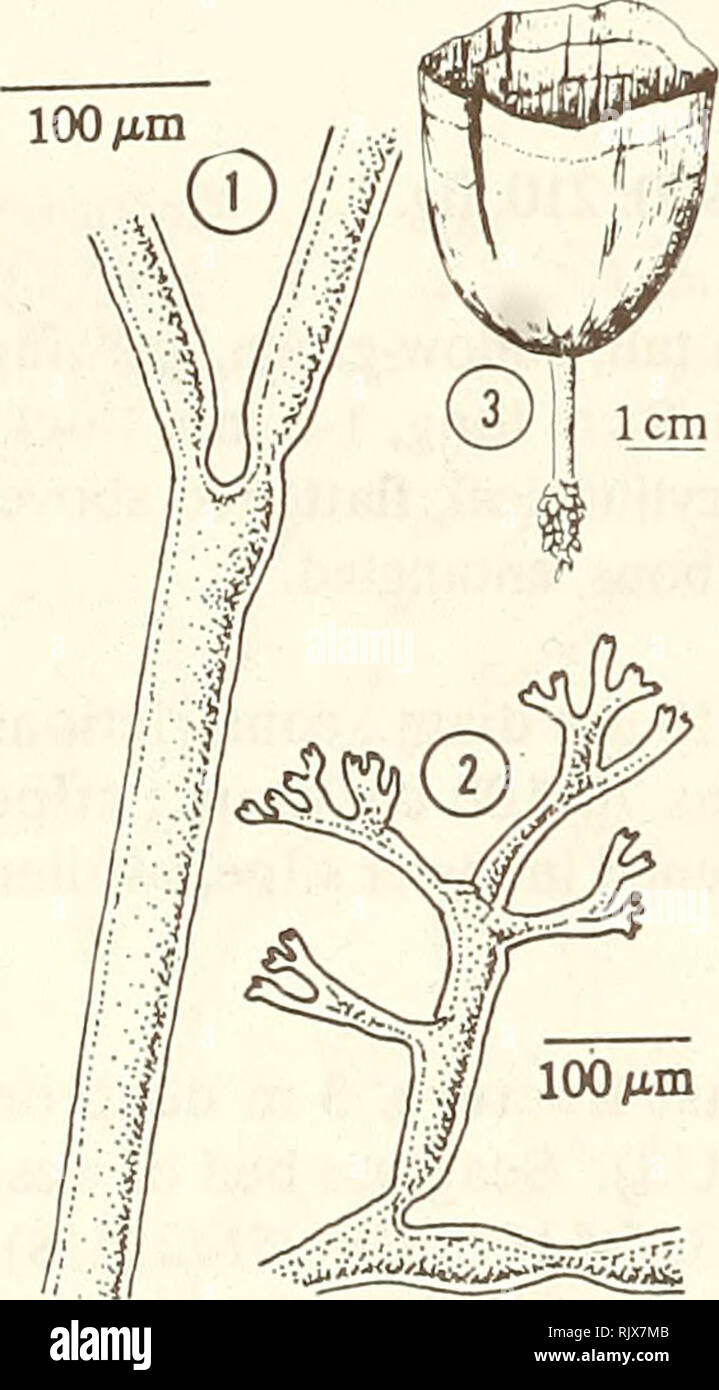 . Atoll research bulletin. Coral reefs and islands; Marine biology; Marine sciences. 1. Blade siphon. 2. Stipe siphon with lateral appendages. 3. Habit of plant. Udotea caribaea D.S. Littler & M.M. Littler 1990:211, fig. 2. Thallus widely fan shaped, heavily calcified; to 9 cm tall; yellow or white- green, ash-white when dried; blade to 10 cm wide, 7 cm long, 0.5-1.0 mm thick; cortex absent; zonation obscure; stipe 2-5 mm diam., to 2.5 cm long, no clear demarcation between stipe and blade surface texture; rhizoidal mass bulbous, entangled. Blade siphons lacking lateral appendages, tightly Stock Photohttps://www.alamy.com/image-license-details/?v=1https://www.alamy.com/atoll-research-bulletin-coral-reefs-and-islands-marine-biology-marine-sciences-1-blade-siphon-2-stipe-siphon-with-lateral-appendages-3-habit-of-plant-udotea-caribaea-ds-littler-amp-mm-littler-1990211-fig-2-thallus-widely-fan-shaped-heavily-calcified-to-9-cm-tall-yellow-or-white-green-ash-white-when-dried-blade-to-10-cm-wide-7-cm-long-05-10-mm-thick-cortex-absent-zonation-obscure-stipe-2-5-mm-diam-to-25-cm-long-no-clear-demarcation-between-stipe-and-blade-surface-texture-rhizoidal-mass-bulbous-entangled-blade-siphons-lacking-lateral-appendages-tightly-image235375403.html
. Atoll research bulletin. Coral reefs and islands; Marine biology; Marine sciences. 1. Blade siphon. 2. Stipe siphon with lateral appendages. 3. Habit of plant. Udotea caribaea D.S. Littler & M.M. Littler 1990:211, fig. 2. Thallus widely fan shaped, heavily calcified; to 9 cm tall; yellow or white- green, ash-white when dried; blade to 10 cm wide, 7 cm long, 0.5-1.0 mm thick; cortex absent; zonation obscure; stipe 2-5 mm diam., to 2.5 cm long, no clear demarcation between stipe and blade surface texture; rhizoidal mass bulbous, entangled. Blade siphons lacking lateral appendages, tightly Stock Photohttps://www.alamy.com/image-license-details/?v=1https://www.alamy.com/atoll-research-bulletin-coral-reefs-and-islands-marine-biology-marine-sciences-1-blade-siphon-2-stipe-siphon-with-lateral-appendages-3-habit-of-plant-udotea-caribaea-ds-littler-amp-mm-littler-1990211-fig-2-thallus-widely-fan-shaped-heavily-calcified-to-9-cm-tall-yellow-or-white-green-ash-white-when-dried-blade-to-10-cm-wide-7-cm-long-05-10-mm-thick-cortex-absent-zonation-obscure-stipe-2-5-mm-diam-to-25-cm-long-no-clear-demarcation-between-stipe-and-blade-surface-texture-rhizoidal-mass-bulbous-entangled-blade-siphons-lacking-lateral-appendages-tightly-image235375403.htmlRMRJX7MB–. Atoll research bulletin. Coral reefs and islands; Marine biology; Marine sciences. 1. Blade siphon. 2. Stipe siphon with lateral appendages. 3. Habit of plant. Udotea caribaea D.S. Littler & M.M. Littler 1990:211, fig. 2. Thallus widely fan shaped, heavily calcified; to 9 cm tall; yellow or white- green, ash-white when dried; blade to 10 cm wide, 7 cm long, 0.5-1.0 mm thick; cortex absent; zonation obscure; stipe 2-5 mm diam., to 2.5 cm long, no clear demarcation between stipe and blade surface texture; rhizoidal mass bulbous, entangled. Blade siphons lacking lateral appendages, tightly
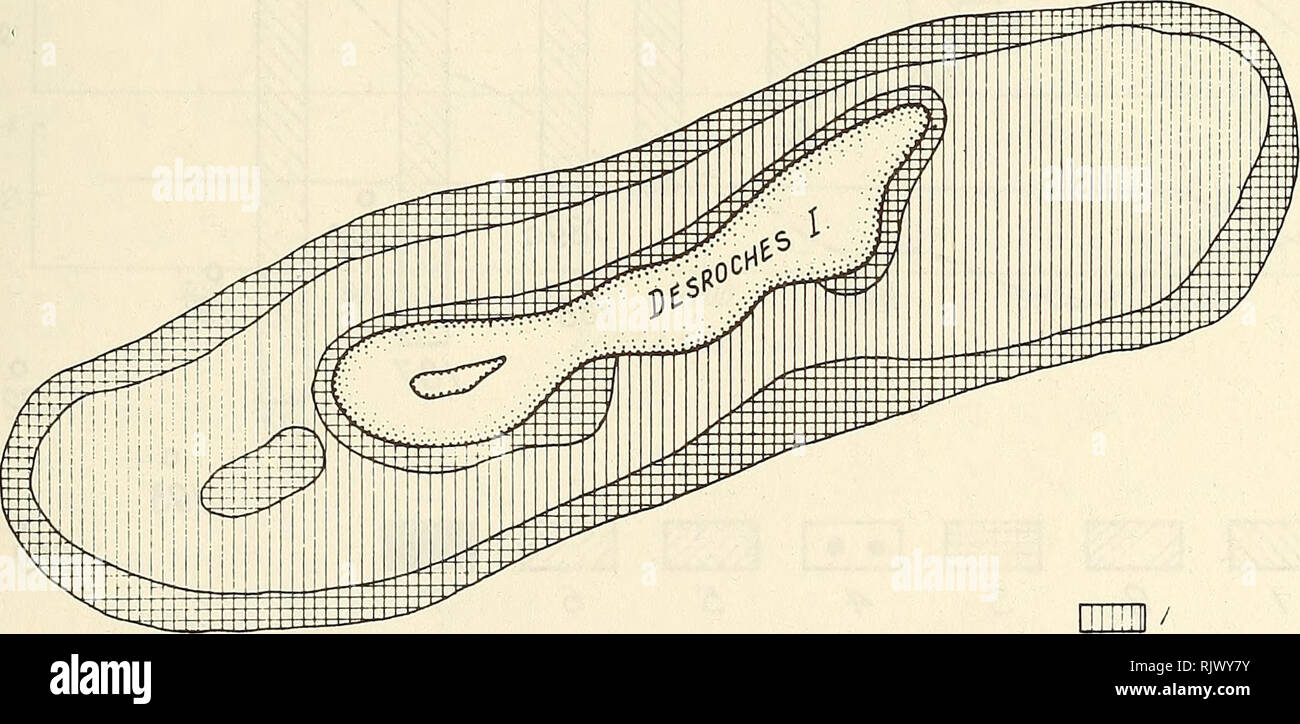 . Atoll research bulletin. Coral reefs and islands; Marine biology; Marine sciences. 41 f P ° t</p ft°P V oP^P E * Tp^ Pf p 'â 'p T p o » pfP< PT V C? o ® p A p^' ' e : *f P c? W r ^ C? P- -2 , C?-3 , T-4 , ® E-ff.-T1-/ , t-8 ,±-9 ;(v-/0 Figure 7. Horizontal distribution of algal and seagrass species at Desroches Island. 1 - Thalassodendron ciliatum, 2 - Thalassia hemprichii, 3 - Halimeda, 4 - Turbinaria ornata, 5 - Jania species, 6 - Dasya mollis, 7 - Galaxaura species, 8 - Udotea argentea, 9 ⢠Dictyurus purpurascenSy 10 - Caulerpa species.. .-2x Figure 8. Distibution of macrophy Stock Photohttps://www.alamy.com/image-license-details/?v=1https://www.alamy.com/atoll-research-bulletin-coral-reefs-and-islands-marine-biology-marine-sciences-41-f-p-tltp-ftp-v-opp-e-tp-pf-p-p-t-p-o-pfplt-pt-v-c-o-p-a-p-e-f-p-c-w-r-c-p-2-c-3-t-4-e-ff-t1-t-8-9-v-0-figure-7-horizontal-distribution-of-algal-and-seagrass-species-at-desroches-island-1-thalassodendron-ciliatum-2-thalassia-hemprichii-3-halimeda-4-turbinaria-ornata-5-jania-species-6-dasya-mollis-7-galaxaura-species-8-udotea-argentea-9-dictyurus-purpurascensy-10-caulerpa-species-2x-figure-8-distibution-of-macrophy-image235368783.html
. Atoll research bulletin. Coral reefs and islands; Marine biology; Marine sciences. 41 f P ° t</p ft°P V oP^P E * Tp^ Pf p 'â 'p T p o » pfP< PT V C? o ® p A p^' ' e : *f P c? W r ^ C? P- -2 , C?-3 , T-4 , ® E-ff.-T1-/ , t-8 ,±-9 ;(v-/0 Figure 7. Horizontal distribution of algal and seagrass species at Desroches Island. 1 - Thalassodendron ciliatum, 2 - Thalassia hemprichii, 3 - Halimeda, 4 - Turbinaria ornata, 5 - Jania species, 6 - Dasya mollis, 7 - Galaxaura species, 8 - Udotea argentea, 9 ⢠Dictyurus purpurascenSy 10 - Caulerpa species.. .-2x Figure 8. Distibution of macrophy Stock Photohttps://www.alamy.com/image-license-details/?v=1https://www.alamy.com/atoll-research-bulletin-coral-reefs-and-islands-marine-biology-marine-sciences-41-f-p-tltp-ftp-v-opp-e-tp-pf-p-p-t-p-o-pfplt-pt-v-c-o-p-a-p-e-f-p-c-w-r-c-p-2-c-3-t-4-e-ff-t1-t-8-9-v-0-figure-7-horizontal-distribution-of-algal-and-seagrass-species-at-desroches-island-1-thalassodendron-ciliatum-2-thalassia-hemprichii-3-halimeda-4-turbinaria-ornata-5-jania-species-6-dasya-mollis-7-galaxaura-species-8-udotea-argentea-9-dictyurus-purpurascensy-10-caulerpa-species-2x-figure-8-distibution-of-macrophy-image235368783.htmlRMRJWY7Y–. Atoll research bulletin. Coral reefs and islands; Marine biology; Marine sciences. 41 f P ° t</p ft°P V oP^P E * Tp^ Pf p 'â 'p T p o » pfP< PT V C? o ® p A p^' ' e : *f P c? W r ^ C? P- -2 , C?-3 , T-4 , ® E-ff.-T1-/ , t-8 ,±-9 ;(v-/0 Figure 7. Horizontal distribution of algal and seagrass species at Desroches Island. 1 - Thalassodendron ciliatum, 2 - Thalassia hemprichii, 3 - Halimeda, 4 - Turbinaria ornata, 5 - Jania species, 6 - Dasya mollis, 7 - Galaxaura species, 8 - Udotea argentea, 9 ⢠Dictyurus purpurascenSy 10 - Caulerpa species.. .-2x Figure 8. Distibution of macrophy
![. Atoll research bulletin. Coral reefs and islands; Marine biology; Marine sciences. 18. ft §2 © 4 las 1. Blade siphons. 2. Lateral appendages of blade. 3. Habit of plant. Udotea wilsonii A. Gepp, E.S. Gepp & Howe in A- Gepp & E.S. Gepp 1911: 130-131,144, pi. VII, fig. 66; pi. VIII, figs. 67,67a, 68,68a. [as U. wilsoni] Thallus of multiple fan shaped blades radiating from central axis (rarely as single flat blade), lightly calcified; to 13 cm tall; dark gray-green; blade wider (10 cm) than long (8 cm), thin (1-2 mm); cortex incomplete; zonation faint; stipe 1-2 mm diam., l-2(-4) cm lon Stock Photo . Atoll research bulletin. Coral reefs and islands; Marine biology; Marine sciences. 18. ft §2 © 4 las 1. Blade siphons. 2. Lateral appendages of blade. 3. Habit of plant. Udotea wilsonii A. Gepp, E.S. Gepp & Howe in A- Gepp & E.S. Gepp 1911: 130-131,144, pi. VII, fig. 66; pi. VIII, figs. 67,67a, 68,68a. [as U. wilsoni] Thallus of multiple fan shaped blades radiating from central axis (rarely as single flat blade), lightly calcified; to 13 cm tall; dark gray-green; blade wider (10 cm) than long (8 cm), thin (1-2 mm); cortex incomplete; zonation faint; stipe 1-2 mm diam., l-2(-4) cm lon Stock Photo](https://c8.alamy.com/comp/RJX7JY/atoll-research-bulletin-coral-reefs-and-islands-marine-biology-marine-sciences-18-ft-2-4-las-1-blade-siphons-2-lateral-appendages-of-blade-3-habit-of-plant-udotea-wilsonii-a-gepp-es-gepp-amp-howe-in-a-gepp-amp-es-gepp-1911-130-131144-pi-vii-fig-66-pi-viii-figs-6767a-6868a-as-u-wilsoni-thallus-of-multiple-fan-shaped-blades-radiating-from-central-axis-rarely-as-single-flat-blade-lightly-calcified-to-13-cm-tall-dark-gray-green-blade-wider-10-cm-than-long-8-cm-thin-1-2-mm-cortex-incomplete-zonation-faint-stipe-1-2-mm-diam-l-2-4-cm-lon-RJX7JY.jpg) . Atoll research bulletin. Coral reefs and islands; Marine biology; Marine sciences. 18. ft §2 © 4 las 1. Blade siphons. 2. Lateral appendages of blade. 3. Habit of plant. Udotea wilsonii A. Gepp, E.S. Gepp & Howe in A- Gepp & E.S. Gepp 1911: 130-131,144, pi. VII, fig. 66; pi. VIII, figs. 67,67a, 68,68a. [as U. wilsoni] Thallus of multiple fan shaped blades radiating from central axis (rarely as single flat blade), lightly calcified; to 13 cm tall; dark gray-green; blade wider (10 cm) than long (8 cm), thin (1-2 mm); cortex incomplete; zonation faint; stipe 1-2 mm diam., l-2(-4) cm lon Stock Photohttps://www.alamy.com/image-license-details/?v=1https://www.alamy.com/atoll-research-bulletin-coral-reefs-and-islands-marine-biology-marine-sciences-18-ft-2-4-las-1-blade-siphons-2-lateral-appendages-of-blade-3-habit-of-plant-udotea-wilsonii-a-gepp-es-gepp-amp-howe-in-a-gepp-amp-es-gepp-1911-130-131144-pi-vii-fig-66-pi-viii-figs-6767a-6868a-as-u-wilsoni-thallus-of-multiple-fan-shaped-blades-radiating-from-central-axis-rarely-as-single-flat-blade-lightly-calcified-to-13-cm-tall-dark-gray-green-blade-wider-10-cm-than-long-8-cm-thin-1-2-mm-cortex-incomplete-zonation-faint-stipe-1-2-mm-diam-l-2-4-cm-lon-image235375363.html
. Atoll research bulletin. Coral reefs and islands; Marine biology; Marine sciences. 18. ft §2 © 4 las 1. Blade siphons. 2. Lateral appendages of blade. 3. Habit of plant. Udotea wilsonii A. Gepp, E.S. Gepp & Howe in A- Gepp & E.S. Gepp 1911: 130-131,144, pi. VII, fig. 66; pi. VIII, figs. 67,67a, 68,68a. [as U. wilsoni] Thallus of multiple fan shaped blades radiating from central axis (rarely as single flat blade), lightly calcified; to 13 cm tall; dark gray-green; blade wider (10 cm) than long (8 cm), thin (1-2 mm); cortex incomplete; zonation faint; stipe 1-2 mm diam., l-2(-4) cm lon Stock Photohttps://www.alamy.com/image-license-details/?v=1https://www.alamy.com/atoll-research-bulletin-coral-reefs-and-islands-marine-biology-marine-sciences-18-ft-2-4-las-1-blade-siphons-2-lateral-appendages-of-blade-3-habit-of-plant-udotea-wilsonii-a-gepp-es-gepp-amp-howe-in-a-gepp-amp-es-gepp-1911-130-131144-pi-vii-fig-66-pi-viii-figs-6767a-6868a-as-u-wilsoni-thallus-of-multiple-fan-shaped-blades-radiating-from-central-axis-rarely-as-single-flat-blade-lightly-calcified-to-13-cm-tall-dark-gray-green-blade-wider-10-cm-than-long-8-cm-thin-1-2-mm-cortex-incomplete-zonation-faint-stipe-1-2-mm-diam-l-2-4-cm-lon-image235375363.htmlRMRJX7JY–. Atoll research bulletin. Coral reefs and islands; Marine biology; Marine sciences. 18. ft §2 © 4 las 1. Blade siphons. 2. Lateral appendages of blade. 3. Habit of plant. Udotea wilsonii A. Gepp, E.S. Gepp & Howe in A- Gepp & E.S. Gepp 1911: 130-131,144, pi. VII, fig. 66; pi. VIII, figs. 67,67a, 68,68a. [as U. wilsoni] Thallus of multiple fan shaped blades radiating from central axis (rarely as single flat blade), lightly calcified; to 13 cm tall; dark gray-green; blade wider (10 cm) than long (8 cm), thin (1-2 mm); cortex incomplete; zonation faint; stipe 1-2 mm diam., l-2(-4) cm lon
![. Atoll research bulletin. Coral reefs and islands; Marine biology; Marine sciences. ft §2 © 4 las 1. Blade siphons. 2. Lateral appendages of blade. 3. Habit of plant. Udotea wilsonii A. Gepp, E.S. Gepp & Howe in A- Gepp & E.S. Gepp 1911: 130-131,144, pi. VII, fig. 66; pi. VIII, figs. 67,67a, 68,68a. [as U. wilsoni] Thallus of multiple fan shaped blades radiating from central axis (rarely as single flat blade), lightly calcified; to 13 cm tall; dark gray-green; blade wider (10 cm) than long (8 cm), thin (1-2 mm); cortex incomplete; zonation faint; stipe 1-2 mm diam., l-2(-4) cm long; r Stock Photo . Atoll research bulletin. Coral reefs and islands; Marine biology; Marine sciences. ft §2 © 4 las 1. Blade siphons. 2. Lateral appendages of blade. 3. Habit of plant. Udotea wilsonii A. Gepp, E.S. Gepp & Howe in A- Gepp & E.S. Gepp 1911: 130-131,144, pi. VII, fig. 66; pi. VIII, figs. 67,67a, 68,68a. [as U. wilsoni] Thallus of multiple fan shaped blades radiating from central axis (rarely as single flat blade), lightly calcified; to 13 cm tall; dark gray-green; blade wider (10 cm) than long (8 cm), thin (1-2 mm); cortex incomplete; zonation faint; stipe 1-2 mm diam., l-2(-4) cm long; r Stock Photo](https://c8.alamy.com/comp/RJX7JG/atoll-research-bulletin-coral-reefs-and-islands-marine-biology-marine-sciences-ft-2-4-las-1-blade-siphons-2-lateral-appendages-of-blade-3-habit-of-plant-udotea-wilsonii-a-gepp-es-gepp-amp-howe-in-a-gepp-amp-es-gepp-1911-130-131144-pi-vii-fig-66-pi-viii-figs-6767a-6868a-as-u-wilsoni-thallus-of-multiple-fan-shaped-blades-radiating-from-central-axis-rarely-as-single-flat-blade-lightly-calcified-to-13-cm-tall-dark-gray-green-blade-wider-10-cm-than-long-8-cm-thin-1-2-mm-cortex-incomplete-zonation-faint-stipe-1-2-mm-diam-l-2-4-cm-long-r-RJX7JG.jpg) . Atoll research bulletin. Coral reefs and islands; Marine biology; Marine sciences. ft §2 © 4 las 1. Blade siphons. 2. Lateral appendages of blade. 3. Habit of plant. Udotea wilsonii A. Gepp, E.S. Gepp & Howe in A- Gepp & E.S. Gepp 1911: 130-131,144, pi. VII, fig. 66; pi. VIII, figs. 67,67a, 68,68a. [as U. wilsoni] Thallus of multiple fan shaped blades radiating from central axis (rarely as single flat blade), lightly calcified; to 13 cm tall; dark gray-green; blade wider (10 cm) than long (8 cm), thin (1-2 mm); cortex incomplete; zonation faint; stipe 1-2 mm diam., l-2(-4) cm long; r Stock Photohttps://www.alamy.com/image-license-details/?v=1https://www.alamy.com/atoll-research-bulletin-coral-reefs-and-islands-marine-biology-marine-sciences-ft-2-4-las-1-blade-siphons-2-lateral-appendages-of-blade-3-habit-of-plant-udotea-wilsonii-a-gepp-es-gepp-amp-howe-in-a-gepp-amp-es-gepp-1911-130-131144-pi-vii-fig-66-pi-viii-figs-6767a-6868a-as-u-wilsoni-thallus-of-multiple-fan-shaped-blades-radiating-from-central-axis-rarely-as-single-flat-blade-lightly-calcified-to-13-cm-tall-dark-gray-green-blade-wider-10-cm-than-long-8-cm-thin-1-2-mm-cortex-incomplete-zonation-faint-stipe-1-2-mm-diam-l-2-4-cm-long-r-image235375352.html
. Atoll research bulletin. Coral reefs and islands; Marine biology; Marine sciences. ft §2 © 4 las 1. Blade siphons. 2. Lateral appendages of blade. 3. Habit of plant. Udotea wilsonii A. Gepp, E.S. Gepp & Howe in A- Gepp & E.S. Gepp 1911: 130-131,144, pi. VII, fig. 66; pi. VIII, figs. 67,67a, 68,68a. [as U. wilsoni] Thallus of multiple fan shaped blades radiating from central axis (rarely as single flat blade), lightly calcified; to 13 cm tall; dark gray-green; blade wider (10 cm) than long (8 cm), thin (1-2 mm); cortex incomplete; zonation faint; stipe 1-2 mm diam., l-2(-4) cm long; r Stock Photohttps://www.alamy.com/image-license-details/?v=1https://www.alamy.com/atoll-research-bulletin-coral-reefs-and-islands-marine-biology-marine-sciences-ft-2-4-las-1-blade-siphons-2-lateral-appendages-of-blade-3-habit-of-plant-udotea-wilsonii-a-gepp-es-gepp-amp-howe-in-a-gepp-amp-es-gepp-1911-130-131144-pi-vii-fig-66-pi-viii-figs-6767a-6868a-as-u-wilsoni-thallus-of-multiple-fan-shaped-blades-radiating-from-central-axis-rarely-as-single-flat-blade-lightly-calcified-to-13-cm-tall-dark-gray-green-blade-wider-10-cm-than-long-8-cm-thin-1-2-mm-cortex-incomplete-zonation-faint-stipe-1-2-mm-diam-l-2-4-cm-long-r-image235375352.htmlRMRJX7JG–. Atoll research bulletin. Coral reefs and islands; Marine biology; Marine sciences. ft §2 © 4 las 1. Blade siphons. 2. Lateral appendages of blade. 3. Habit of plant. Udotea wilsonii A. Gepp, E.S. Gepp & Howe in A- Gepp & E.S. Gepp 1911: 130-131,144, pi. VII, fig. 66; pi. VIII, figs. 67,67a, 68,68a. [as U. wilsoni] Thallus of multiple fan shaped blades radiating from central axis (rarely as single flat blade), lightly calcified; to 13 cm tall; dark gray-green; blade wider (10 cm) than long (8 cm), thin (1-2 mm); cortex incomplete; zonation faint; stipe 1-2 mm diam., l-2(-4) cm long; r
 . Atoll research bulletin. Coral reefs and islands; Marine biology; Marine sciences. 48 1 1 Cl '8 <o CO I 4 <^J0 ^SM^&S&^^JSXa 0 - â â¢'â¢"â â¢â¢â¢â¢ â¢'â¢'â¢'â¢'â¢"'â¢"'â 'â ^ 4 8 /2 ' -K5k /6 20 24 â l i i i â :. 4 2 200 400 600 800 d/STANCE , m )-/; P-2 ⢠l**-3 ; qp-f ; ic^r; T-6; ty-7 1000 Figure 15. Vertical distributon of dominant species, biomass and percent cover of algae and seagrasses at Farquhar Atoll. 1 - Thalassia hemprichii, 2 - Thalassodendron ciliatum, 3 - Caulerpa cupressoides, 4 - Halimeda opuntia, 5 - Porolithon gardineri, 6 - Udotea, 7 Stock Photohttps://www.alamy.com/image-license-details/?v=1https://www.alamy.com/atoll-research-bulletin-coral-reefs-and-islands-marine-biology-marine-sciences-48-1-1-cl-8-lto-co-i-4-ltj0-smampsampjsxa-0-quot-quotquot-4-8-2-k5k-6-20-24-l-i-i-i-4-2-200-400-600-800-dstance-m-p-2-l-3-qp-f-icr-t-6-ty-7-1000-figure-15-vertical-distributon-of-dominant-species-biomass-and-percent-cover-of-algae-and-seagrasses-at-farquhar-atoll-1-thalassia-hemprichii-2-thalassodendron-ciliatum-3-caulerpa-cupressoides-4-halimeda-opuntia-5-porolithon-gardineri-6-udotea-7-image235368711.html
. Atoll research bulletin. Coral reefs and islands; Marine biology; Marine sciences. 48 1 1 Cl '8 <o CO I 4 <^J0 ^SM^&S&^^JSXa 0 - â â¢'â¢"â â¢â¢â¢â¢ â¢'â¢'â¢'â¢'â¢"'â¢"'â 'â ^ 4 8 /2 ' -K5k /6 20 24 â l i i i â :. 4 2 200 400 600 800 d/STANCE , m )-/; P-2 ⢠l**-3 ; qp-f ; ic^r; T-6; ty-7 1000 Figure 15. Vertical distributon of dominant species, biomass and percent cover of algae and seagrasses at Farquhar Atoll. 1 - Thalassia hemprichii, 2 - Thalassodendron ciliatum, 3 - Caulerpa cupressoides, 4 - Halimeda opuntia, 5 - Porolithon gardineri, 6 - Udotea, 7 Stock Photohttps://www.alamy.com/image-license-details/?v=1https://www.alamy.com/atoll-research-bulletin-coral-reefs-and-islands-marine-biology-marine-sciences-48-1-1-cl-8-lto-co-i-4-ltj0-smampsampjsxa-0-quot-quotquot-4-8-2-k5k-6-20-24-l-i-i-i-4-2-200-400-600-800-dstance-m-p-2-l-3-qp-f-icr-t-6-ty-7-1000-figure-15-vertical-distributon-of-dominant-species-biomass-and-percent-cover-of-algae-and-seagrasses-at-farquhar-atoll-1-thalassia-hemprichii-2-thalassodendron-ciliatum-3-caulerpa-cupressoides-4-halimeda-opuntia-5-porolithon-gardineri-6-udotea-7-image235368711.htmlRMRJWY5B–. Atoll research bulletin. Coral reefs and islands; Marine biology; Marine sciences. 48 1 1 Cl '8 <o CO I 4 <^J0 ^SM^&S&^^JSXa 0 - â â¢'â¢"â â¢â¢â¢â¢ â¢'â¢'â¢'â¢'â¢"'â¢"'â 'â ^ 4 8 /2 ' -K5k /6 20 24 â l i i i â :. 4 2 200 400 600 800 d/STANCE , m )-/; P-2 ⢠l**-3 ; qp-f ; ic^r; T-6; ty-7 1000 Figure 15. Vertical distributon of dominant species, biomass and percent cover of algae and seagrasses at Farquhar Atoll. 1 - Thalassia hemprichii, 2 - Thalassodendron ciliatum, 3 - Caulerpa cupressoides, 4 - Halimeda opuntia, 5 - Porolithon gardineri, 6 - Udotea, 7
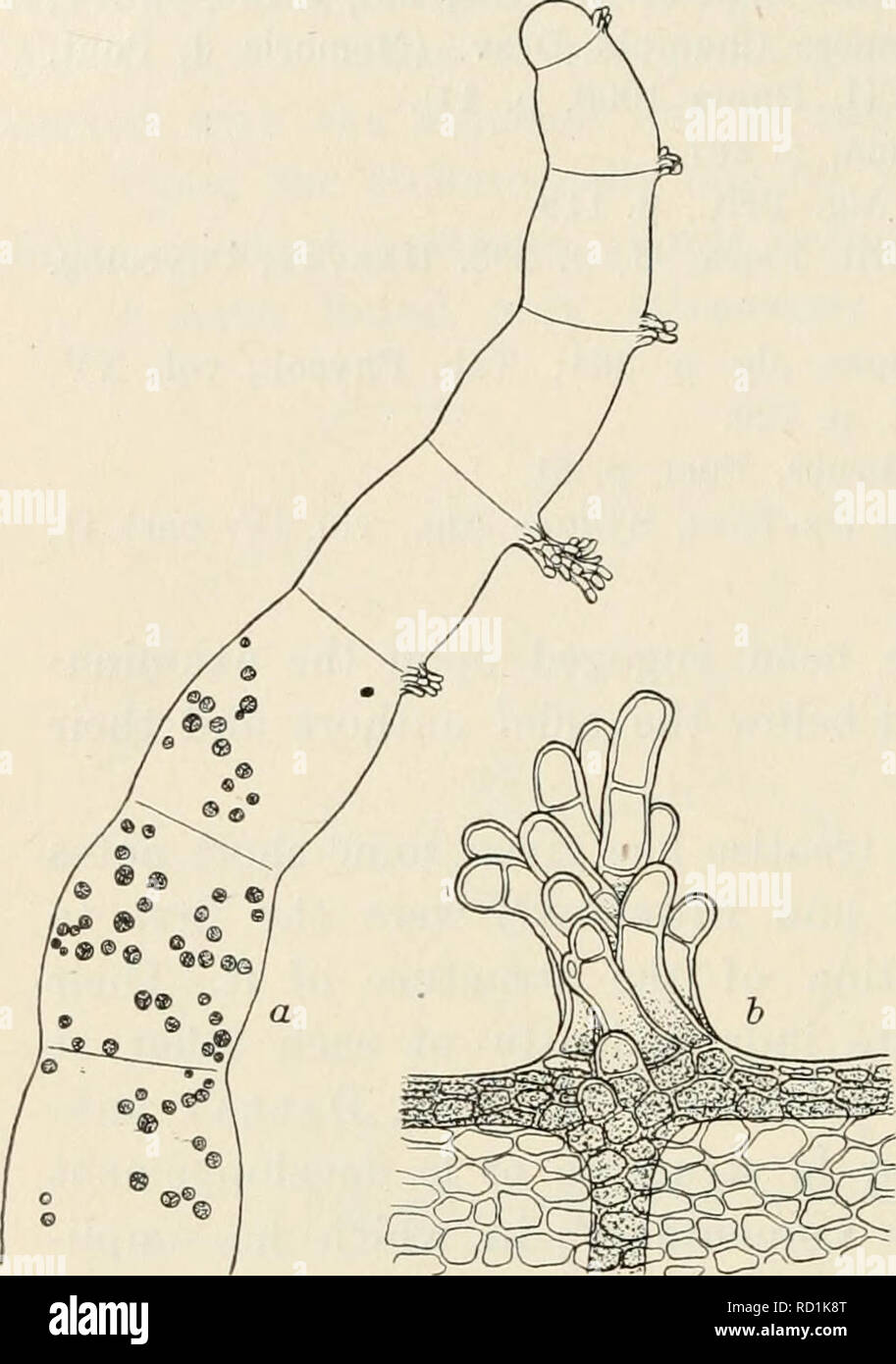 . Dansk botanisk arkiv. Plants; Plants -- Denmark. 408 Dansk Botanisk Arkiv, Bd, 3. Nr. 1. the plant, a description of the development of the cystocarp. And finally, in 1896, Davis ^) pubHshed a paper in which he gives a very detailed description of the development of the cystocarp in Champia par- vula. Referring to these exa- minations with regard to the structure and develop- ment of the plant, I shall only mention here that I have often found the plant creeping on the leaves of Thalassia as well as on larger algæ, for instance, Udotea Flahelliim or Hali- meda. The filaments are more or less Stock Photohttps://www.alamy.com/image-license-details/?v=1https://www.alamy.com/dansk-botanisk-arkiv-plants-plants-denmark-408-dansk-botanisk-arkiv-bd-3-nr-1-the-plant-a-description-of-the-development-of-the-cystocarp-and-finally-in-1896-davis-pubhshed-a-paper-in-which-he-gives-a-very-detailed-description-of-the-development-of-the-cystocarp-in-champia-par-vula-referring-to-these-exa-minations-with-regard-to-the-structure-and-develop-ment-of-the-plant-i-shall-only-mention-here-that-i-have-often-found-the-plant-creeping-on-the-leaves-of-thalassia-as-well-as-on-larger-alg-for-instance-udotea-flahelliim-or-hali-meda-the-filaments-are-more-or-less-image231762408.html
. Dansk botanisk arkiv. Plants; Plants -- Denmark. 408 Dansk Botanisk Arkiv, Bd, 3. Nr. 1. the plant, a description of the development of the cystocarp. And finally, in 1896, Davis ^) pubHshed a paper in which he gives a very detailed description of the development of the cystocarp in Champia par- vula. Referring to these exa- minations with regard to the structure and develop- ment of the plant, I shall only mention here that I have often found the plant creeping on the leaves of Thalassia as well as on larger algæ, for instance, Udotea Flahelliim or Hali- meda. The filaments are more or less Stock Photohttps://www.alamy.com/image-license-details/?v=1https://www.alamy.com/dansk-botanisk-arkiv-plants-plants-denmark-408-dansk-botanisk-arkiv-bd-3-nr-1-the-plant-a-description-of-the-development-of-the-cystocarp-and-finally-in-1896-davis-pubhshed-a-paper-in-which-he-gives-a-very-detailed-description-of-the-development-of-the-cystocarp-in-champia-par-vula-referring-to-these-exa-minations-with-regard-to-the-structure-and-develop-ment-of-the-plant-i-shall-only-mention-here-that-i-have-often-found-the-plant-creeping-on-the-leaves-of-thalassia-as-well-as-on-larger-alg-for-instance-udotea-flahelliim-or-hali-meda-the-filaments-are-more-or-less-image231762408.htmlRMRD1K8T–. Dansk botanisk arkiv. Plants; Plants -- Denmark. 408 Dansk Botanisk Arkiv, Bd, 3. Nr. 1. the plant, a description of the development of the cystocarp. And finally, in 1896, Davis ^) pubHshed a paper in which he gives a very detailed description of the development of the cystocarp in Champia par- vula. Referring to these exa- minations with regard to the structure and develop- ment of the plant, I shall only mention here that I have often found the plant creeping on the leaves of Thalassia as well as on larger algæ, for instance, Udotea Flahelliim or Hali- meda. The filaments are more or less
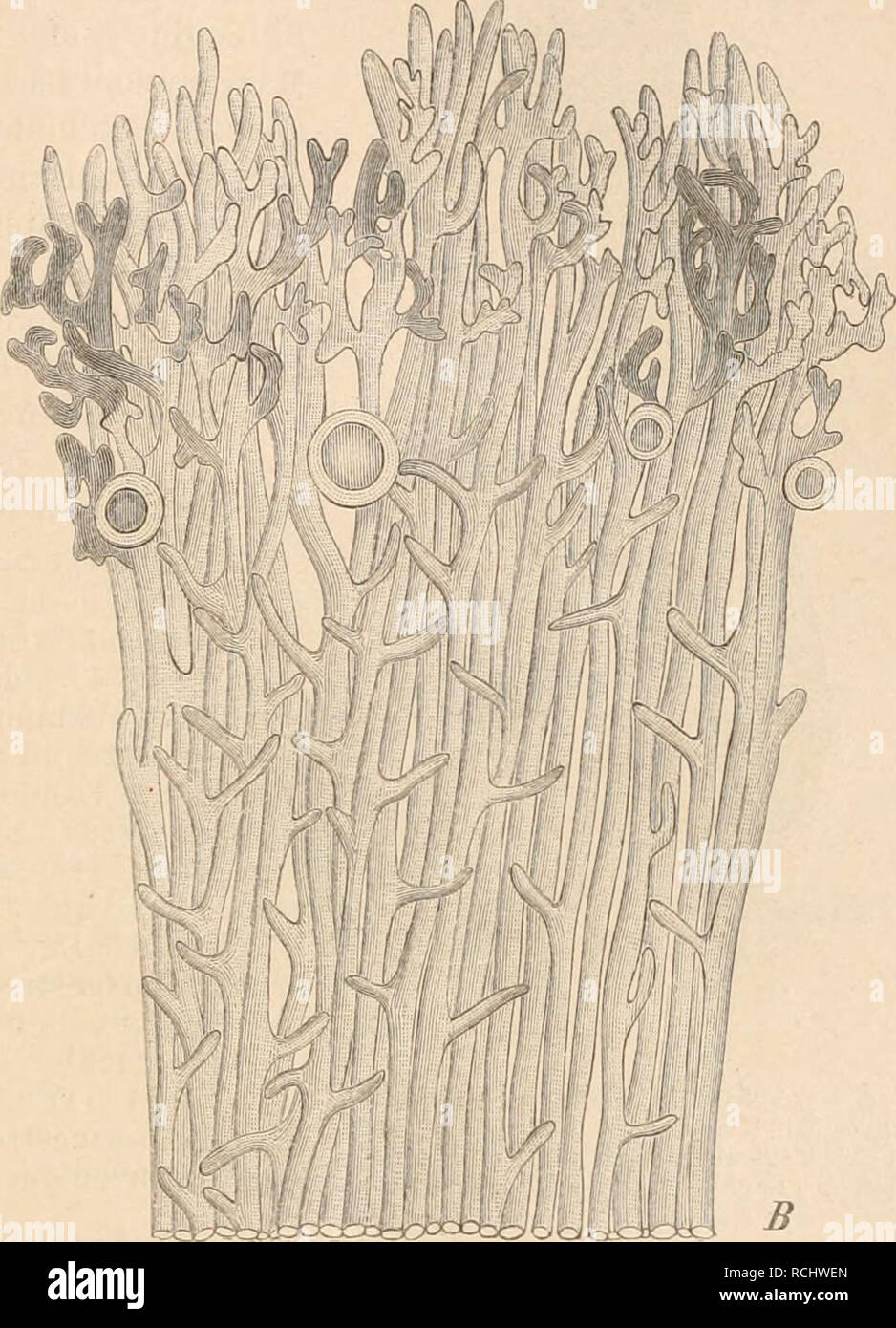 . Die Natürlichen Pflanzenfamilien nebst ihren Gattungen und wichtigeren Arten, insbesondere den Nutzpflanzen, unter Mitwirkung zahlreicher hervorragender Fachgelehrten begründet. Botany. Fig. 94. Udotea Desfontainii (Lamx.) Dcne. A 2 Individuen in nat. Gr.; B StuCt eines Thallus mit Zoospo- rangien (?); C die zellenartige Eindenschicht des Stieles. (Nach Kützing. li 100/1 ; C 300/1.) 7. Halimeda Lamx. (Fig. 90, 92) (incl. Botryophora Bompard noii J. Ag.) Der Thallus, welcher unten an einem kurzen Stiele mittelst farbloser Rhizoide festsitzt, ist in seinen äußeren Teilen stark incrustiert und Stock Photohttps://www.alamy.com/image-license-details/?v=1https://www.alamy.com/die-natrlichen-pflanzenfamilien-nebst-ihren-gattungen-und-wichtigeren-arten-insbesondere-den-nutzpflanzen-unter-mitwirkung-zahlreicher-hervorragender-fachgelehrten-begrndet-botany-fig-94-udotea-desfontainii-lamx-dcne-a-2-individuen-in-nat-gr-b-stuct-eines-thallus-mit-zoospo-rangien-c-die-zellenartige-eindenschicht-des-stieles-nach-ktzing-li-1001-c-3001-7-halimeda-lamx-fig-90-92-incl-botryophora-bompard-noii-j-ag-der-thallus-welcher-unten-an-einem-kurzen-stiele-mittelst-farbloser-rhizoide-festsitzt-ist-in-seinen-ueren-teilen-stark-incrustiert-und-image231503853.html
. Die Natürlichen Pflanzenfamilien nebst ihren Gattungen und wichtigeren Arten, insbesondere den Nutzpflanzen, unter Mitwirkung zahlreicher hervorragender Fachgelehrten begründet. Botany. Fig. 94. Udotea Desfontainii (Lamx.) Dcne. A 2 Individuen in nat. Gr.; B StuCt eines Thallus mit Zoospo- rangien (?); C die zellenartige Eindenschicht des Stieles. (Nach Kützing. li 100/1 ; C 300/1.) 7. Halimeda Lamx. (Fig. 90, 92) (incl. Botryophora Bompard noii J. Ag.) Der Thallus, welcher unten an einem kurzen Stiele mittelst farbloser Rhizoide festsitzt, ist in seinen äußeren Teilen stark incrustiert und Stock Photohttps://www.alamy.com/image-license-details/?v=1https://www.alamy.com/die-natrlichen-pflanzenfamilien-nebst-ihren-gattungen-und-wichtigeren-arten-insbesondere-den-nutzpflanzen-unter-mitwirkung-zahlreicher-hervorragender-fachgelehrten-begrndet-botany-fig-94-udotea-desfontainii-lamx-dcne-a-2-individuen-in-nat-gr-b-stuct-eines-thallus-mit-zoospo-rangien-c-die-zellenartige-eindenschicht-des-stieles-nach-ktzing-li-1001-c-3001-7-halimeda-lamx-fig-90-92-incl-botryophora-bompard-noii-j-ag-der-thallus-welcher-unten-an-einem-kurzen-stiele-mittelst-farbloser-rhizoide-festsitzt-ist-in-seinen-ueren-teilen-stark-incrustiert-und-image231503853.htmlRMRCHWEN–. Die Natürlichen Pflanzenfamilien nebst ihren Gattungen und wichtigeren Arten, insbesondere den Nutzpflanzen, unter Mitwirkung zahlreicher hervorragender Fachgelehrten begründet. Botany. Fig. 94. Udotea Desfontainii (Lamx.) Dcne. A 2 Individuen in nat. Gr.; B StuCt eines Thallus mit Zoospo- rangien (?); C die zellenartige Eindenschicht des Stieles. (Nach Kützing. li 100/1 ; C 300/1.) 7. Halimeda Lamx. (Fig. 90, 92) (incl. Botryophora Bompard noii J. Ag.) Der Thallus, welcher unten an einem kurzen Stiele mittelst farbloser Rhizoide festsitzt, ist in seinen äußeren Teilen stark incrustiert und
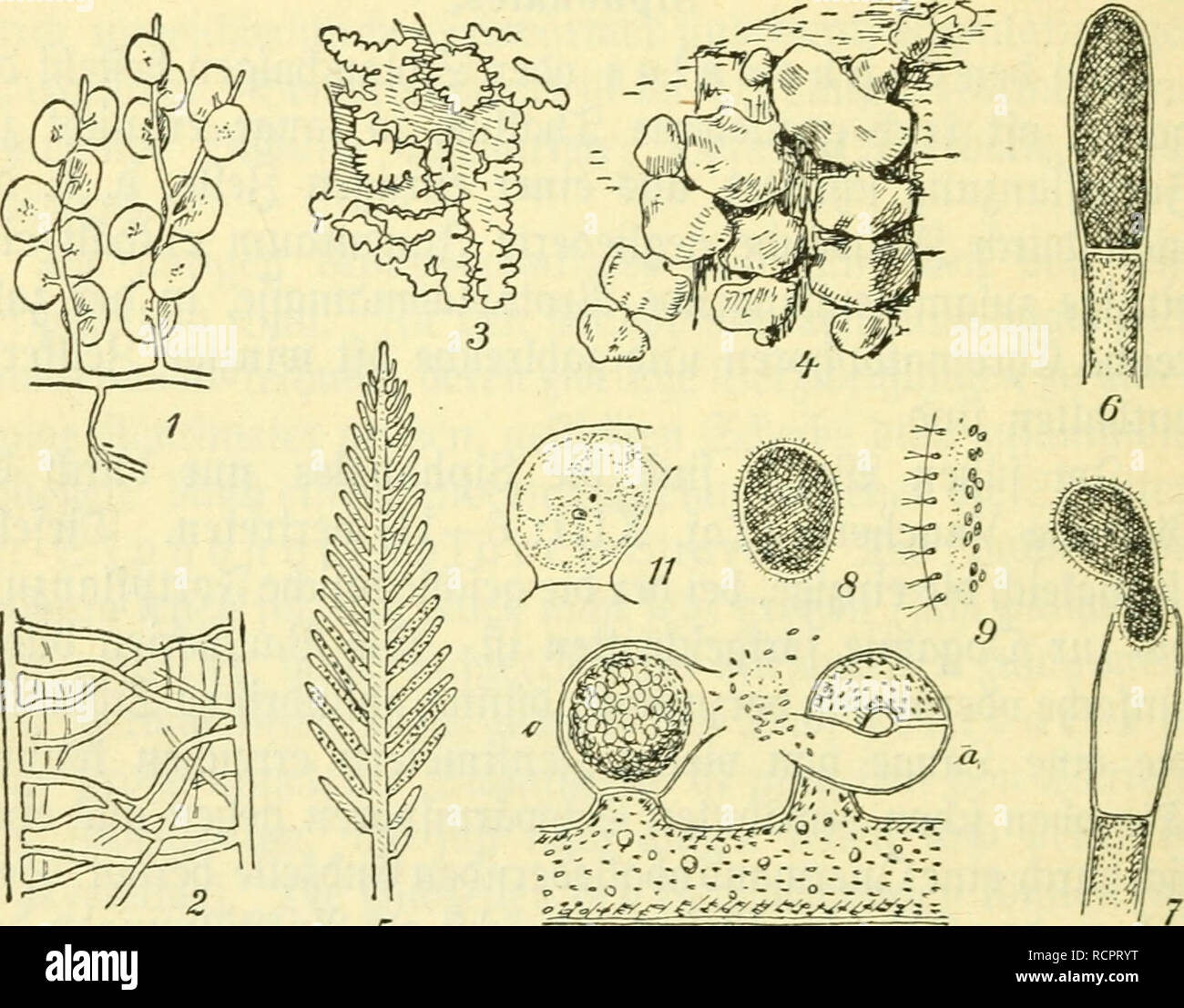 . Die Algen, Moose und Farnpflanzen.. 52 SWgen. au3 langgrjlinbrifdjen, t)ie(facf) öerglüeigtcn 3d)(äucfjcn auf, bie faft nacl) 2(rt ber gäben eines ®etoebe3 burdjeinanber- geflochten finb uub nur äugen frei luerbeu. ISs eutftcijeu cl)ara!terifttfd) gemattete ®ebi(be, in bie üte(facl) Äalf ein*. Saf. XIII. 1. Caulerpa macrodisca. 2. C. prolifera, Steil eine3 2äng§?tf)nitte§ burd) ein S3latt. 3. Udotea Desfontainei, Sruf&au be§ 5Tf)aHu§ burd) ^ersiuei» gung ber ,8elte. 4. Halimeda Tuna. 5. Bryopsis cupressoides, bie unteren äSer^rueigungen ^uSporangteu umgebilbet. 6—11. Vaucheria sessilis: Stock Photohttps://www.alamy.com/image-license-details/?v=1https://www.alamy.com/die-algen-moose-und-farnpflanzen-52-swgen-au3-langgrjlinbrifdjen-tiefacf-ergleigtcn-3ducfjcn-auf-bie-faft-nacl-2rt-ber-gben-eines-etoebe3-burdjeinanber-geflochten-finb-uub-nur-ugen-frei-luerbeu-iss-eutftcijeu-clara!terifttfd-gemattete-ebibe-in-bie-tefacl-alf-ein-saf-xiii-1-caulerpa-macrodisca-2-c-prolifera-steil-eine3-2ngtfnitte-burd-ein-s3latt-3-udotea-desfontainei-srufampau-be-5tfahu-burd-ersiuei-gung-ber-8elte-4-halimeda-tuna-5-bryopsis-cupressoides-bie-unteren-serrueigungen-usporangteu-umgebilbet-611-vaucheria-sessilis-image231612412.html
. Die Algen, Moose und Farnpflanzen.. 52 SWgen. au3 langgrjlinbrifdjen, t)ie(facf) öerglüeigtcn 3d)(äucfjcn auf, bie faft nacl) 2(rt ber gäben eines ®etoebe3 burdjeinanber- geflochten finb uub nur äugen frei luerbeu. ISs eutftcijeu cl)ara!terifttfd) gemattete ®ebi(be, in bie üte(facl) Äalf ein*. Saf. XIII. 1. Caulerpa macrodisca. 2. C. prolifera, Steil eine3 2äng§?tf)nitte§ burd) ein S3latt. 3. Udotea Desfontainei, Sruf&au be§ 5Tf)aHu§ burd) ^ersiuei» gung ber ,8elte. 4. Halimeda Tuna. 5. Bryopsis cupressoides, bie unteren äSer^rueigungen ^uSporangteu umgebilbet. 6—11. Vaucheria sessilis: Stock Photohttps://www.alamy.com/image-license-details/?v=1https://www.alamy.com/die-algen-moose-und-farnpflanzen-52-swgen-au3-langgrjlinbrifdjen-tiefacf-ergleigtcn-3ducfjcn-auf-bie-faft-nacl-2rt-ber-gben-eines-etoebe3-burdjeinanber-geflochten-finb-uub-nur-ugen-frei-luerbeu-iss-eutftcijeu-clara!terifttfd-gemattete-ebibe-in-bie-tefacl-alf-ein-saf-xiii-1-caulerpa-macrodisca-2-c-prolifera-steil-eine3-2ngtfnitte-burd-ein-s3latt-3-udotea-desfontainei-srufampau-be-5tfahu-burd-ersiuei-gung-ber-8elte-4-halimeda-tuna-5-bryopsis-cupressoides-bie-unteren-serrueigungen-usporangteu-umgebilbet-611-vaucheria-sessilis-image231612412.htmlRMRCPRYT–. Die Algen, Moose und Farnpflanzen.. 52 SWgen. au3 langgrjlinbrifdjen, t)ie(facf) öerglüeigtcn 3d)(äucfjcn auf, bie faft nacl) 2(rt ber gäben eines ®etoebe3 burdjeinanber- geflochten finb uub nur äugen frei luerbeu. ISs eutftcijeu cl)ara!terifttfd) gemattete ®ebi(be, in bie üte(facl) Äalf ein*. Saf. XIII. 1. Caulerpa macrodisca. 2. C. prolifera, Steil eine3 2äng§?tf)nitte§ burd) ein S3latt. 3. Udotea Desfontainei, Sruf&au be§ 5Tf)aHu§ burd) ^ersiuei» gung ber ,8elte. 4. Halimeda Tuna. 5. Bryopsis cupressoides, bie unteren äSer^rueigungen ^uSporangteu umgebilbet. 6—11. Vaucheria sessilis:
 . Das Meer; geographische, naturgeschichtliche und volkswirtschaftliche Darstellung des Meeres und seiner Bedeutung in der Gegenwart. Oceanography; Marine biology. 144 Dr. Wiese, Das Meer. mehr auffallend als schön g-estalteten Caulerpa-, Udotea- und Codiumarten. Am Mittelmeer sieht man die Flutlinie häufig* begrenzt durch die g"länzenden grünen Lappen der Alg"e Ulva Lactuca, die vom Meer ausg"eworfen und, wie der Name Lactuca andeutet, als Salat g'eg'essen wird. Mehr als die g^rünen Meeresalg-en treten durch Zahl und An- sehen die beiden anderen Abteilung-en hervor. Die eine da Stock Photohttps://www.alamy.com/image-license-details/?v=1https://www.alamy.com/das-meer-geographische-naturgeschichtliche-und-volkswirtschaftliche-darstellung-des-meeres-und-seiner-bedeutung-in-der-gegenwart-oceanography-marine-biology-144-dr-wiese-das-meer-mehr-auffallend-als-schn-g-estalteten-caulerpa-udotea-und-codiumarten-am-mittelmeer-sieht-man-die-flutlinie-hufig-begrenzt-durch-die-gquotlnzenden-grnen-lappen-der-algquote-ulva-lactuca-die-vom-meer-ausgquoteworfen-und-wie-der-name-lactuca-andeutet-als-salat-gegessen-wird-mehr-als-die-grnen-meeresalg-en-treten-durch-zahl-und-an-sehen-die-beiden-anderen-abteilung-en-hervor-die-eine-da-image231710553.html
. Das Meer; geographische, naturgeschichtliche und volkswirtschaftliche Darstellung des Meeres und seiner Bedeutung in der Gegenwart. Oceanography; Marine biology. 144 Dr. Wiese, Das Meer. mehr auffallend als schön g-estalteten Caulerpa-, Udotea- und Codiumarten. Am Mittelmeer sieht man die Flutlinie häufig* begrenzt durch die g"länzenden grünen Lappen der Alg"e Ulva Lactuca, die vom Meer ausg"eworfen und, wie der Name Lactuca andeutet, als Salat g'eg'essen wird. Mehr als die g^rünen Meeresalg-en treten durch Zahl und An- sehen die beiden anderen Abteilung-en hervor. Die eine da Stock Photohttps://www.alamy.com/image-license-details/?v=1https://www.alamy.com/das-meer-geographische-naturgeschichtliche-und-volkswirtschaftliche-darstellung-des-meeres-und-seiner-bedeutung-in-der-gegenwart-oceanography-marine-biology-144-dr-wiese-das-meer-mehr-auffallend-als-schn-g-estalteten-caulerpa-udotea-und-codiumarten-am-mittelmeer-sieht-man-die-flutlinie-hufig-begrenzt-durch-die-gquotlnzenden-grnen-lappen-der-algquote-ulva-lactuca-die-vom-meer-ausgquoteworfen-und-wie-der-name-lactuca-andeutet-als-salat-gegessen-wird-mehr-als-die-grnen-meeresalg-en-treten-durch-zahl-und-an-sehen-die-beiden-anderen-abteilung-en-hervor-die-eine-da-image231710553.htmlRMRCY94W–. Das Meer; geographische, naturgeschichtliche und volkswirtschaftliche Darstellung des Meeres und seiner Bedeutung in der Gegenwart. Oceanography; Marine biology. 144 Dr. Wiese, Das Meer. mehr auffallend als schön g-estalteten Caulerpa-, Udotea- und Codiumarten. Am Mittelmeer sieht man die Flutlinie häufig* begrenzt durch die g"länzenden grünen Lappen der Alg"e Ulva Lactuca, die vom Meer ausg"eworfen und, wie der Name Lactuca andeutet, als Salat g'eg'essen wird. Mehr als die g^rünen Meeresalg-en treten durch Zahl und An- sehen die beiden anderen Abteilung-en hervor. Die eine da
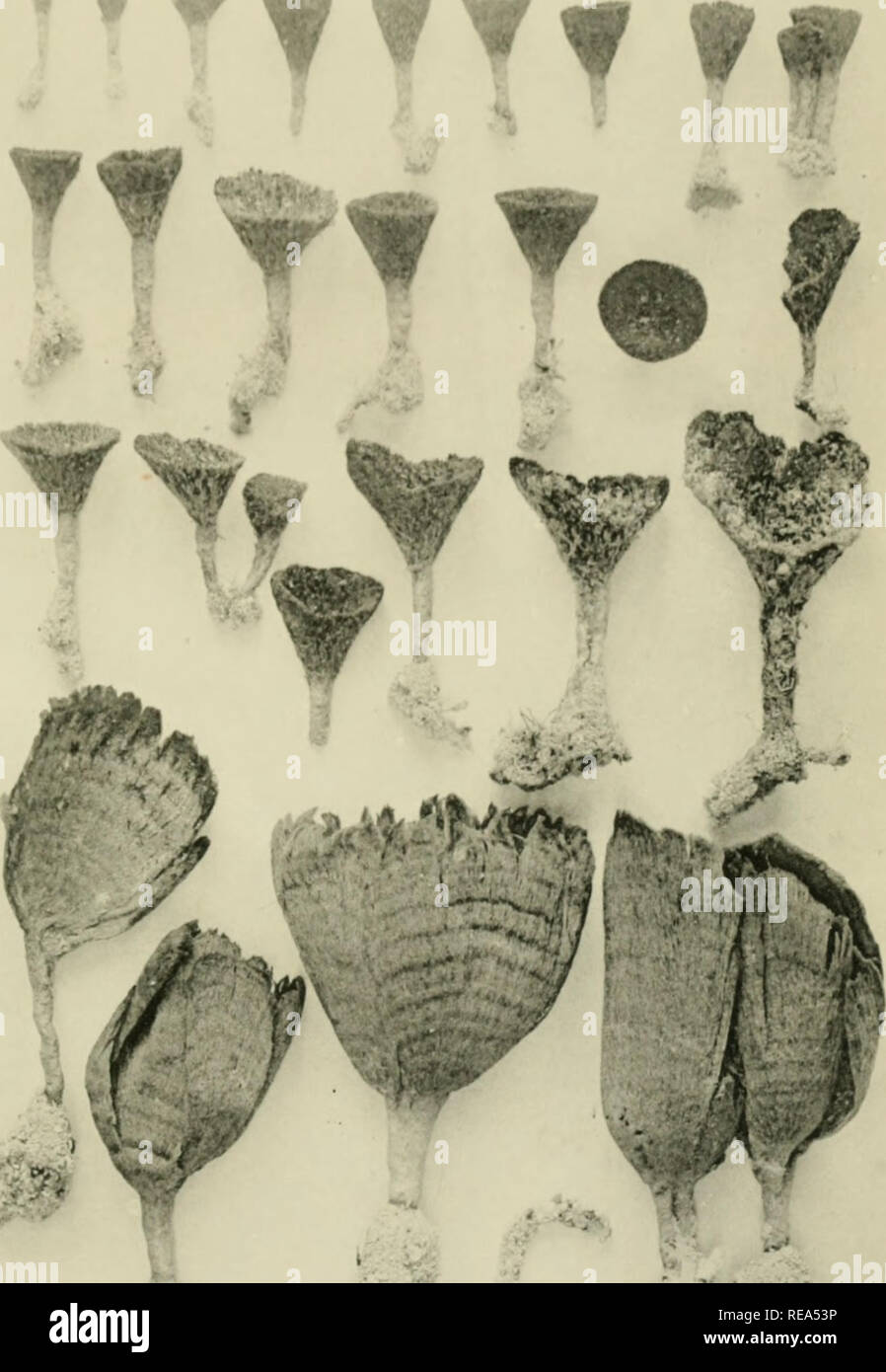 . Contributions from the New York Botanical Garden. Plants. Bull. Torrky Cmth VOI.UMK 36, PLATE 3 ^ 9 W T^TT. .^ UDOTEA CVATHIFORMIS Decaisne. Please note that these images are extracted from scanned page images that may have been digitally enhanced for readability - coloration and appearance of these illustrations may not perfectly resemble the original work.. New York Botanical Garden. New York : The Garden Stock Photohttps://www.alamy.com/image-license-details/?v=1https://www.alamy.com/contributions-from-the-new-york-botanical-garden-plants-bull-torrky-cmth-voiumk-36-plate-3-9-w-ttt-udotea-cvathiformis-decaisne-please-note-that-these-images-are-extracted-from-scanned-page-images-that-may-have-been-digitally-enhanced-for-readability-coloration-and-appearance-of-these-illustrations-may-not-perfectly-resemble-the-original-work-new-york-botanical-garden-new-york-the-garden-image232563514.html
. Contributions from the New York Botanical Garden. Plants. Bull. Torrky Cmth VOI.UMK 36, PLATE 3 ^ 9 W T^TT. .^ UDOTEA CVATHIFORMIS Decaisne. Please note that these images are extracted from scanned page images that may have been digitally enhanced for readability - coloration and appearance of these illustrations may not perfectly resemble the original work.. New York Botanical Garden. New York : The Garden Stock Photohttps://www.alamy.com/image-license-details/?v=1https://www.alamy.com/contributions-from-the-new-york-botanical-garden-plants-bull-torrky-cmth-voiumk-36-plate-3-9-w-ttt-udotea-cvathiformis-decaisne-please-note-that-these-images-are-extracted-from-scanned-page-images-that-may-have-been-digitally-enhanced-for-readability-coloration-and-appearance-of-these-illustrations-may-not-perfectly-resemble-the-original-work-new-york-botanical-garden-new-york-the-garden-image232563514.htmlRMREA53P–. Contributions from the New York Botanical Garden. Plants. Bull. Torrky Cmth VOI.UMK 36, PLATE 3 ^ 9 W T^TT. .^ UDOTEA CVATHIFORMIS Decaisne. Please note that these images are extracted from scanned page images that may have been digitally enhanced for readability - coloration and appearance of these illustrations may not perfectly resemble the original work.. New York Botanical Garden. New York : The Garden
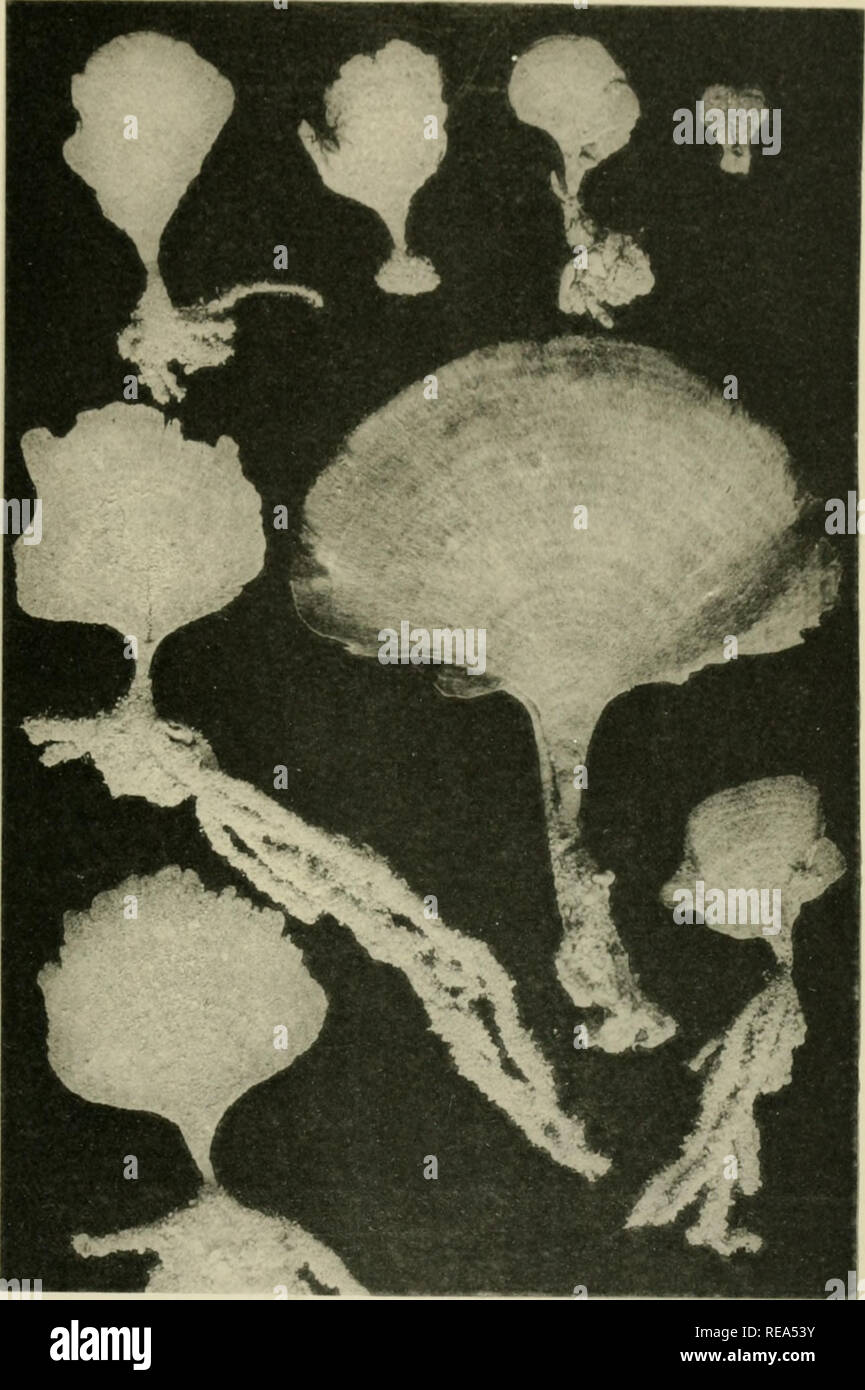 . Contributions from the New York Botanical Garden. Plants. Hull. Torrky Ci^ub VOLUMK 36, PLATE 2. UDOTEA CONGLUTINATA (Ell. & Soland.) Lamoi.r. COCKAYNE BOSTON. Please note that these images are extracted from scanned page images that may have been digitally enhanced for readability - coloration and appearance of these illustrations may not perfectly resemble the original work.. New York Botanical Garden. New York : The Garden Stock Photohttps://www.alamy.com/image-license-details/?v=1https://www.alamy.com/contributions-from-the-new-york-botanical-garden-plants-hull-torrky-ciub-volumk-36-plate-2-udotea-conglutinata-ell-amp-soland-lamoir-cockayne-boston-please-note-that-these-images-are-extracted-from-scanned-page-images-that-may-have-been-digitally-enhanced-for-readability-coloration-and-appearance-of-these-illustrations-may-not-perfectly-resemble-the-original-work-new-york-botanical-garden-new-york-the-garden-image232563519.html
. Contributions from the New York Botanical Garden. Plants. Hull. Torrky Ci^ub VOLUMK 36, PLATE 2. UDOTEA CONGLUTINATA (Ell. & Soland.) Lamoi.r. COCKAYNE BOSTON. Please note that these images are extracted from scanned page images that may have been digitally enhanced for readability - coloration and appearance of these illustrations may not perfectly resemble the original work.. New York Botanical Garden. New York : The Garden Stock Photohttps://www.alamy.com/image-license-details/?v=1https://www.alamy.com/contributions-from-the-new-york-botanical-garden-plants-hull-torrky-ciub-volumk-36-plate-2-udotea-conglutinata-ell-amp-soland-lamoir-cockayne-boston-please-note-that-these-images-are-extracted-from-scanned-page-images-that-may-have-been-digitally-enhanced-for-readability-coloration-and-appearance-of-these-illustrations-may-not-perfectly-resemble-the-original-work-new-york-botanical-garden-new-york-the-garden-image232563519.htmlRMREA53Y–. Contributions from the New York Botanical Garden. Plants. Hull. Torrky Ci^ub VOLUMK 36, PLATE 2. UDOTEA CONGLUTINATA (Ell. & Soland.) Lamoi.r. COCKAYNE BOSTON. Please note that these images are extracted from scanned page images that may have been digitally enhanced for readability - coloration and appearance of these illustrations may not perfectly resemble the original work.. New York Botanical Garden. New York : The Garden
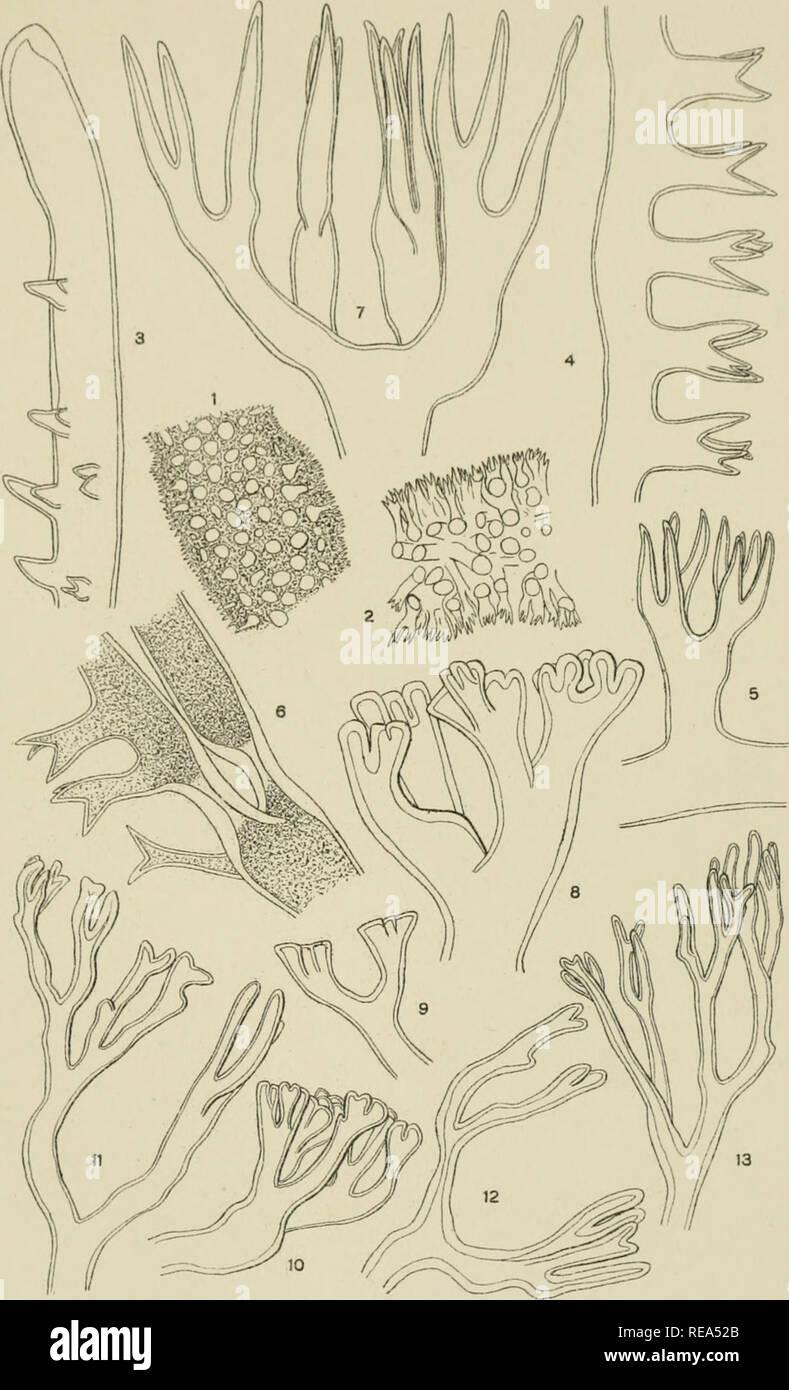 . Contributions from the New York Botanical Garden. Plants. Bull. Torrey Club Volume 36, plate 8. 1-7. UDOTEA SPINULOSA M. A. Howe 8-10. UDOTEA CYATHIFORMIS Decaisne 11-13. UDOTEA CONGLUTINATA (Ell. & Soland.) Lamour.. Please note that these images are extracted from scanned page images that may have been digitally enhanced for readability - coloration and appearance of these illustrations may not perfectly resemble the original work.. New York Botanical Garden. New York : The Garden Stock Photohttps://www.alamy.com/image-license-details/?v=1https://www.alamy.com/contributions-from-the-new-york-botanical-garden-plants-bull-torrey-club-volume-36-plate-8-1-7-udotea-spinulosa-m-a-howe-8-10-udotea-cyathiformis-decaisne-11-13-udotea-conglutinata-ell-amp-soland-lamour-please-note-that-these-images-are-extracted-from-scanned-page-images-that-may-have-been-digitally-enhanced-for-readability-coloration-and-appearance-of-these-illustrations-may-not-perfectly-resemble-the-original-work-new-york-botanical-garden-new-york-the-garden-image232563475.html
. Contributions from the New York Botanical Garden. Plants. Bull. Torrey Club Volume 36, plate 8. 1-7. UDOTEA SPINULOSA M. A. Howe 8-10. UDOTEA CYATHIFORMIS Decaisne 11-13. UDOTEA CONGLUTINATA (Ell. & Soland.) Lamour.. Please note that these images are extracted from scanned page images that may have been digitally enhanced for readability - coloration and appearance of these illustrations may not perfectly resemble the original work.. New York Botanical Garden. New York : The Garden Stock Photohttps://www.alamy.com/image-license-details/?v=1https://www.alamy.com/contributions-from-the-new-york-botanical-garden-plants-bull-torrey-club-volume-36-plate-8-1-7-udotea-spinulosa-m-a-howe-8-10-udotea-cyathiformis-decaisne-11-13-udotea-conglutinata-ell-amp-soland-lamour-please-note-that-these-images-are-extracted-from-scanned-page-images-that-may-have-been-digitally-enhanced-for-readability-coloration-and-appearance-of-these-illustrations-may-not-perfectly-resemble-the-original-work-new-york-botanical-garden-new-york-the-garden-image232563475.htmlRMREA52B–. Contributions from the New York Botanical Garden. Plants. Bull. Torrey Club Volume 36, plate 8. 1-7. UDOTEA SPINULOSA M. A. Howe 8-10. UDOTEA CYATHIFORMIS Decaisne 11-13. UDOTEA CONGLUTINATA (Ell. & Soland.) Lamour.. Please note that these images are extracted from scanned page images that may have been digitally enhanced for readability - coloration and appearance of these illustrations may not perfectly resemble the original work.. New York Botanical Garden. New York : The Garden